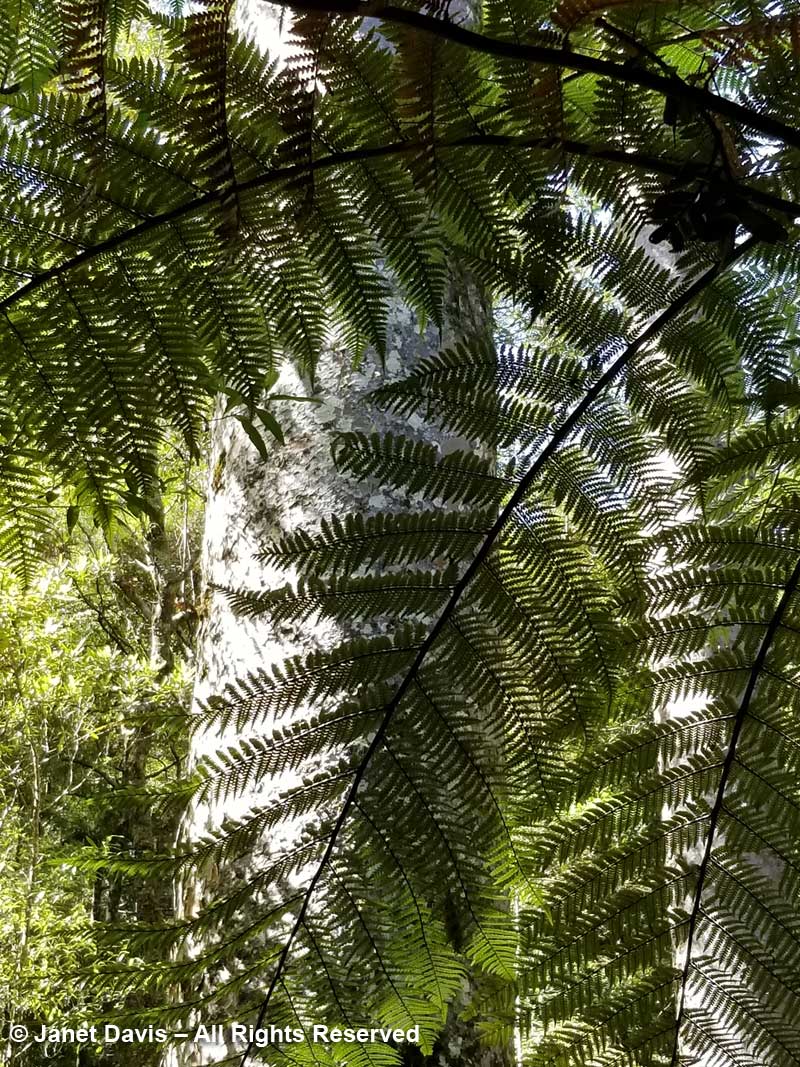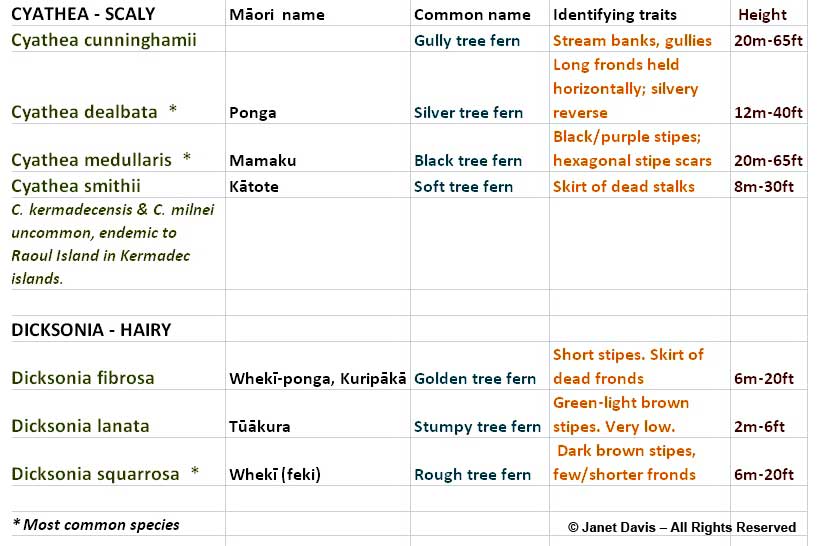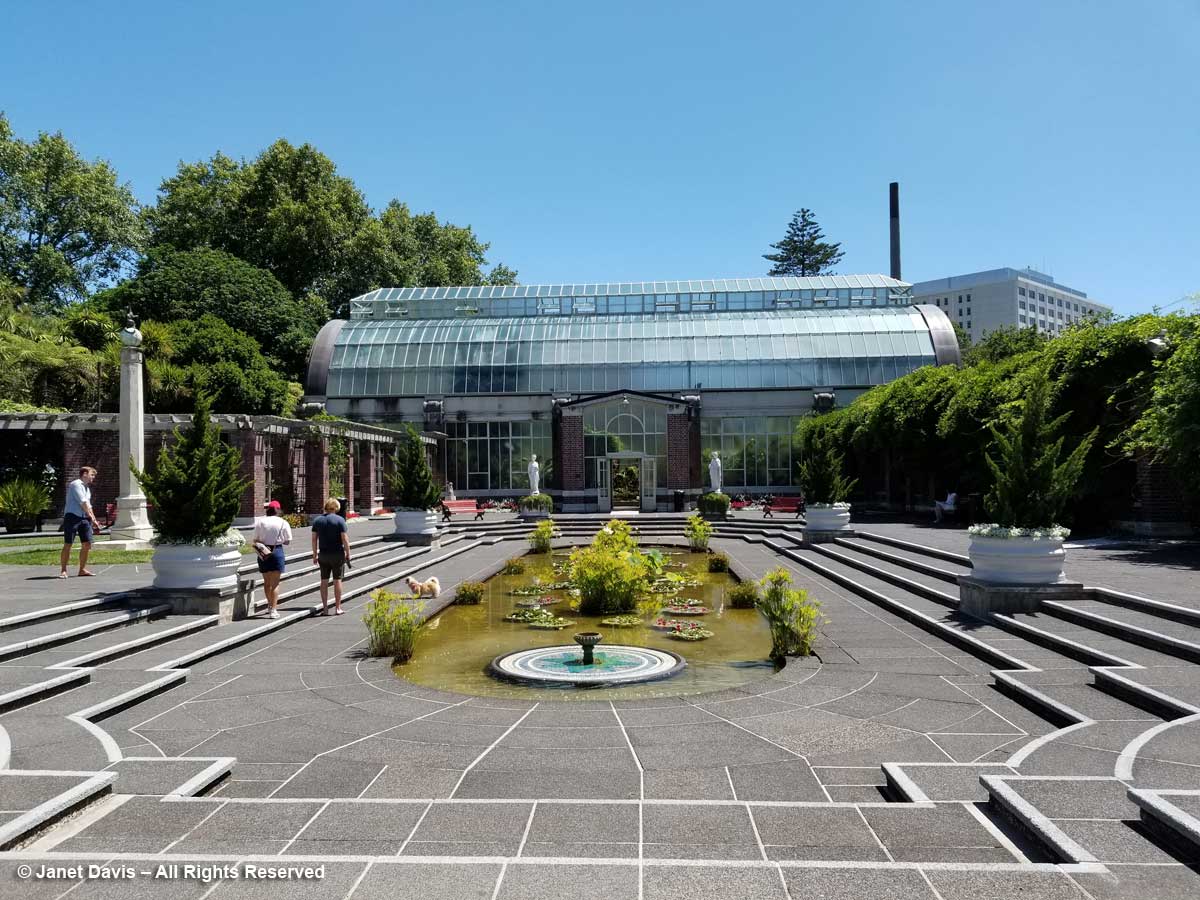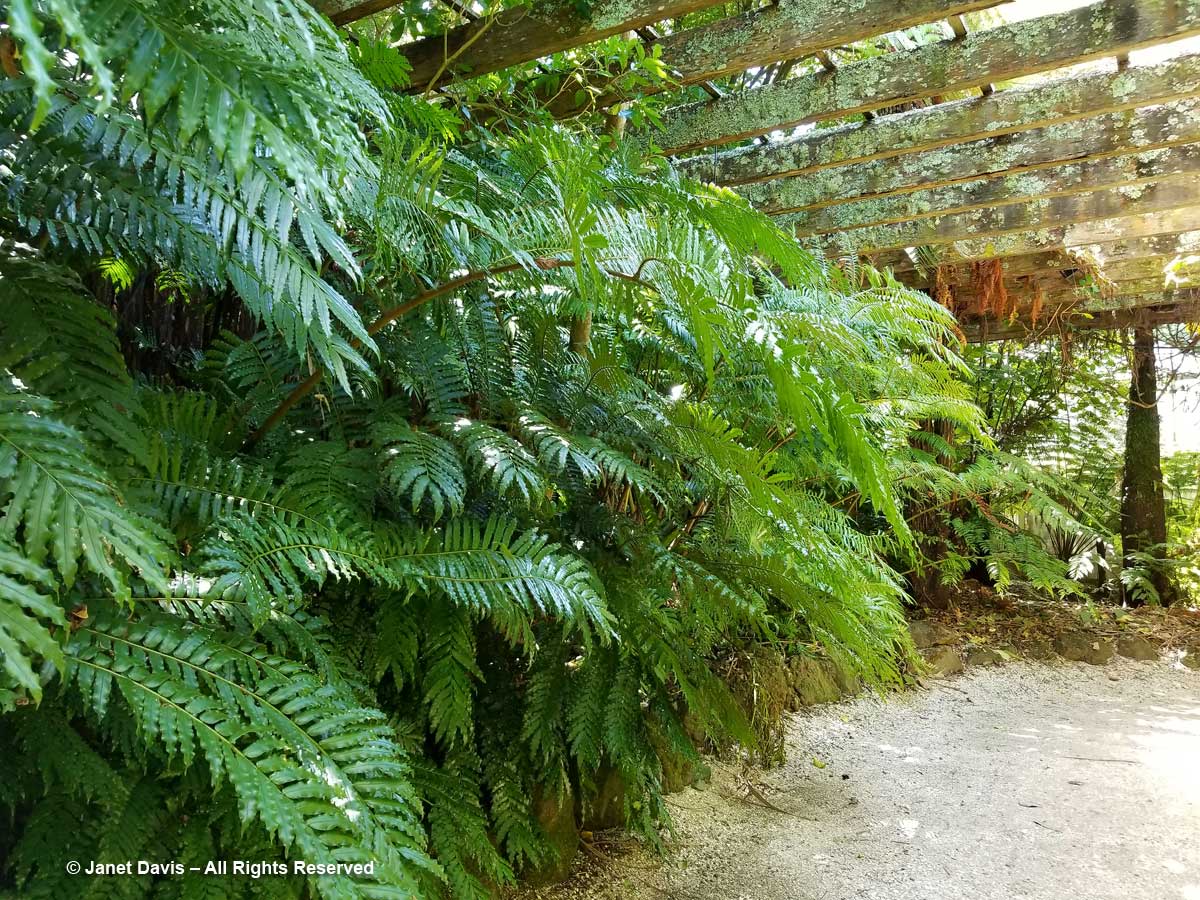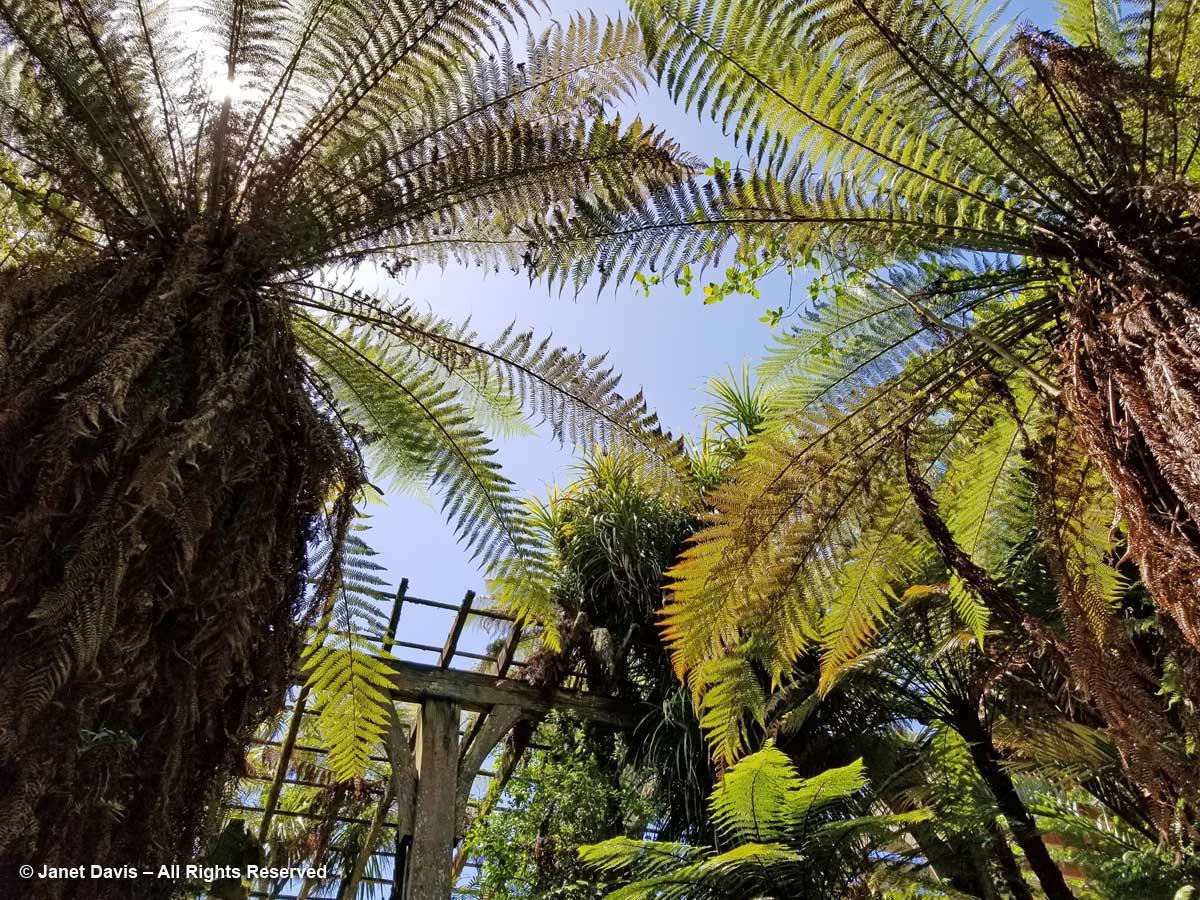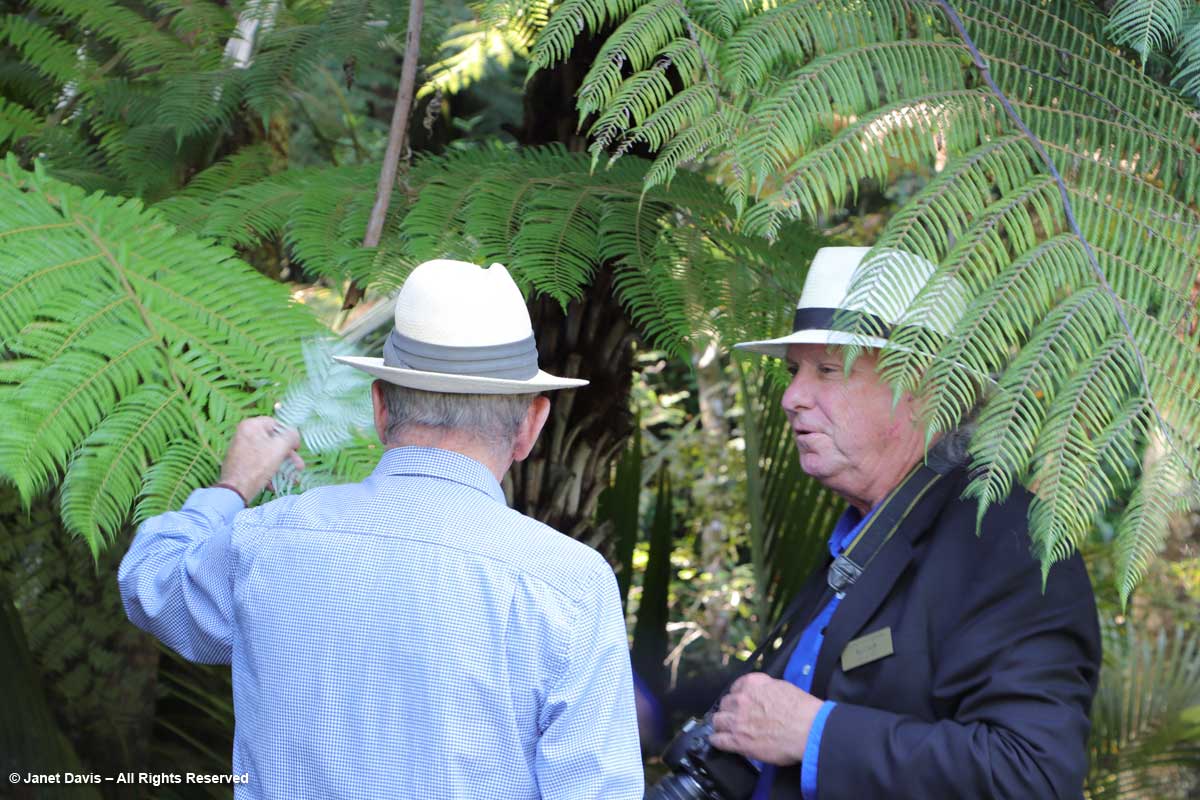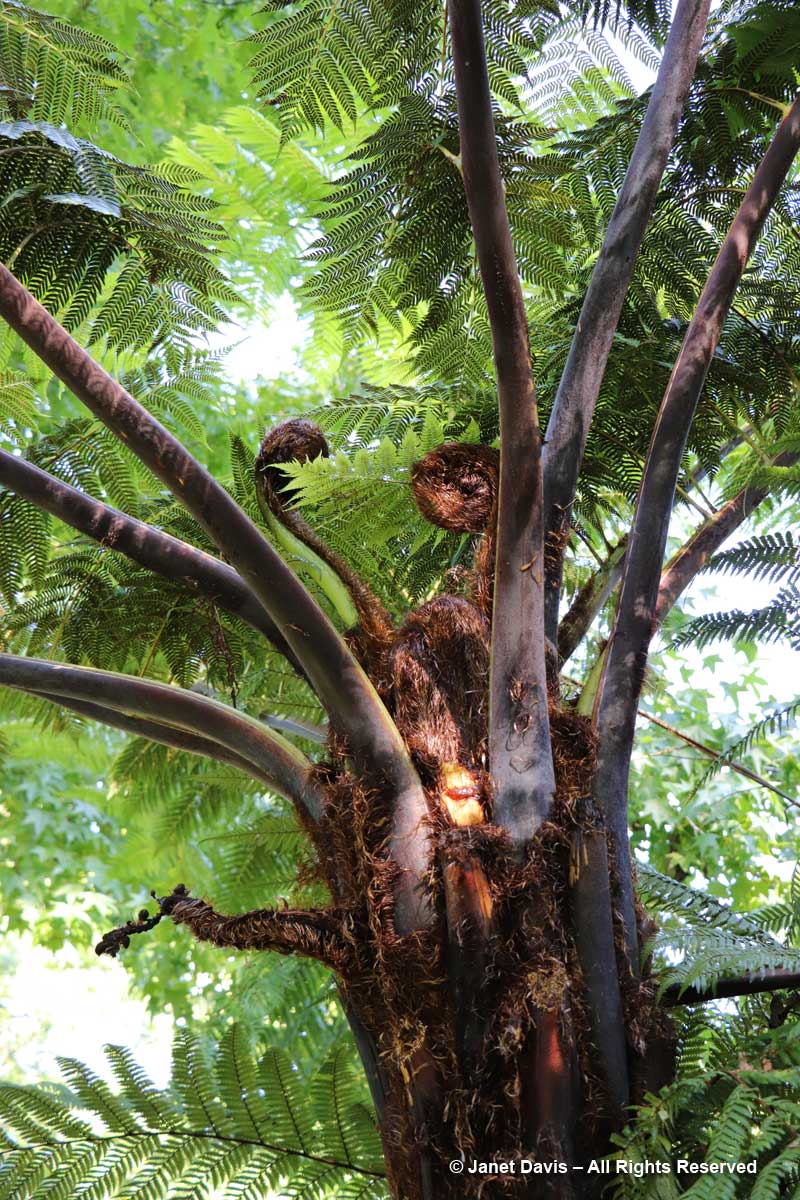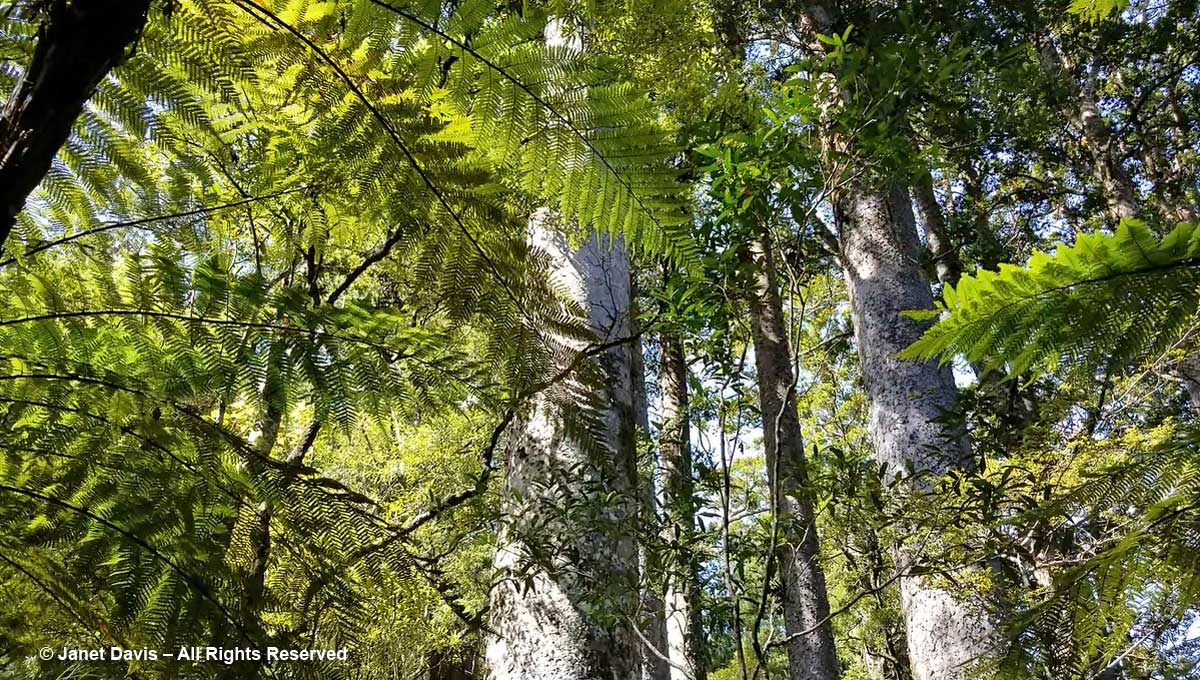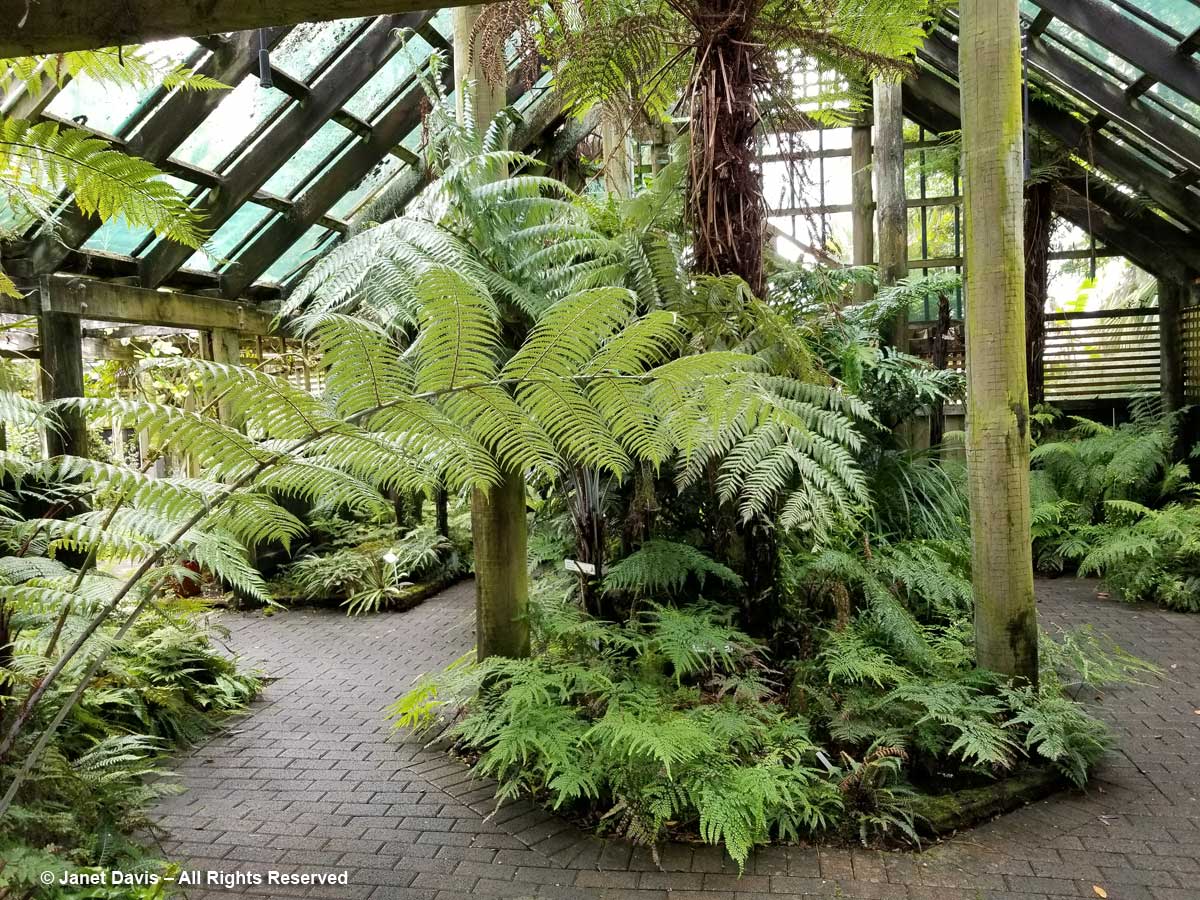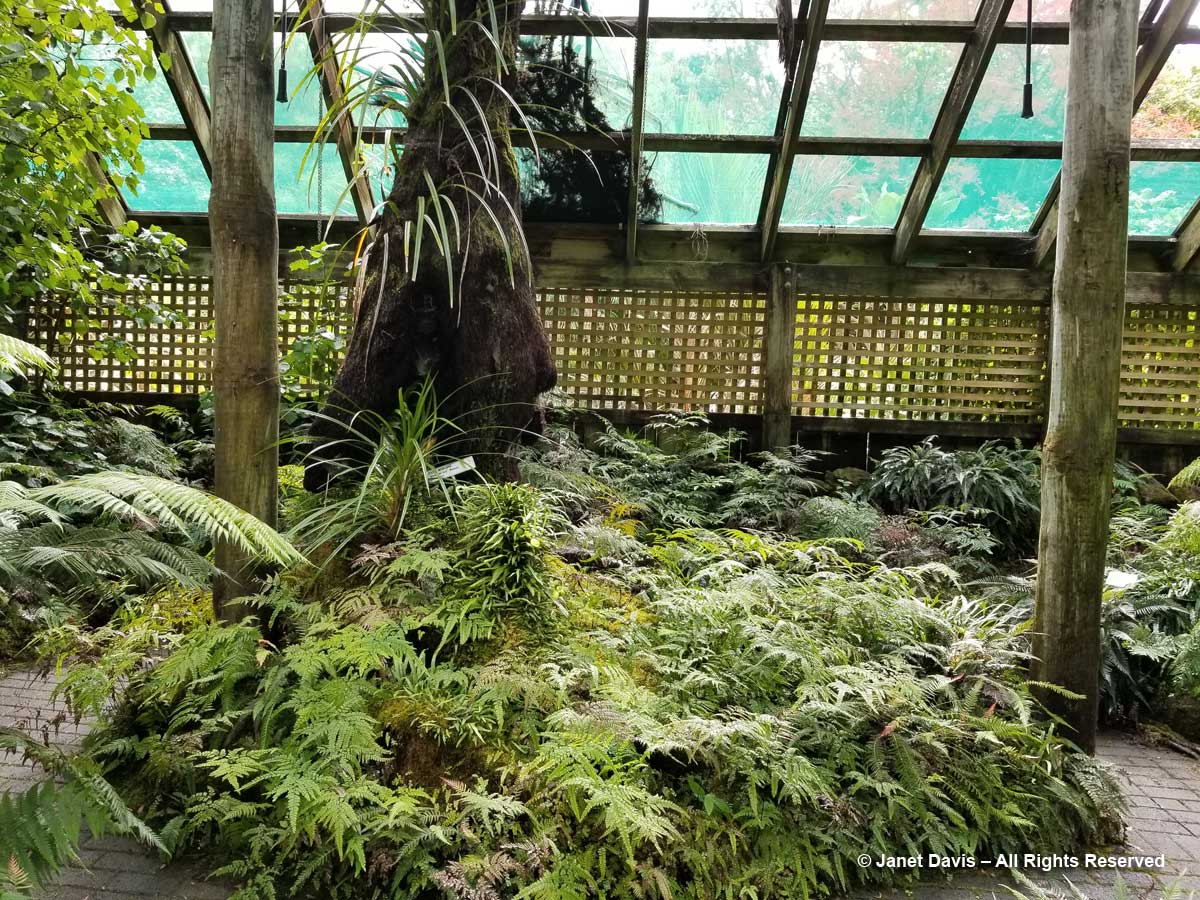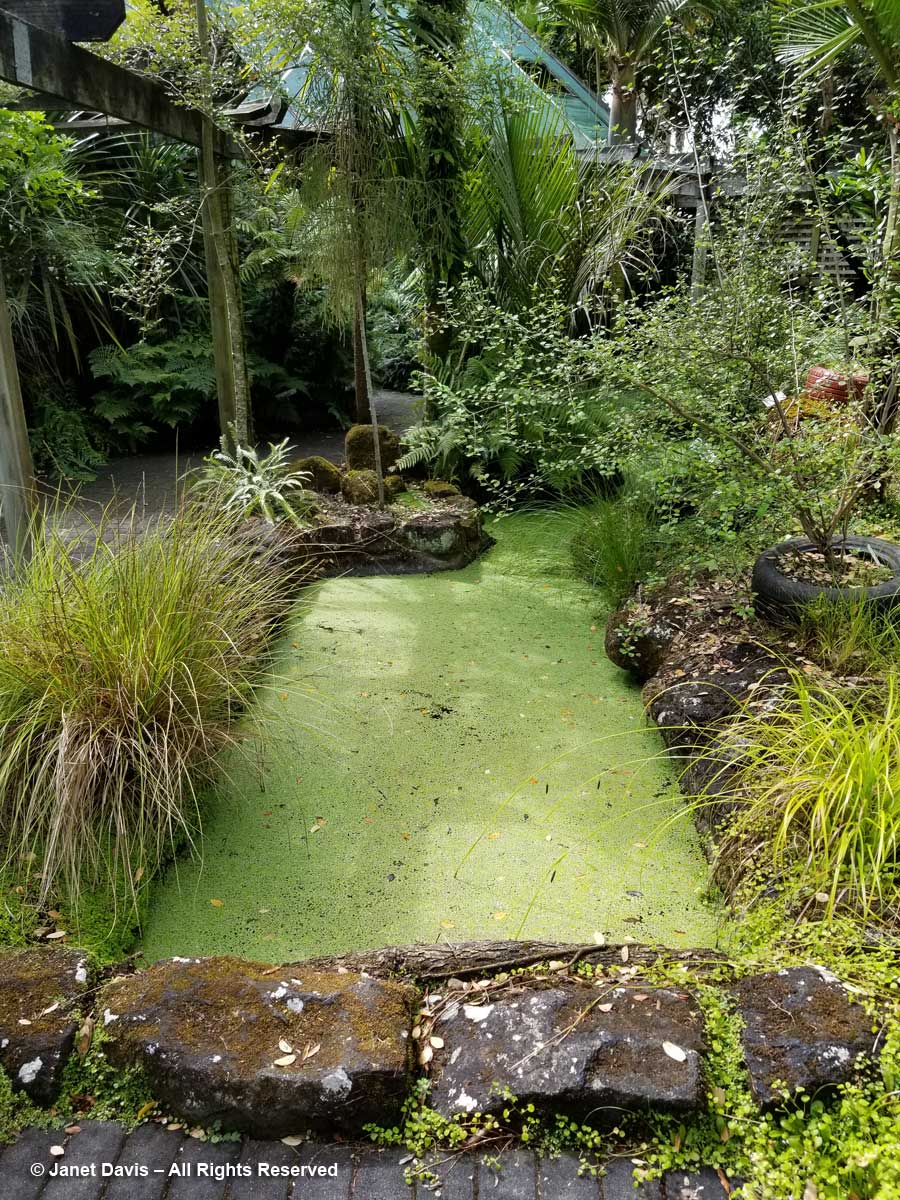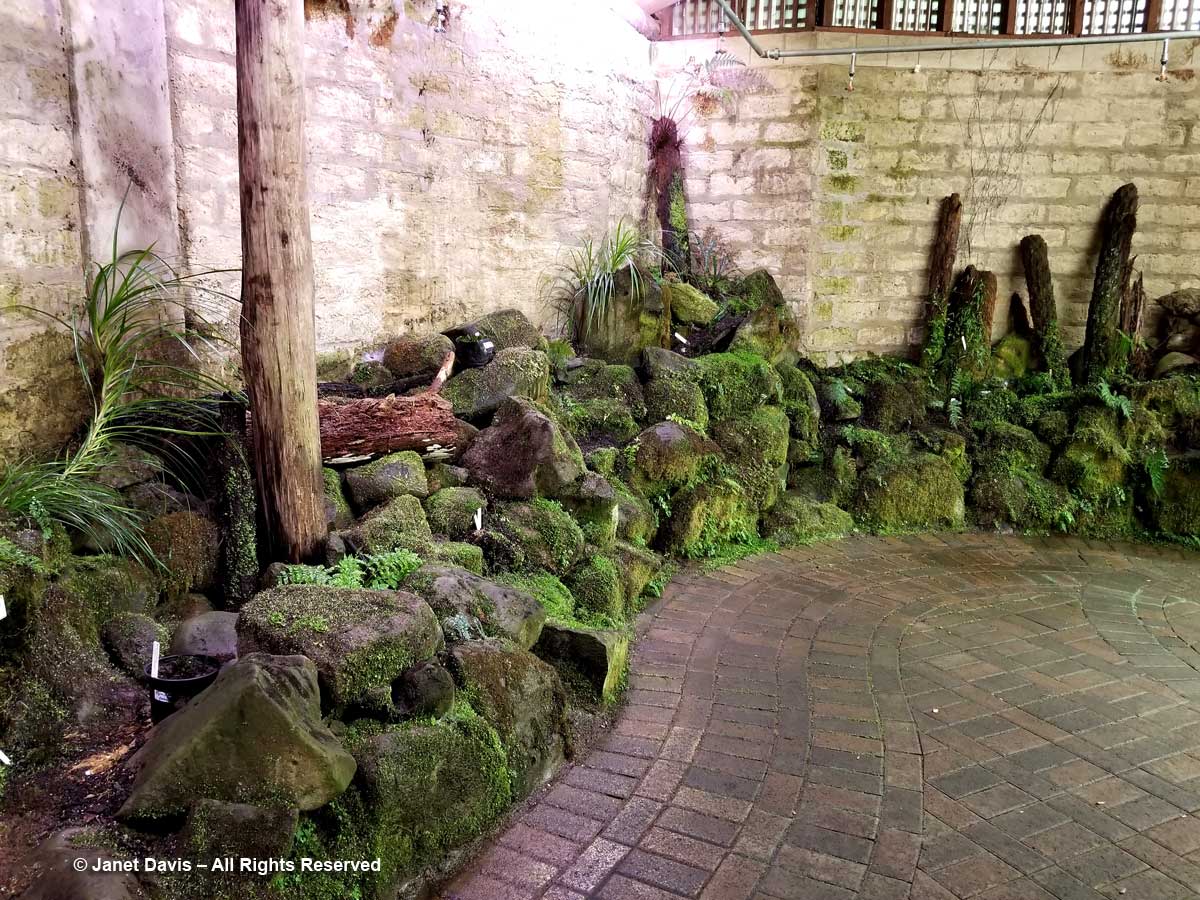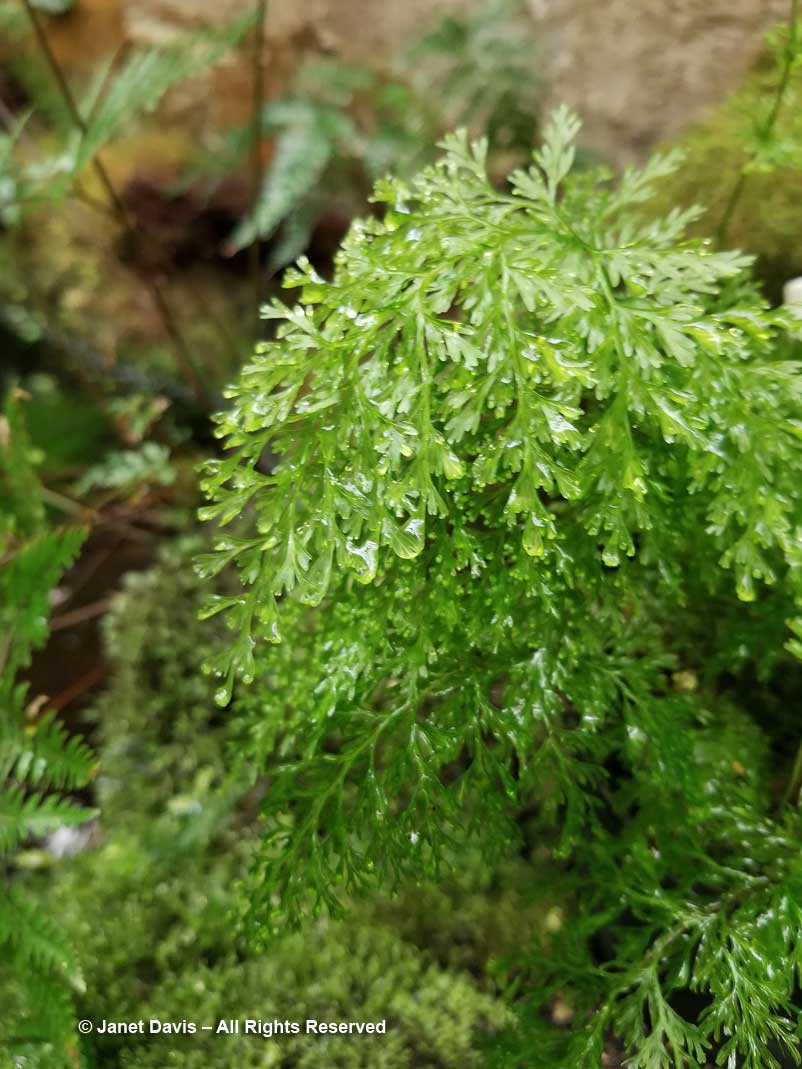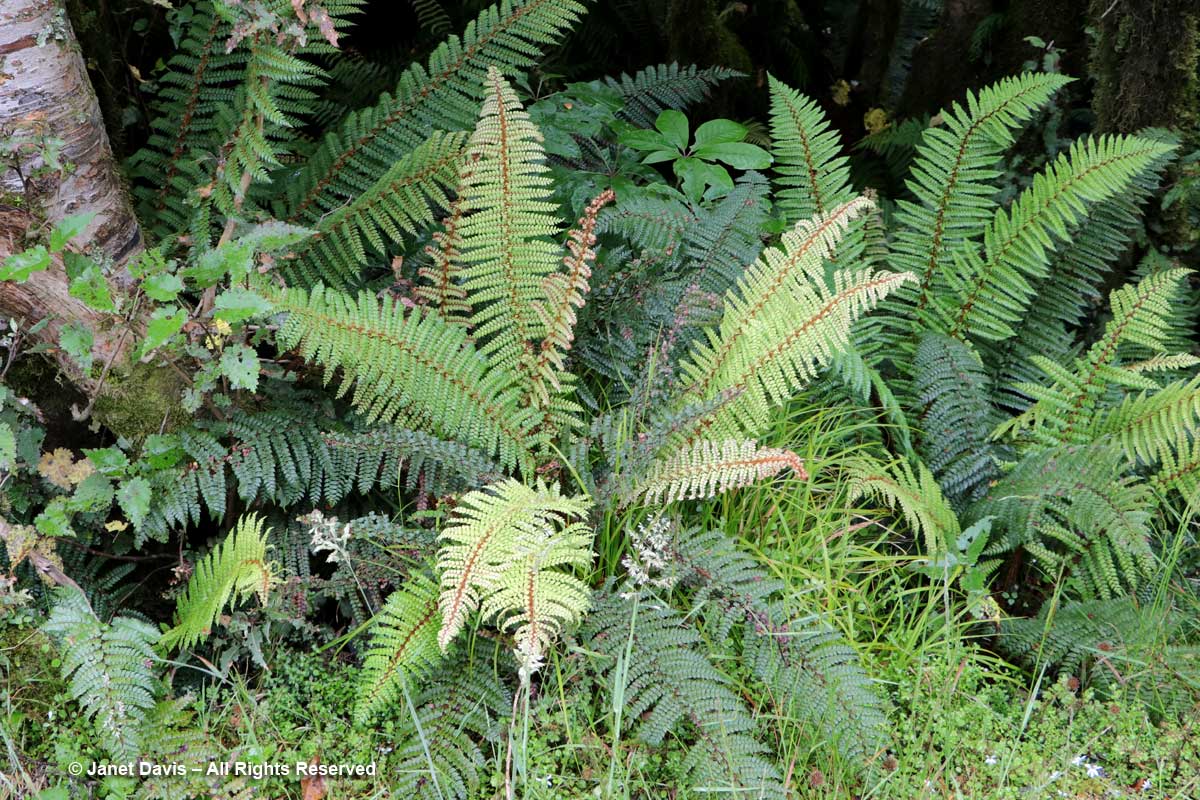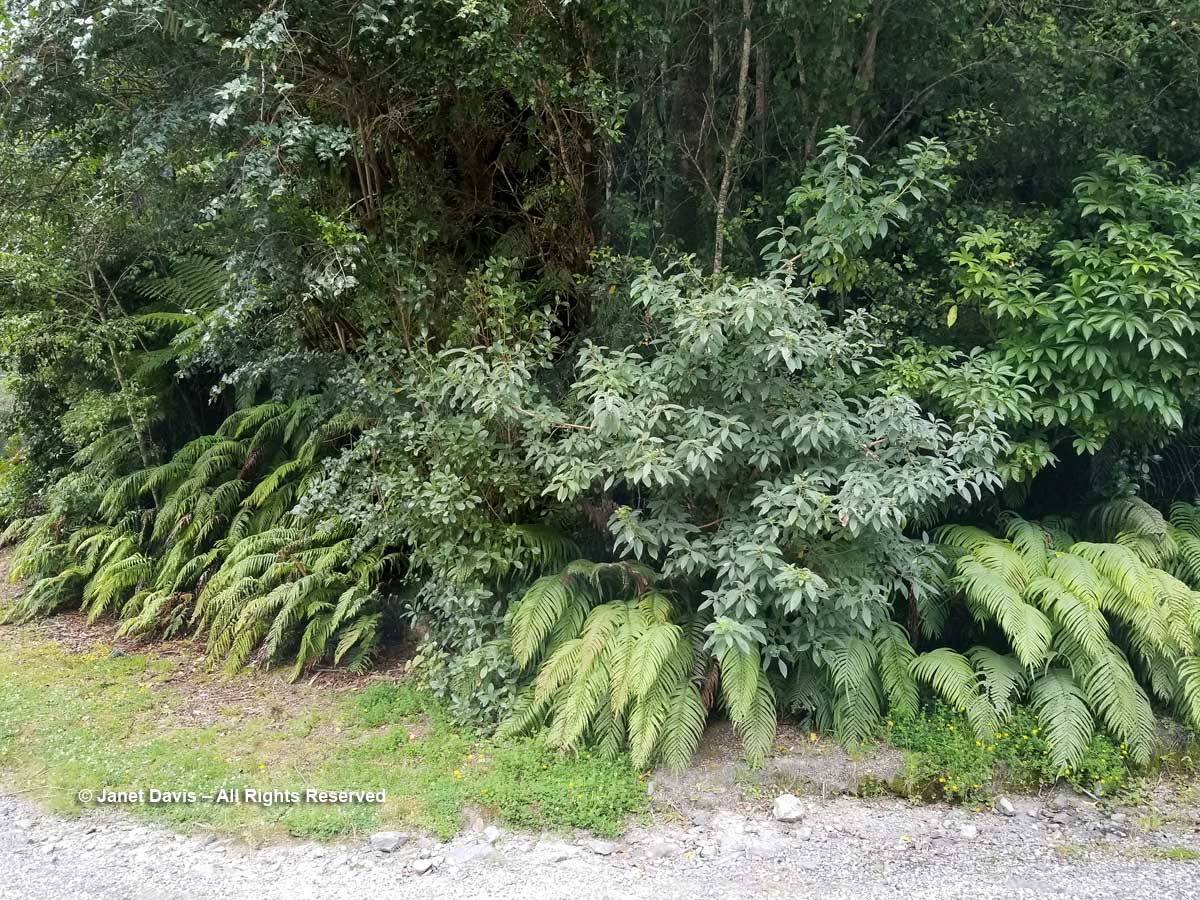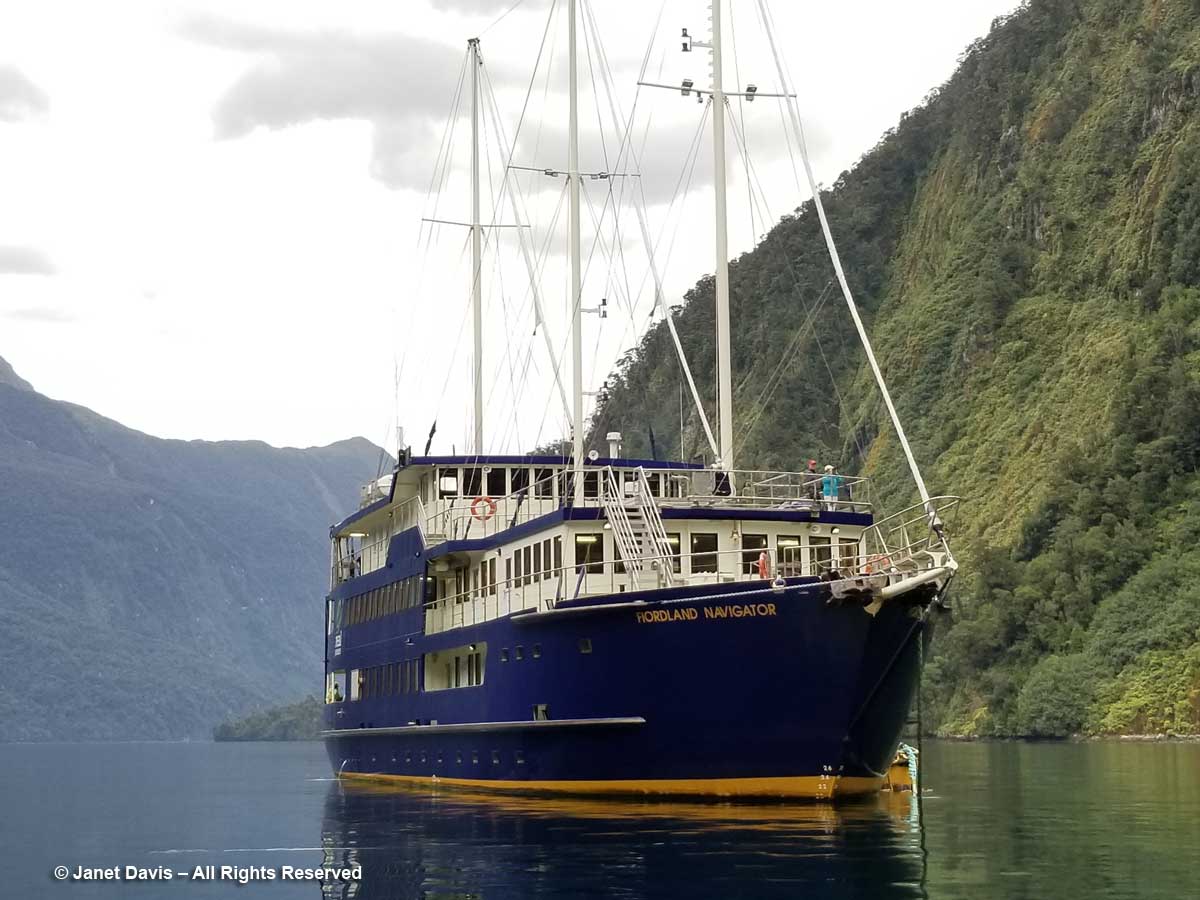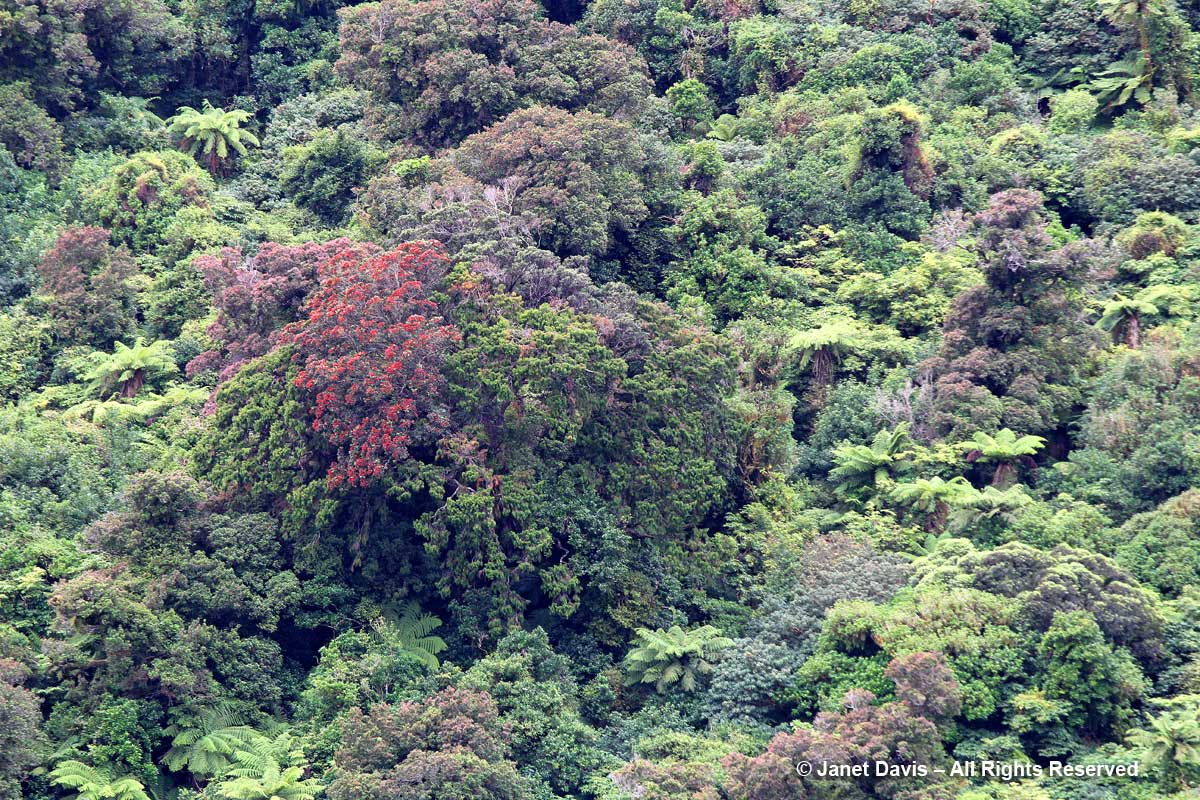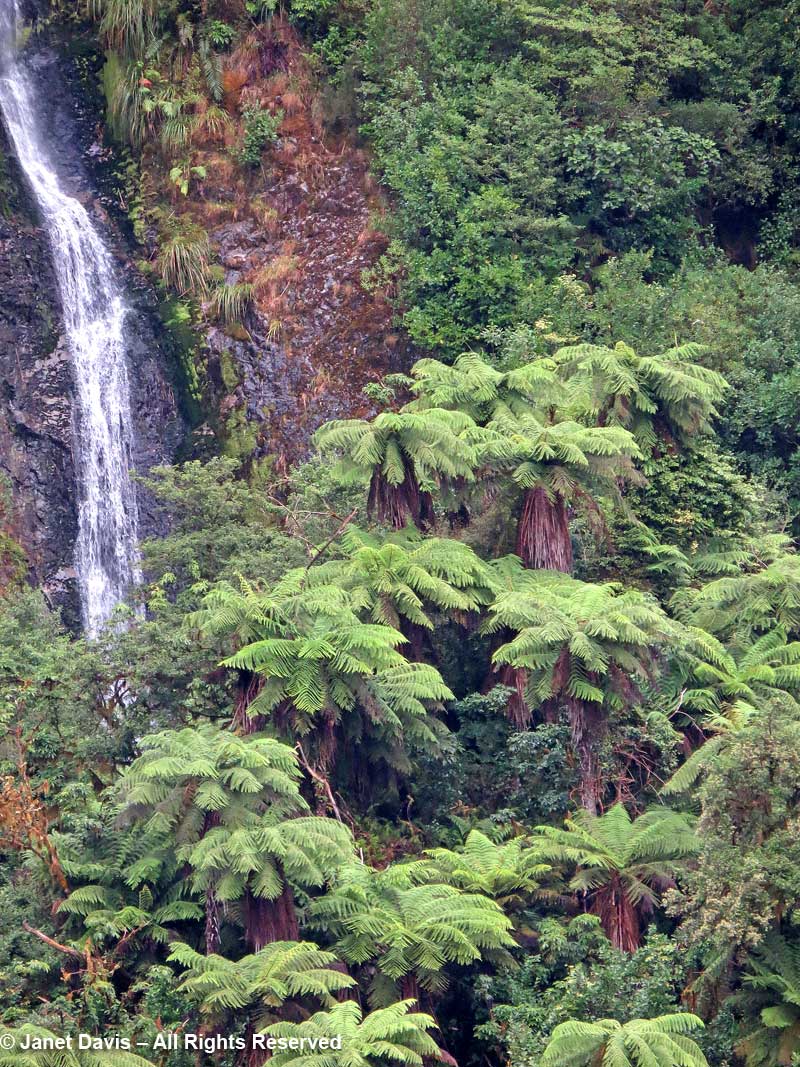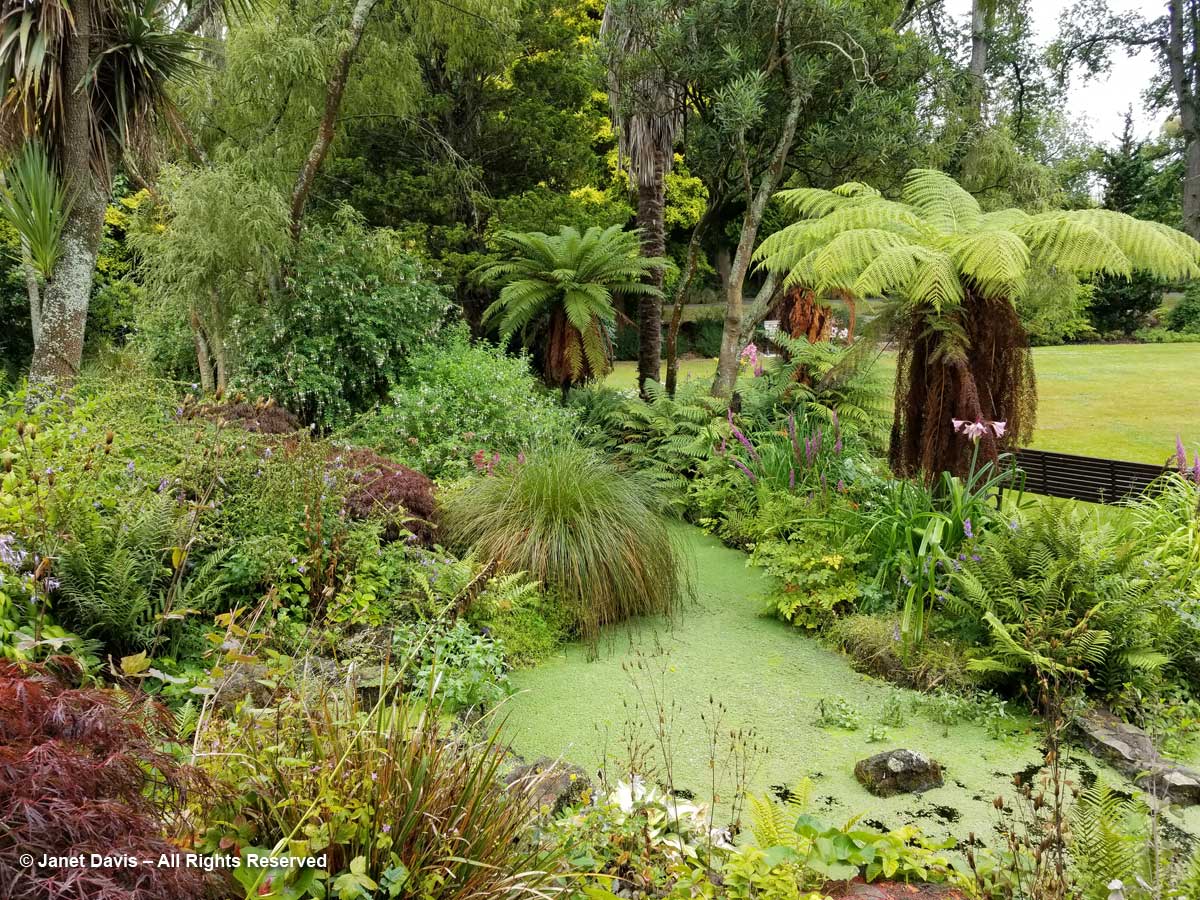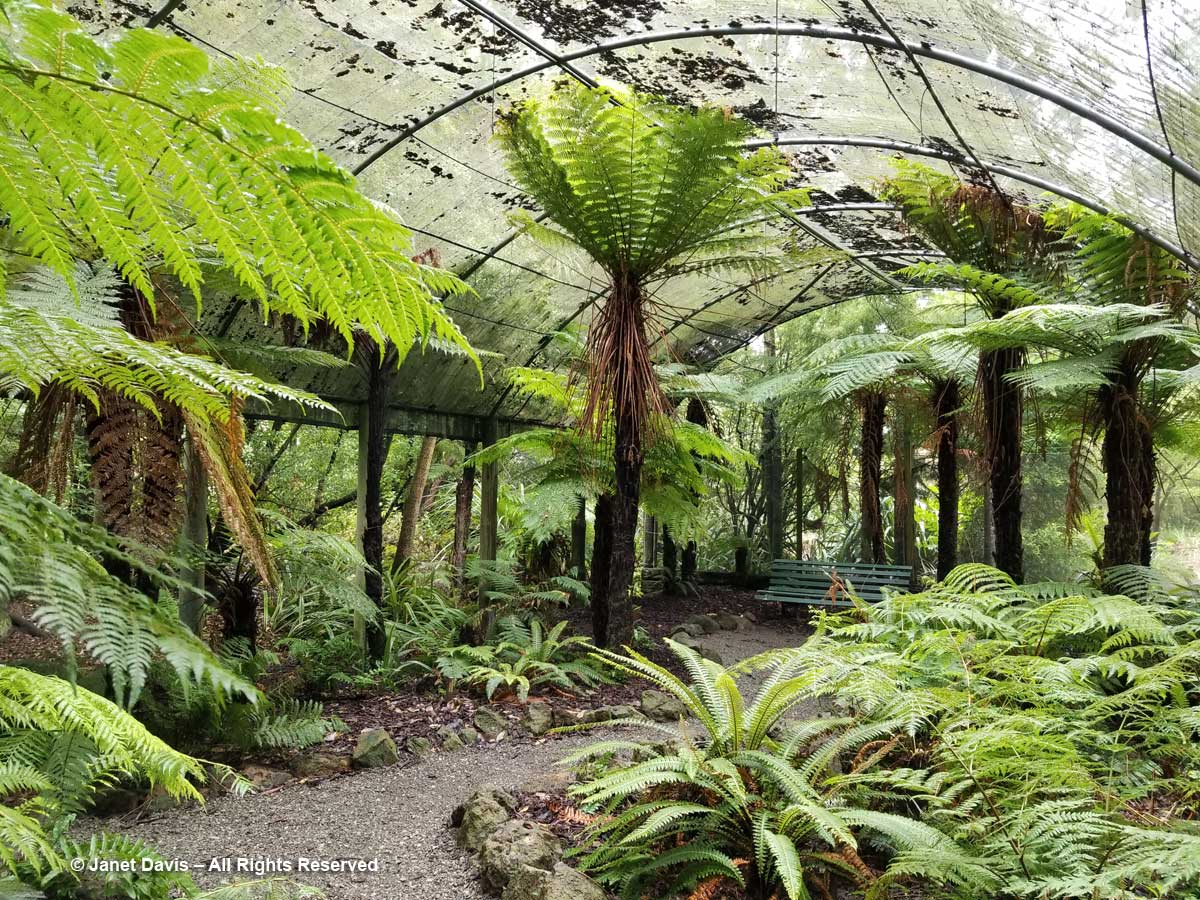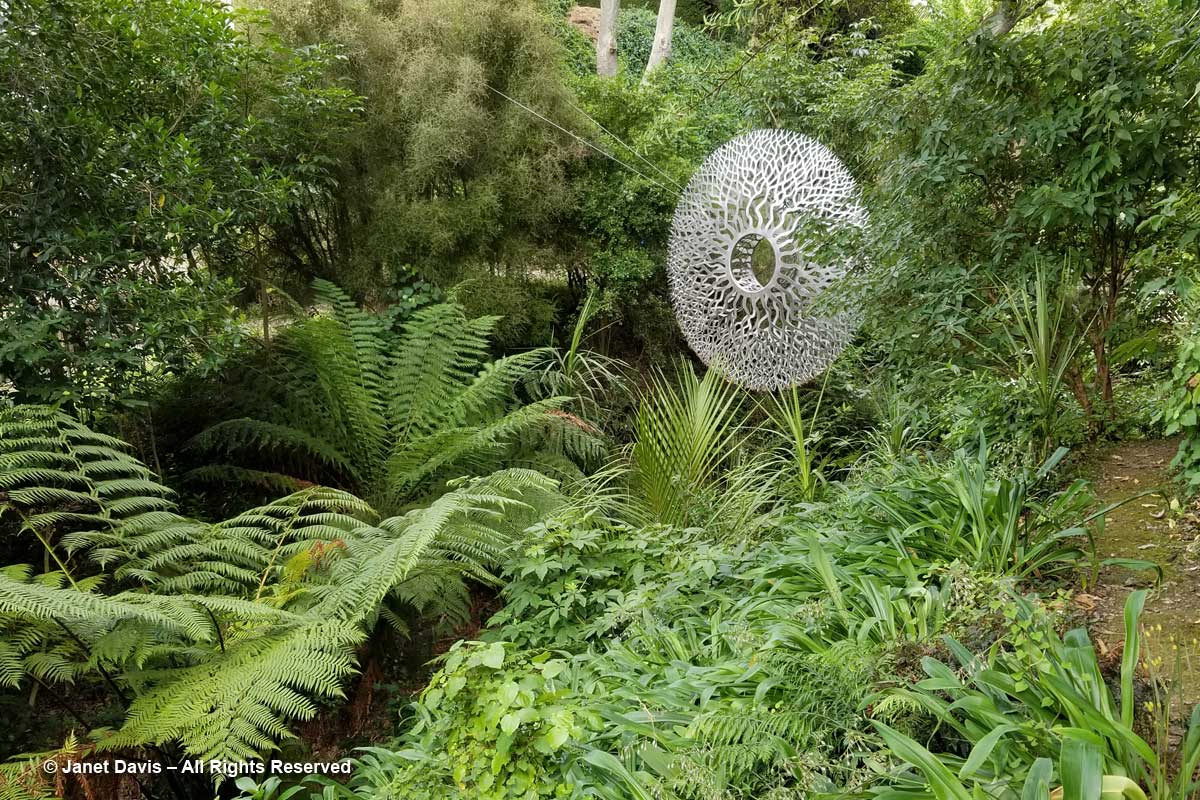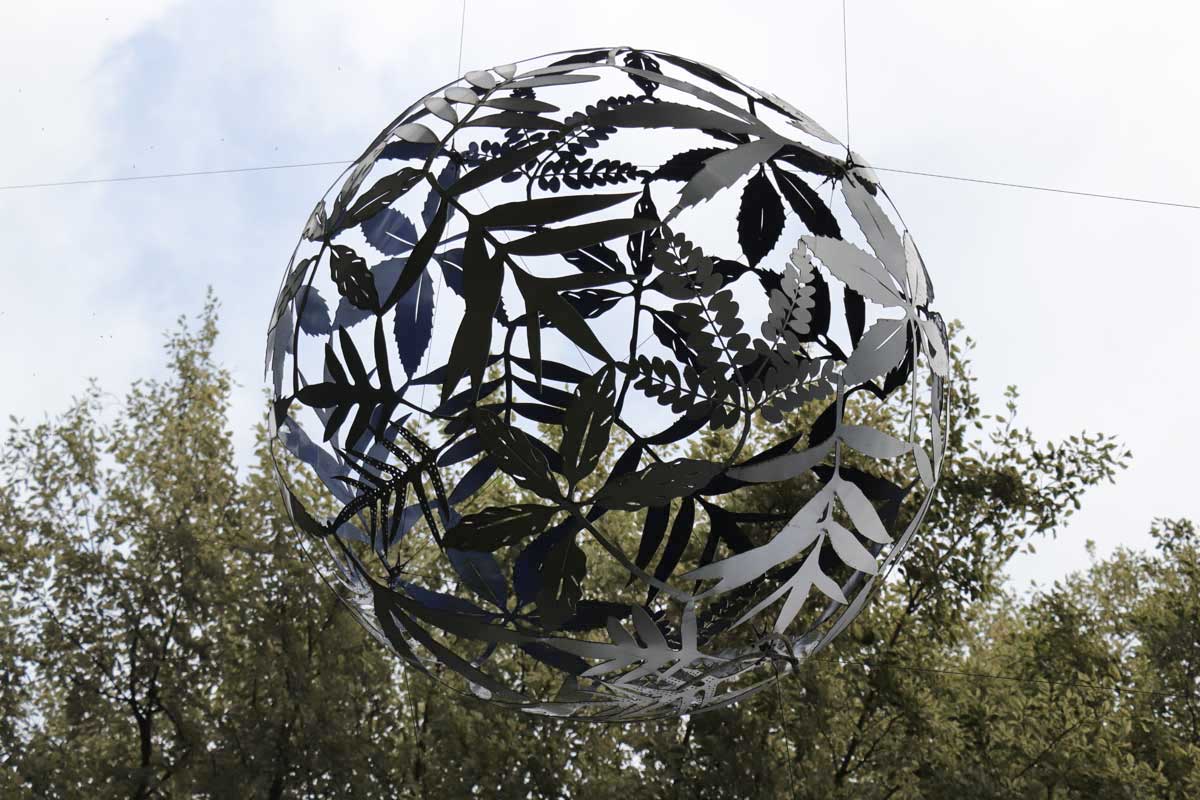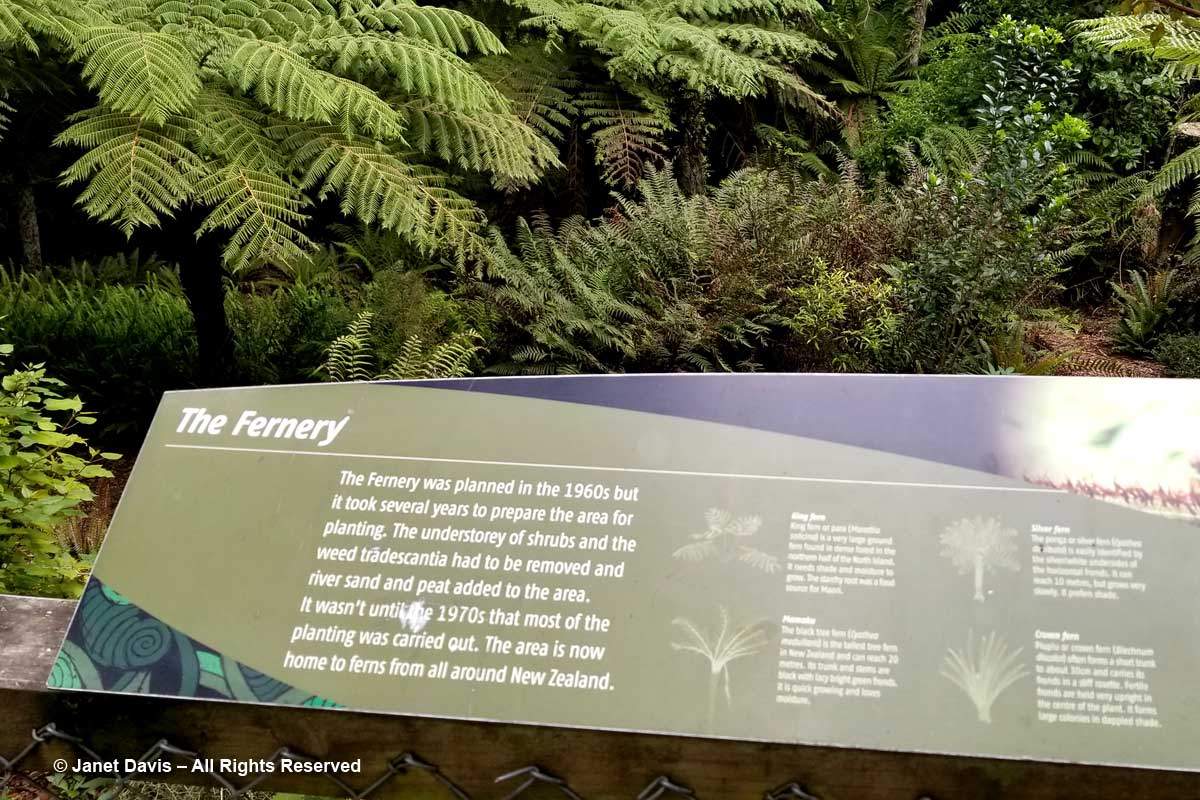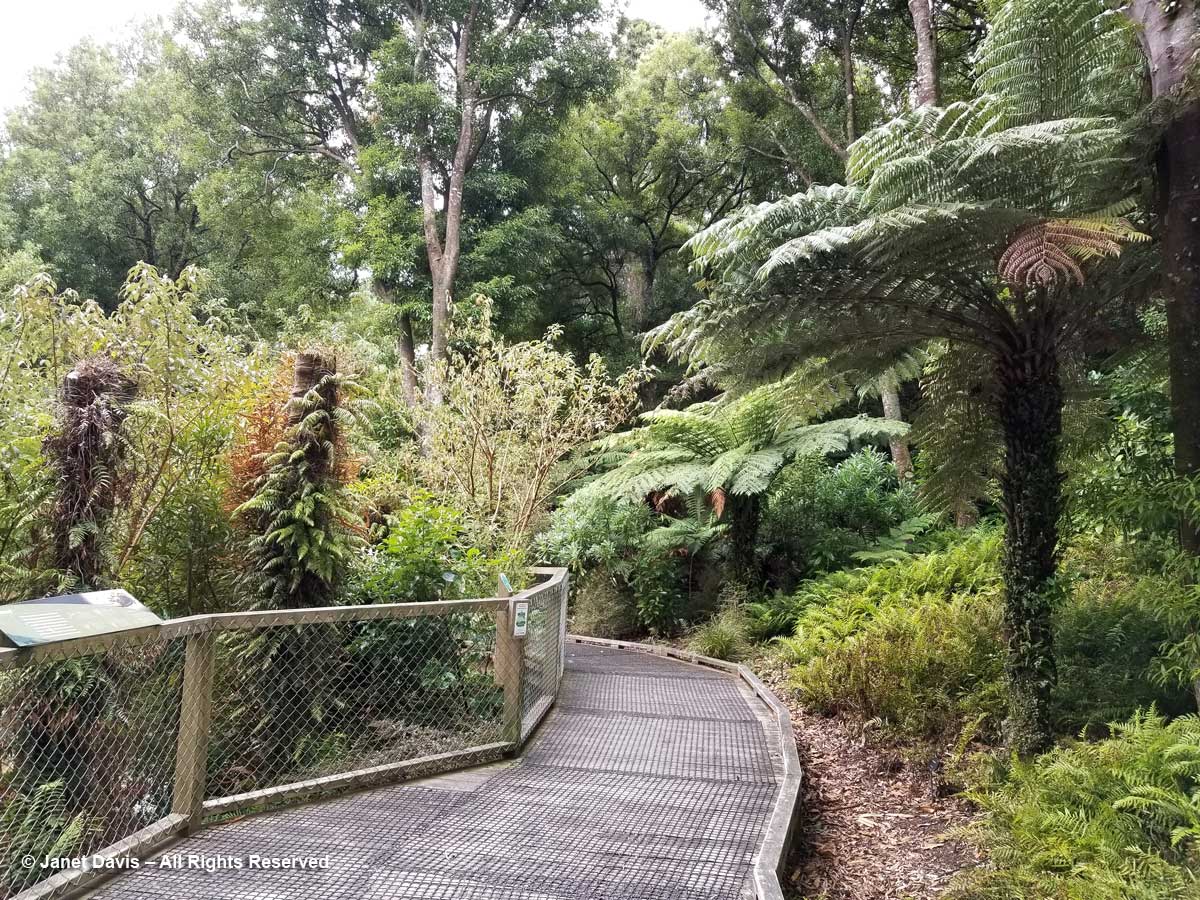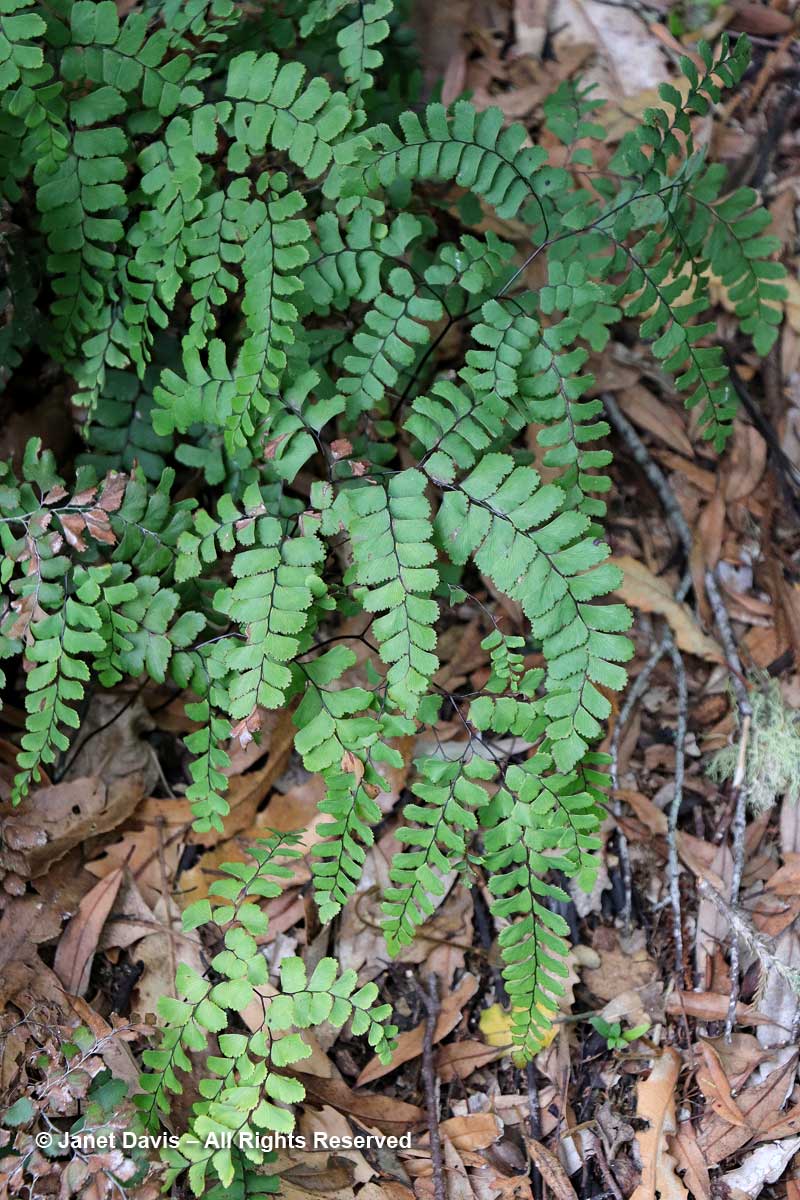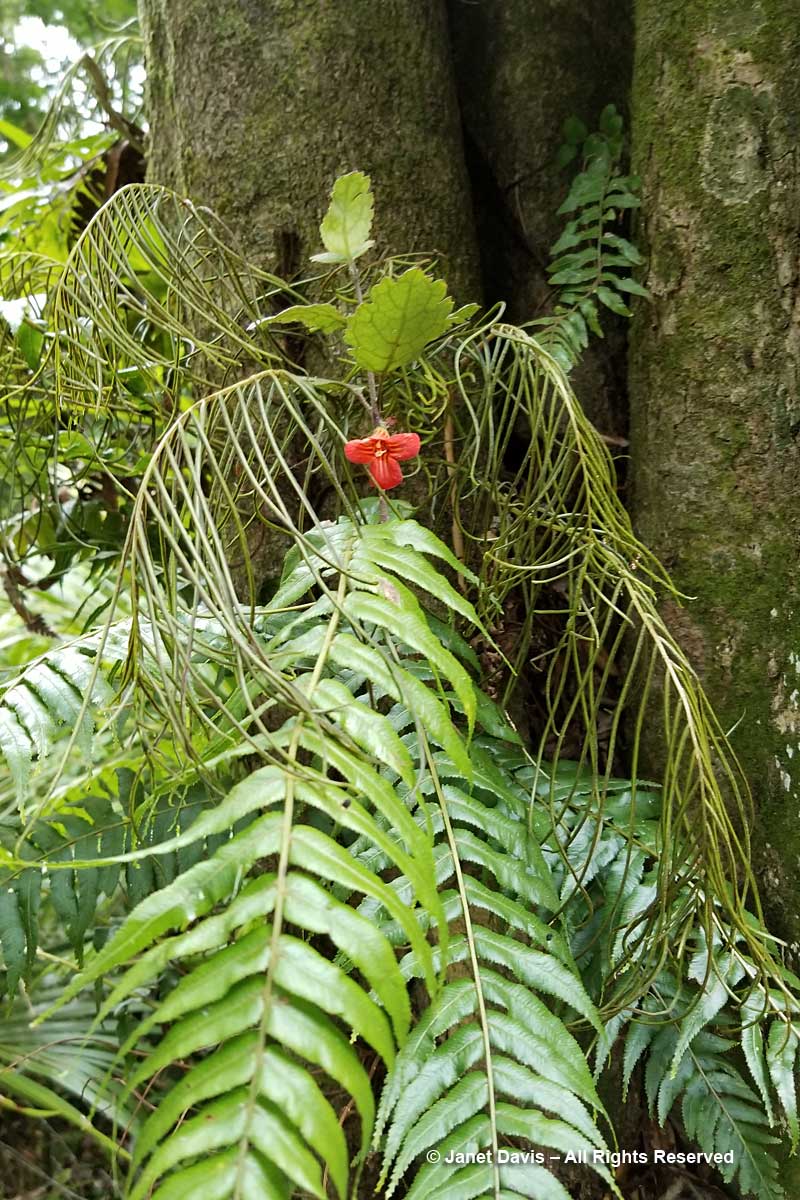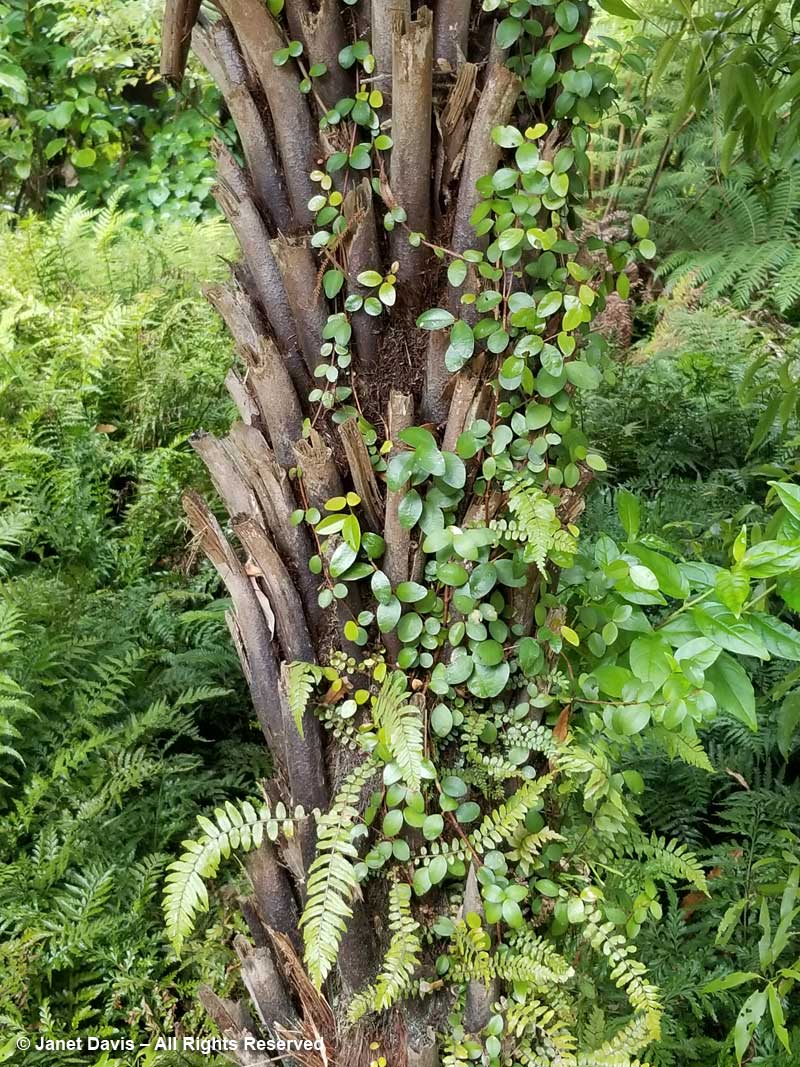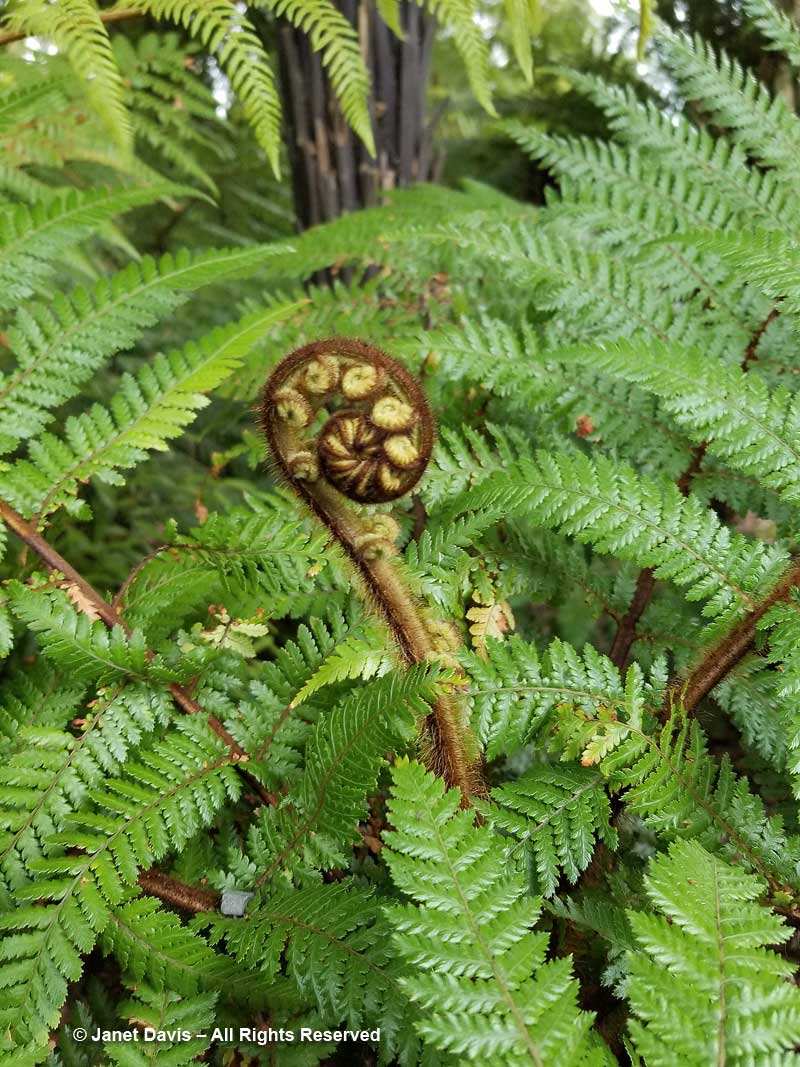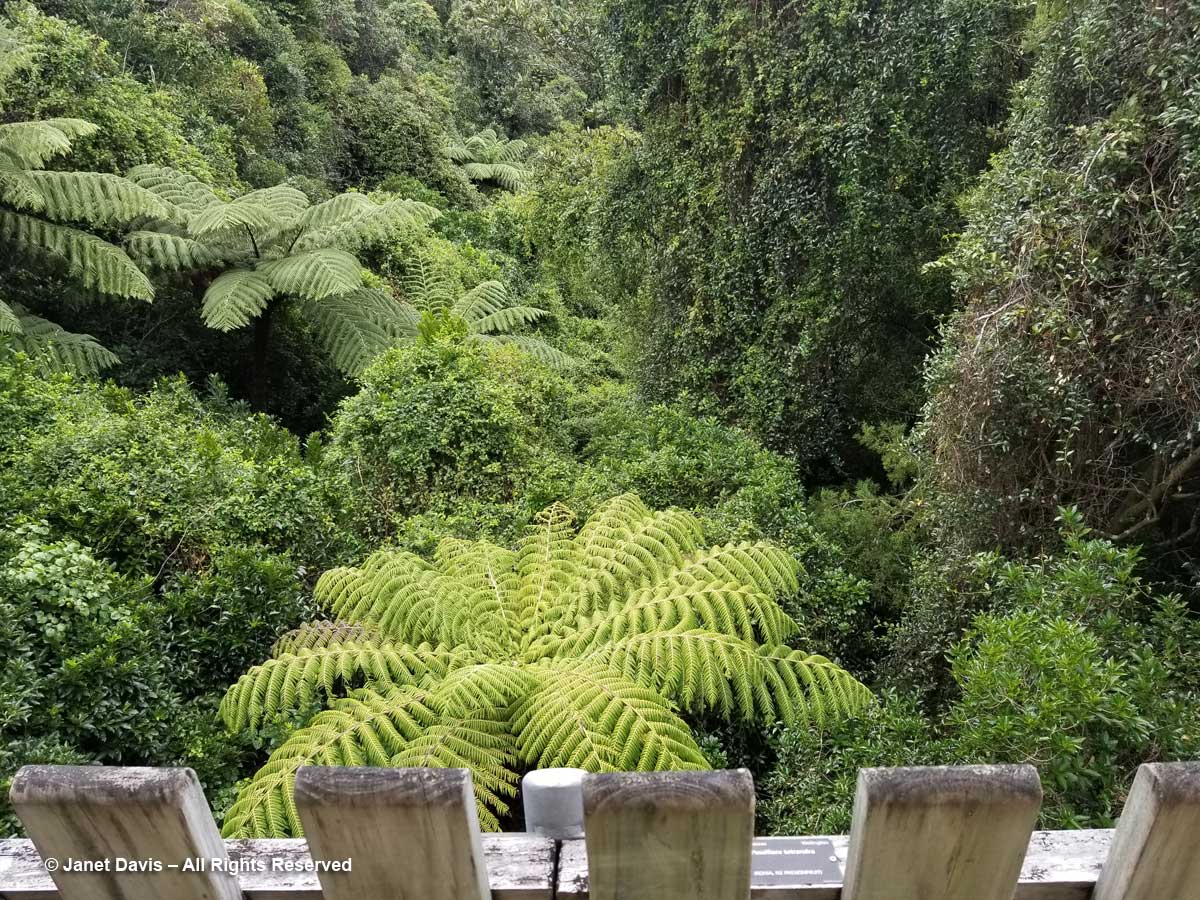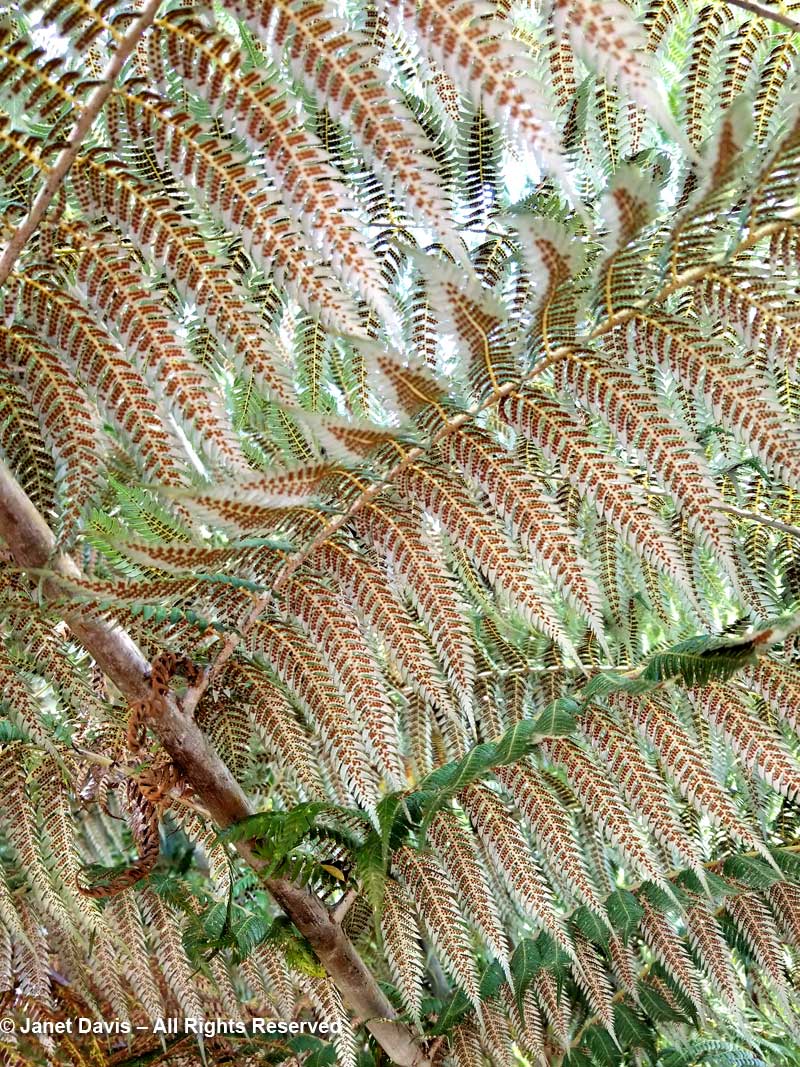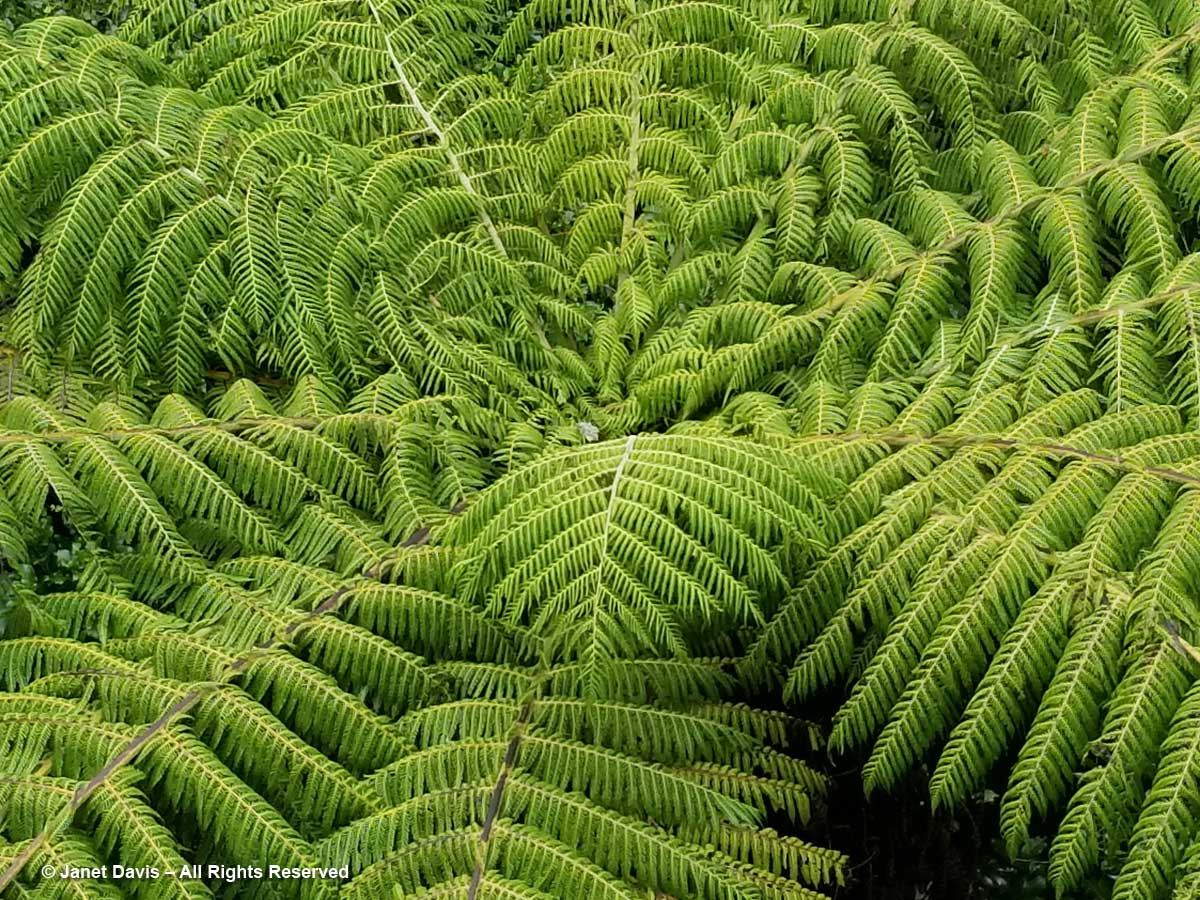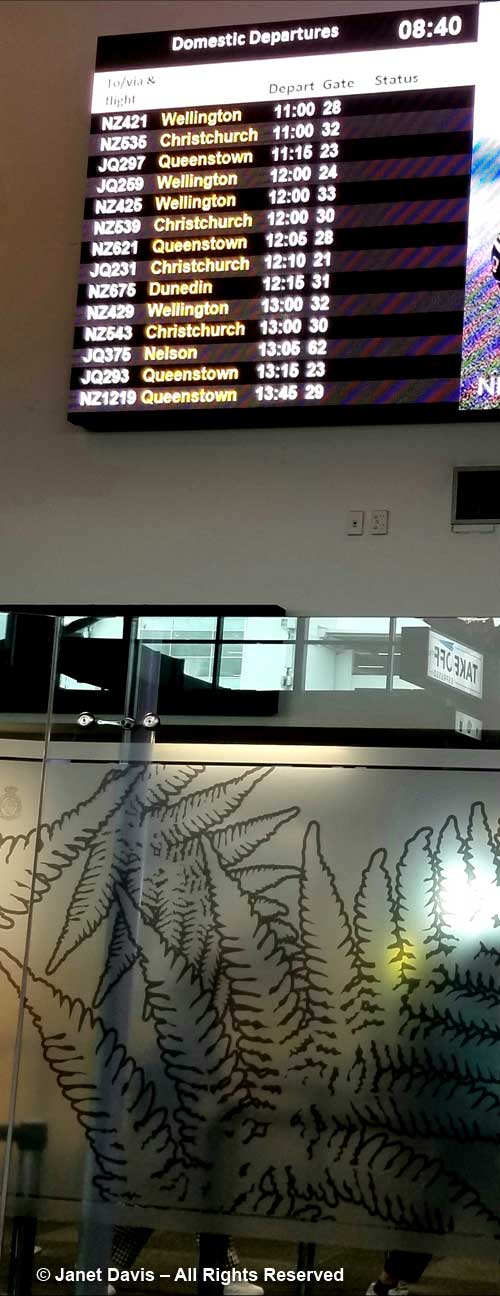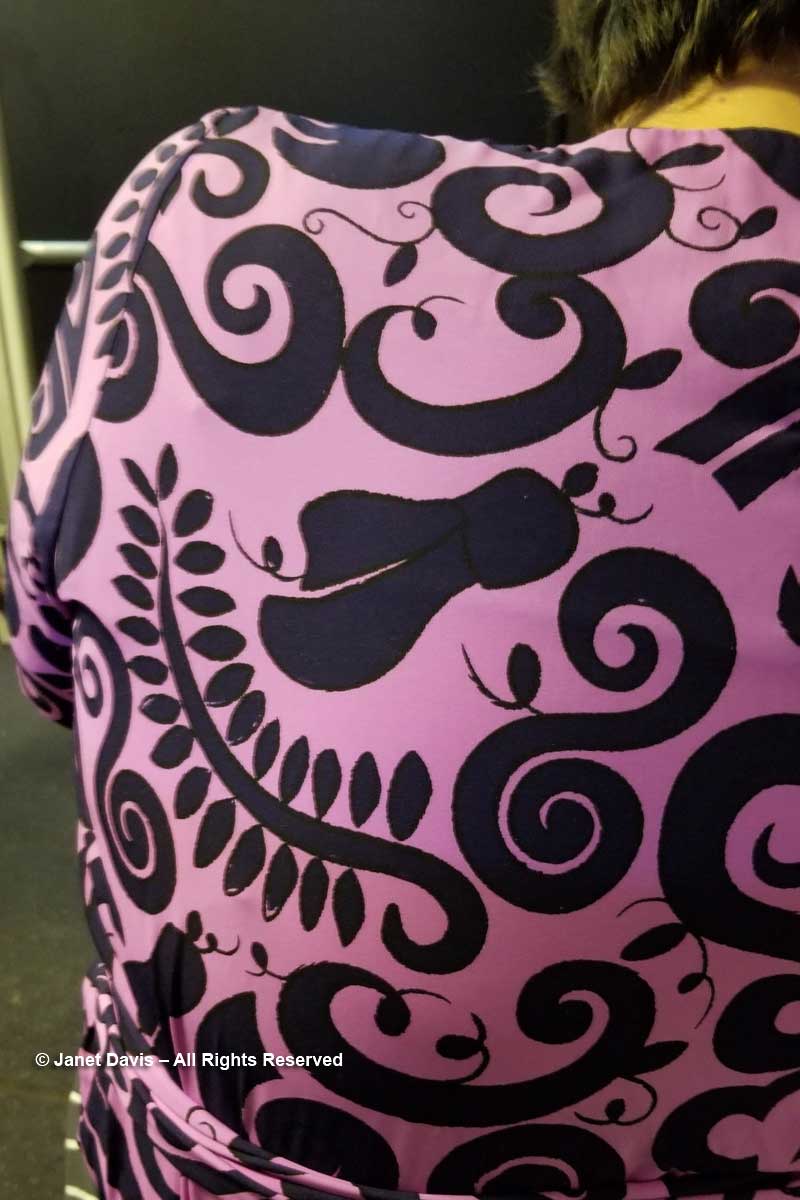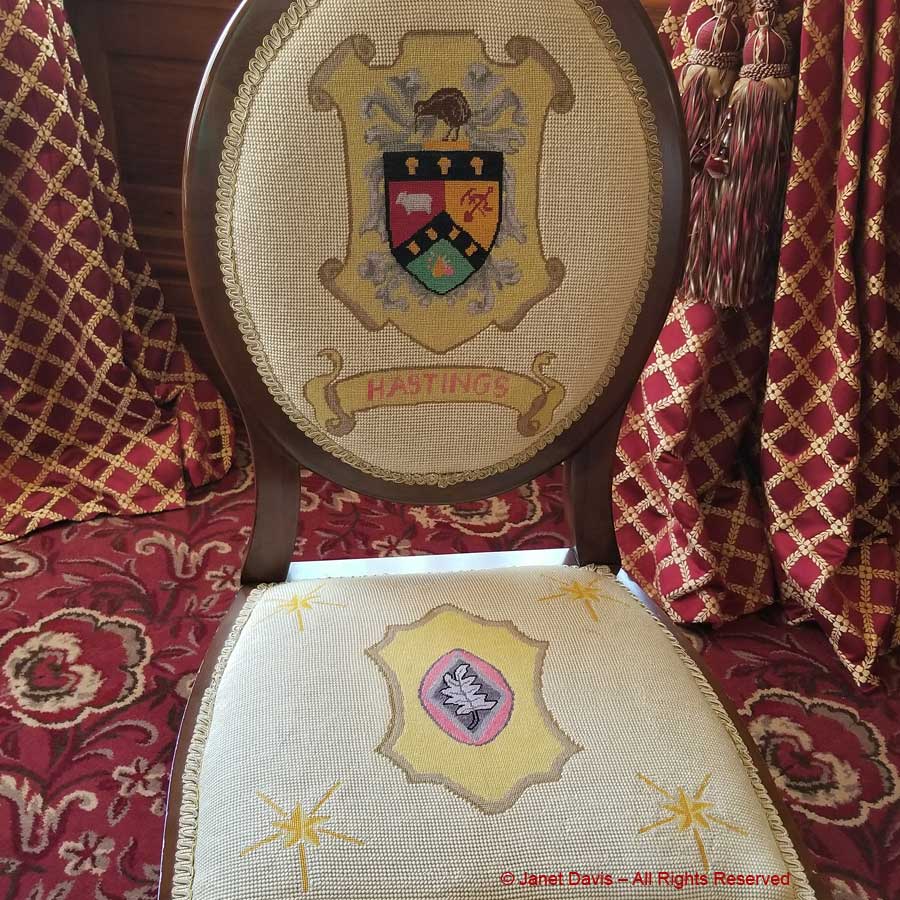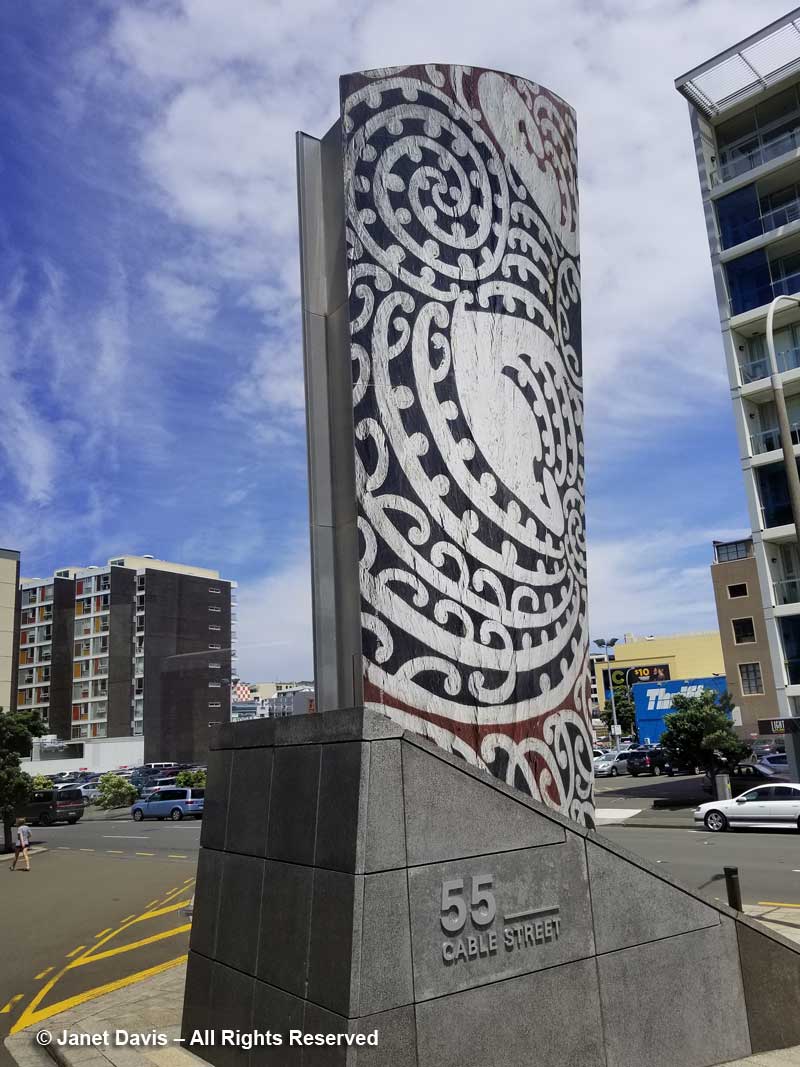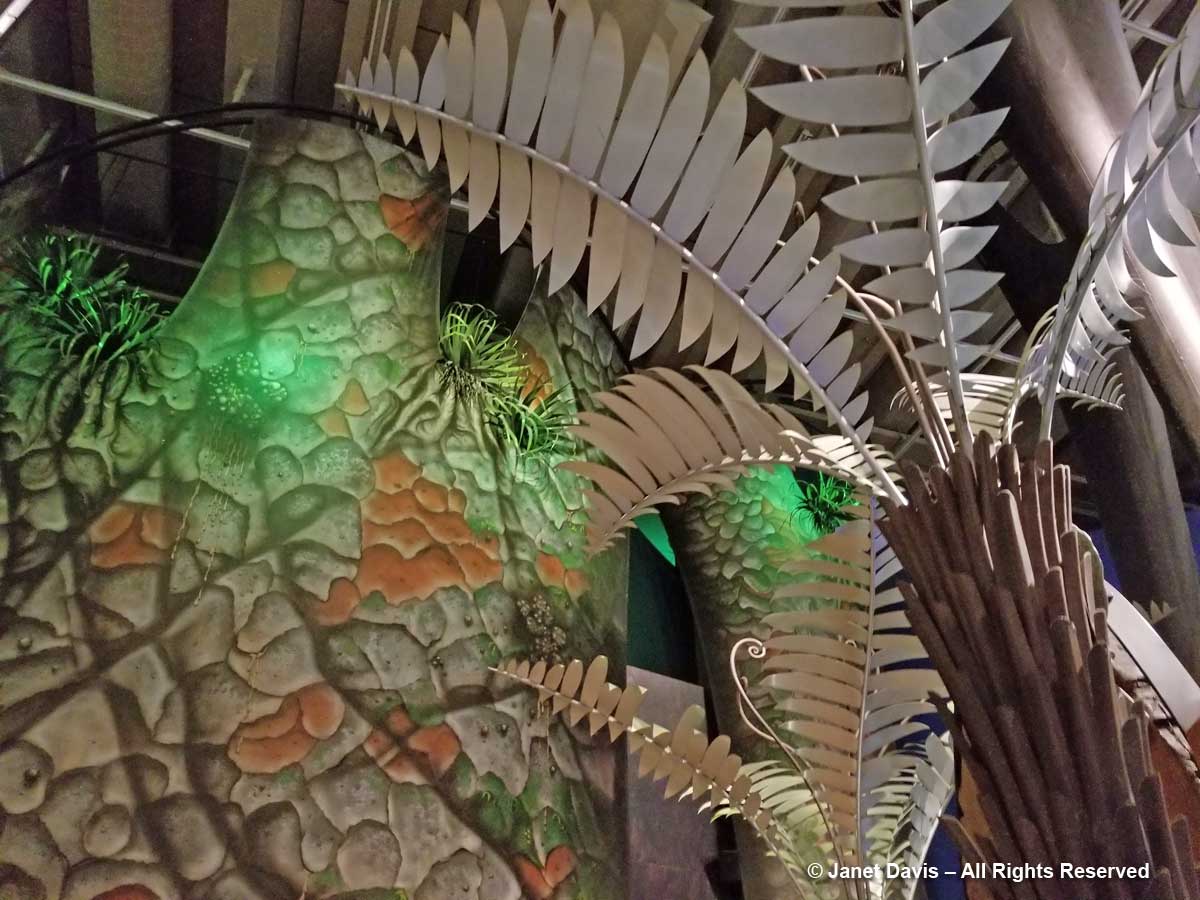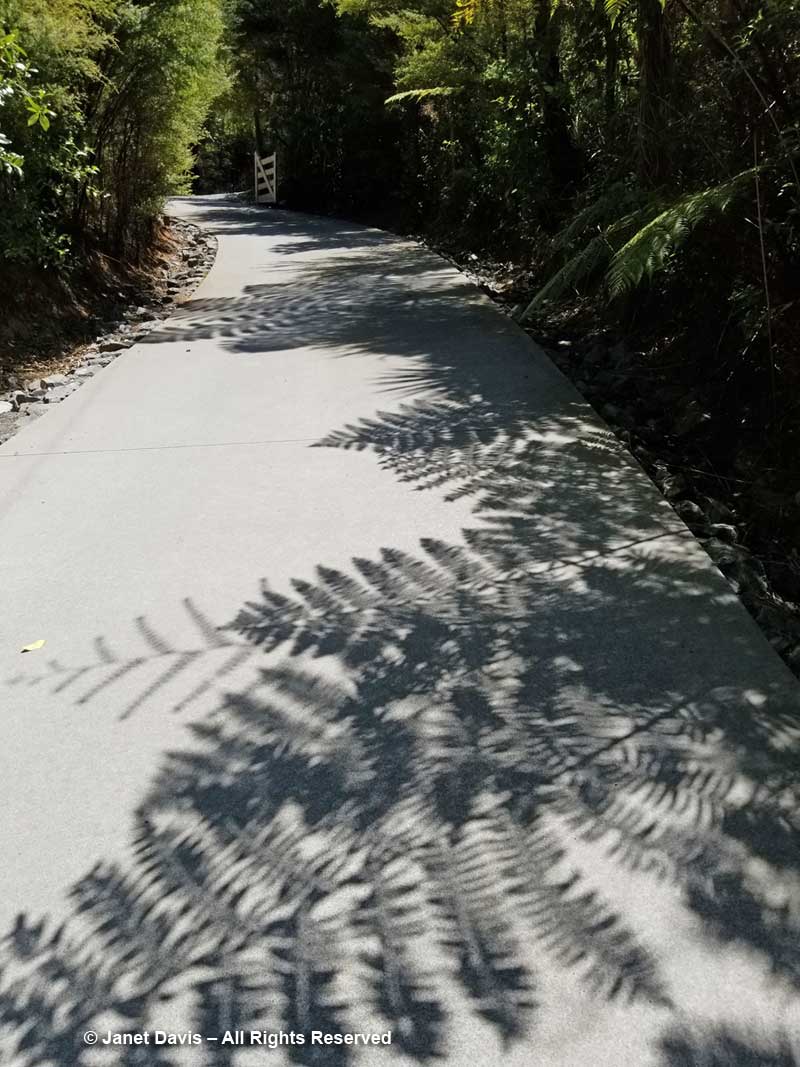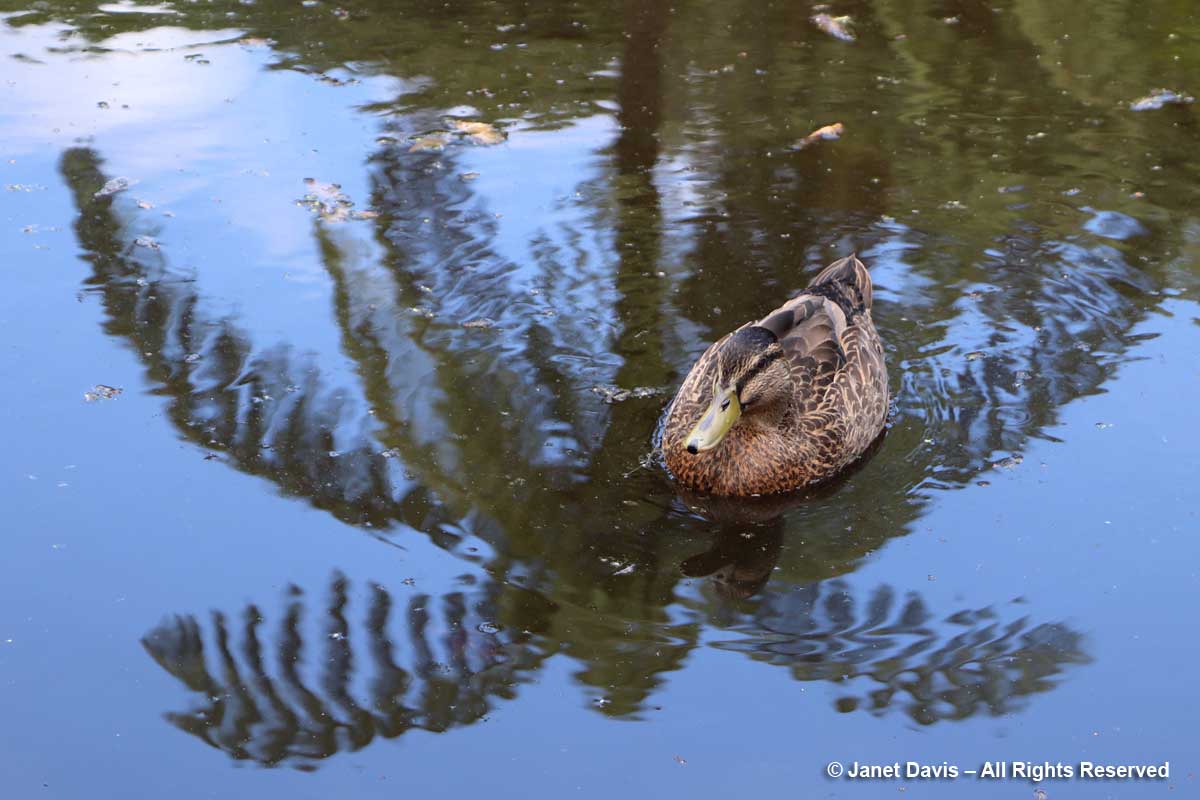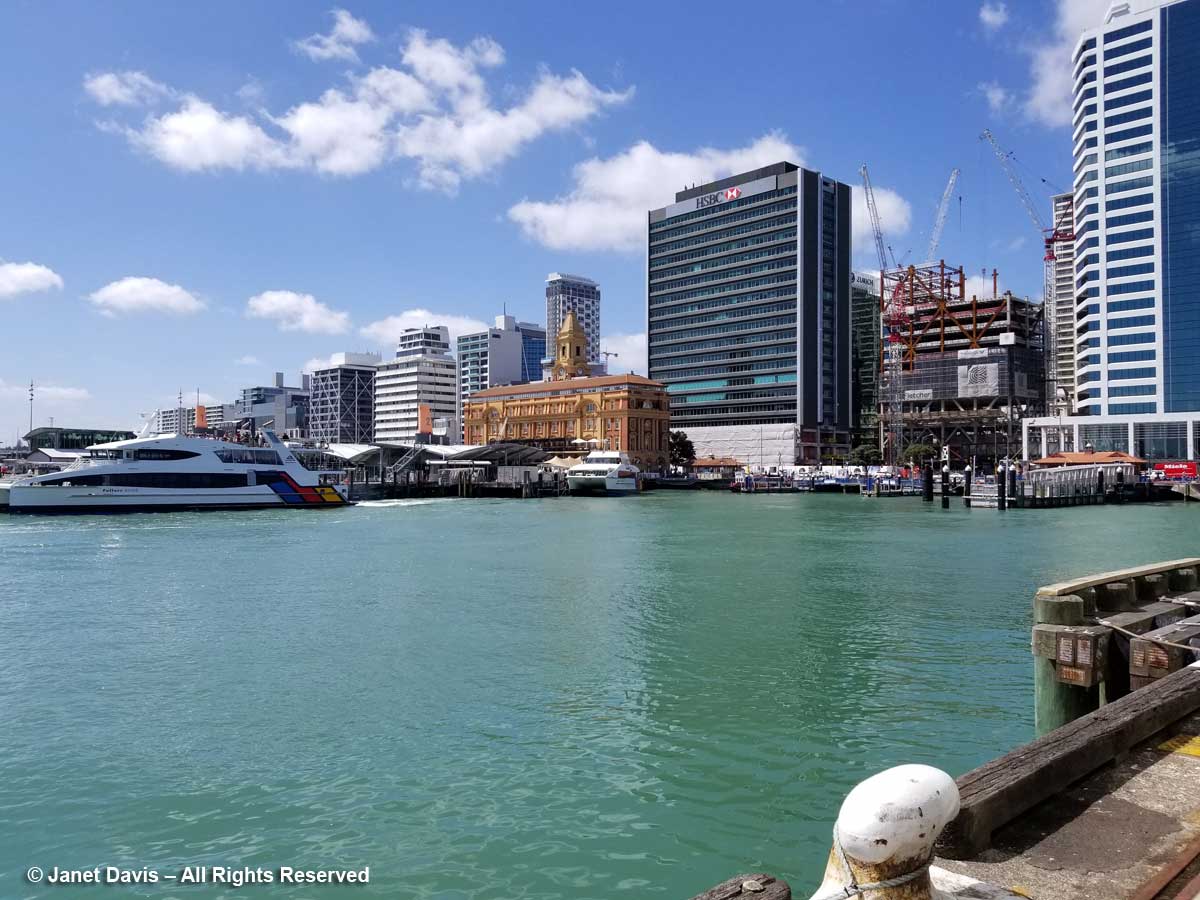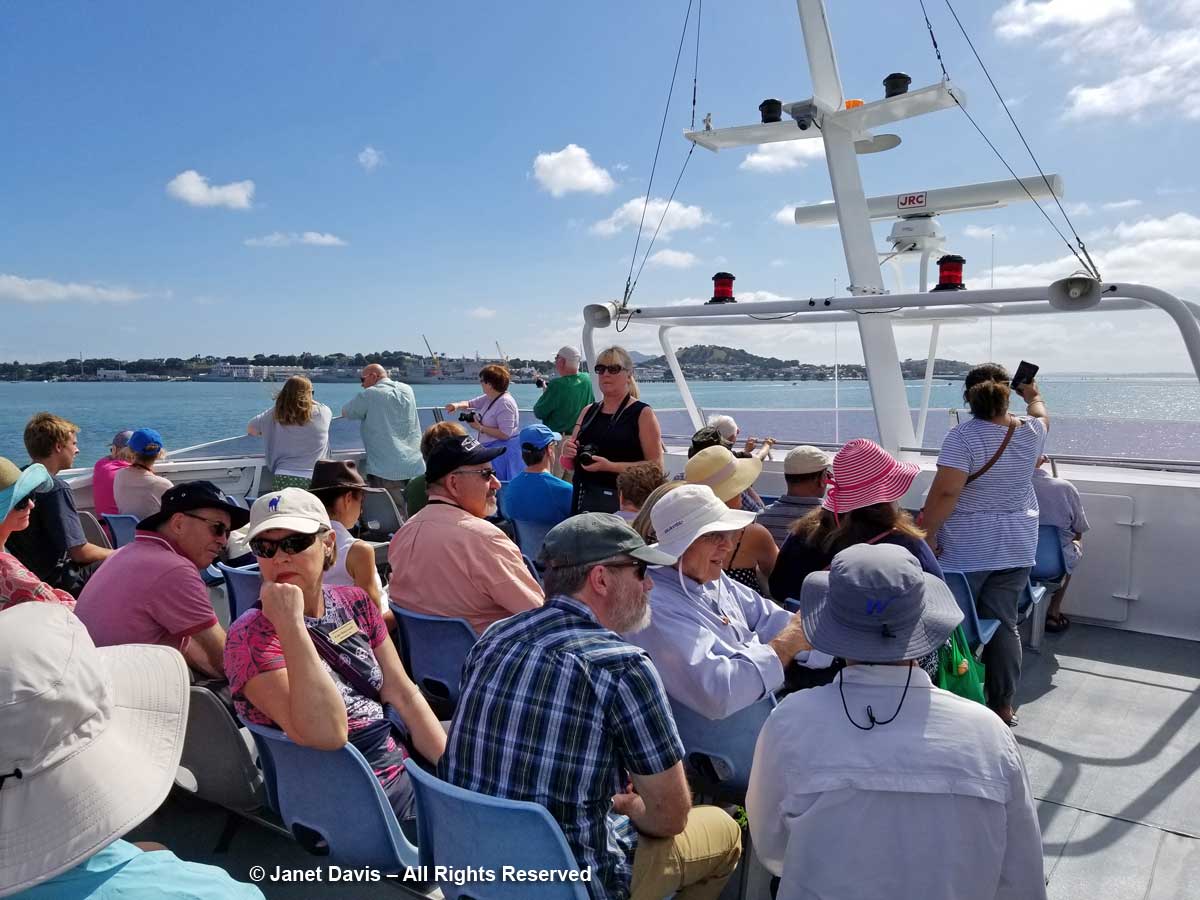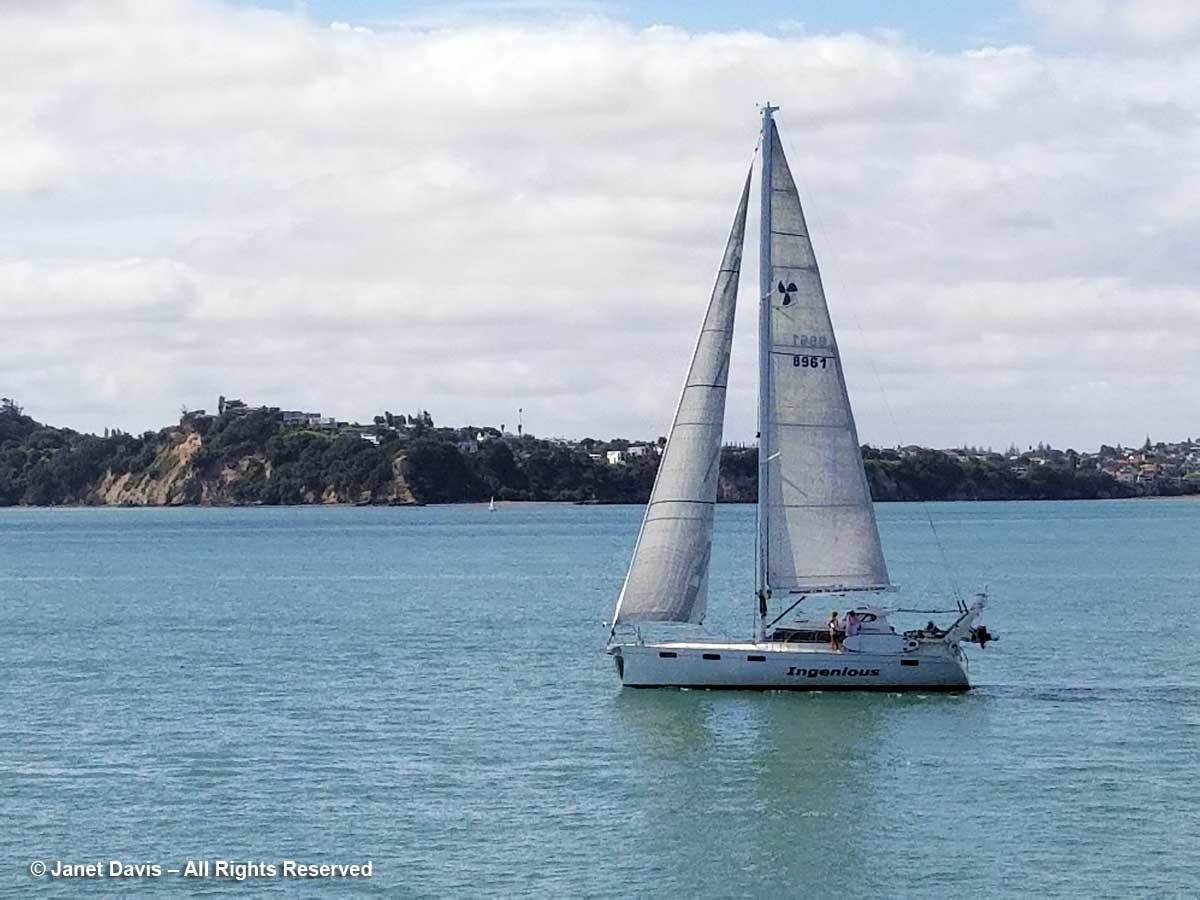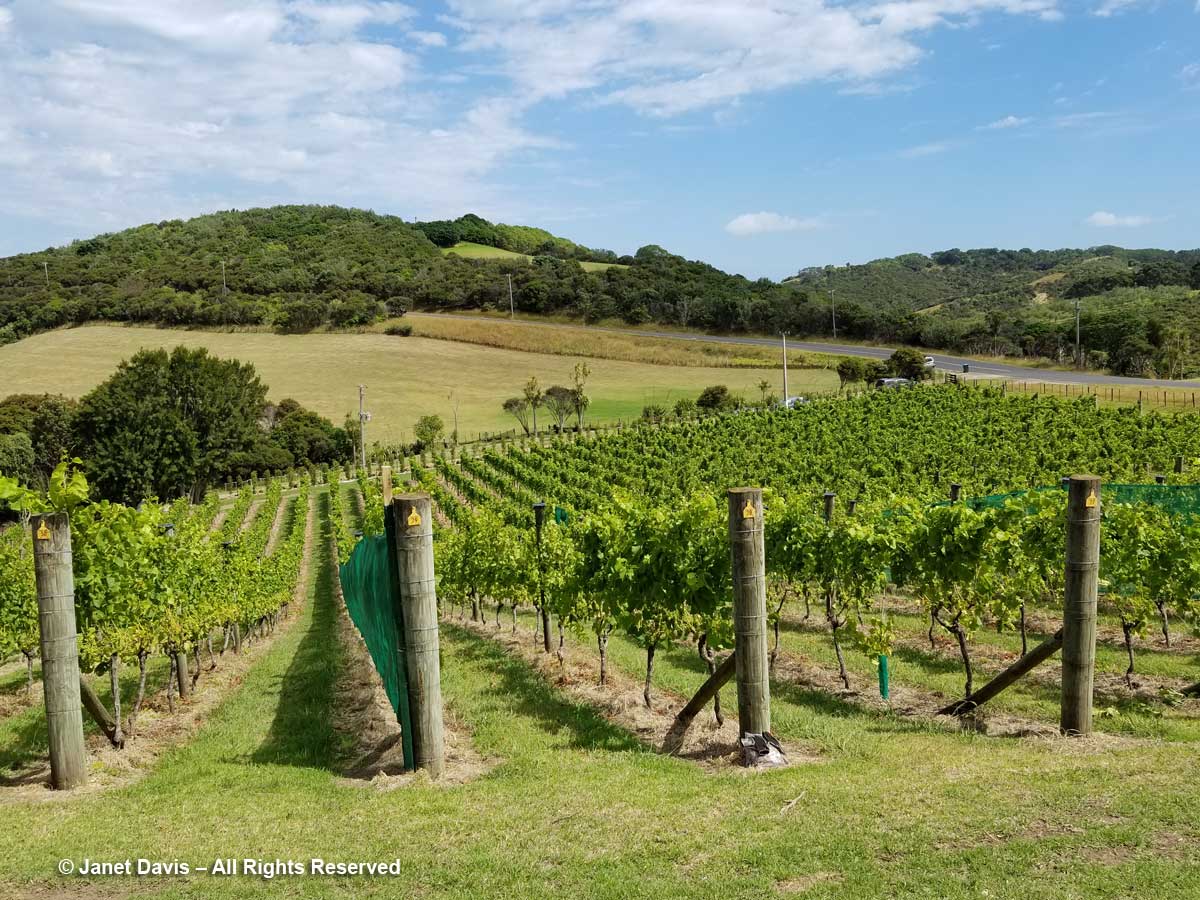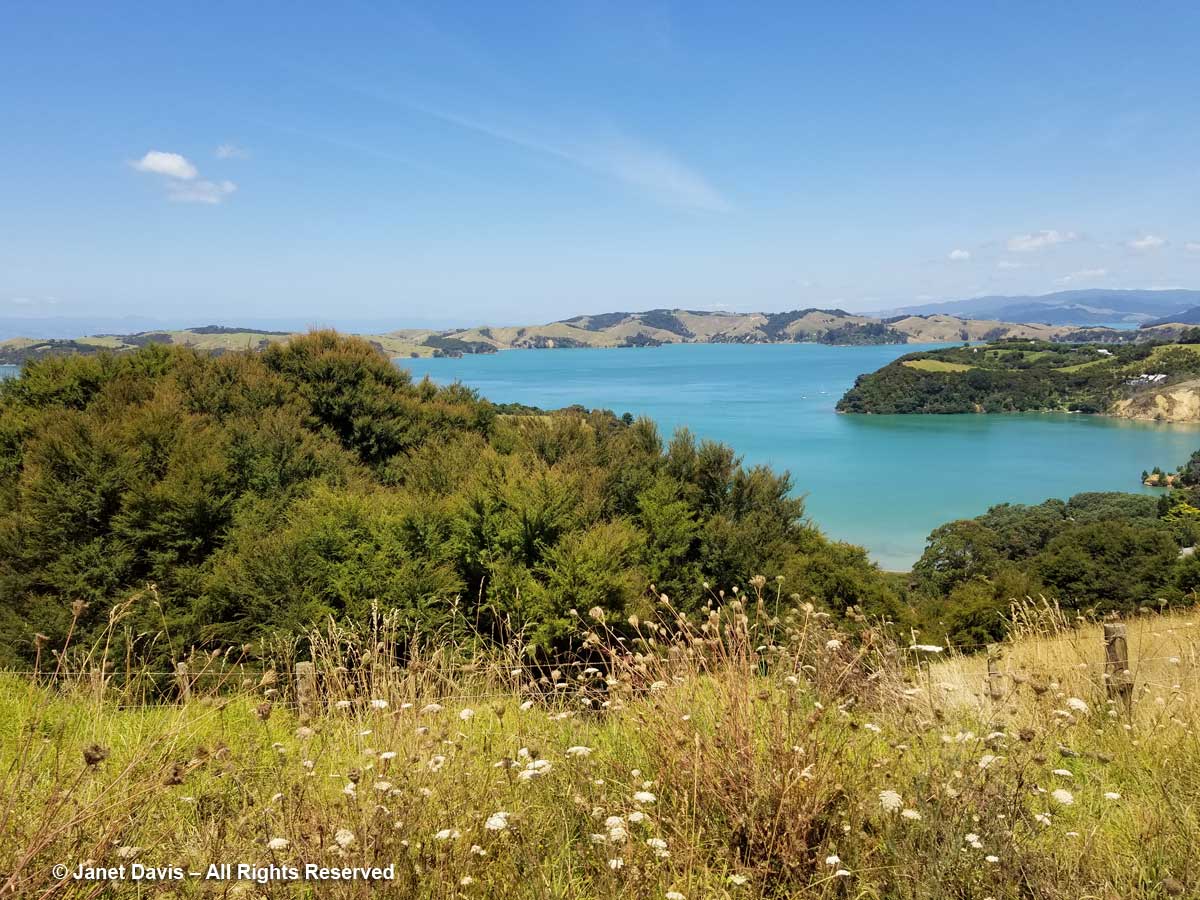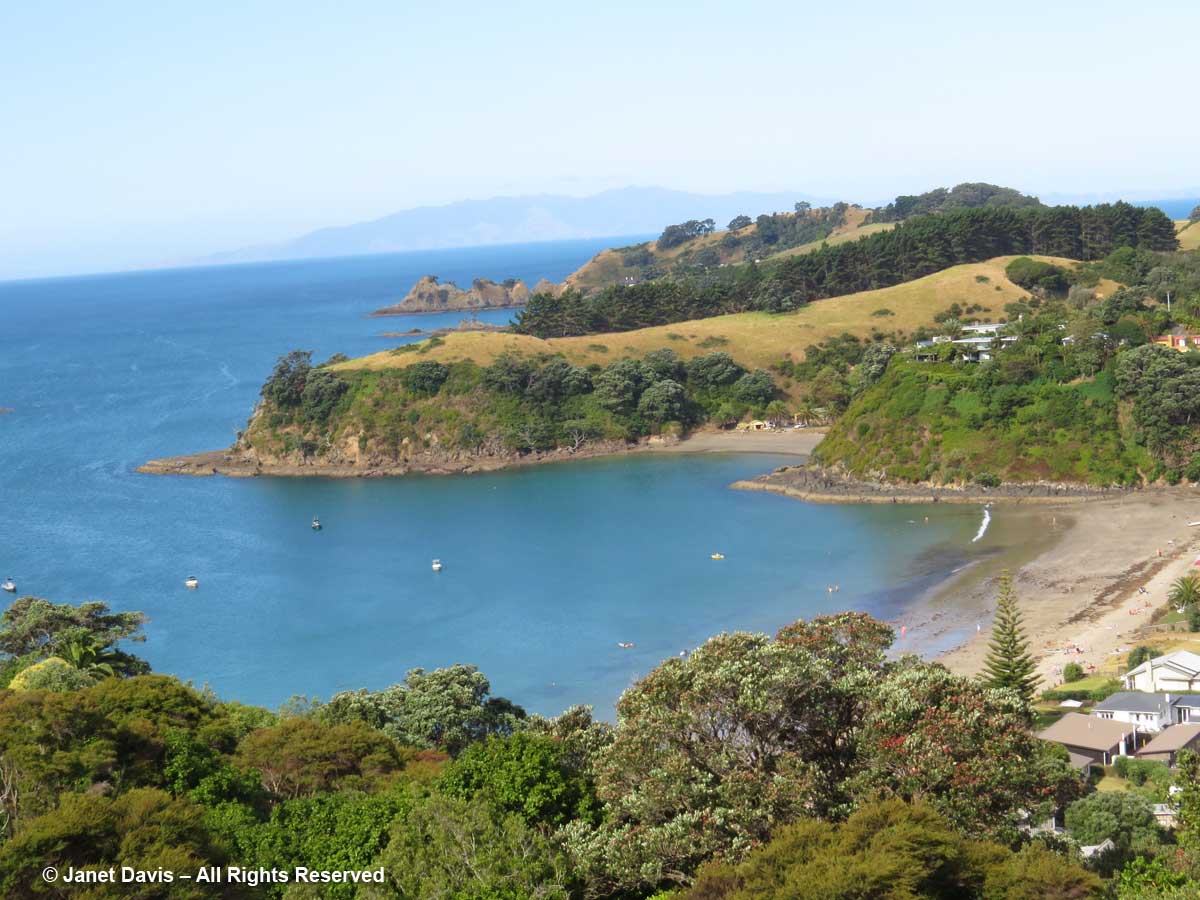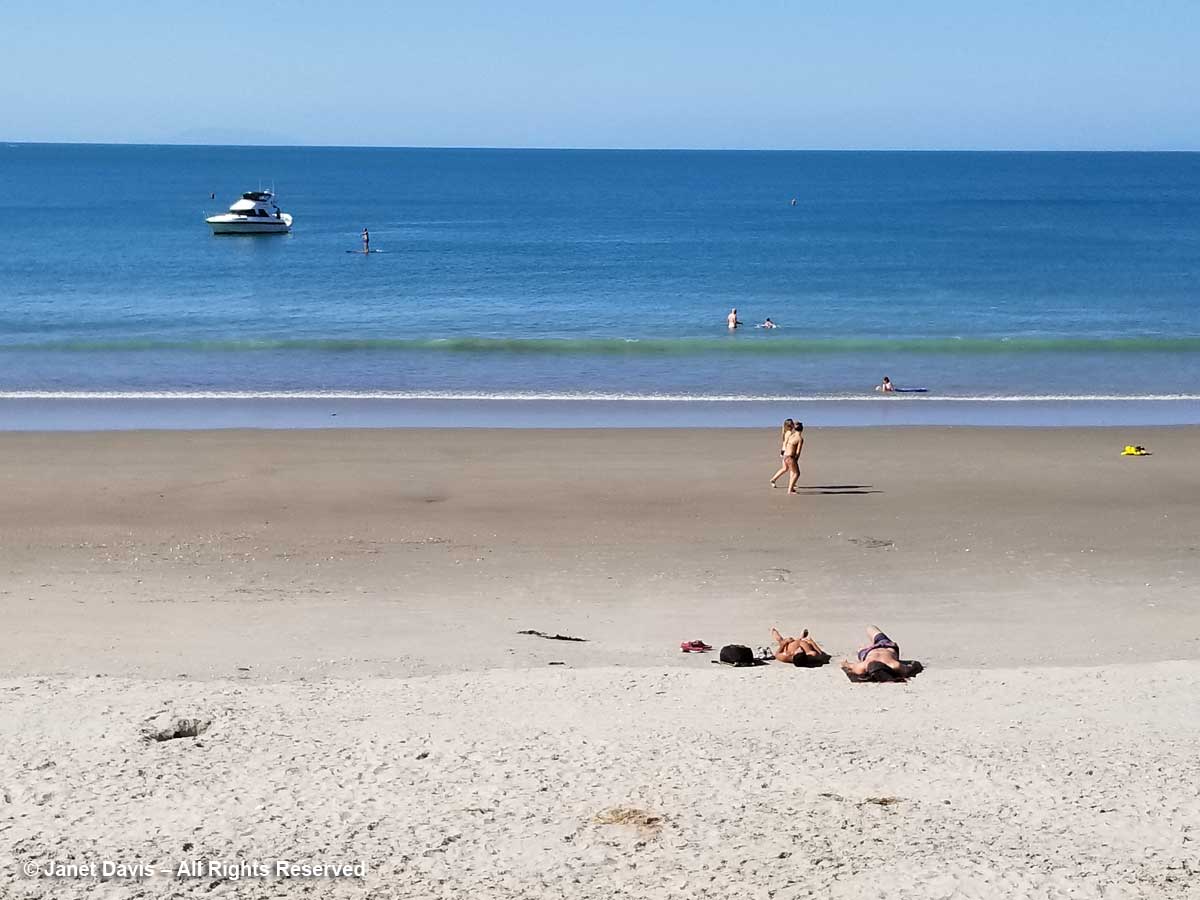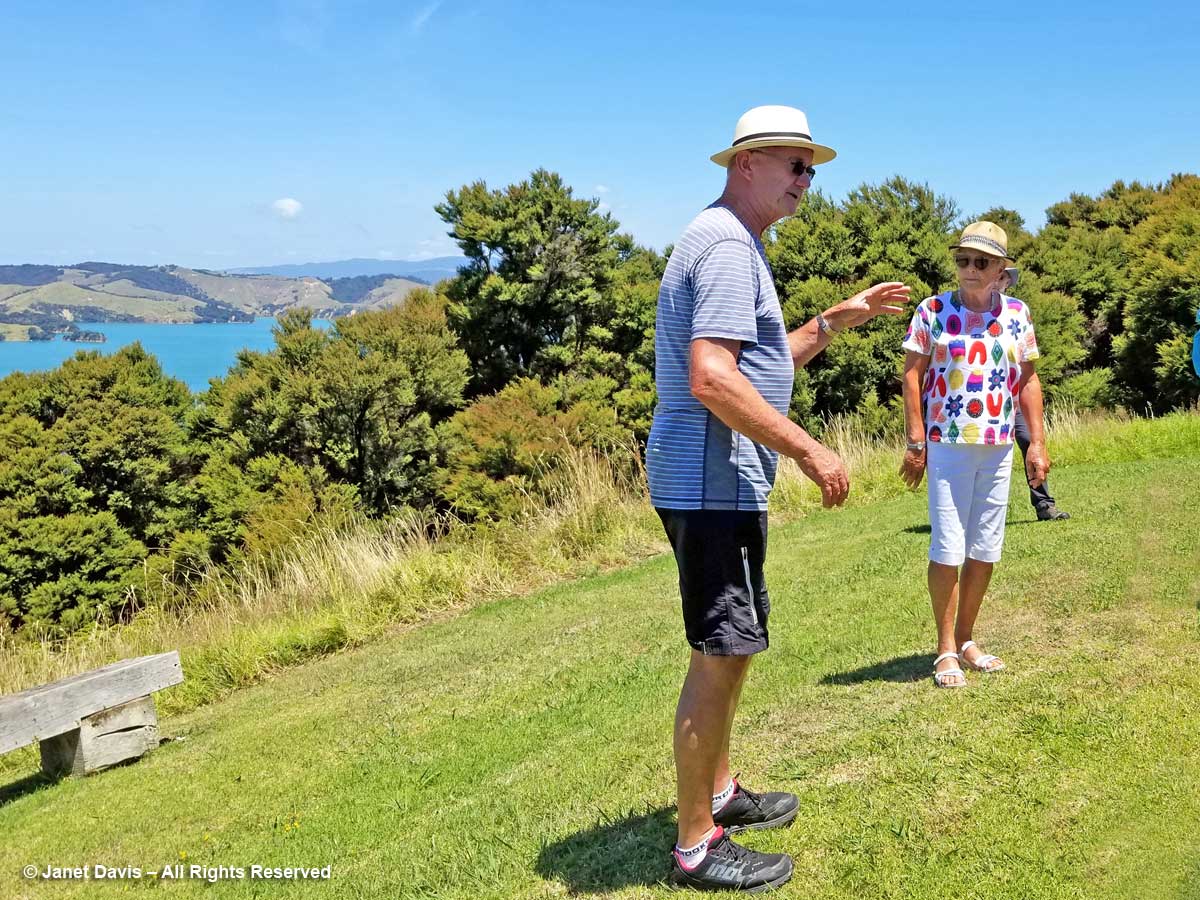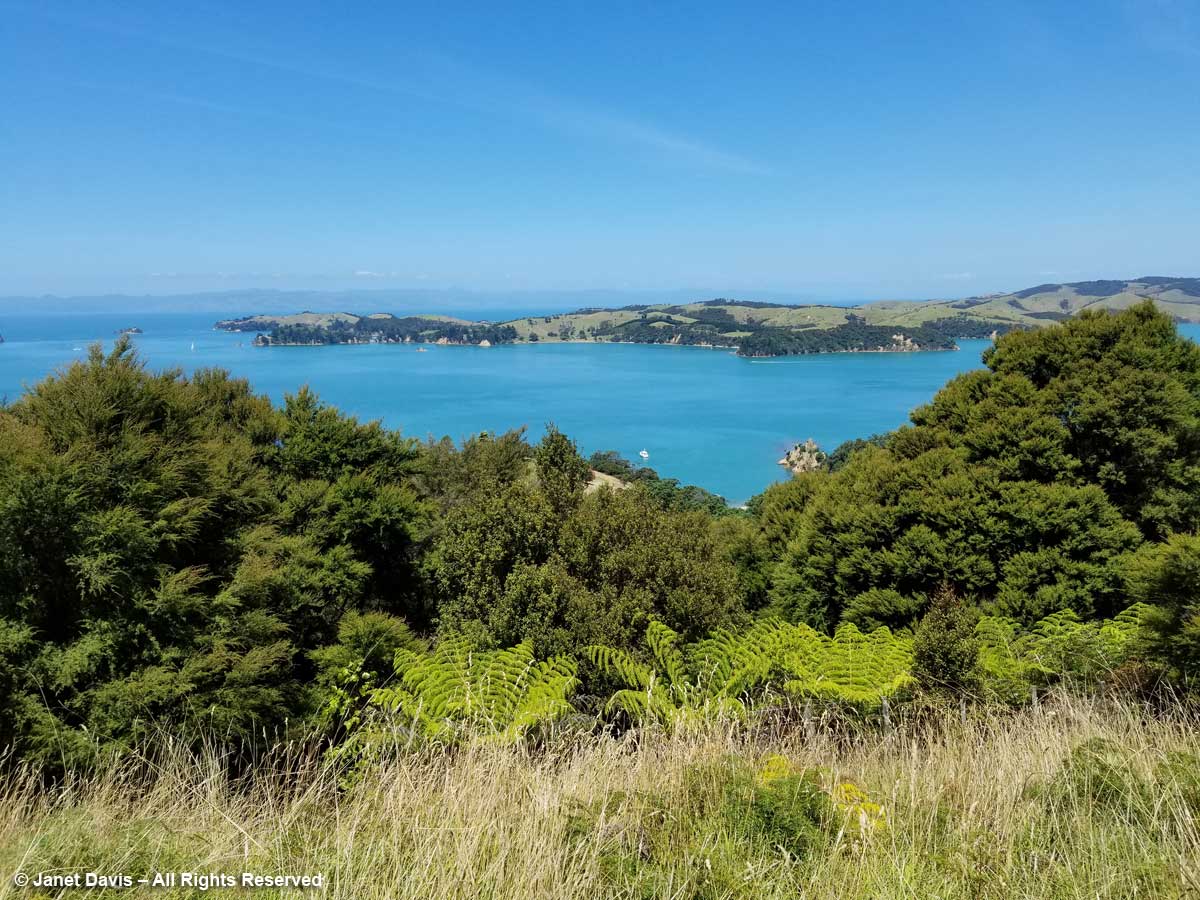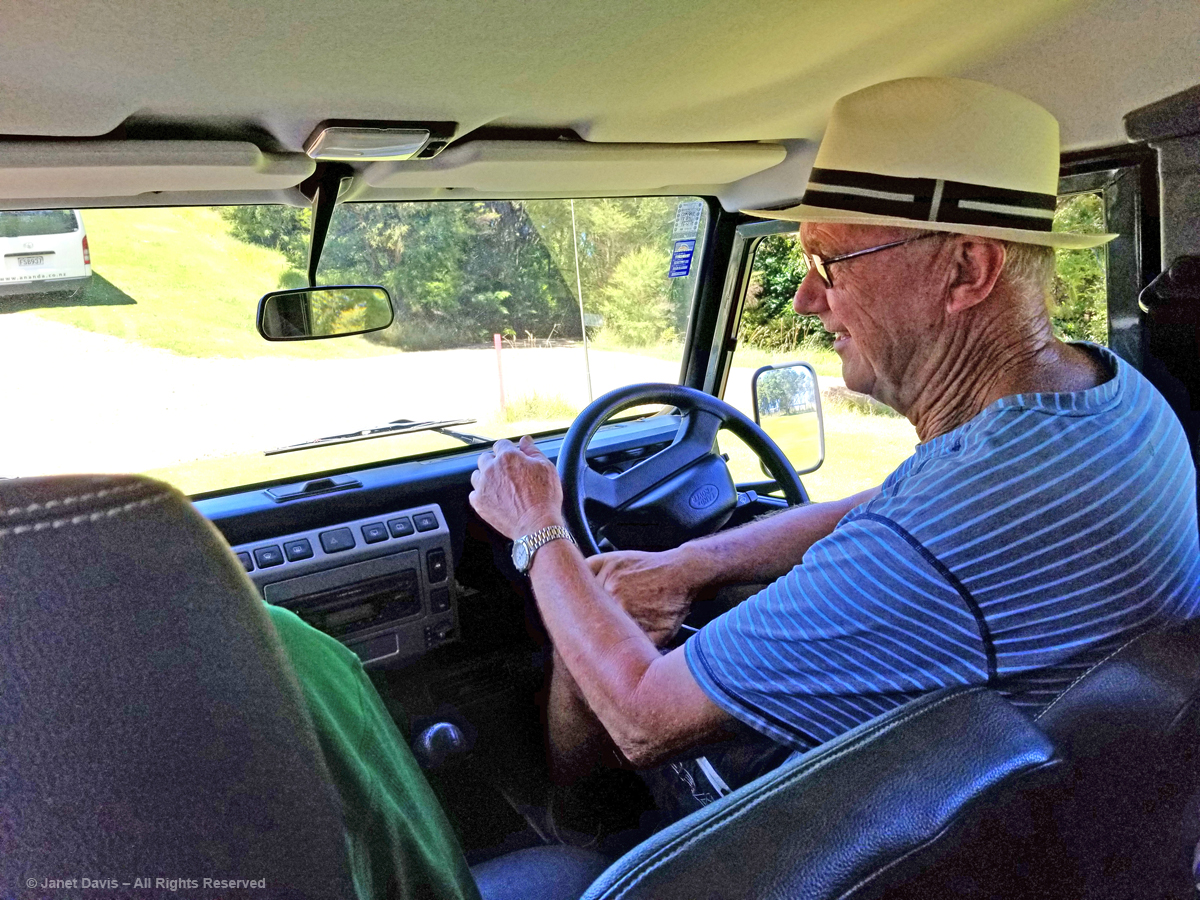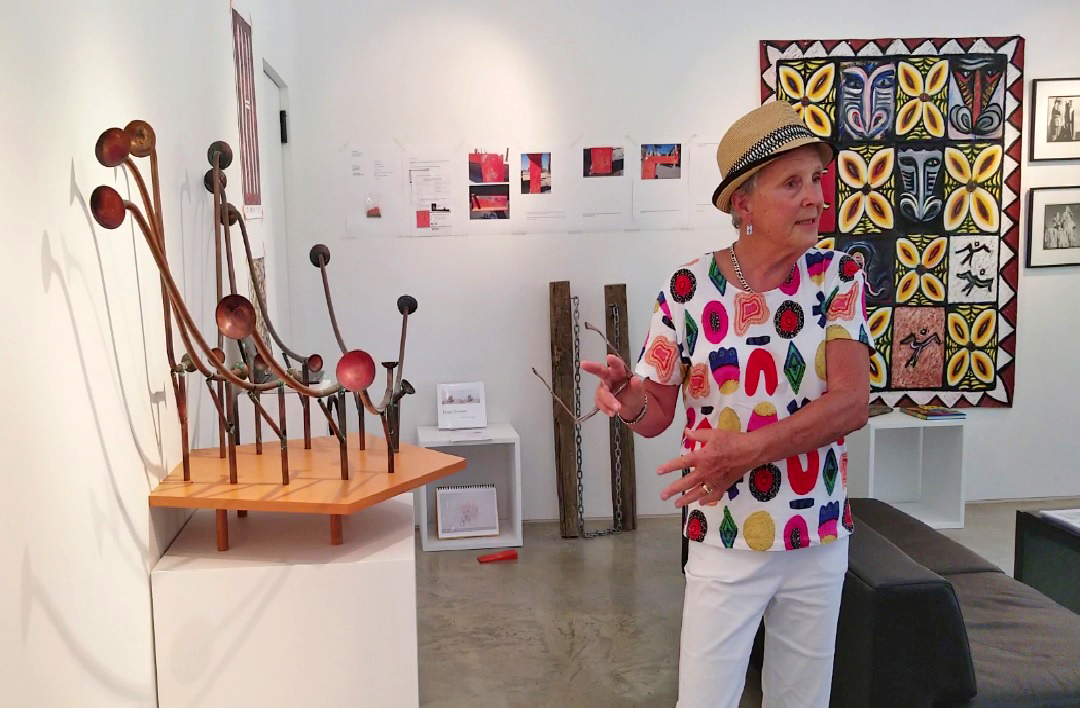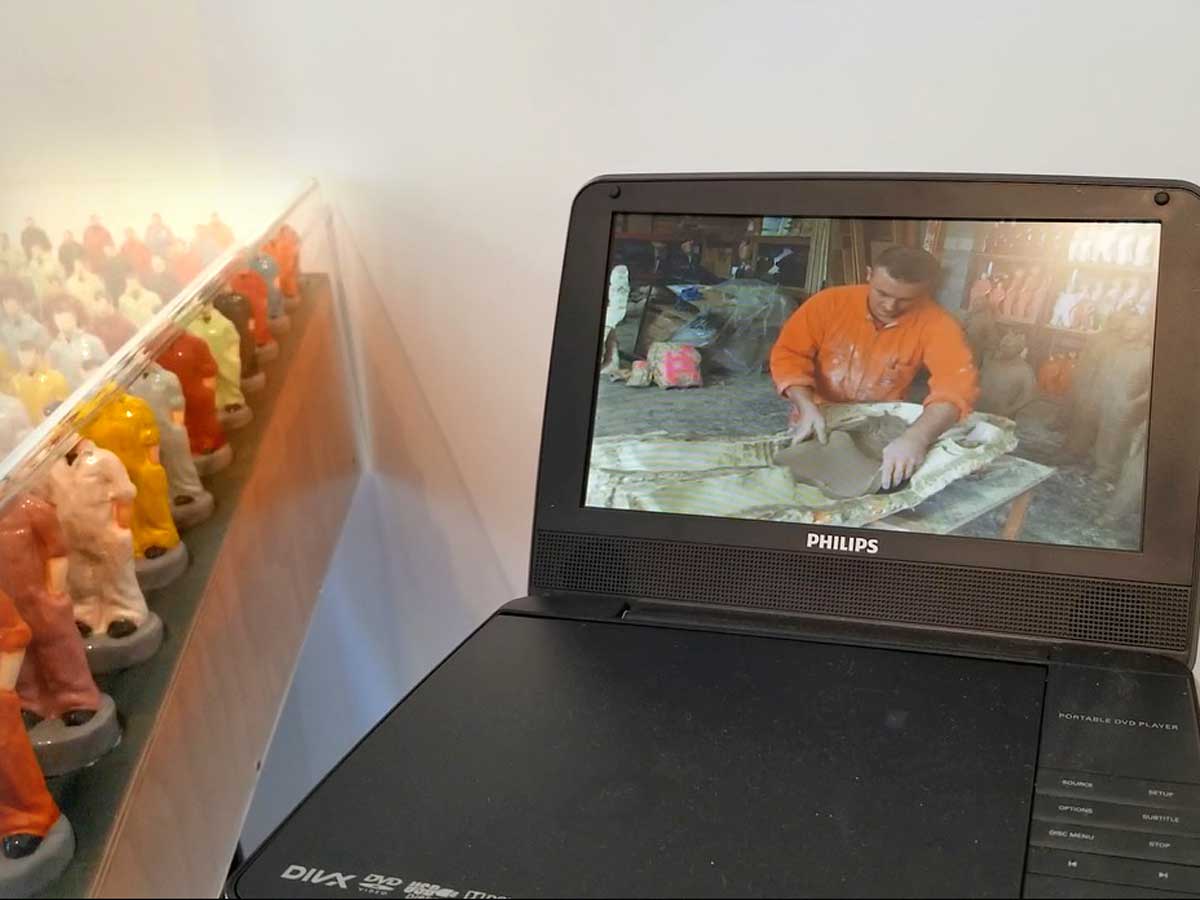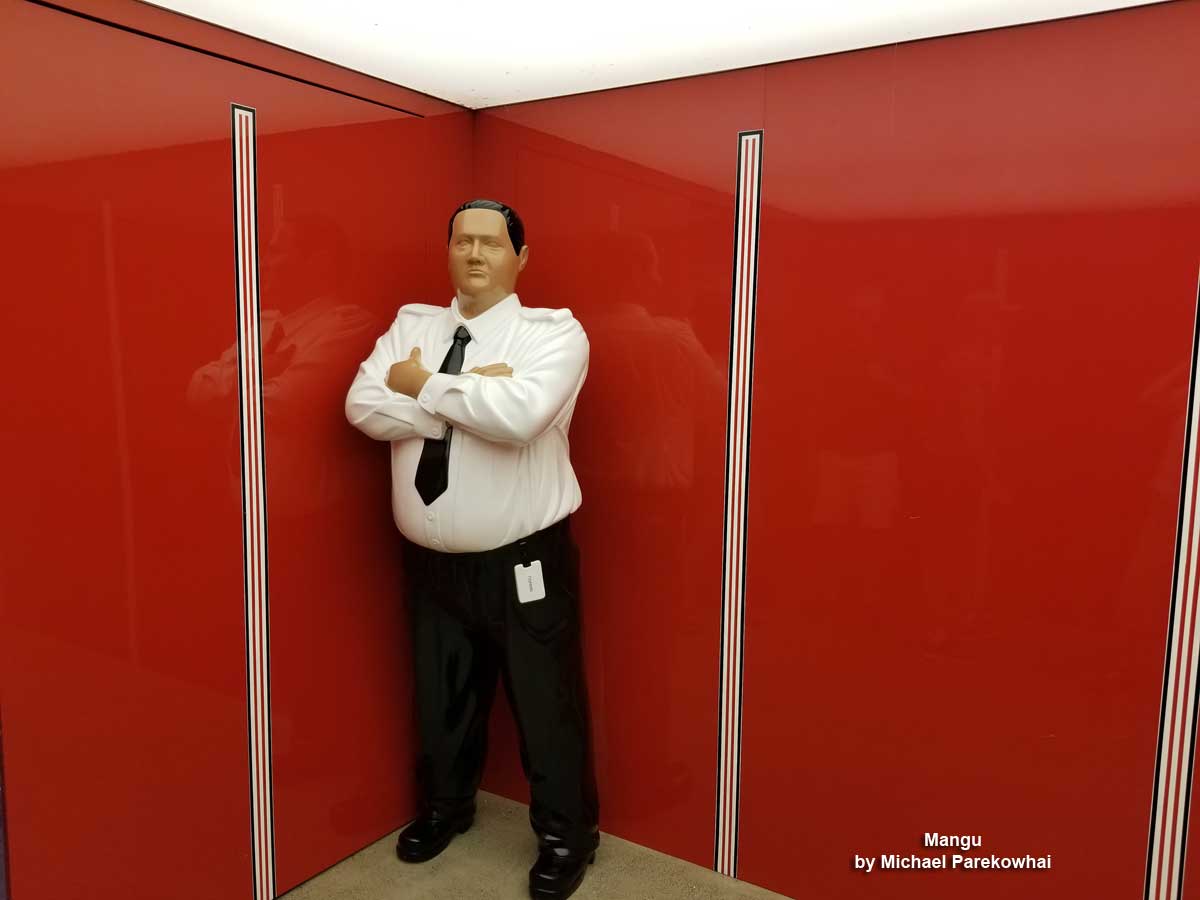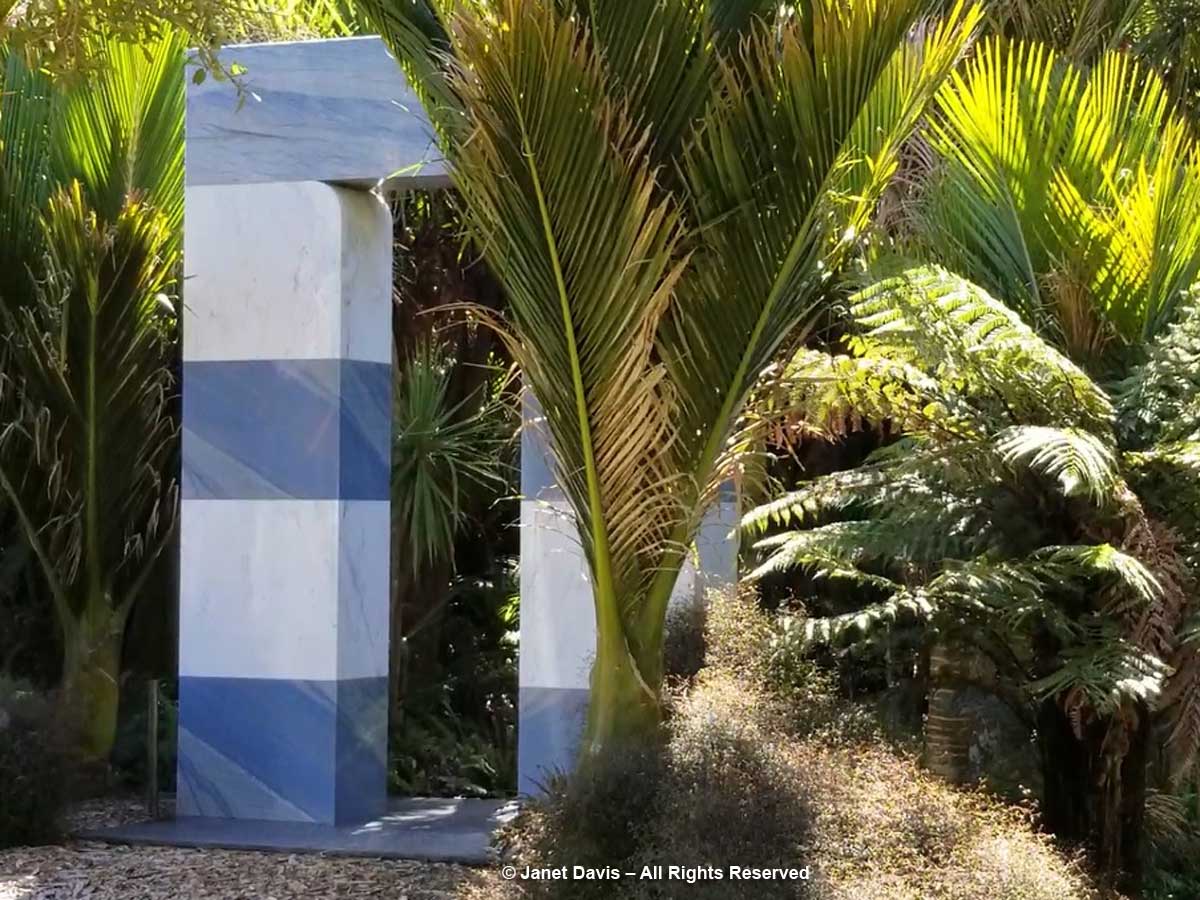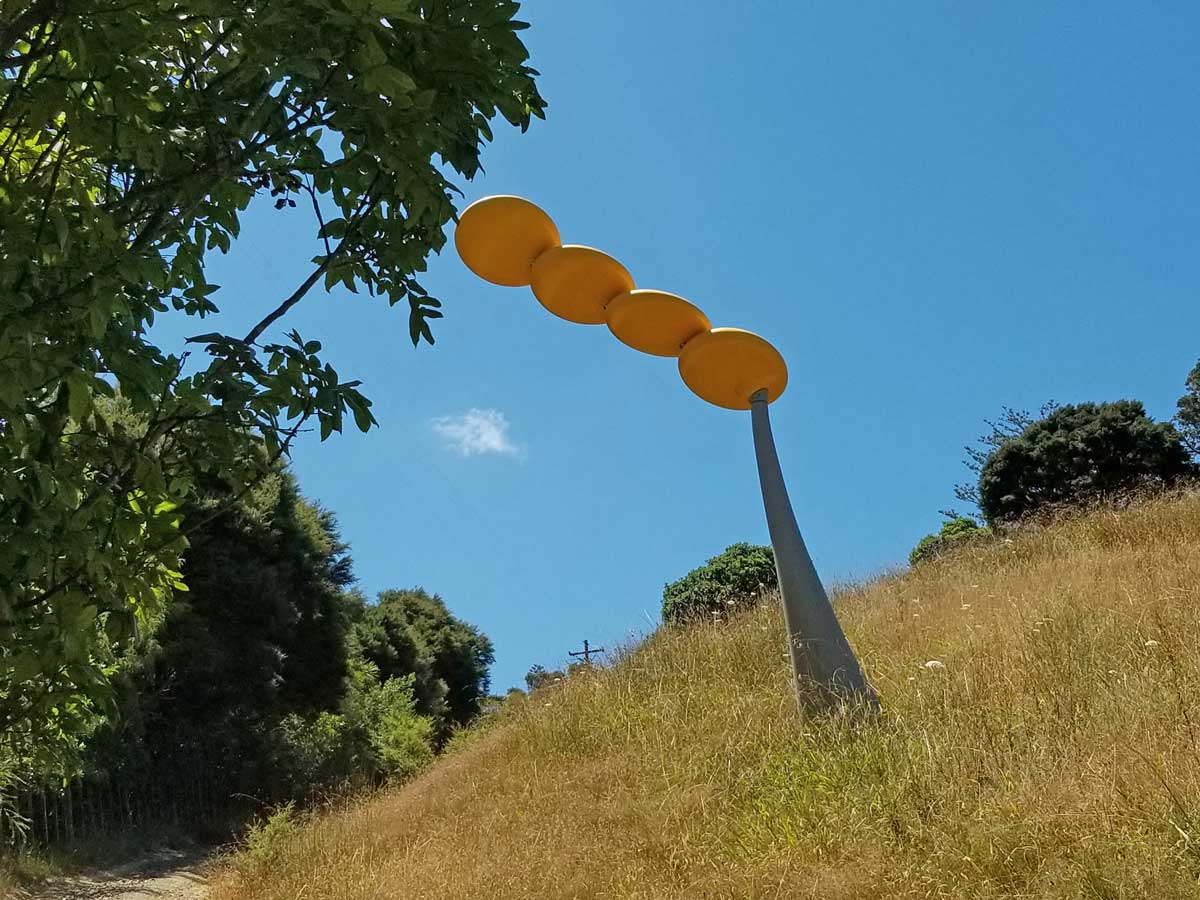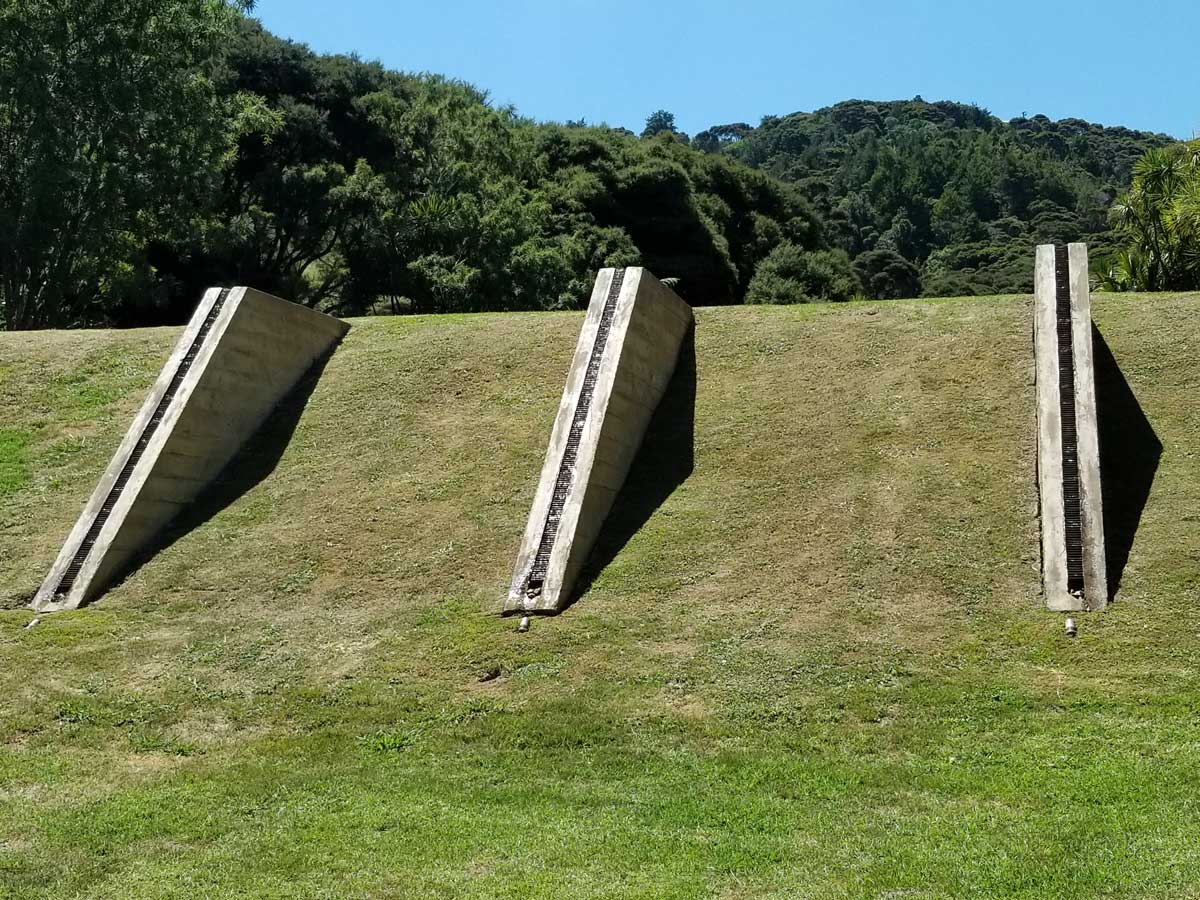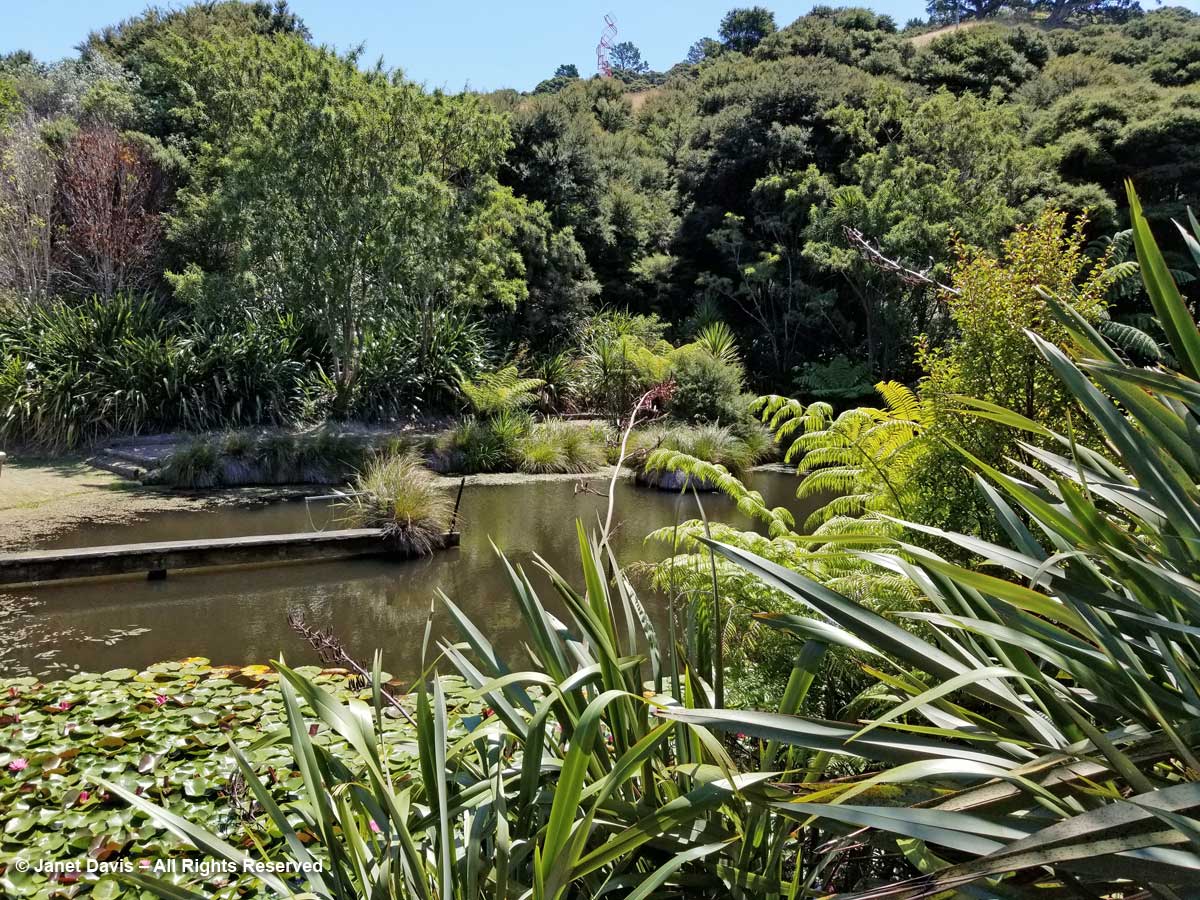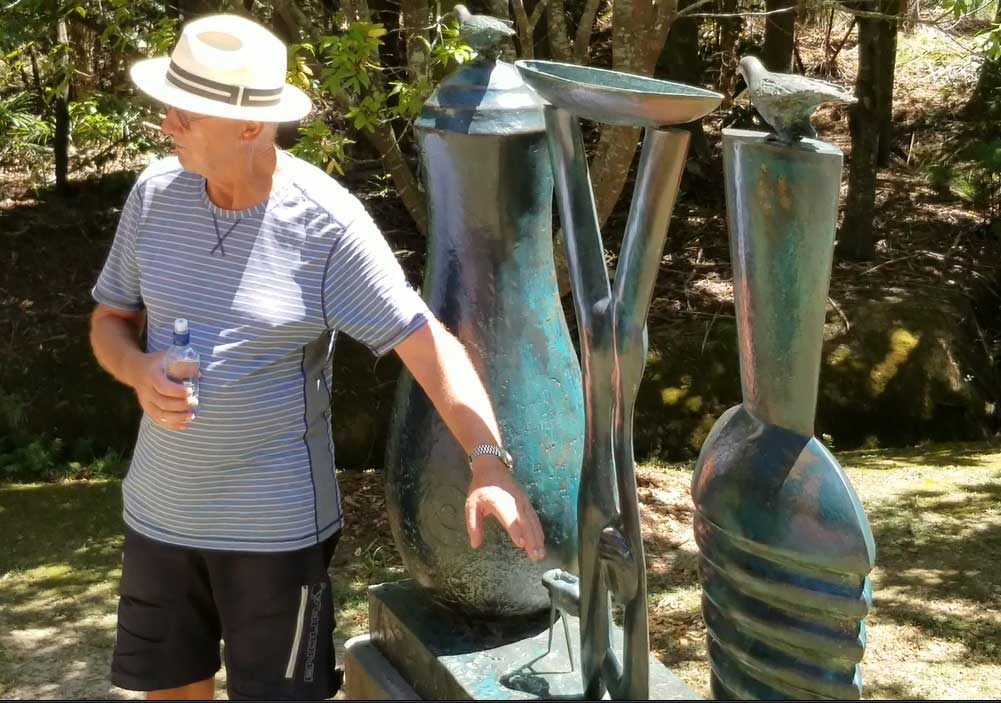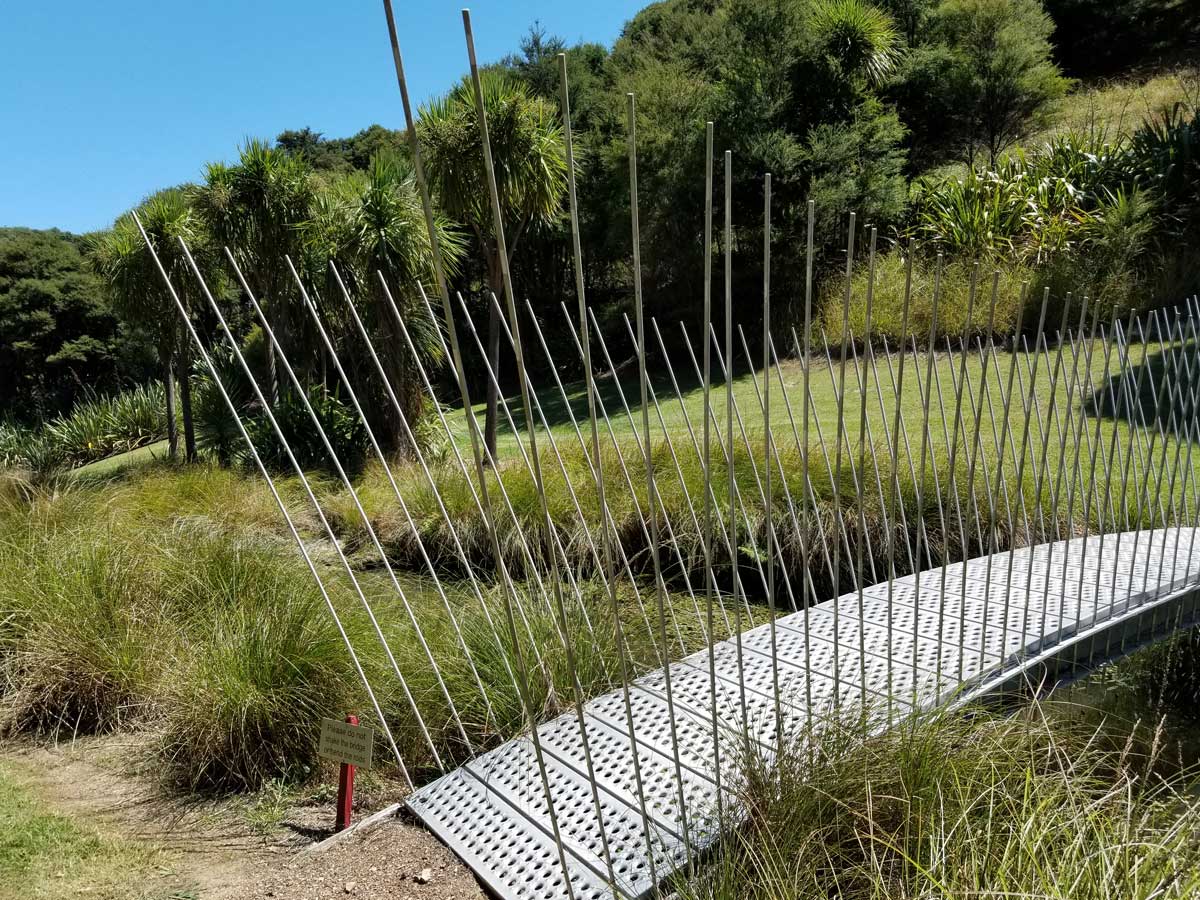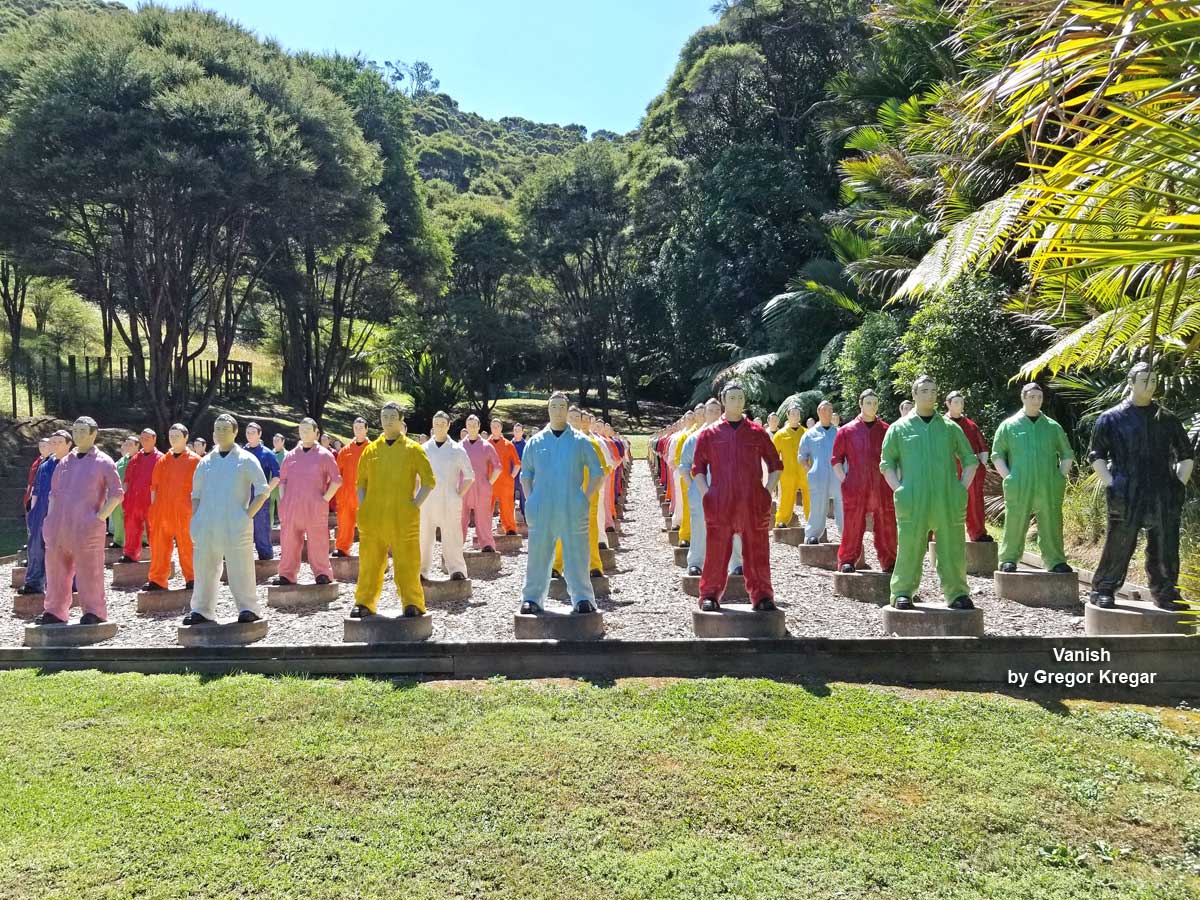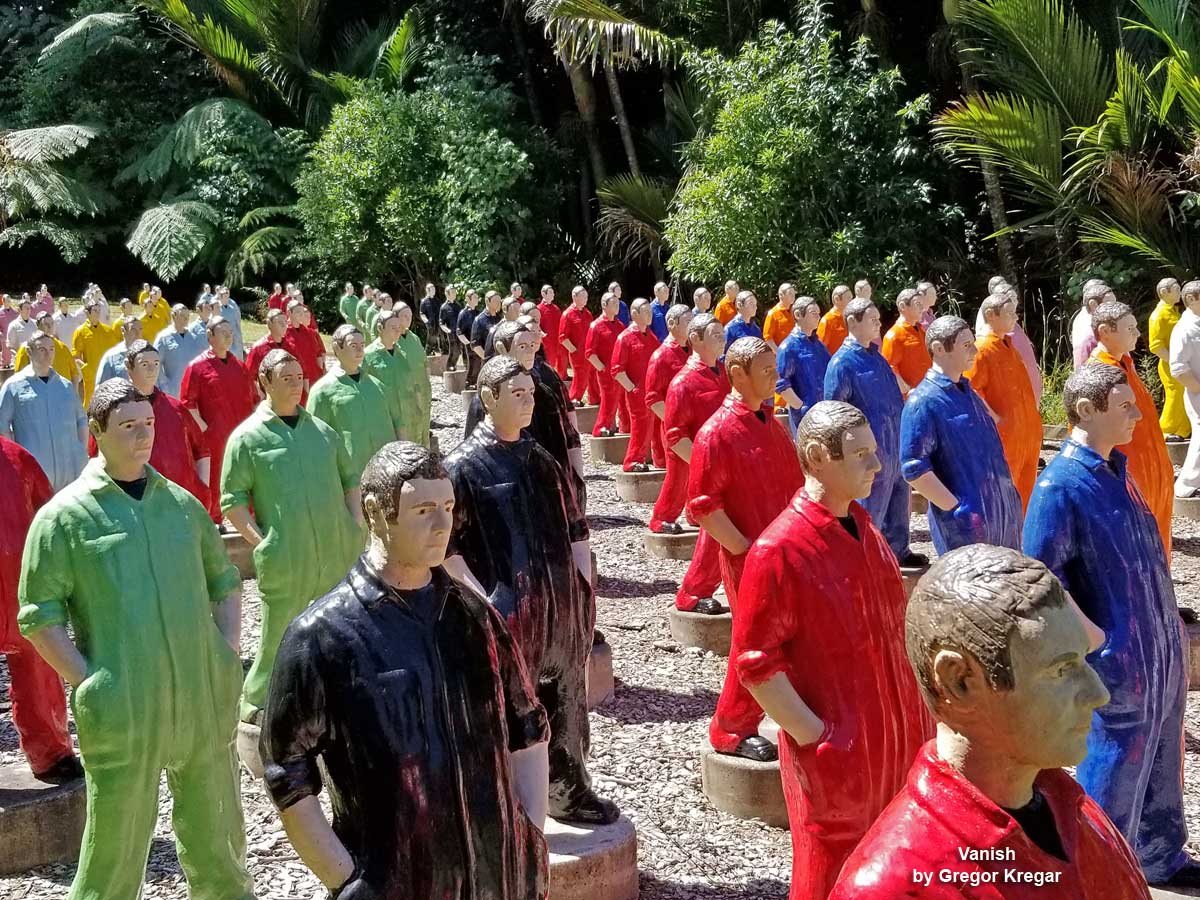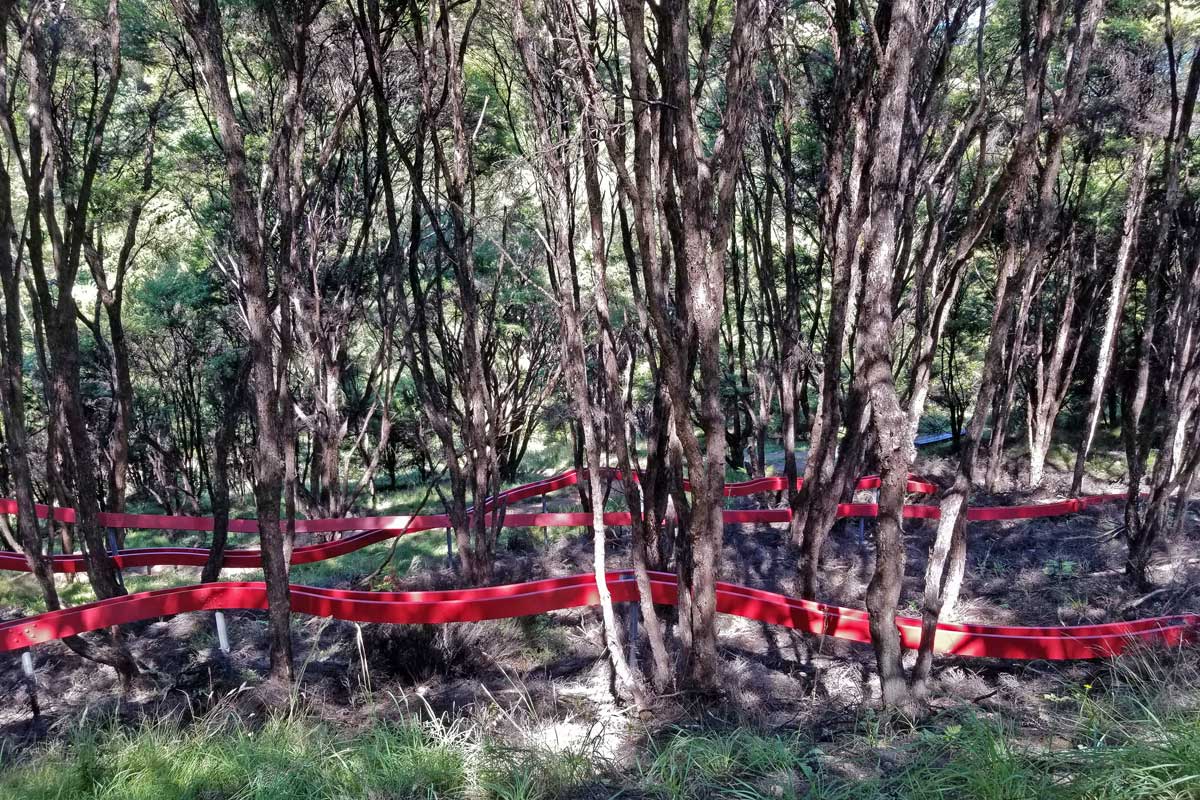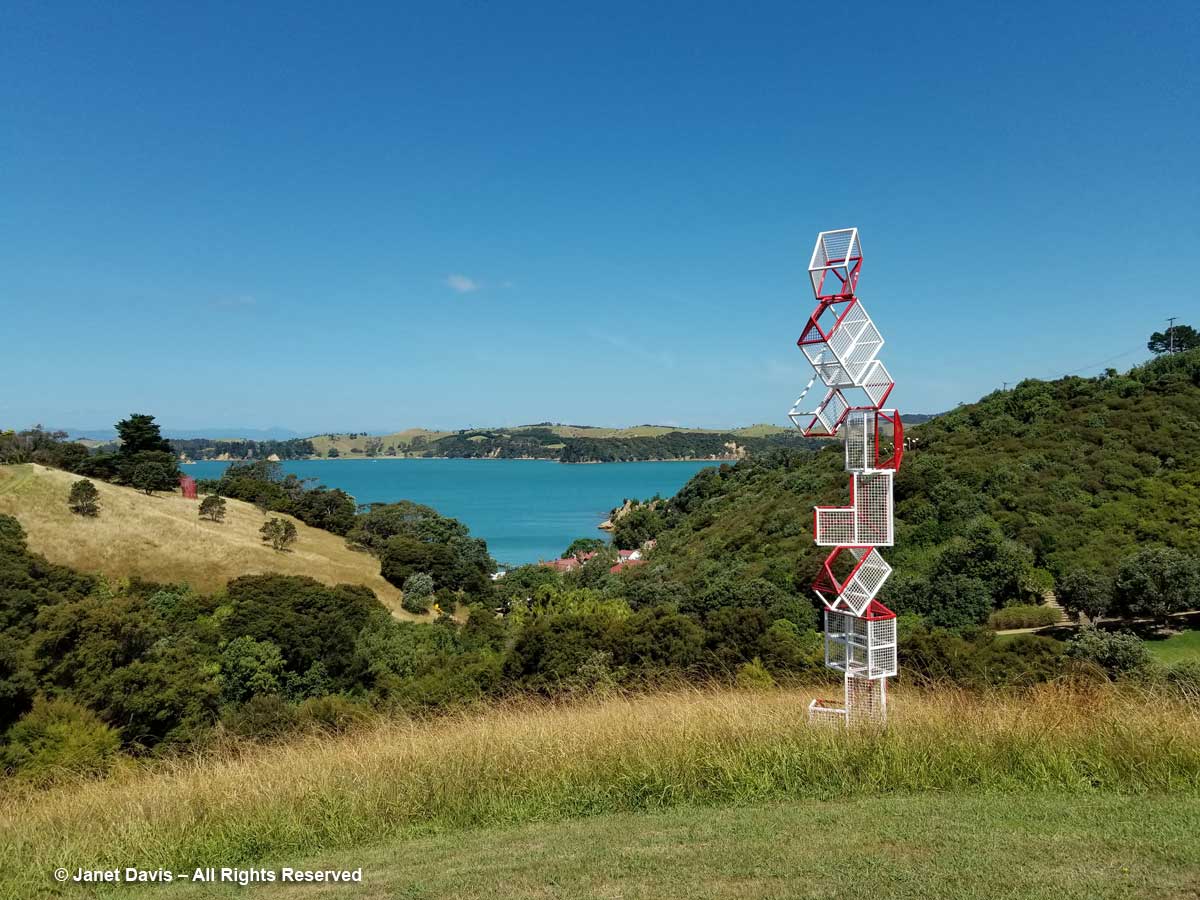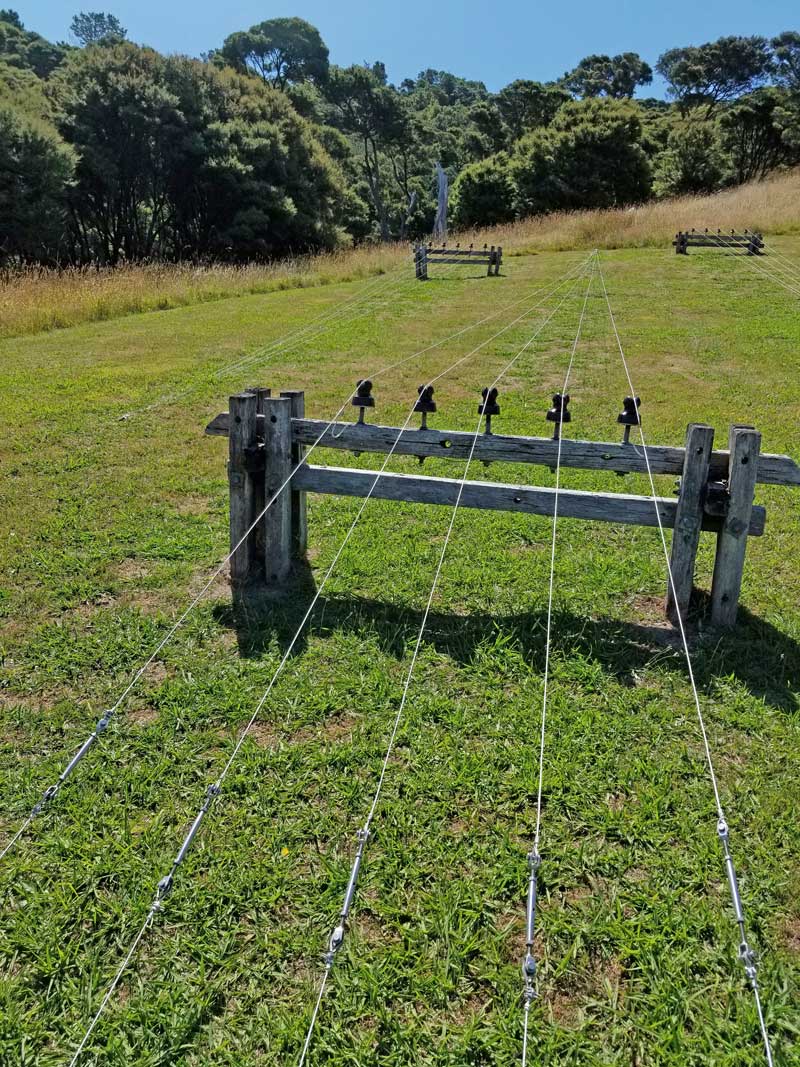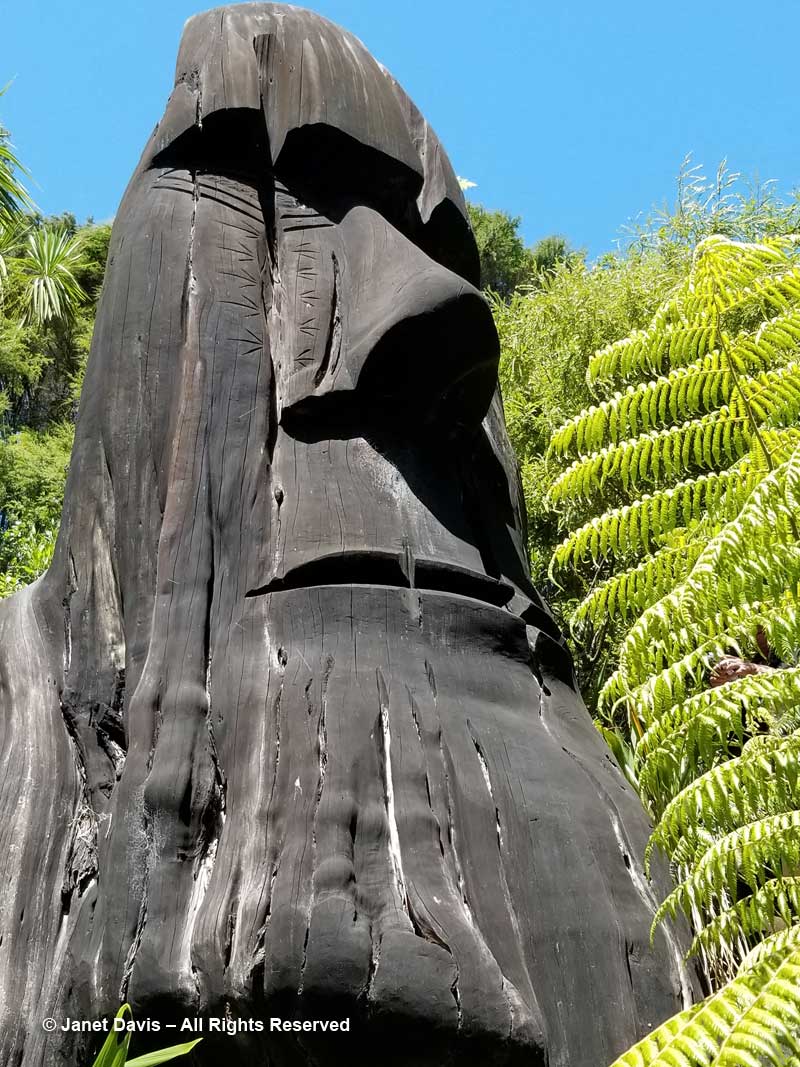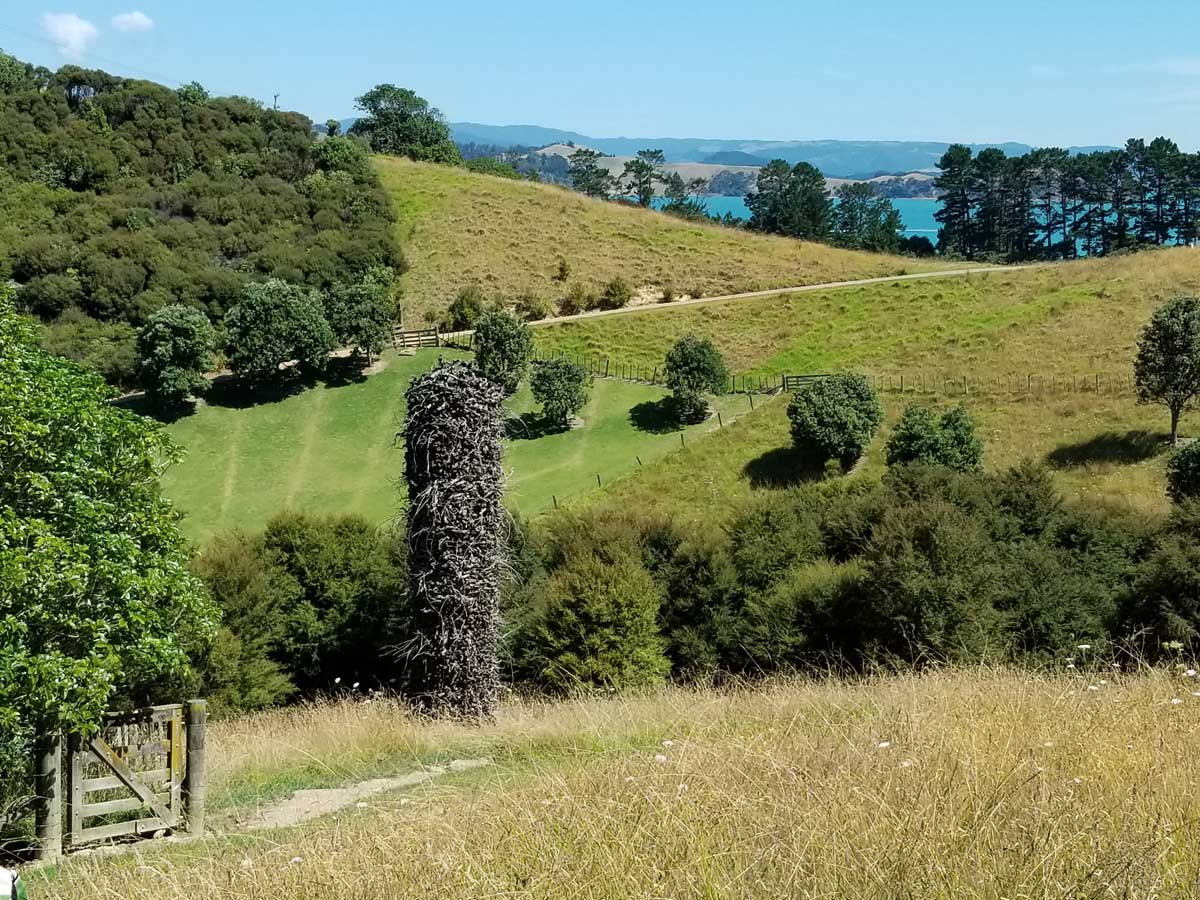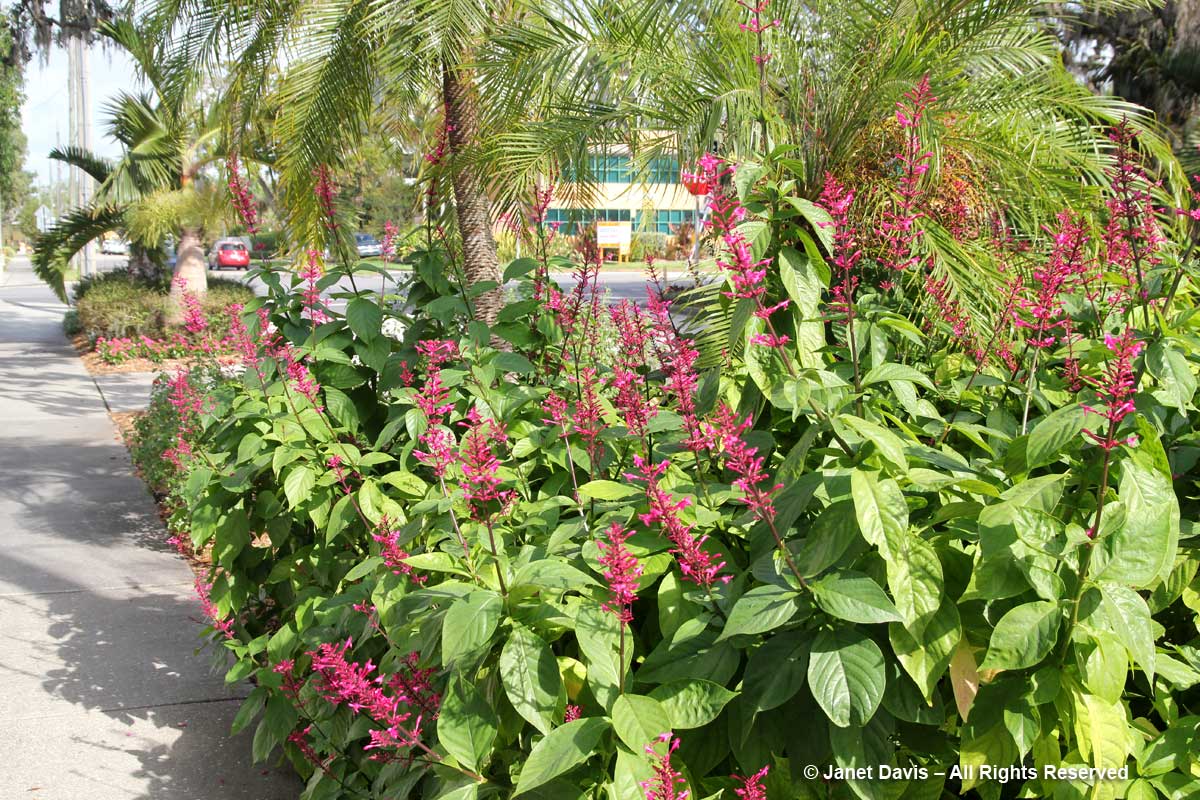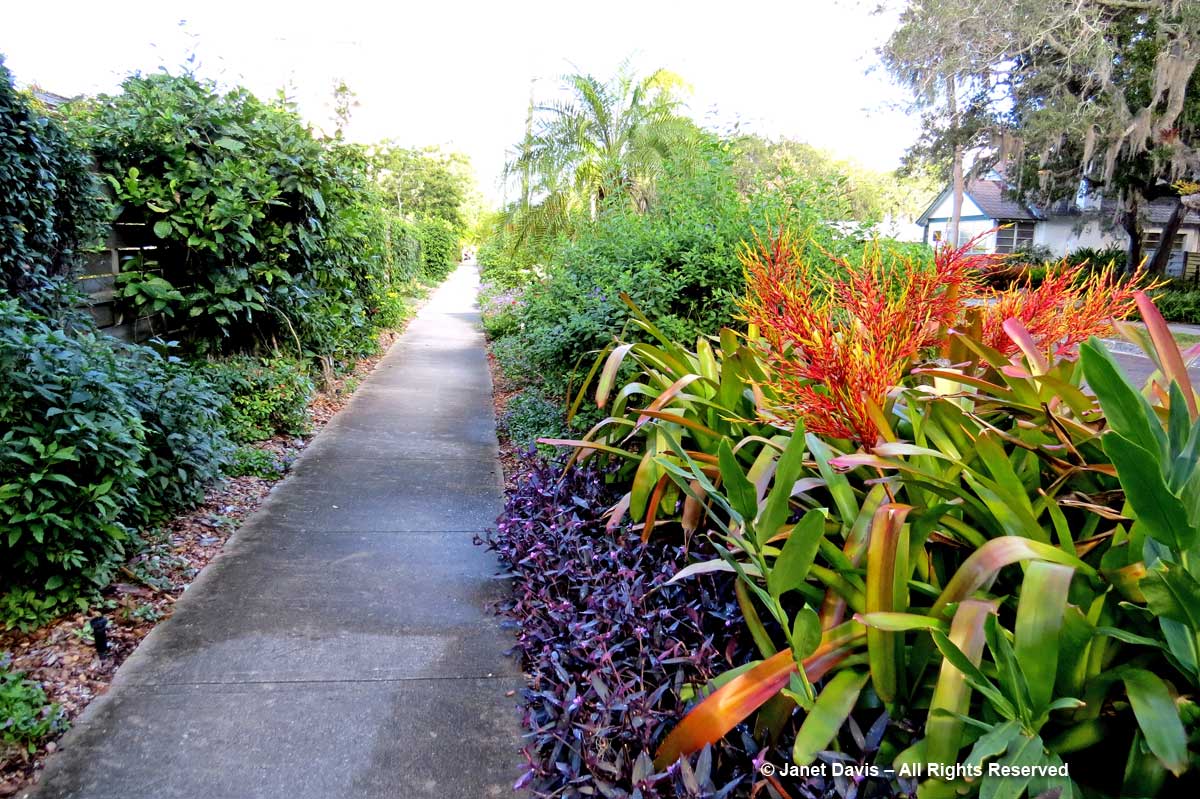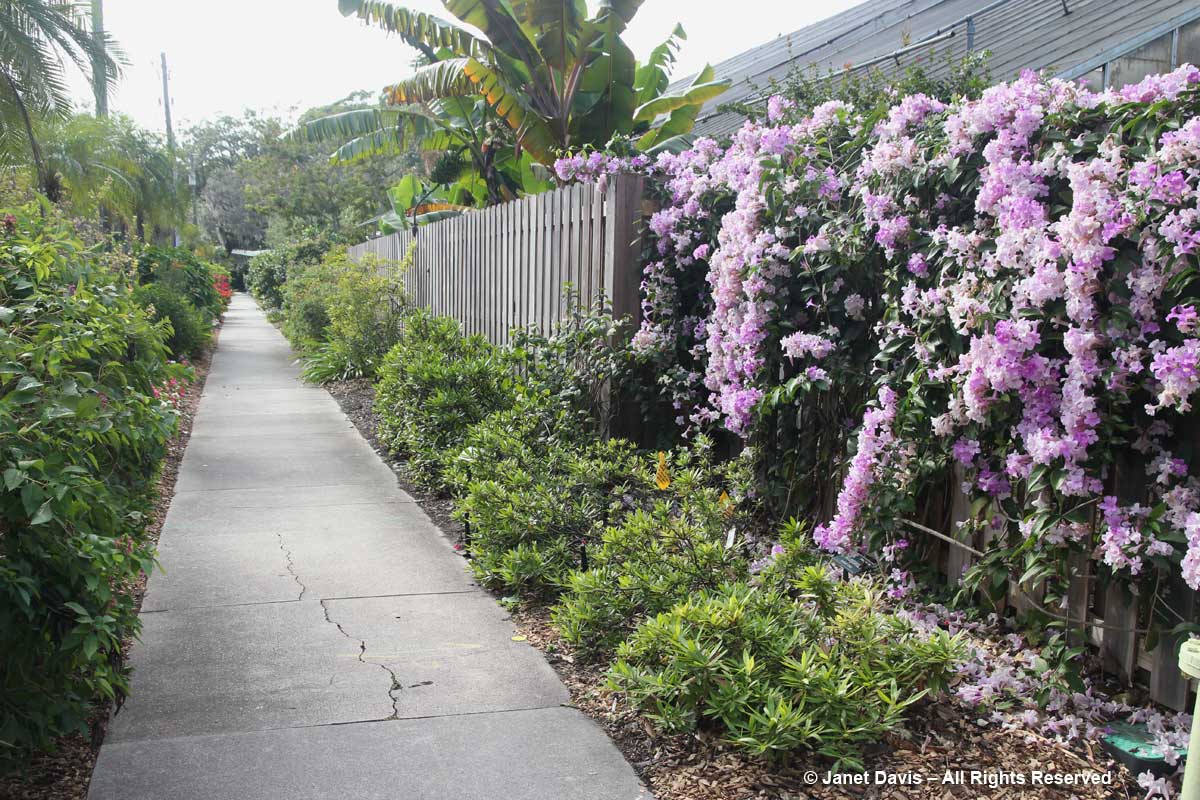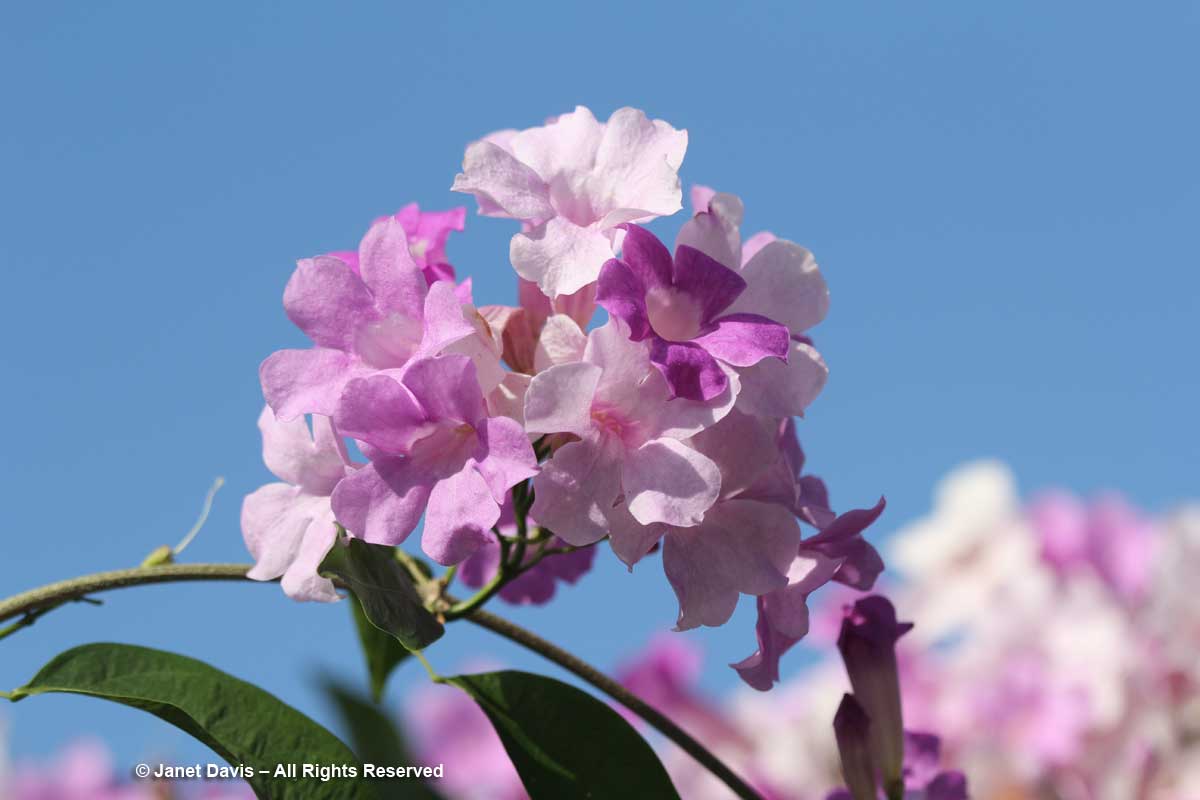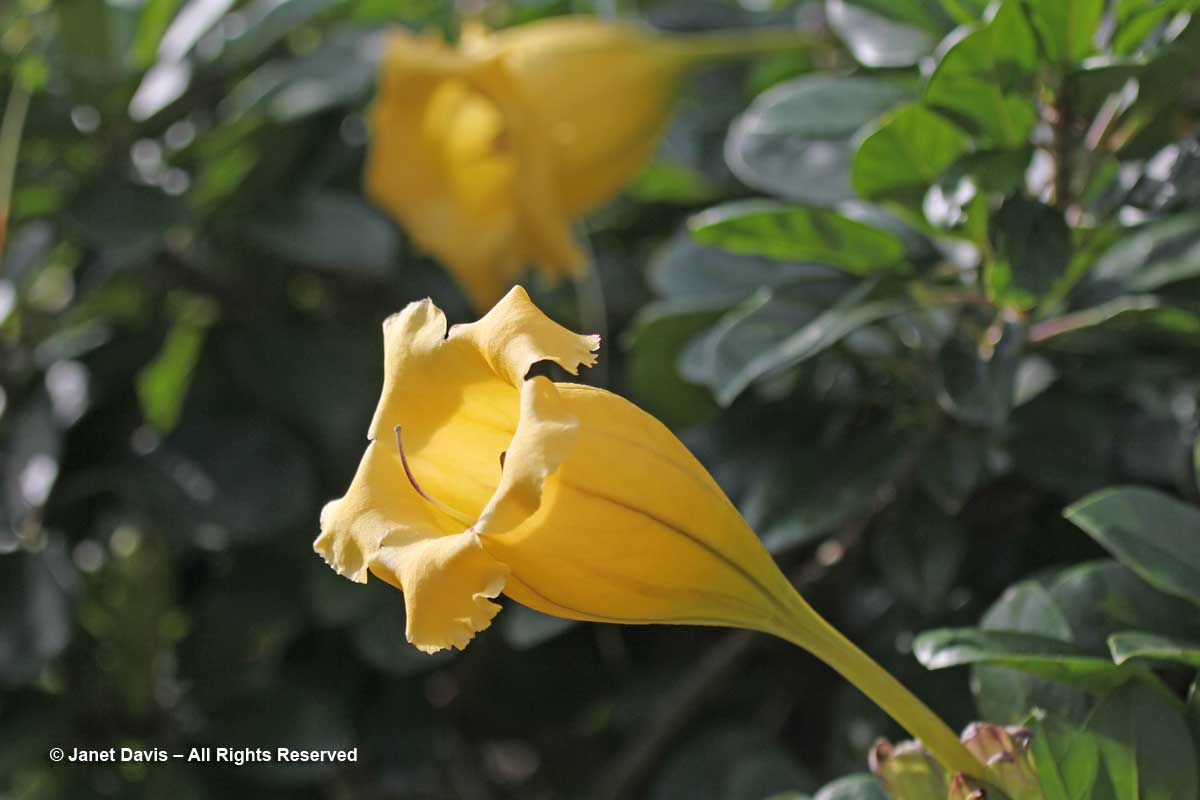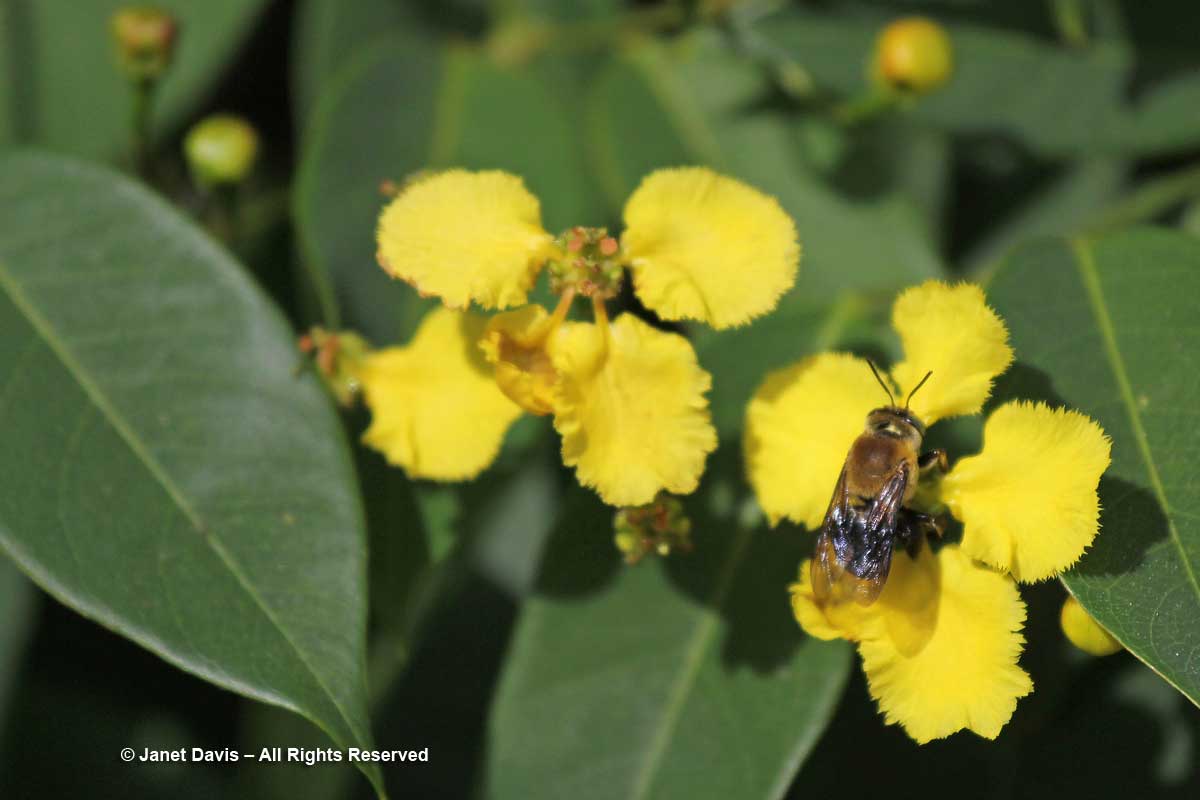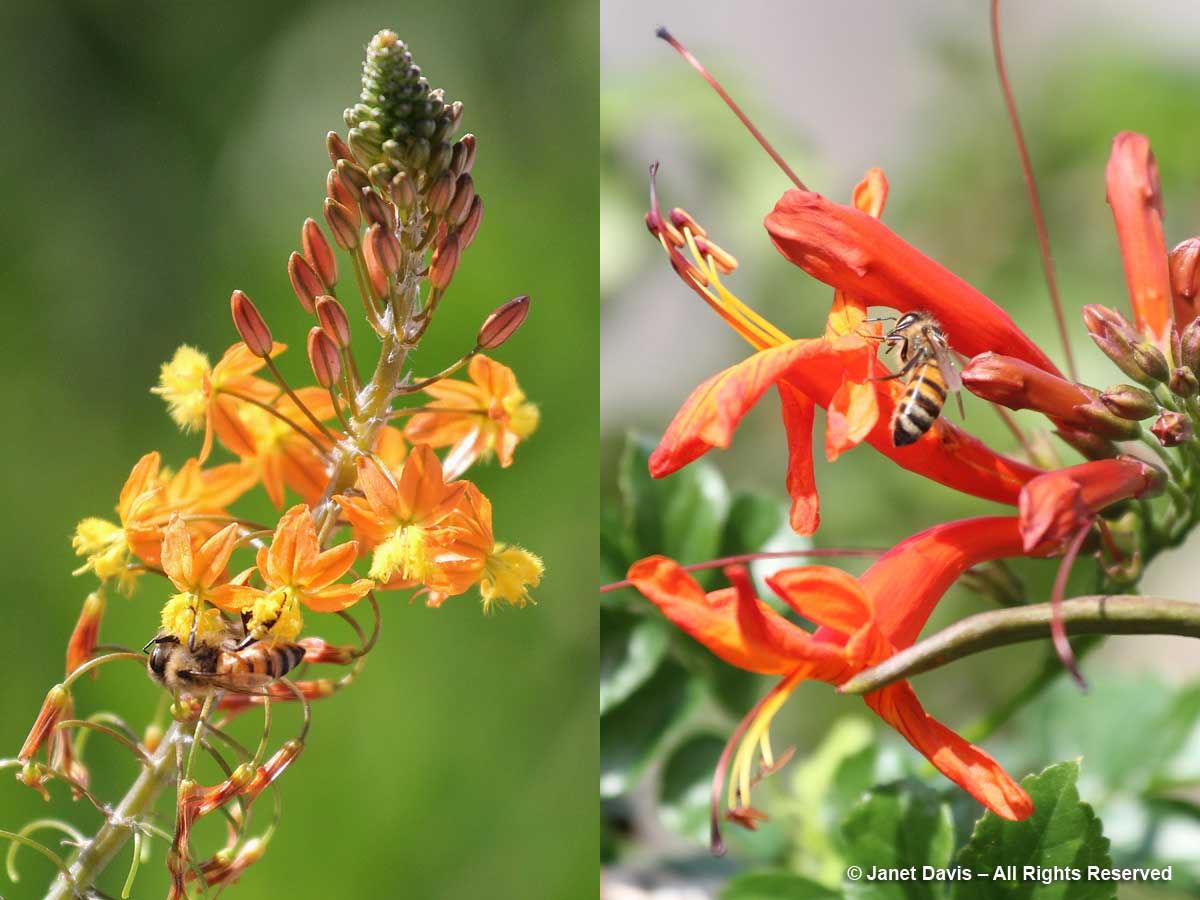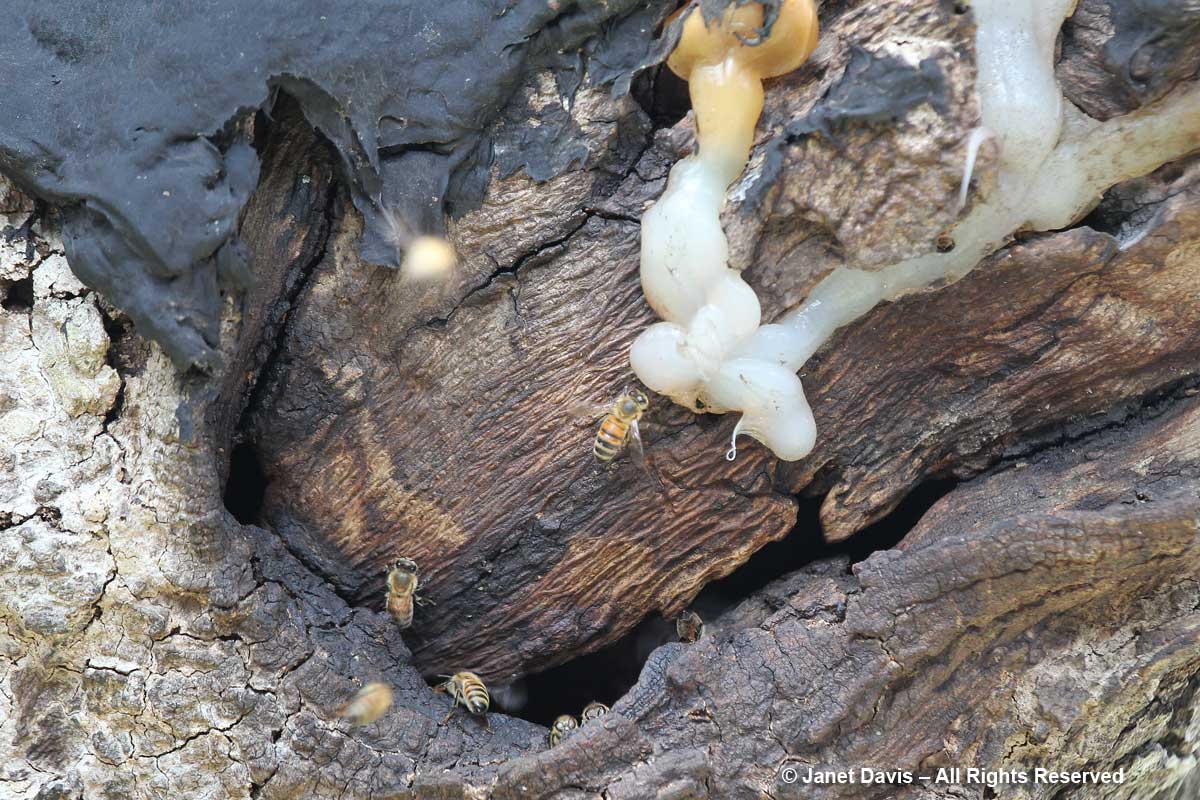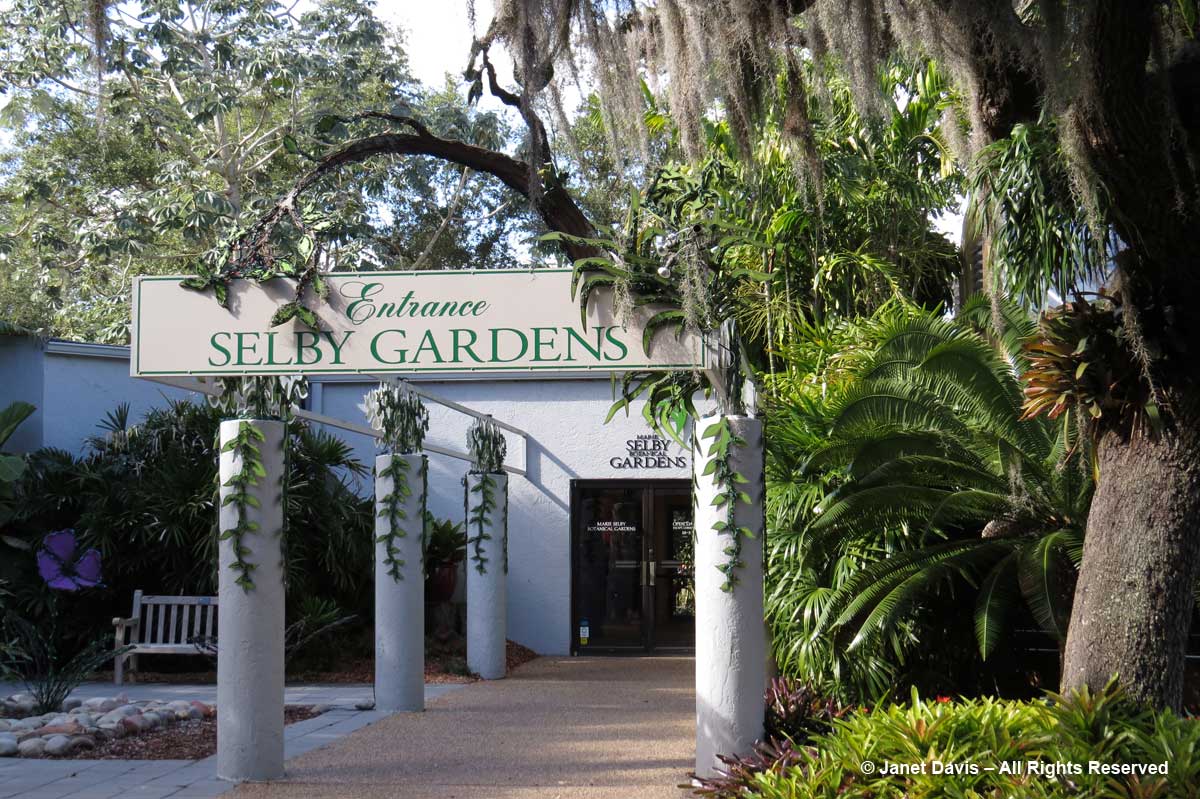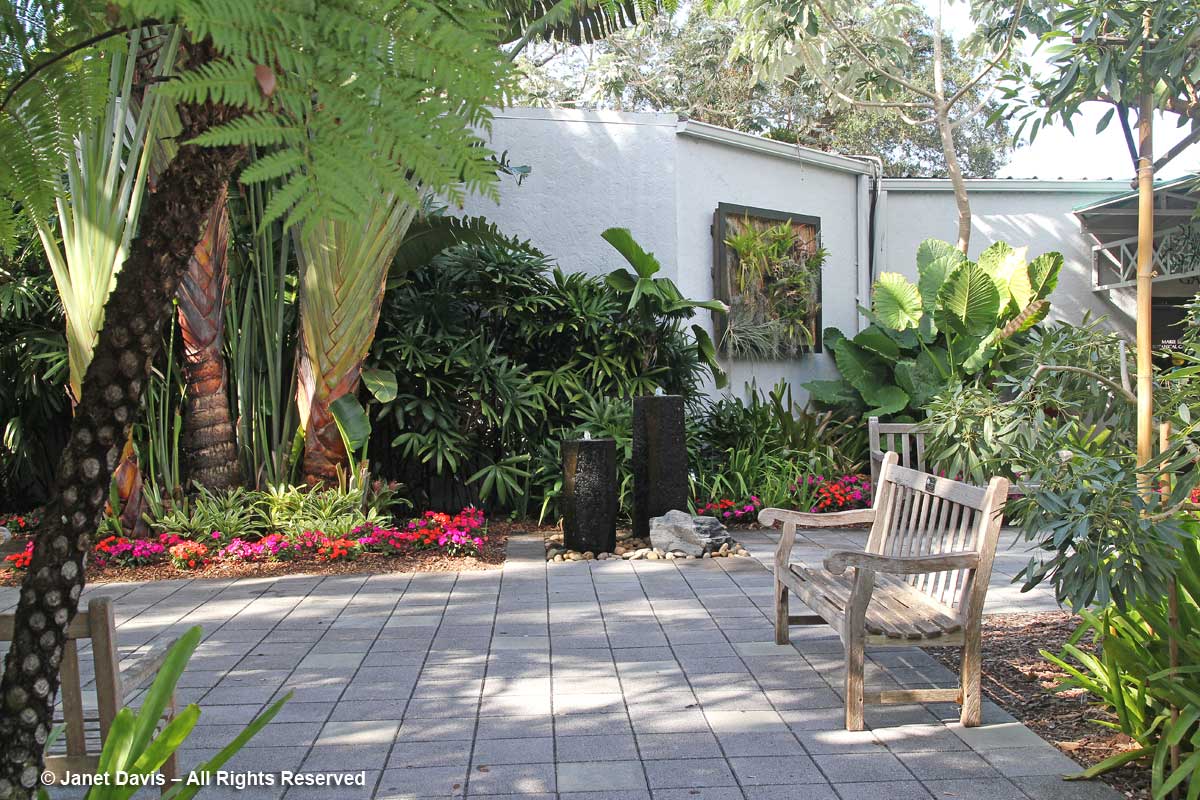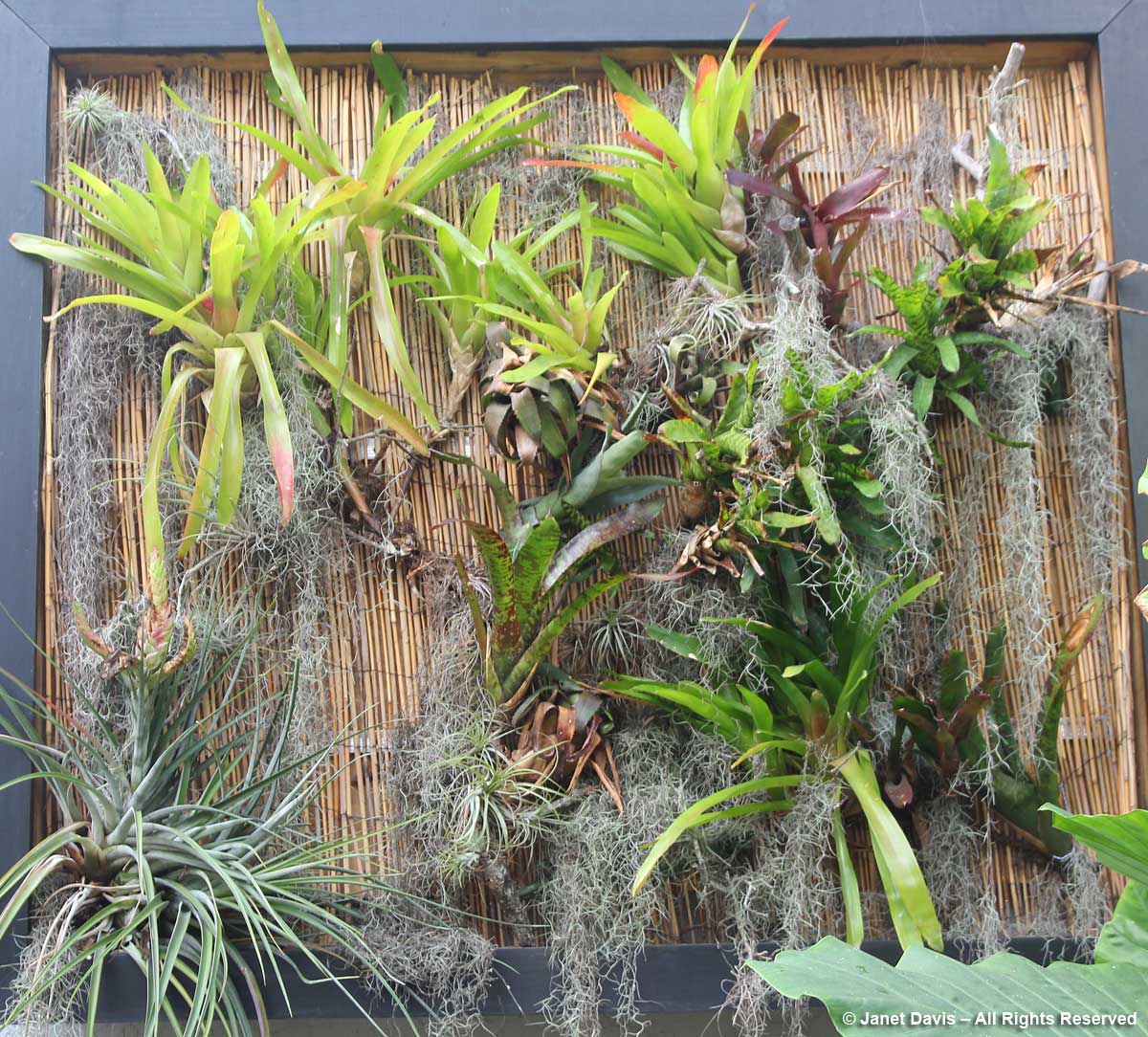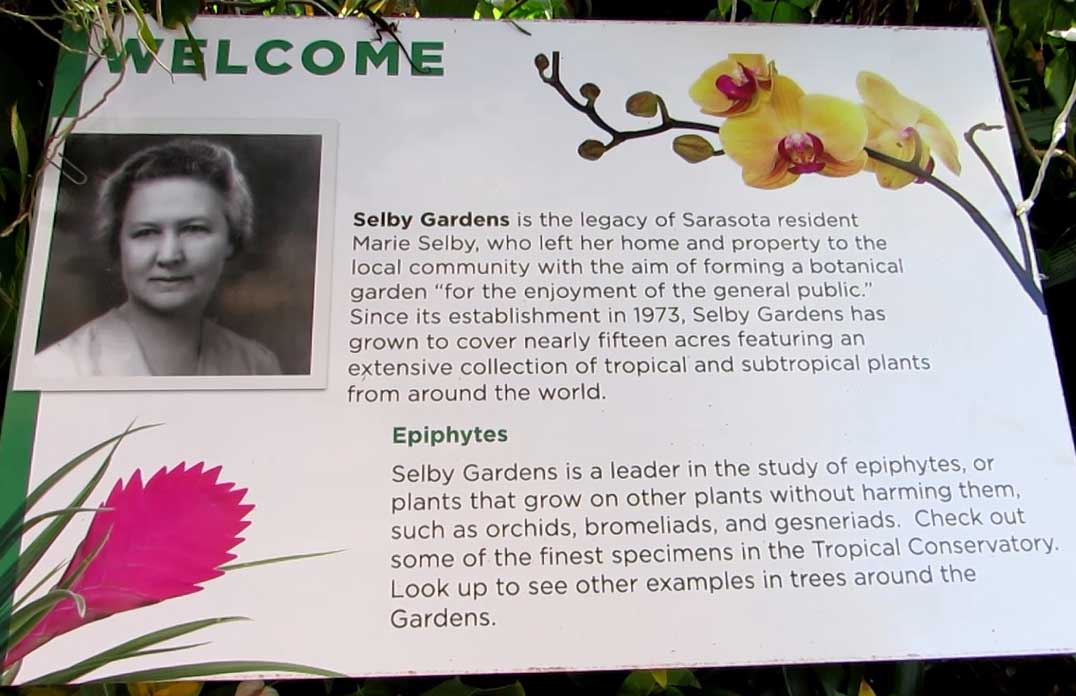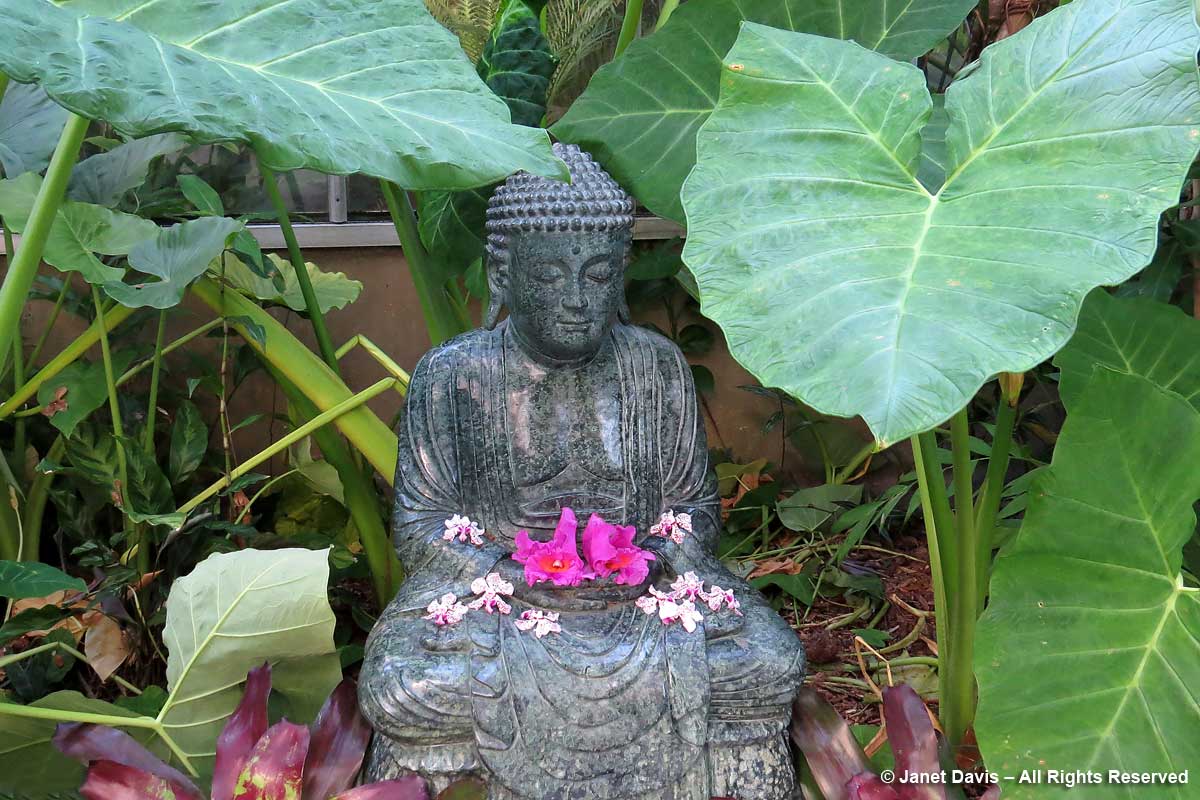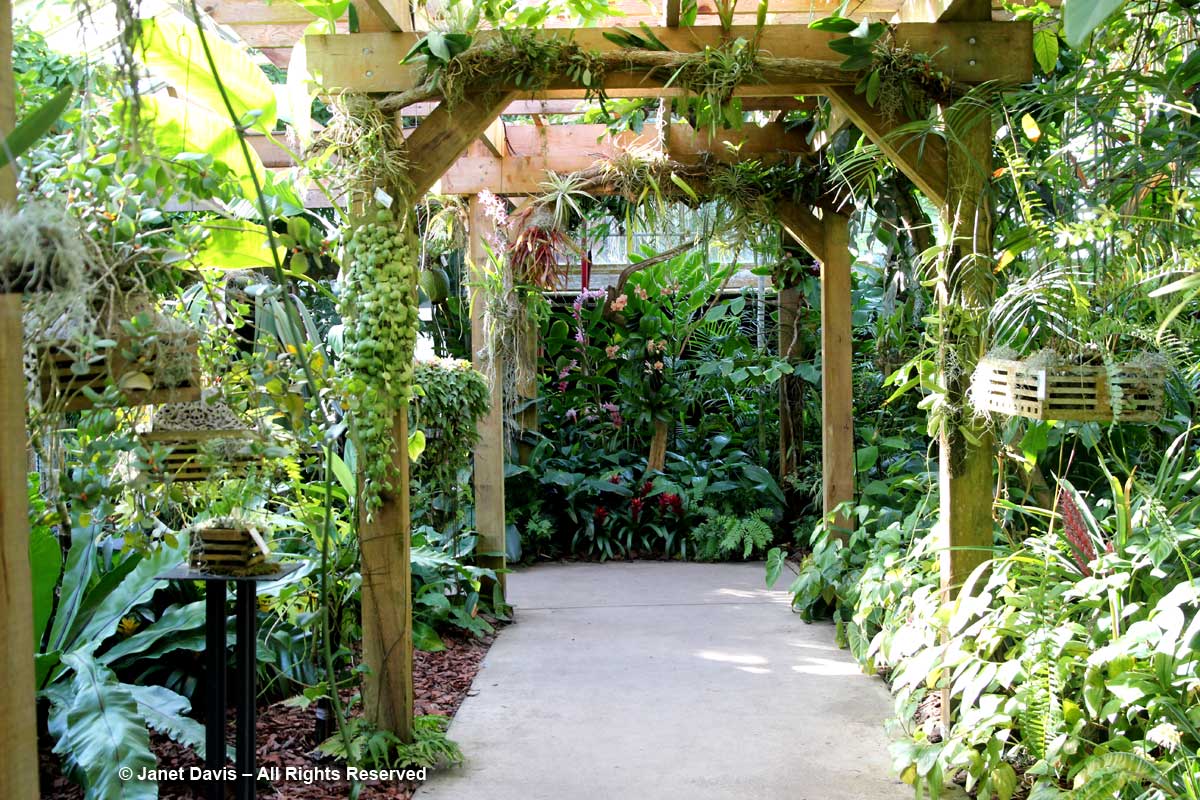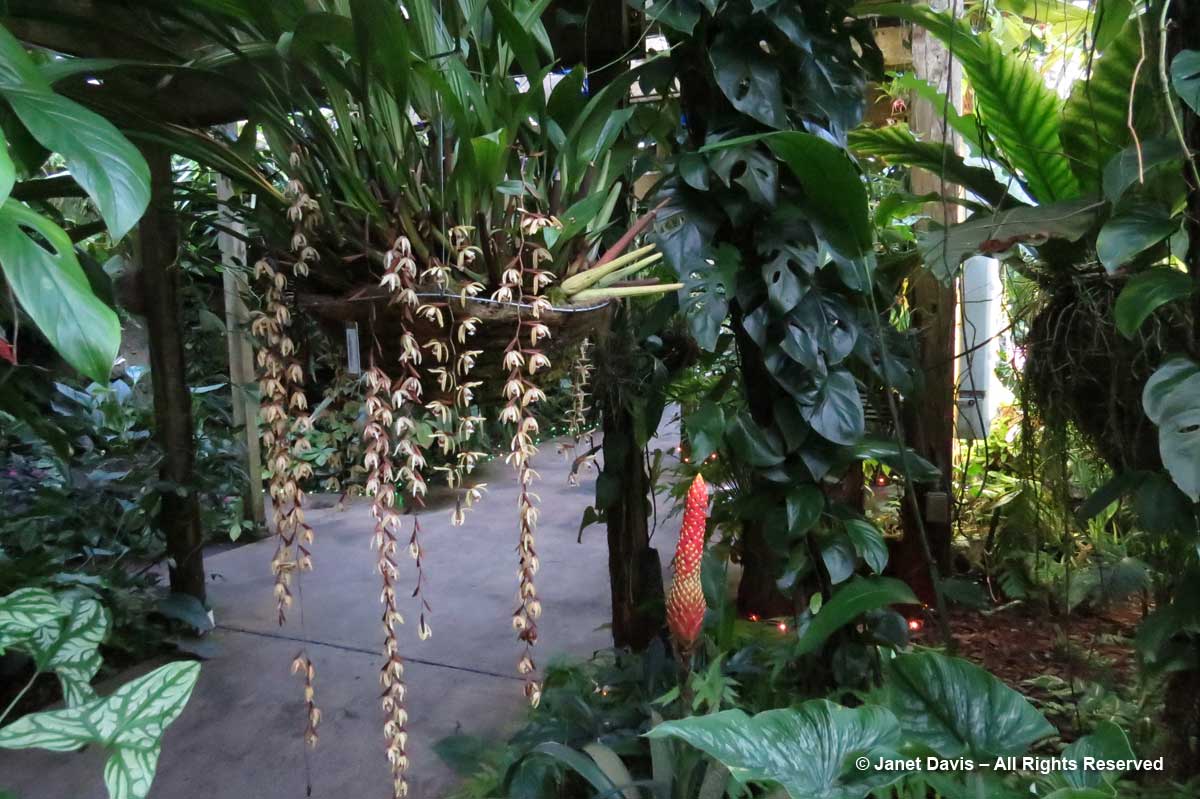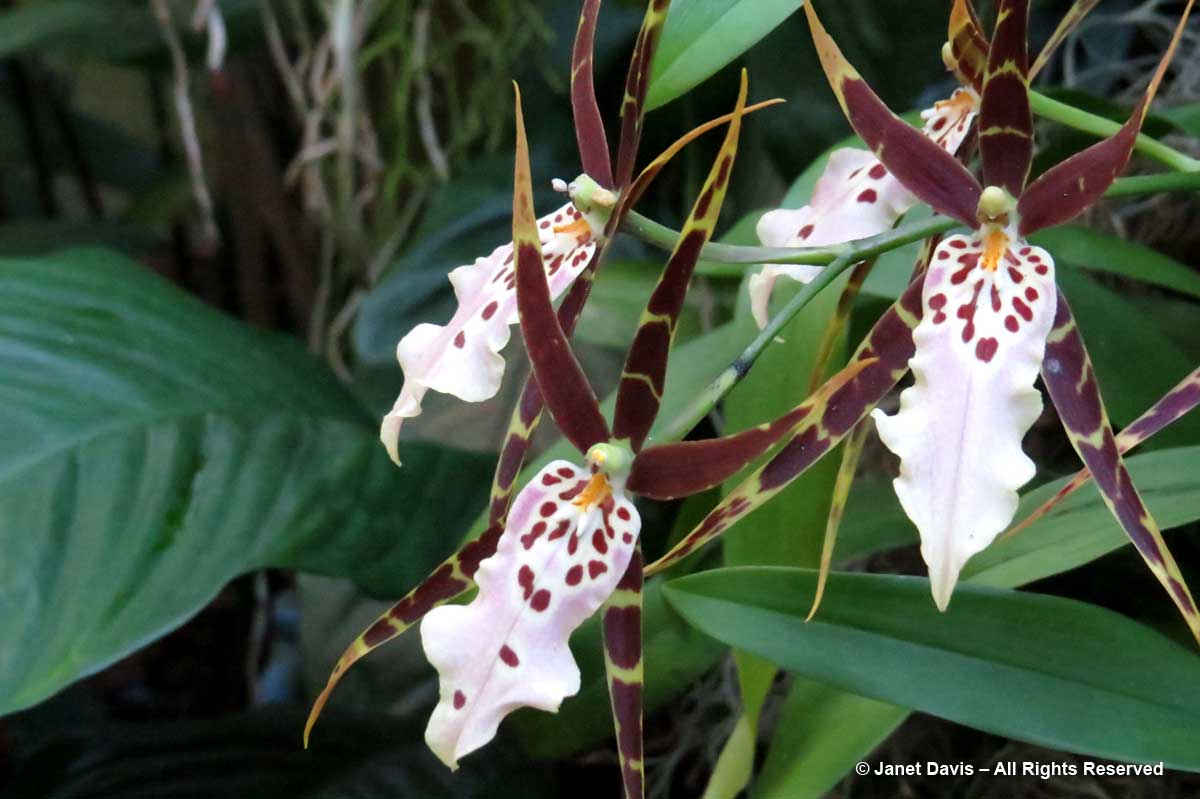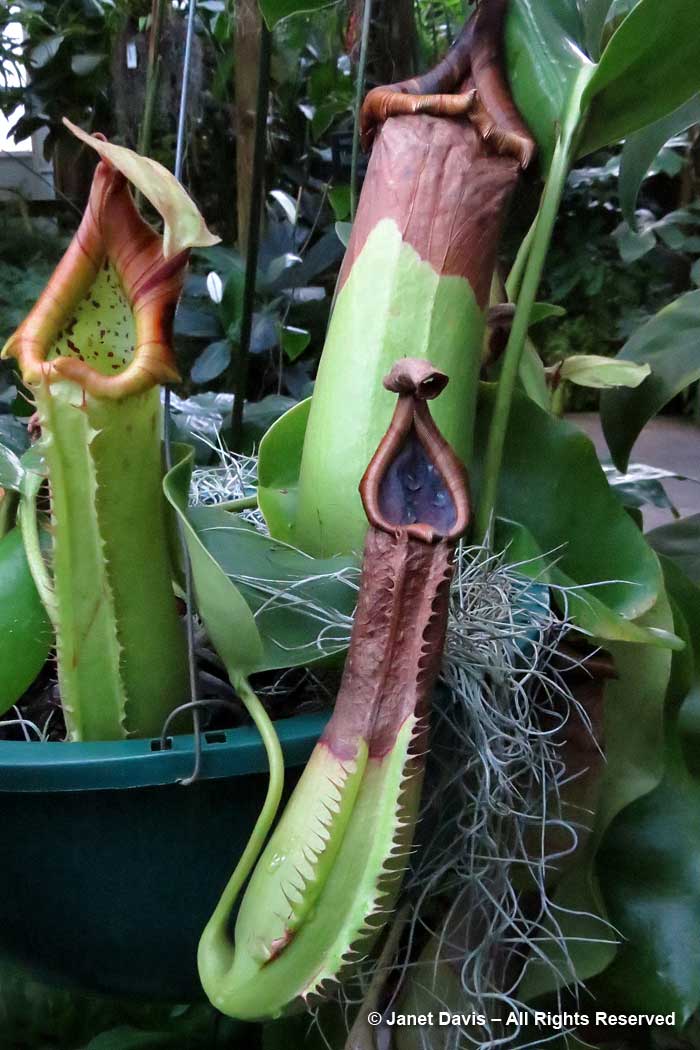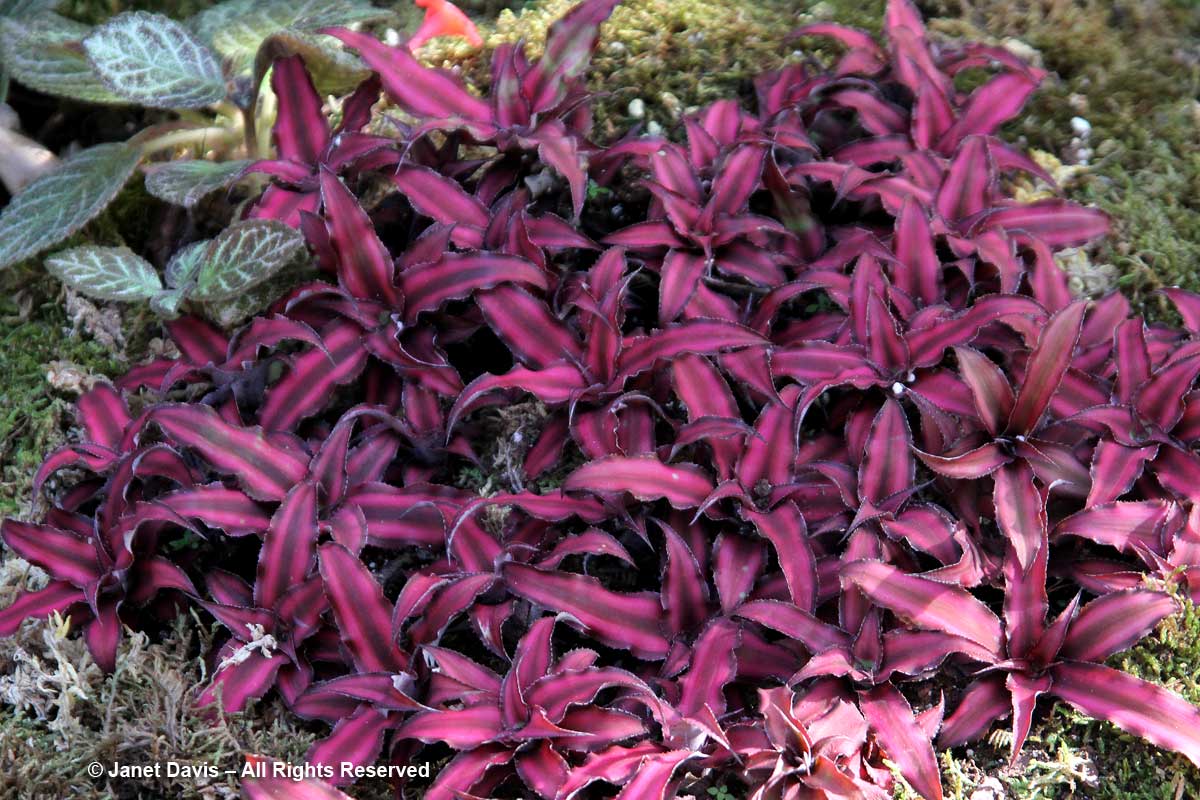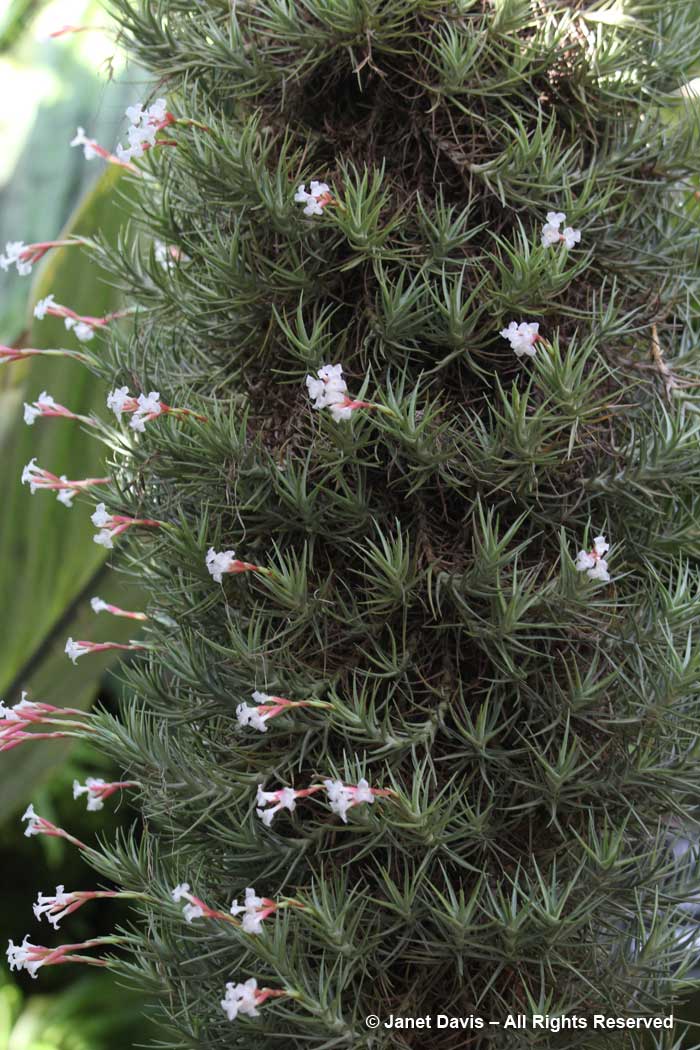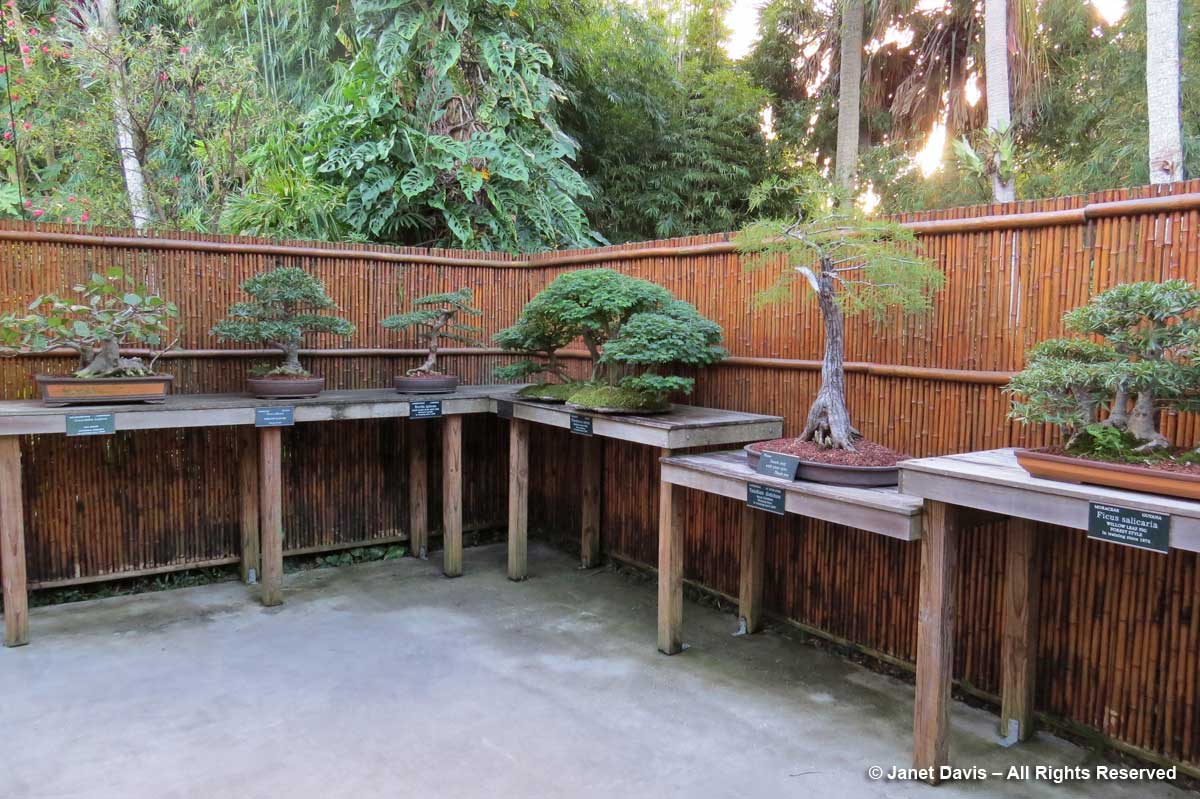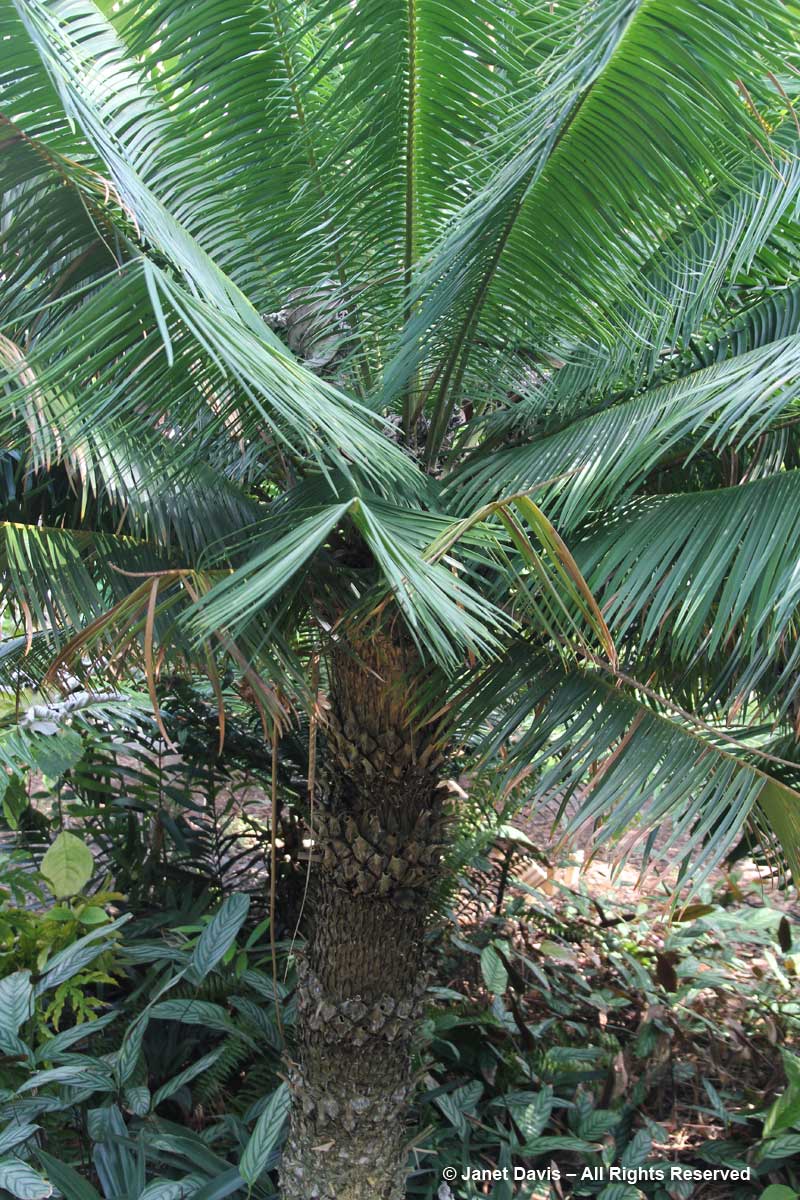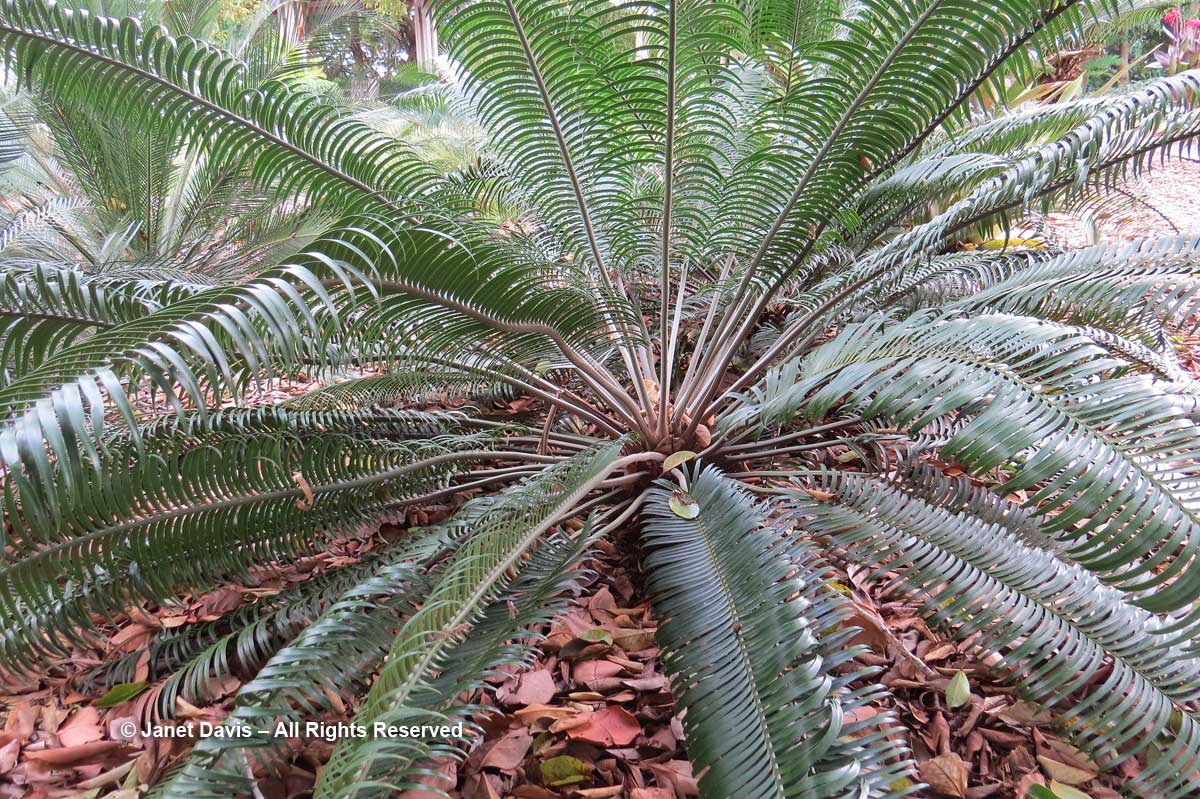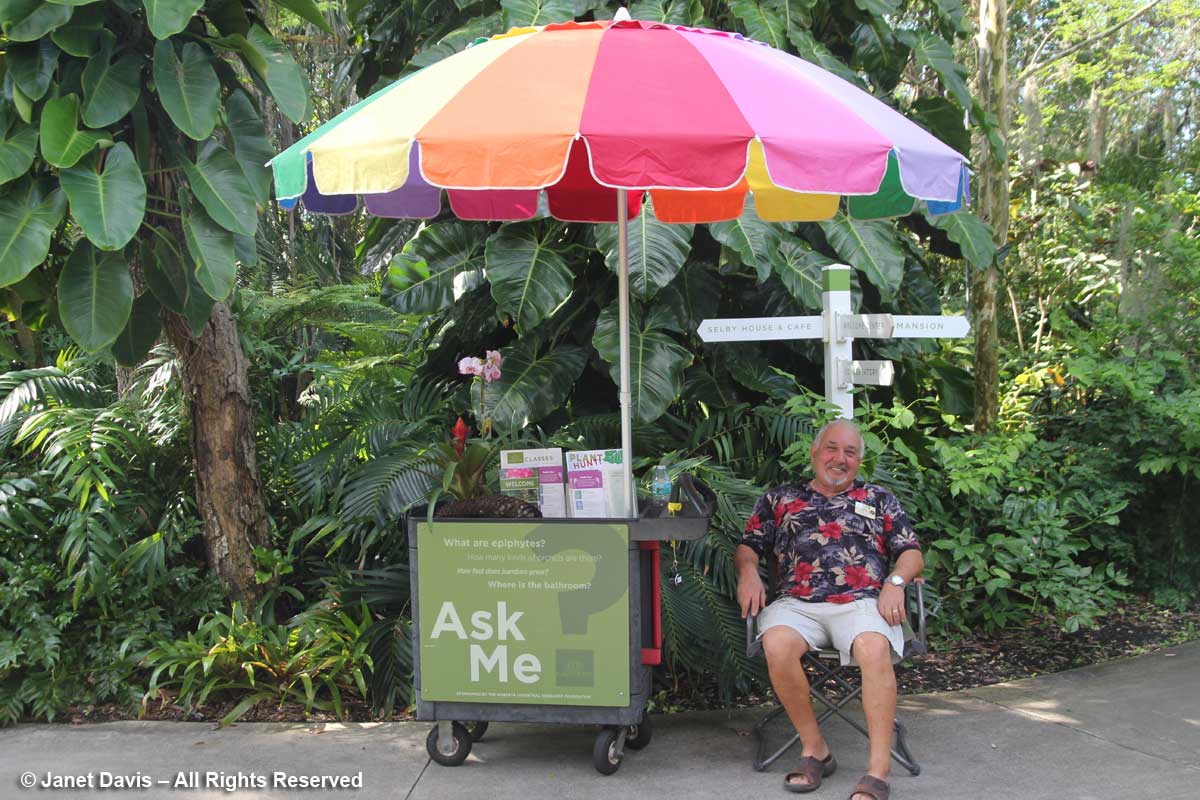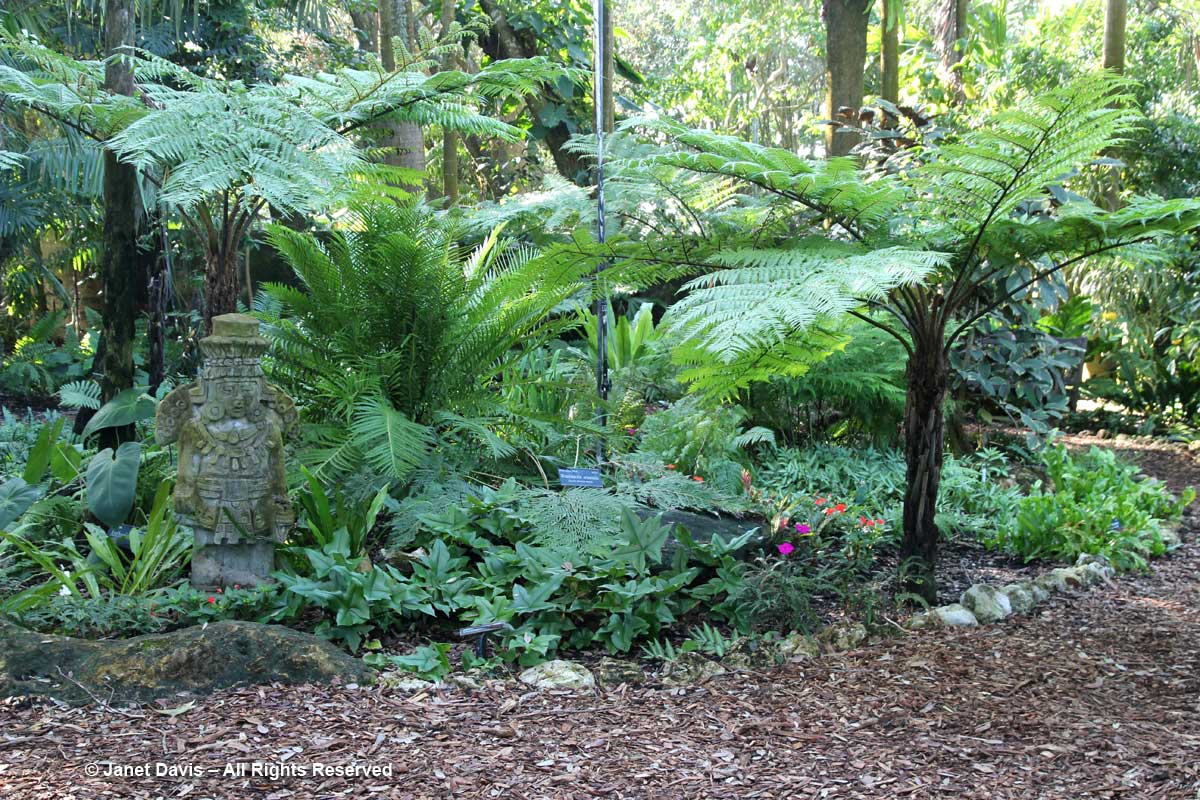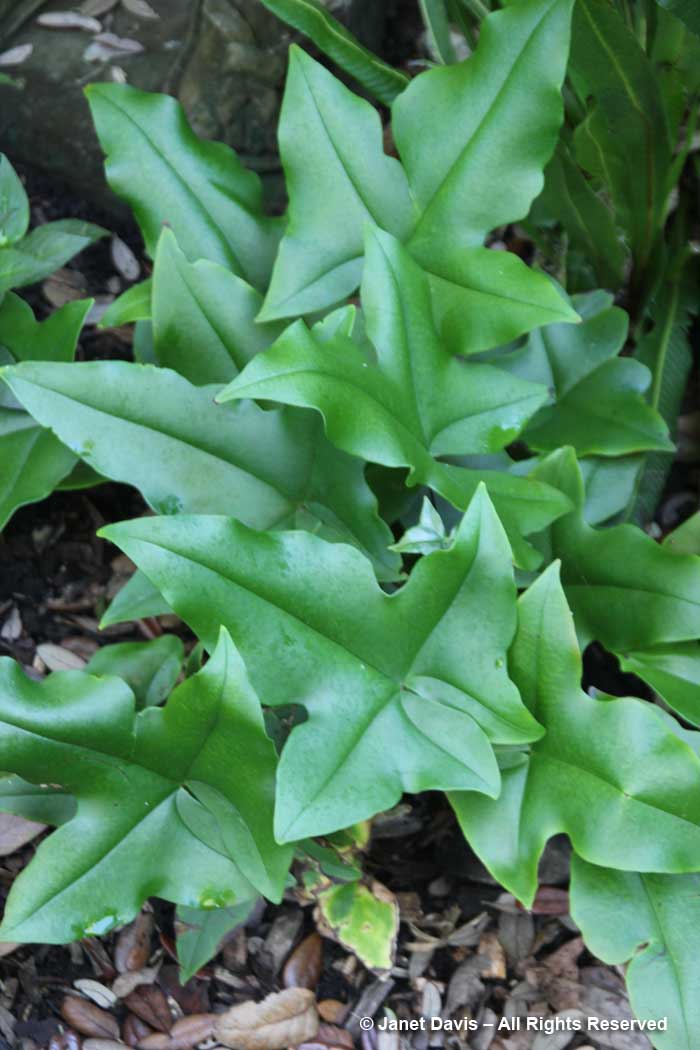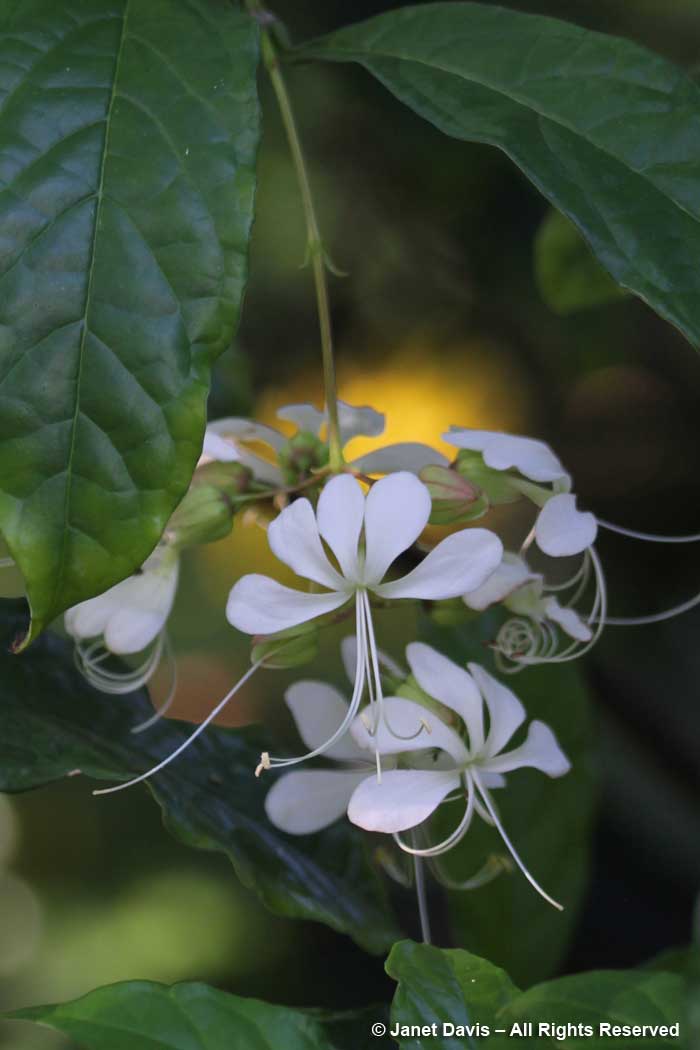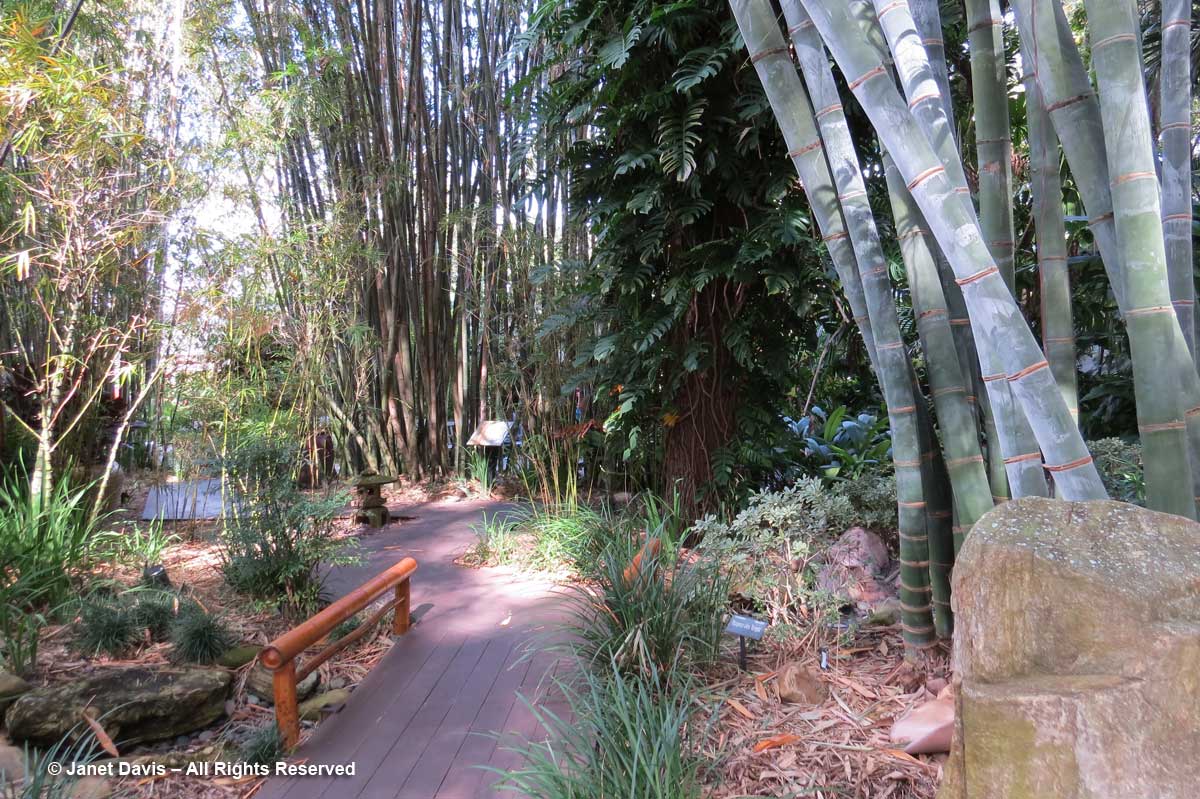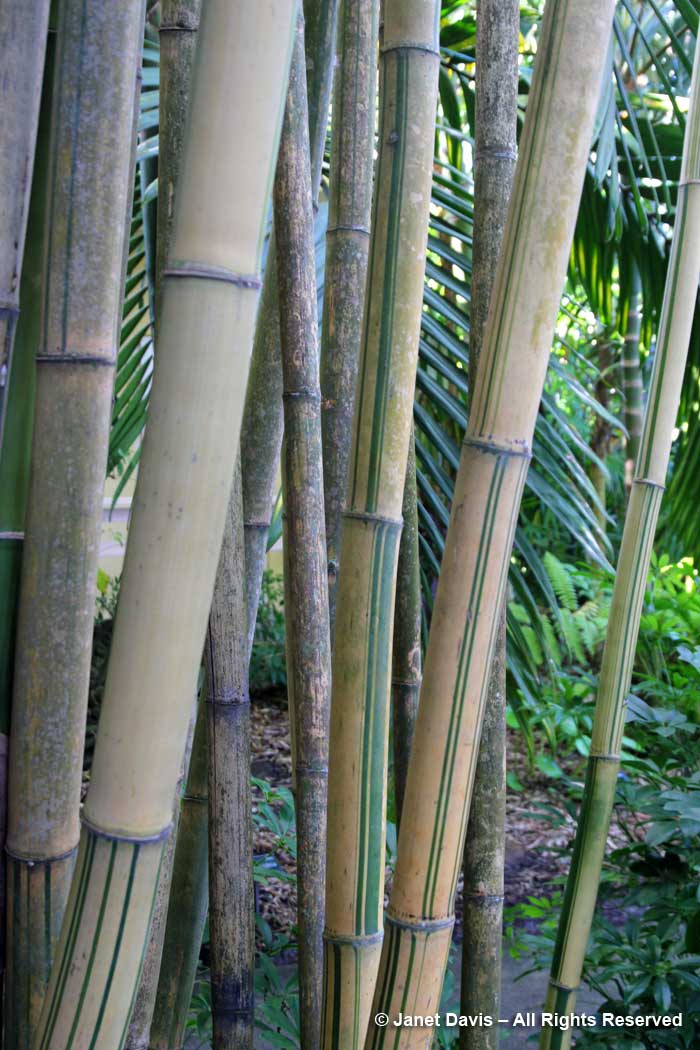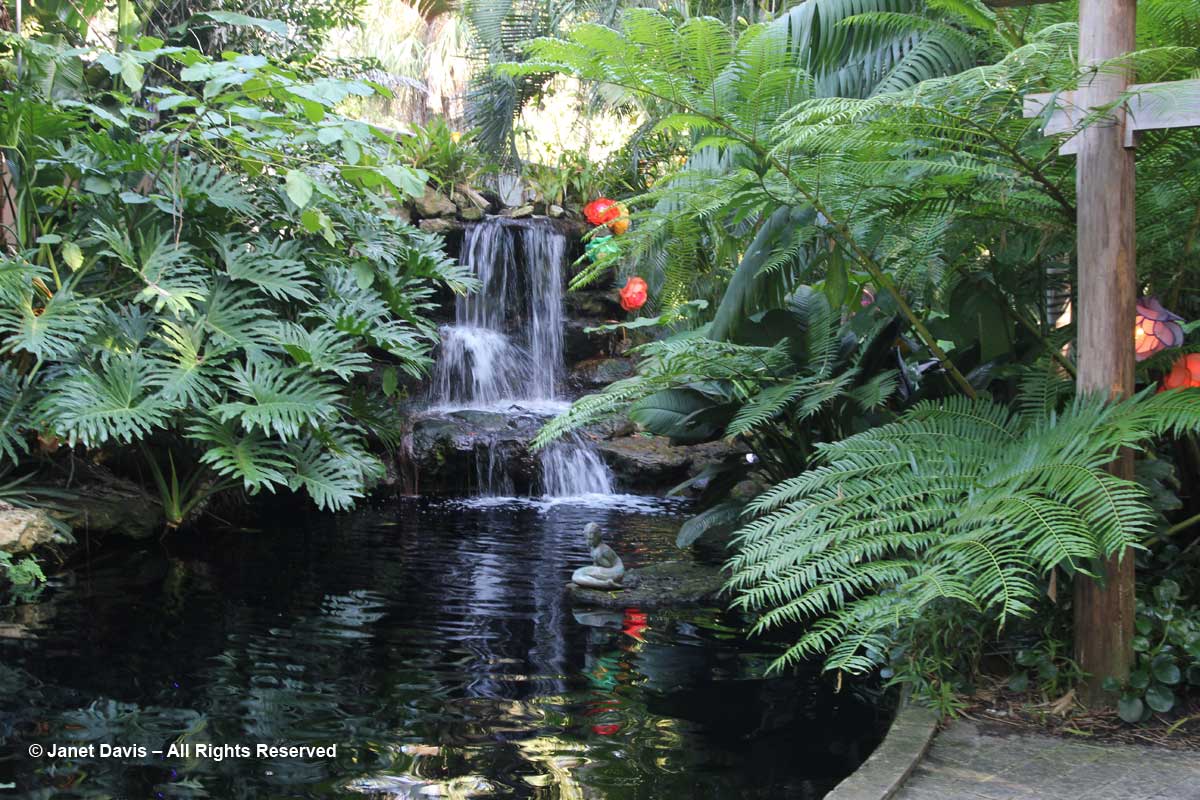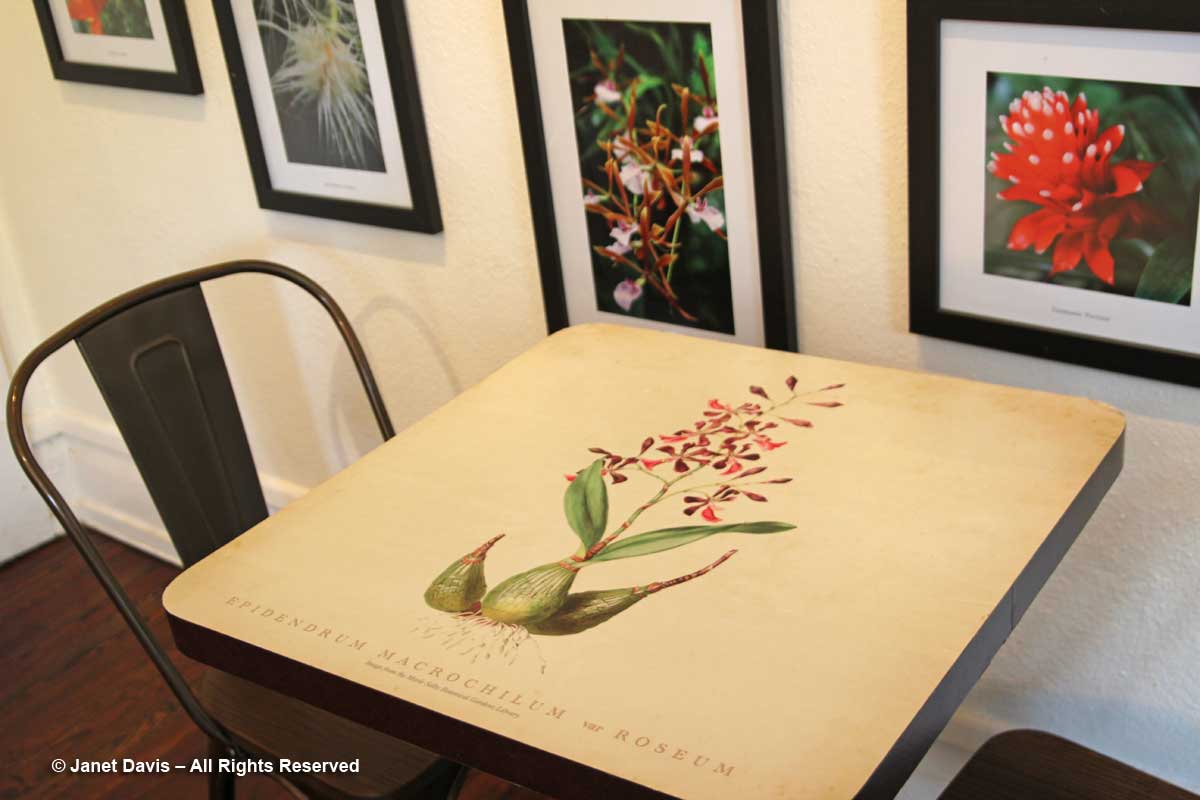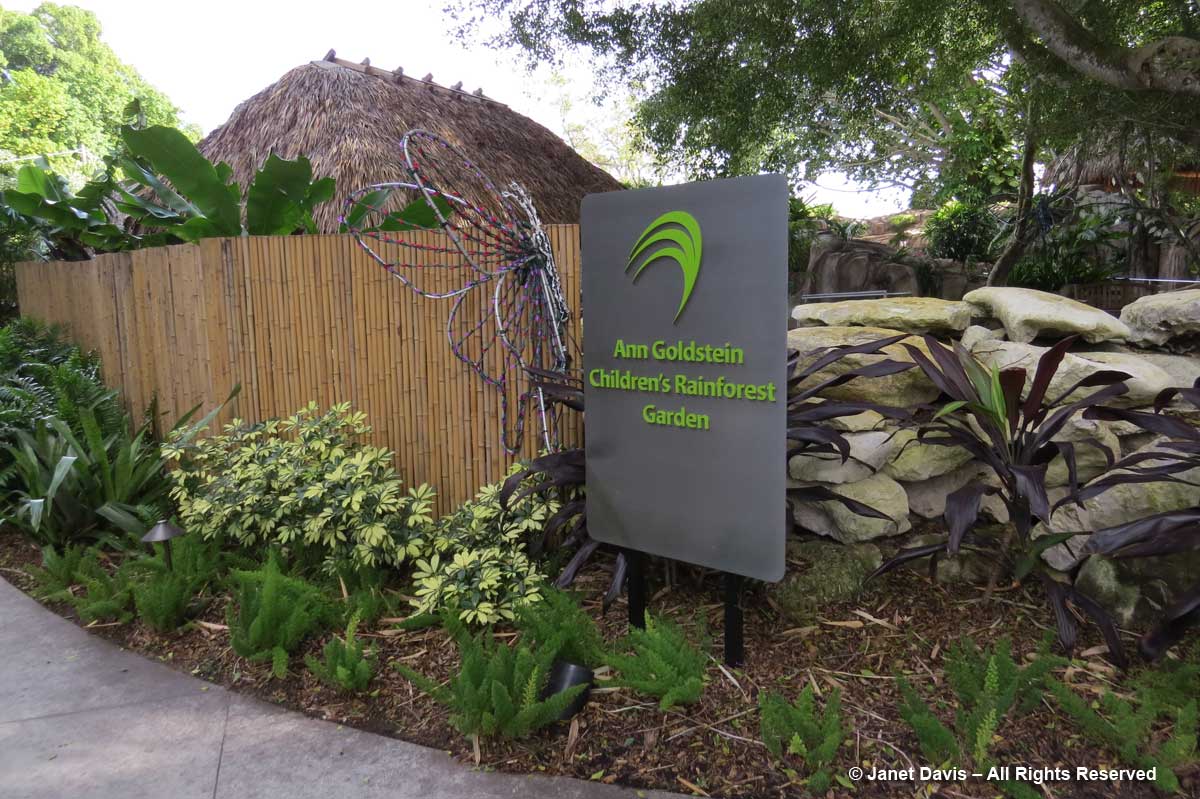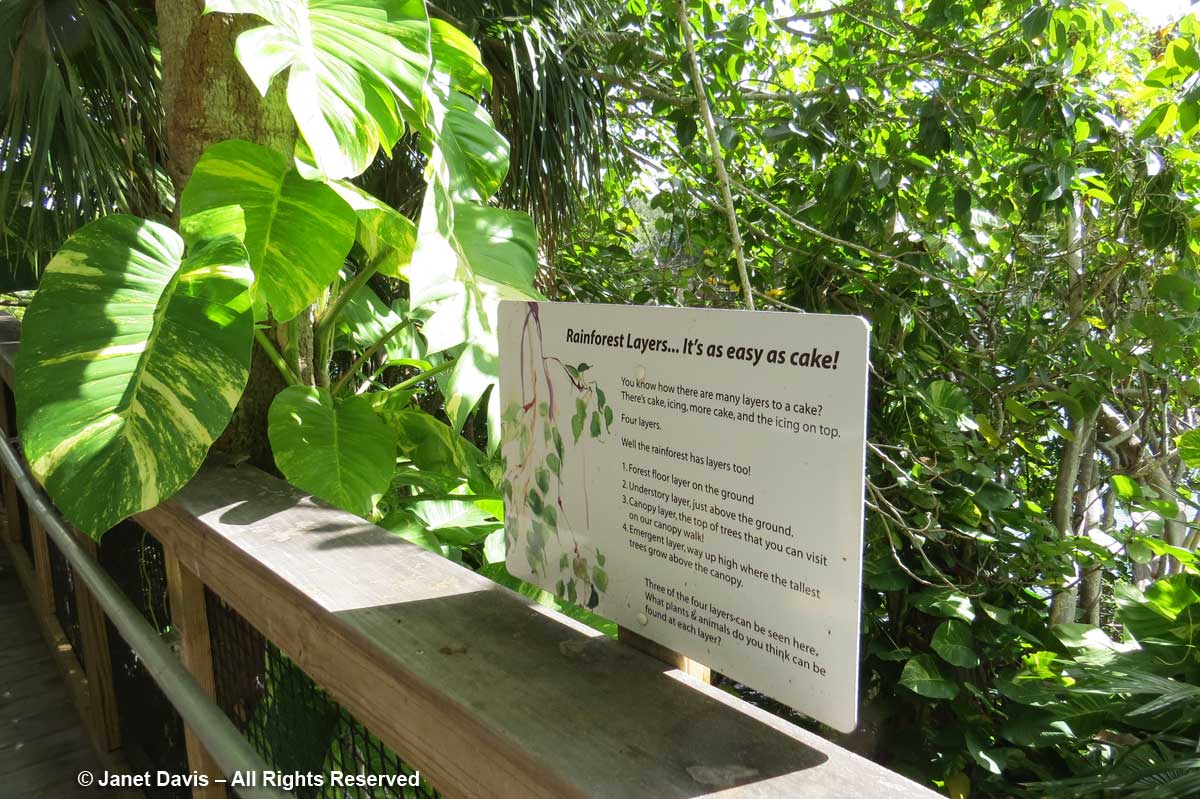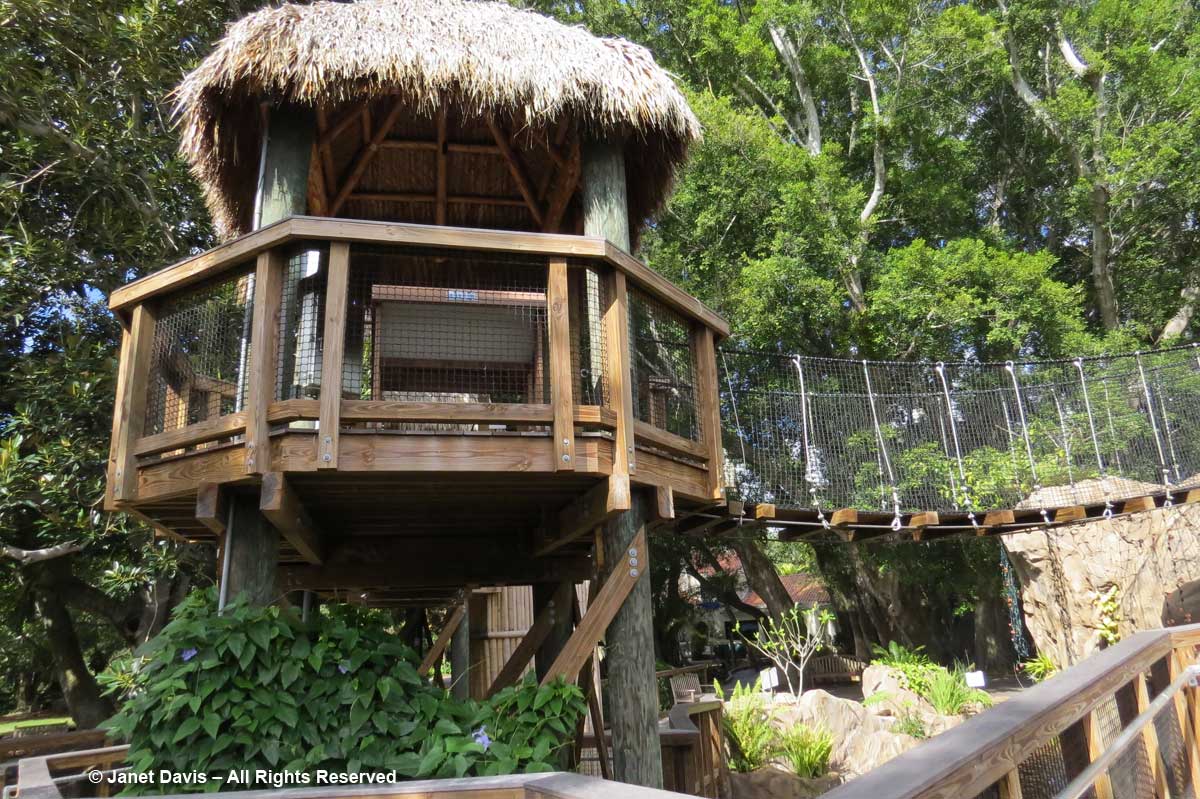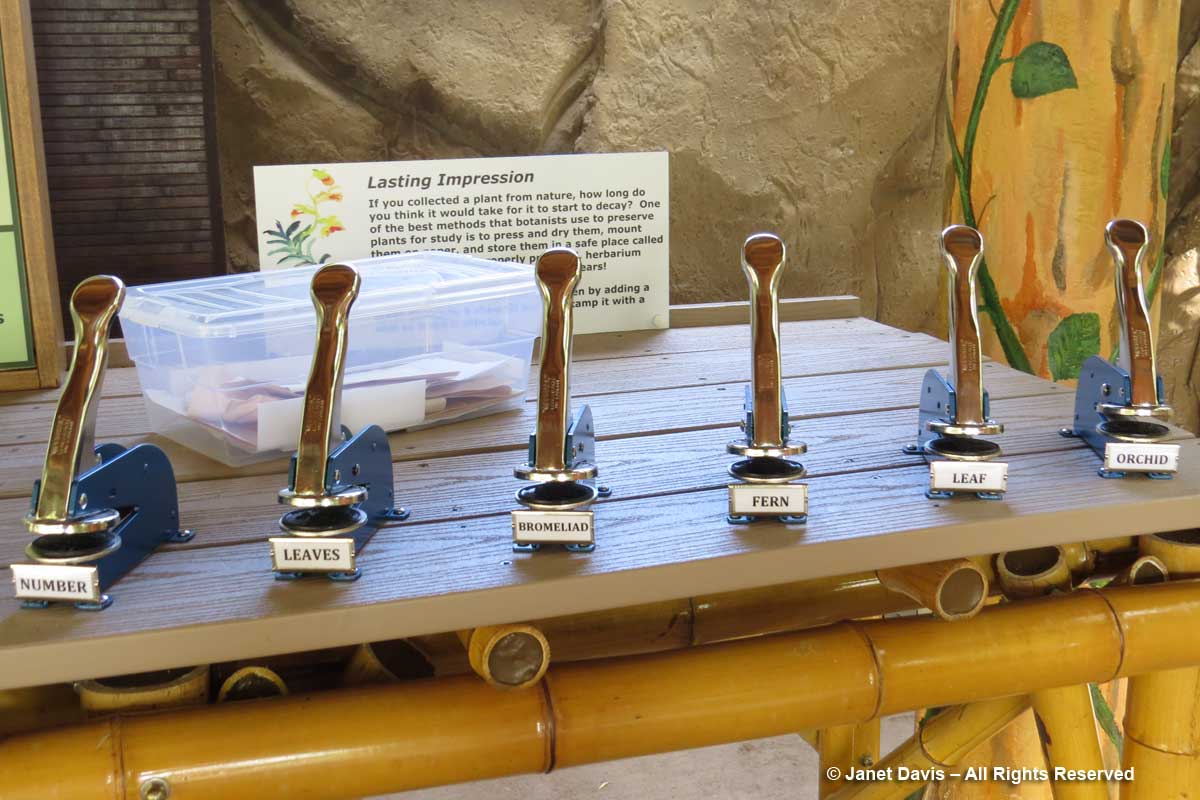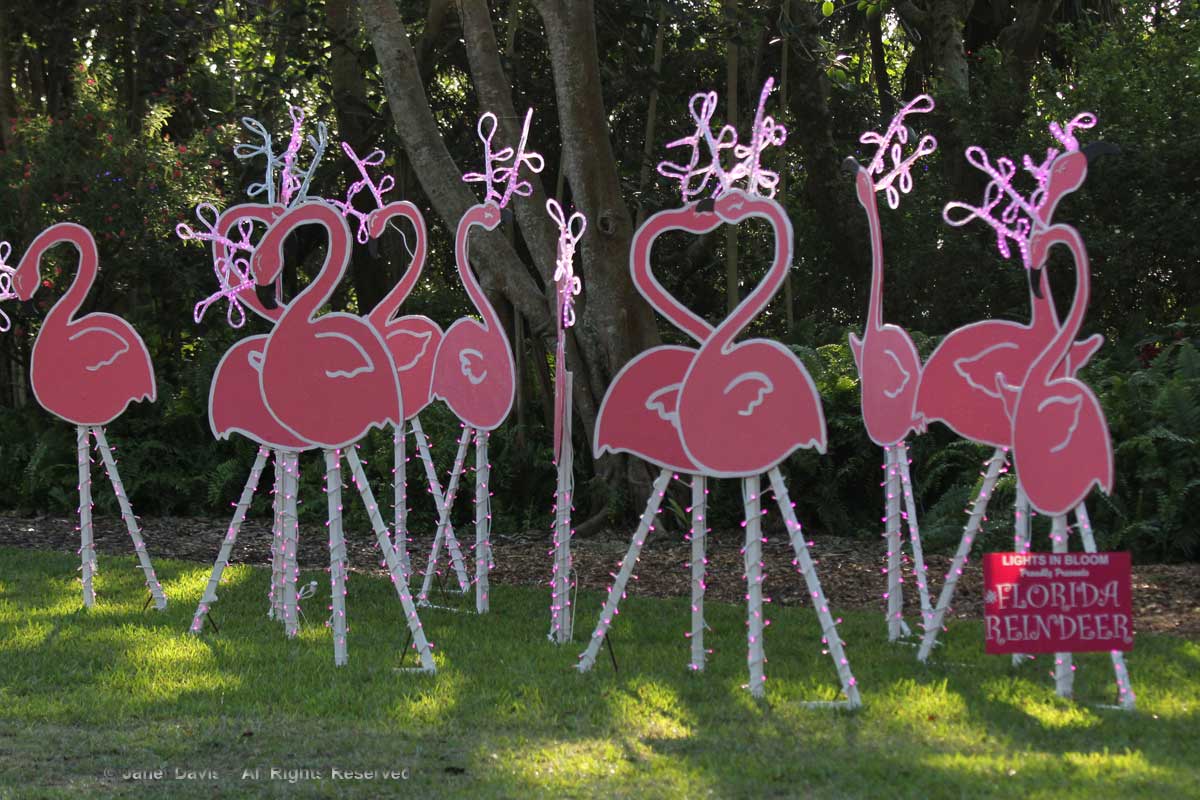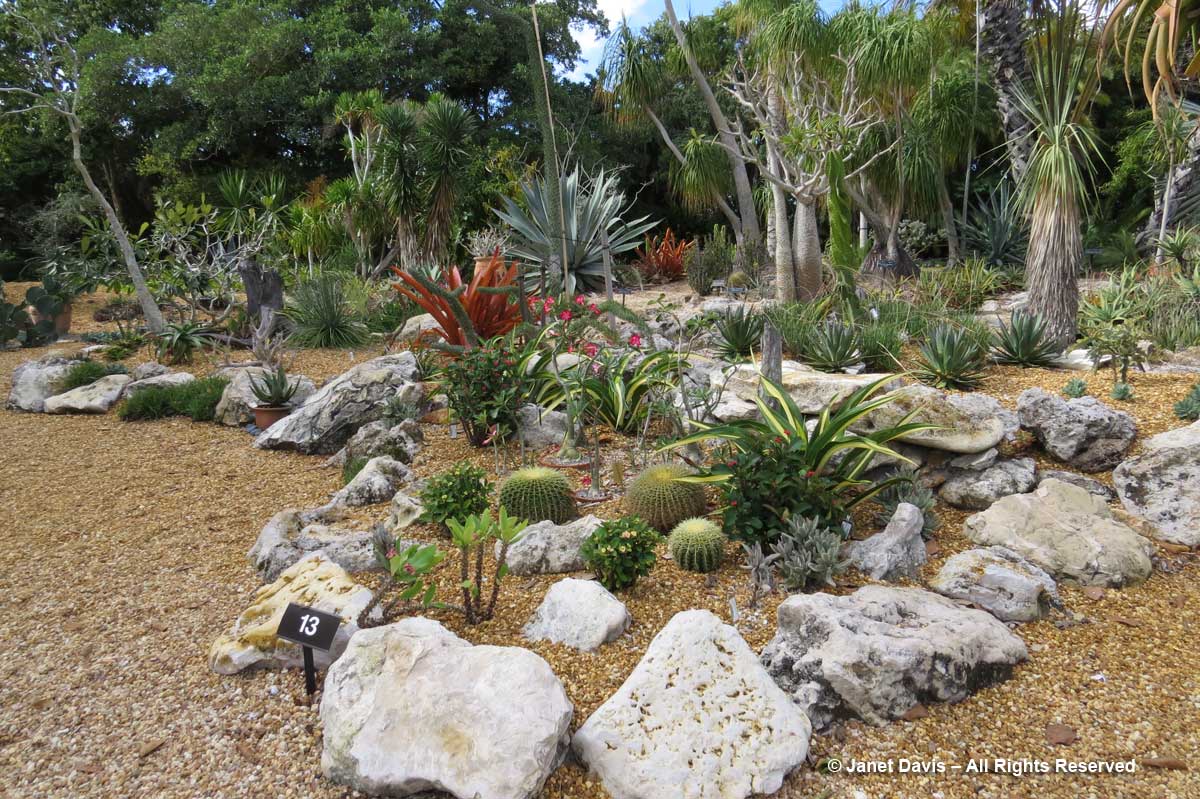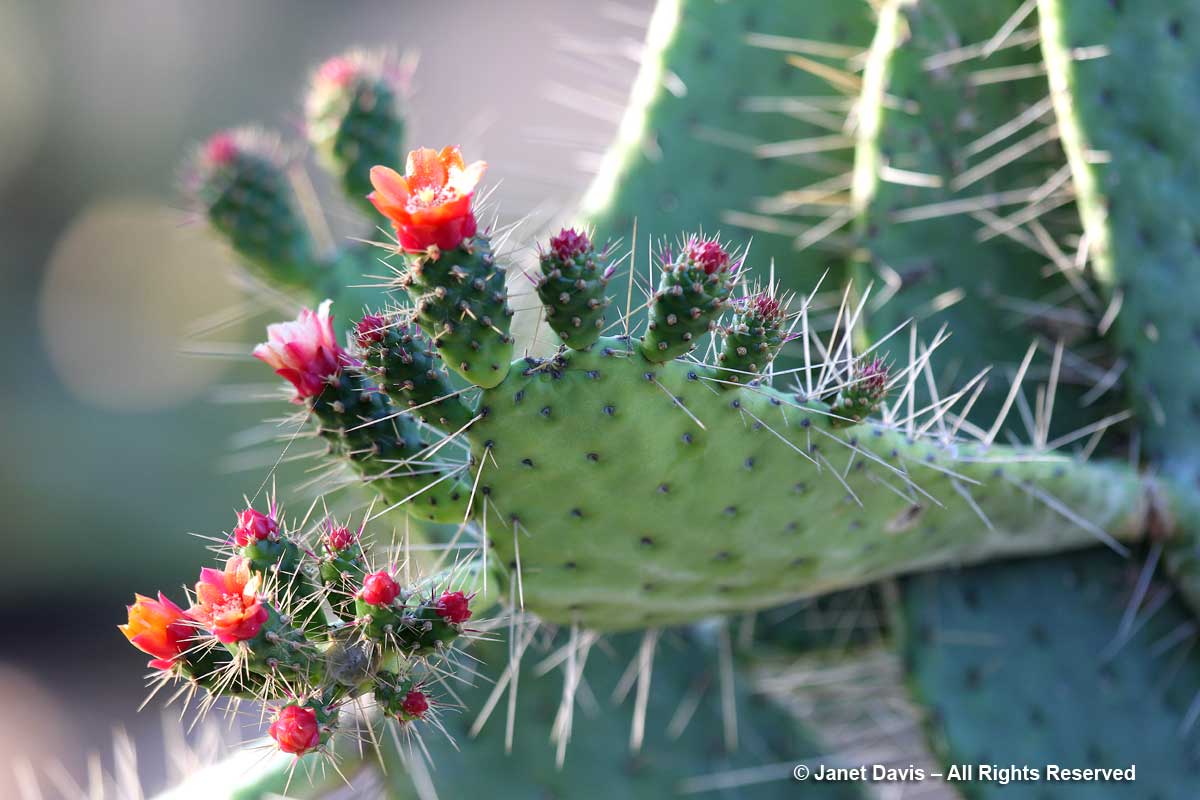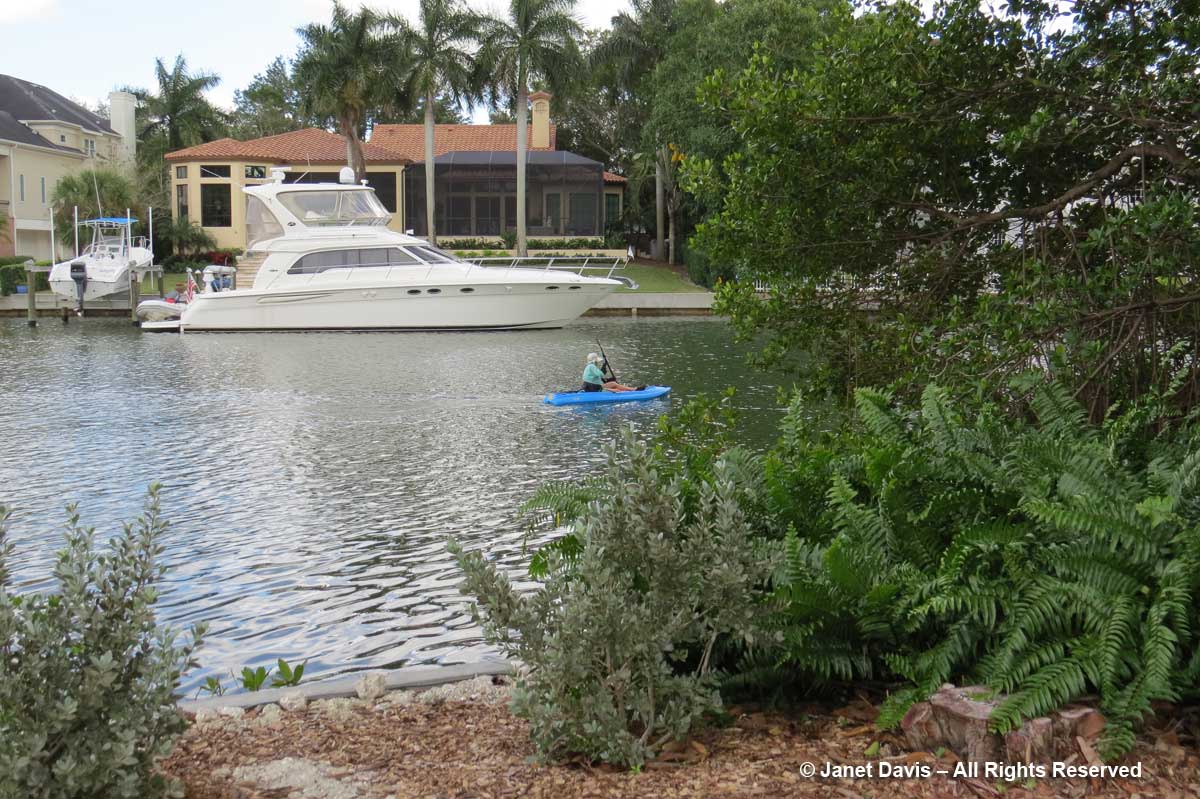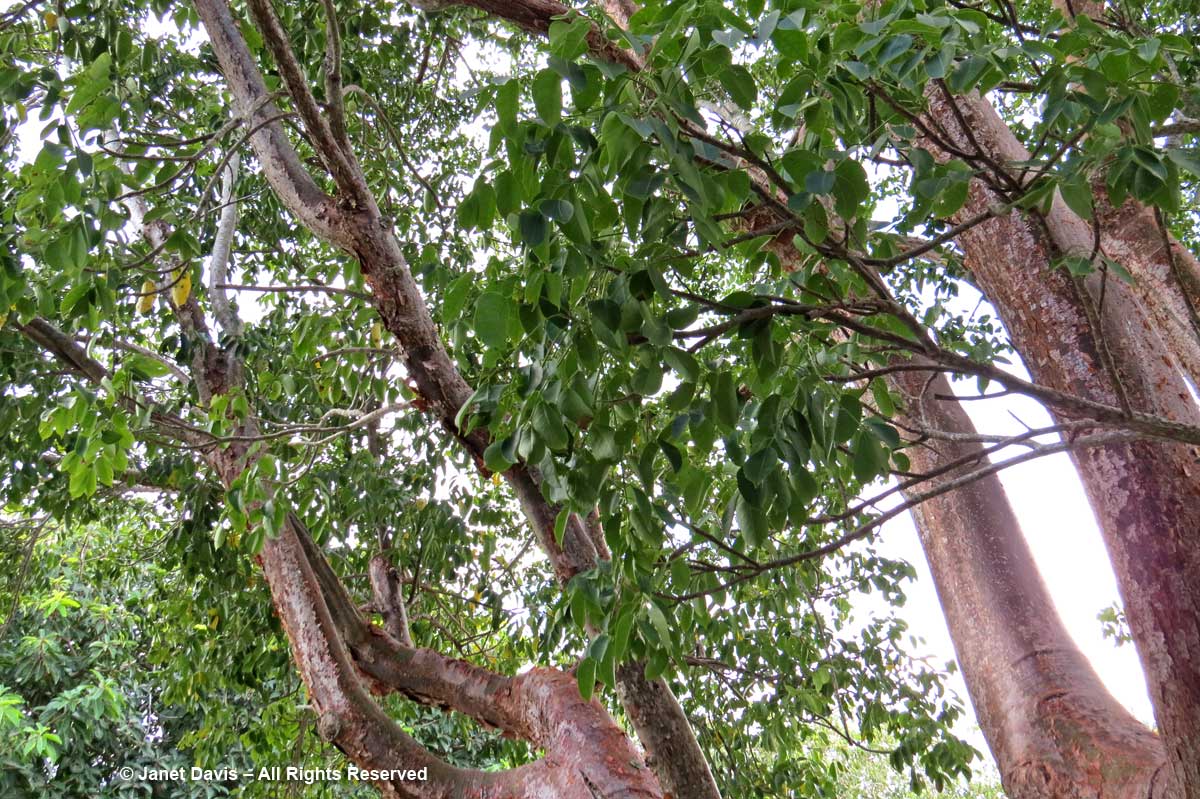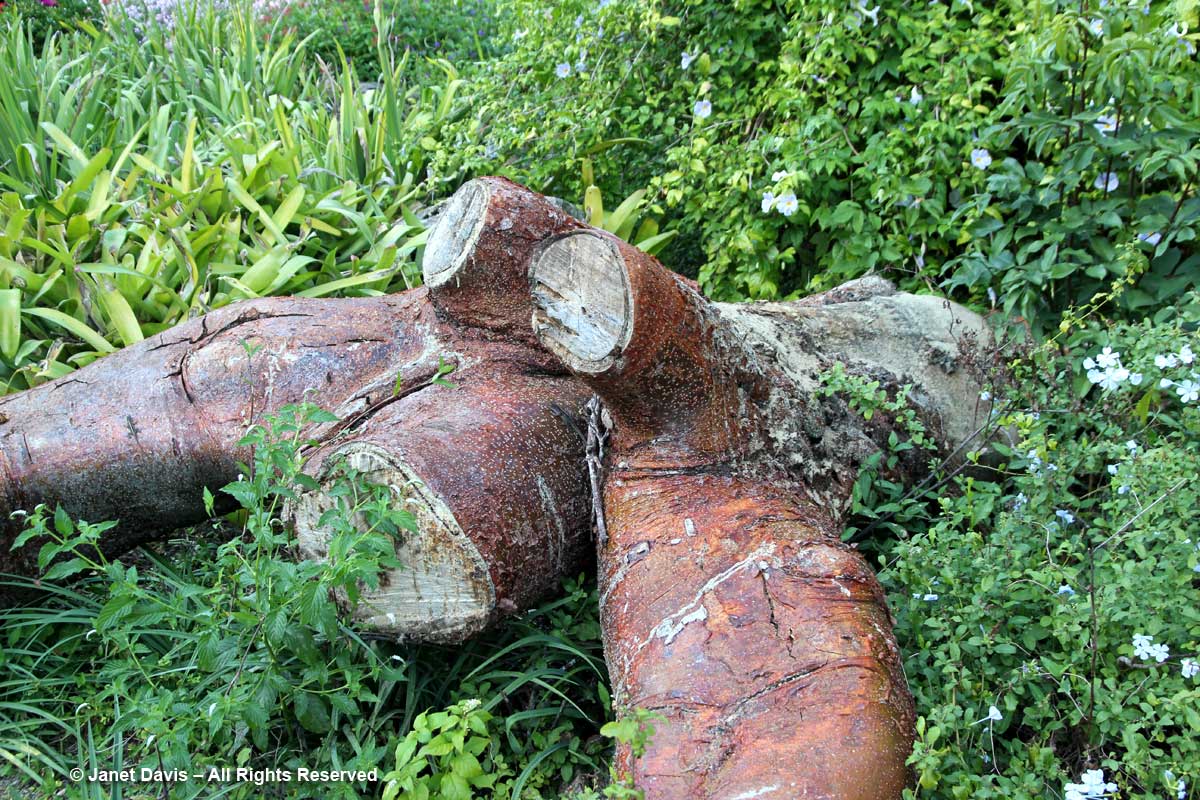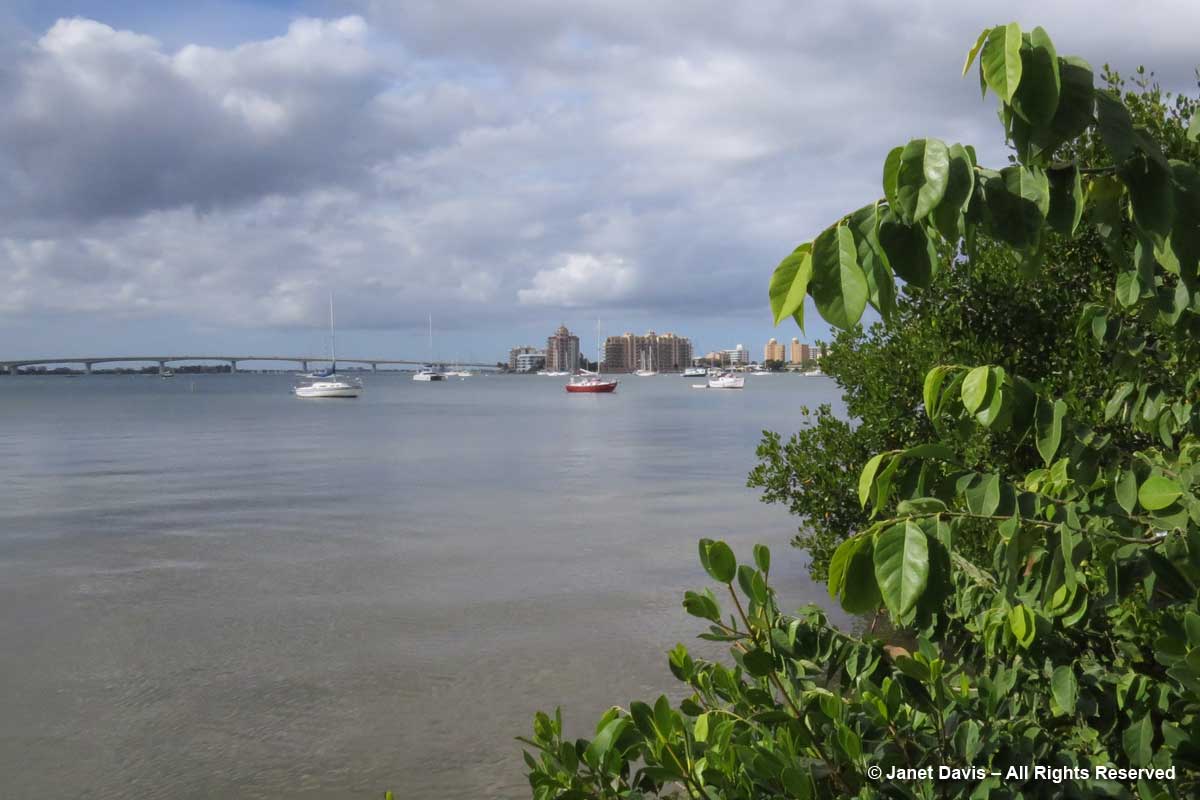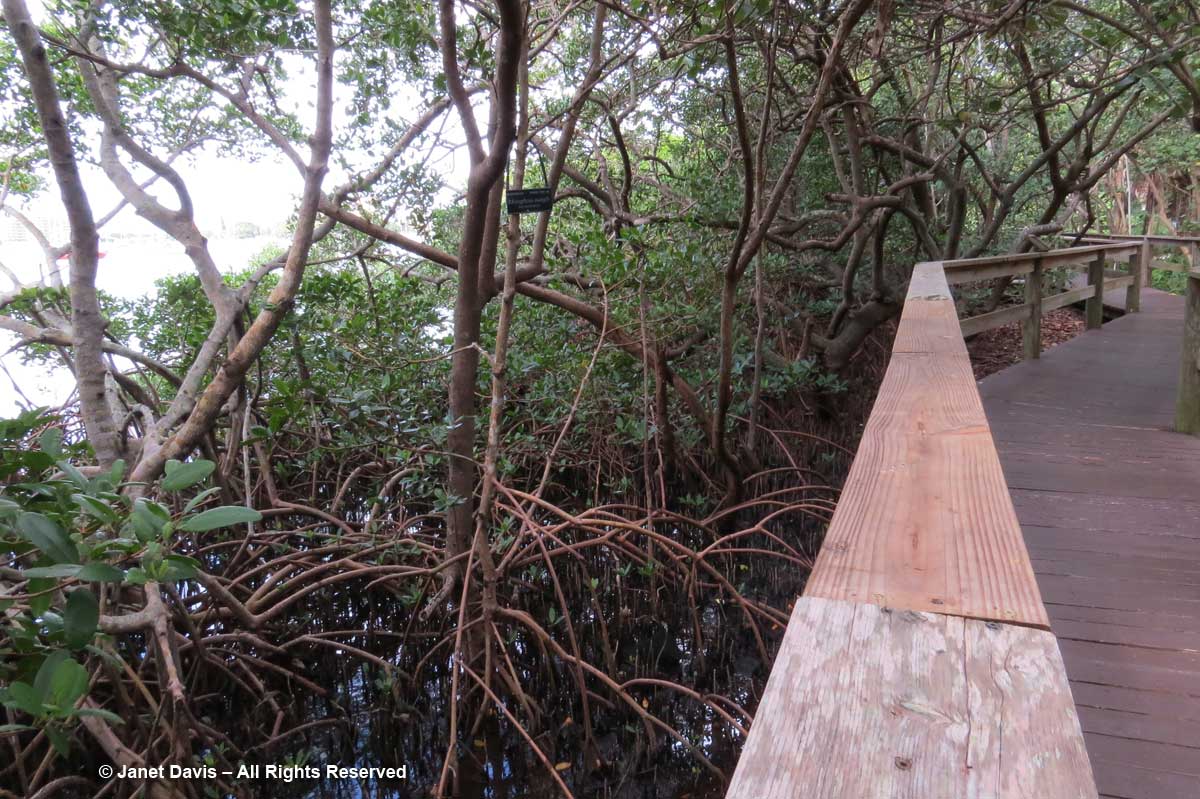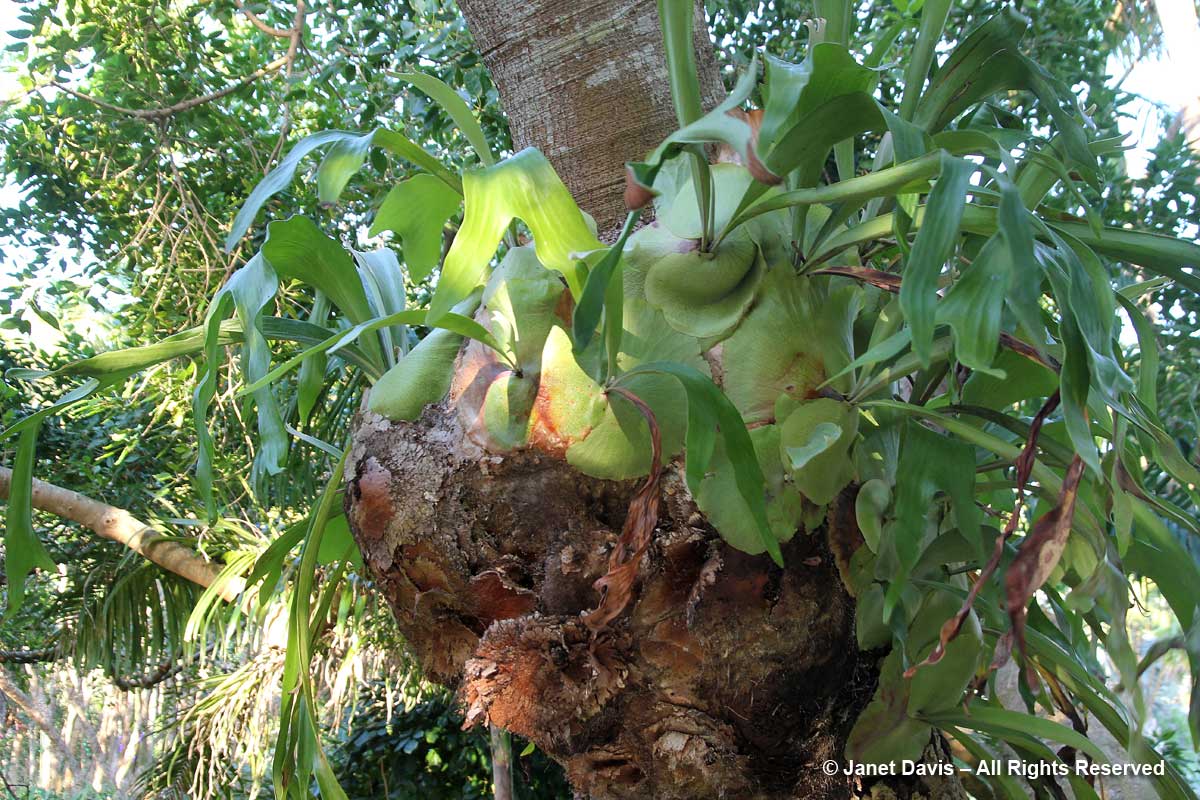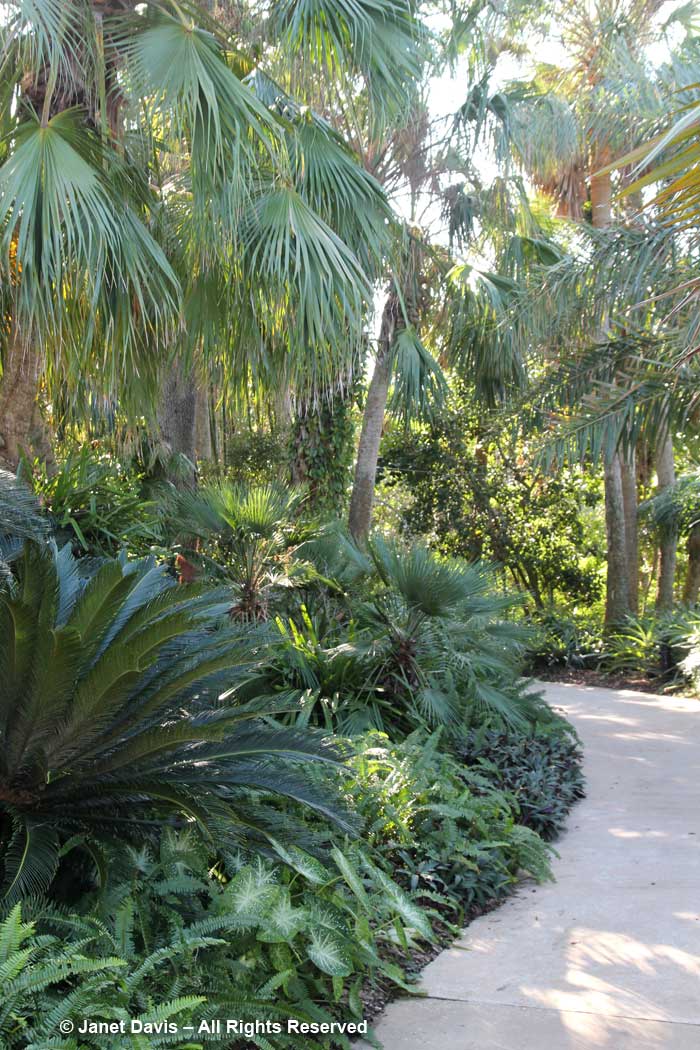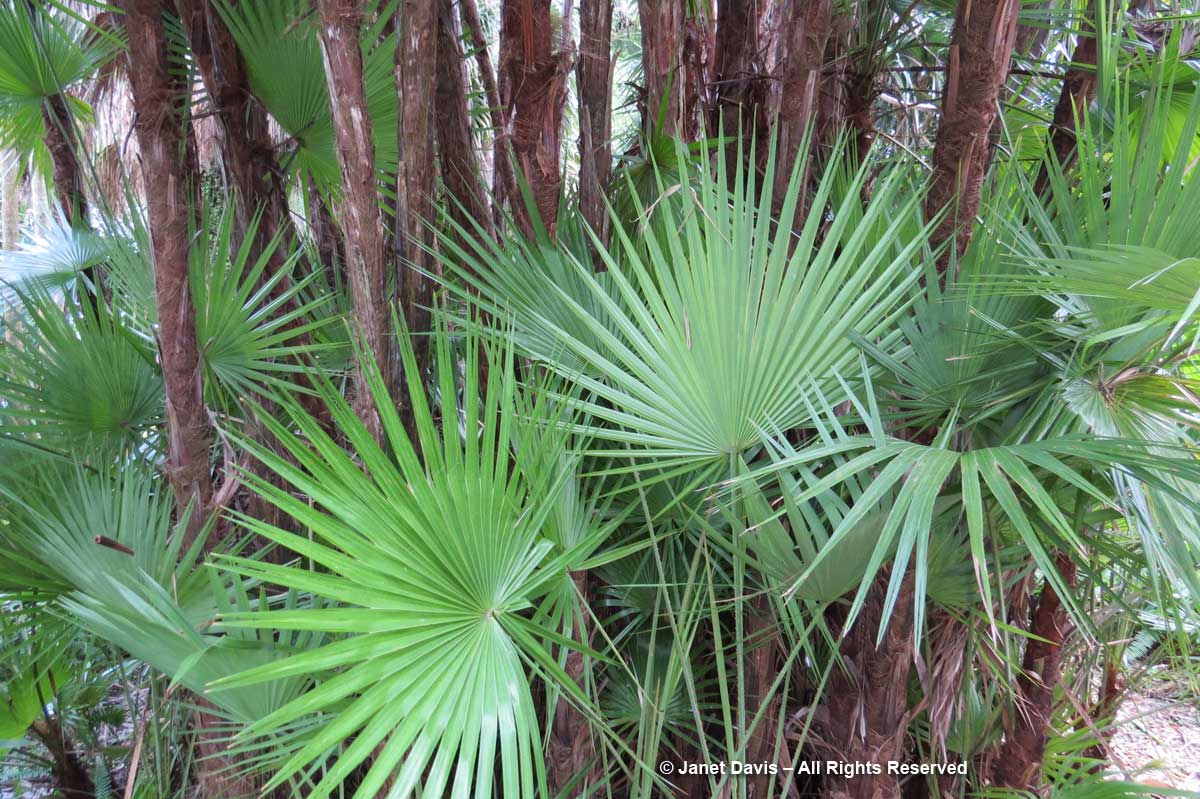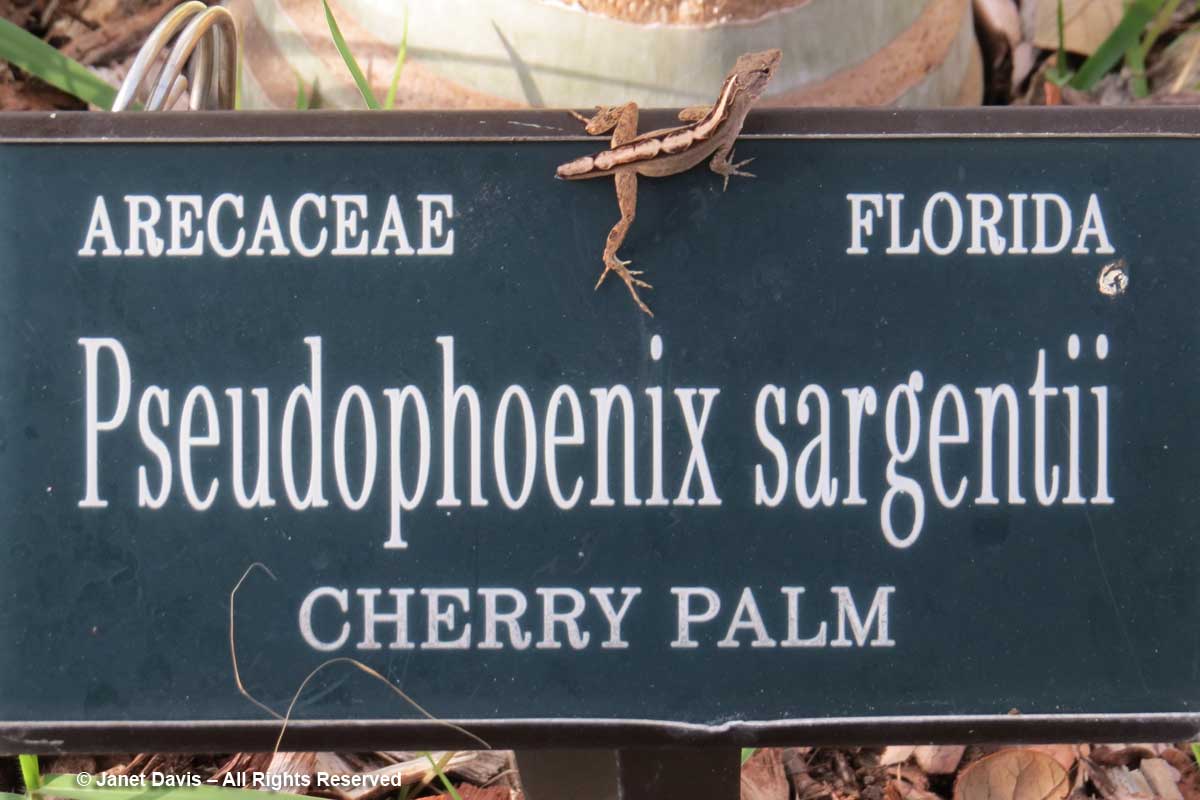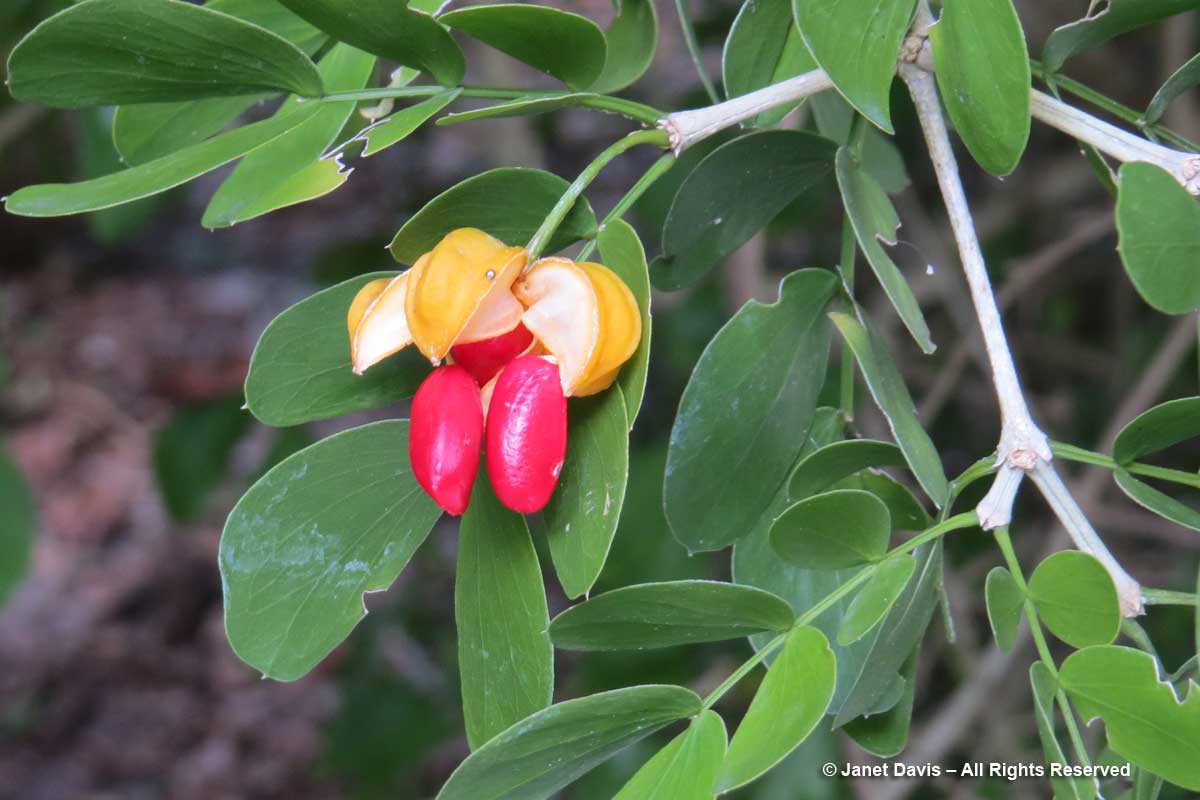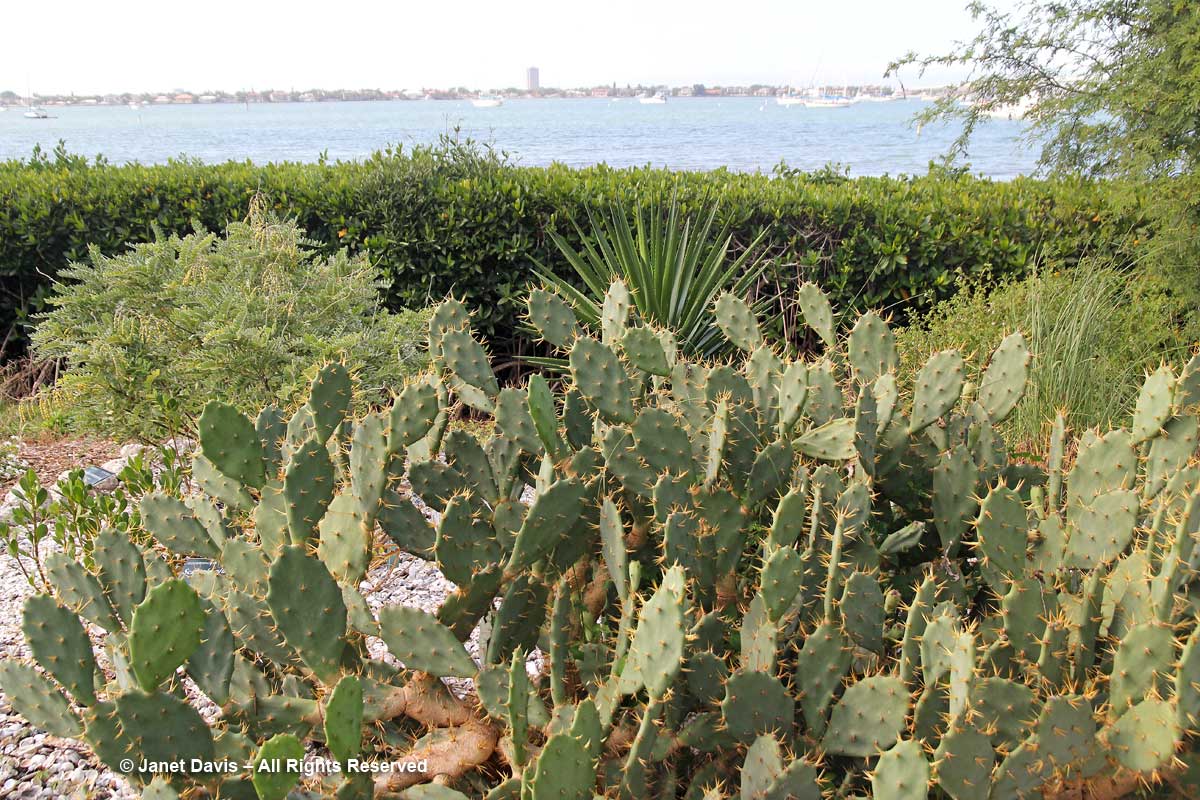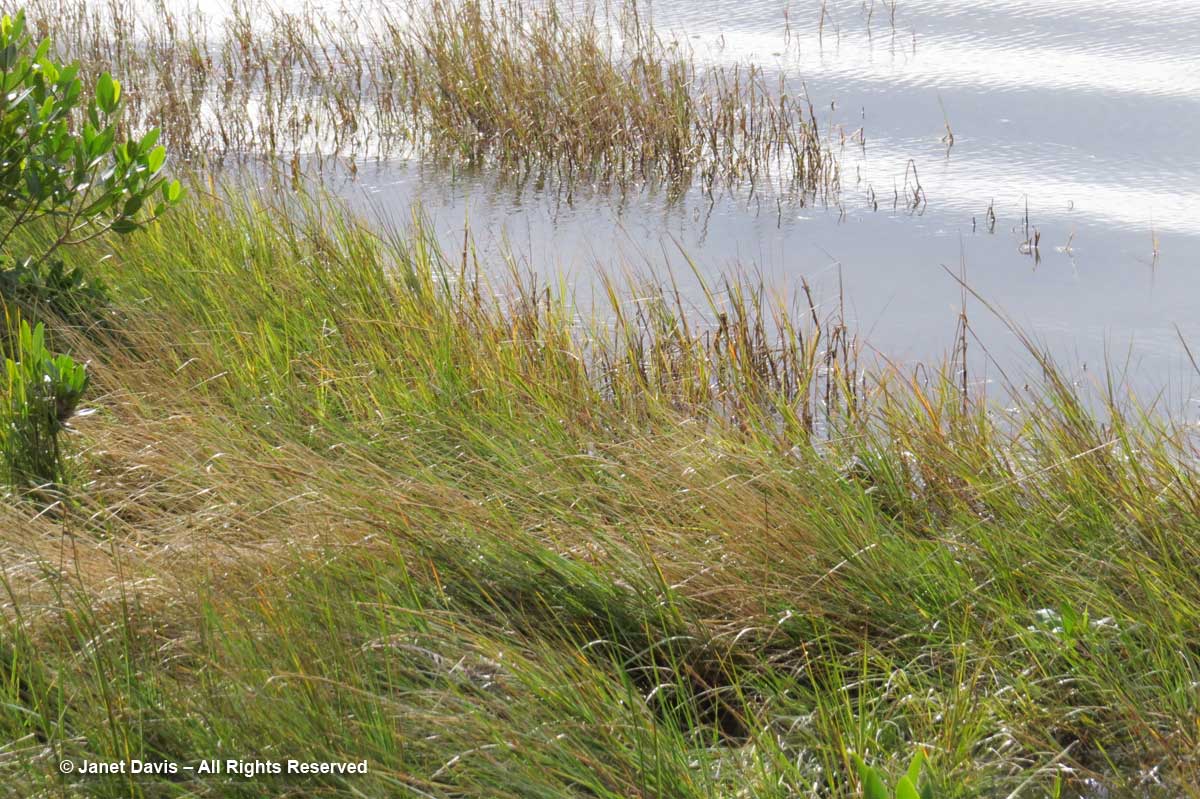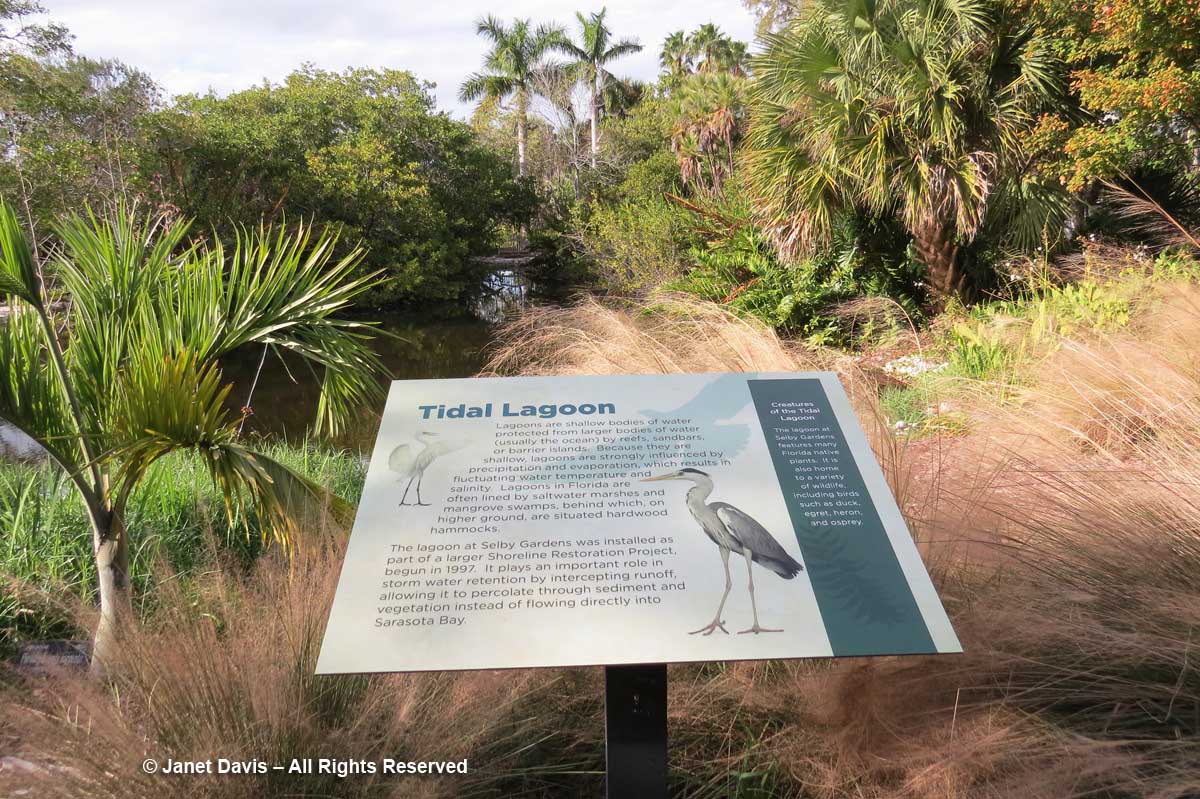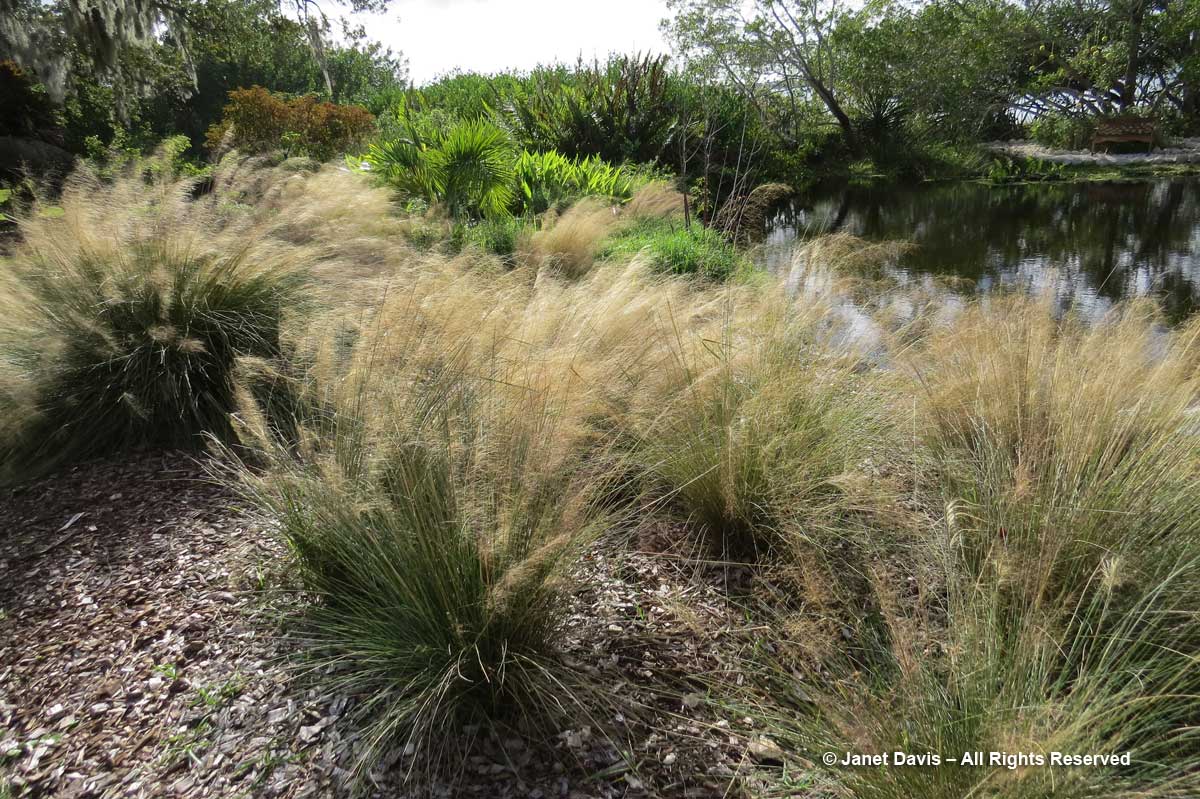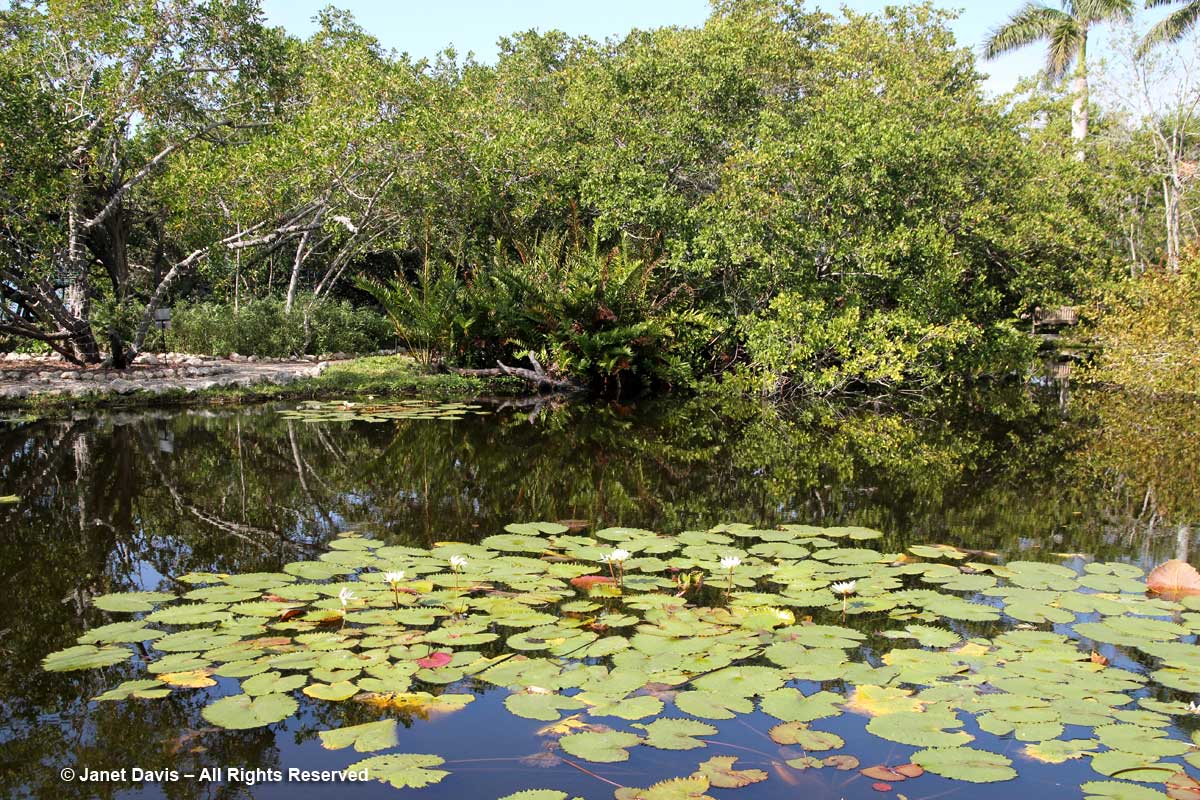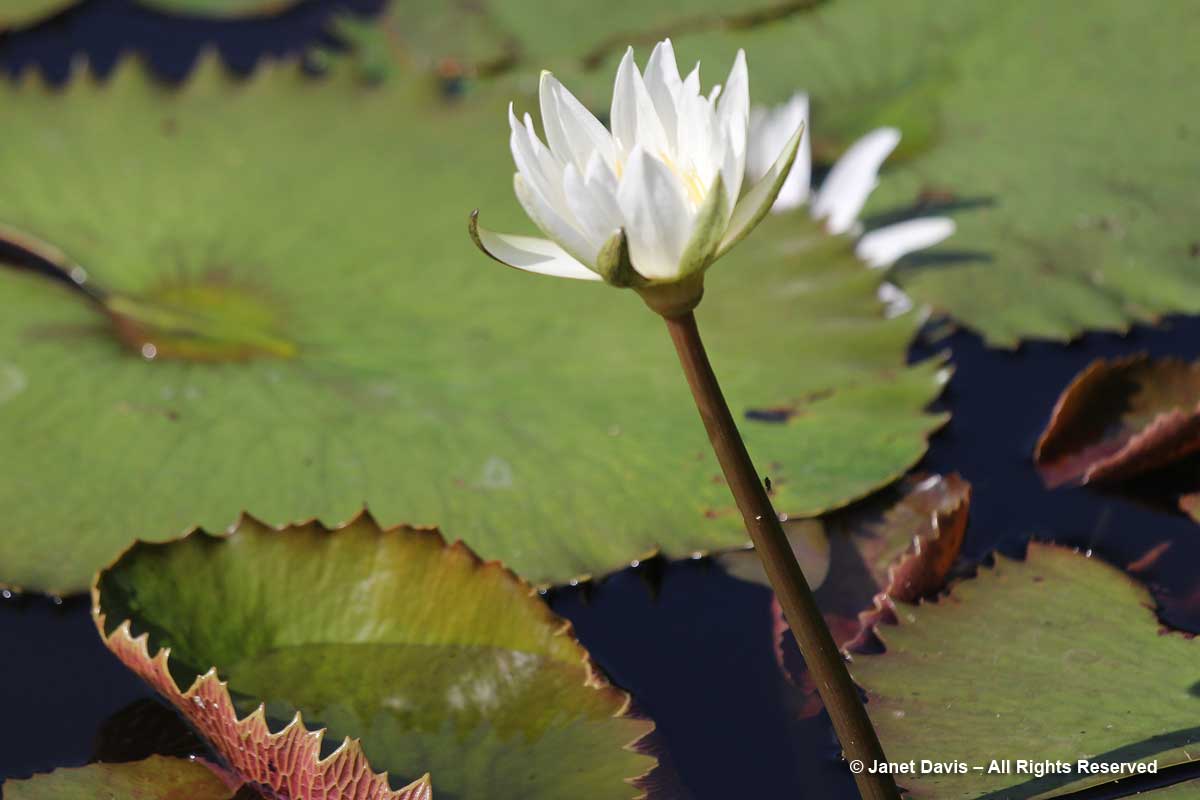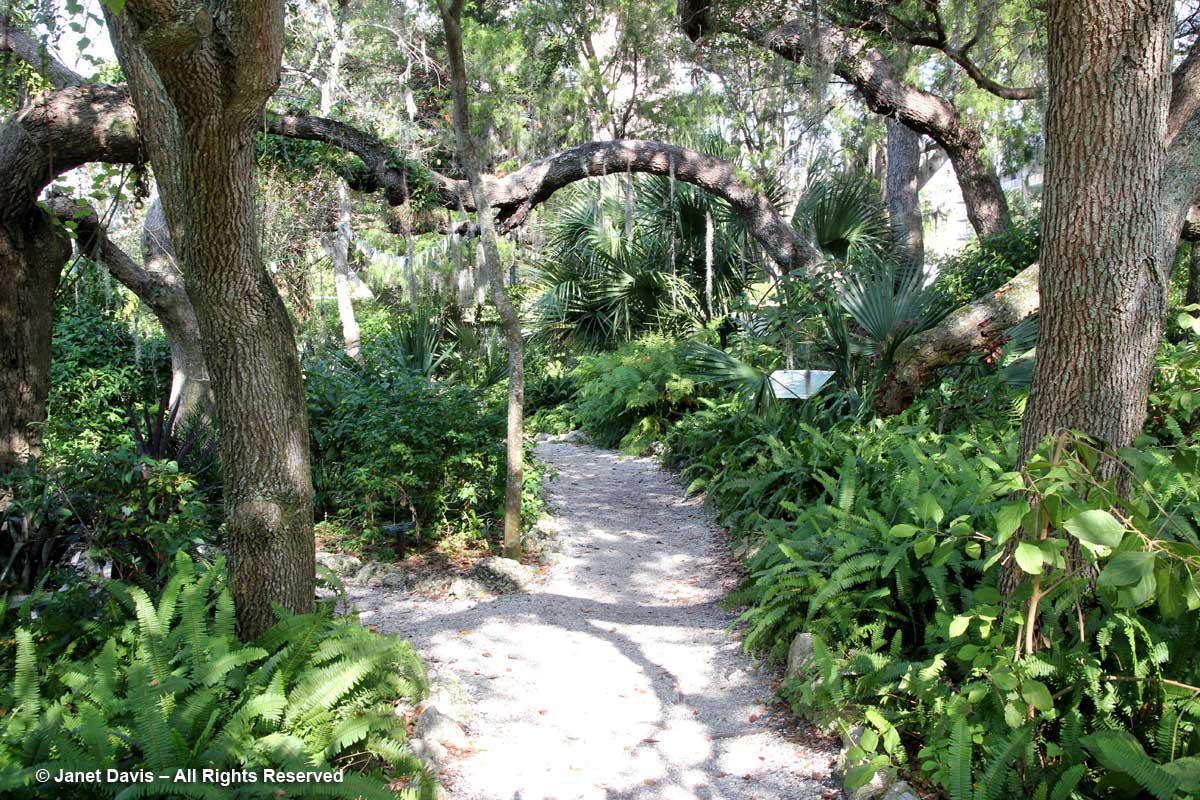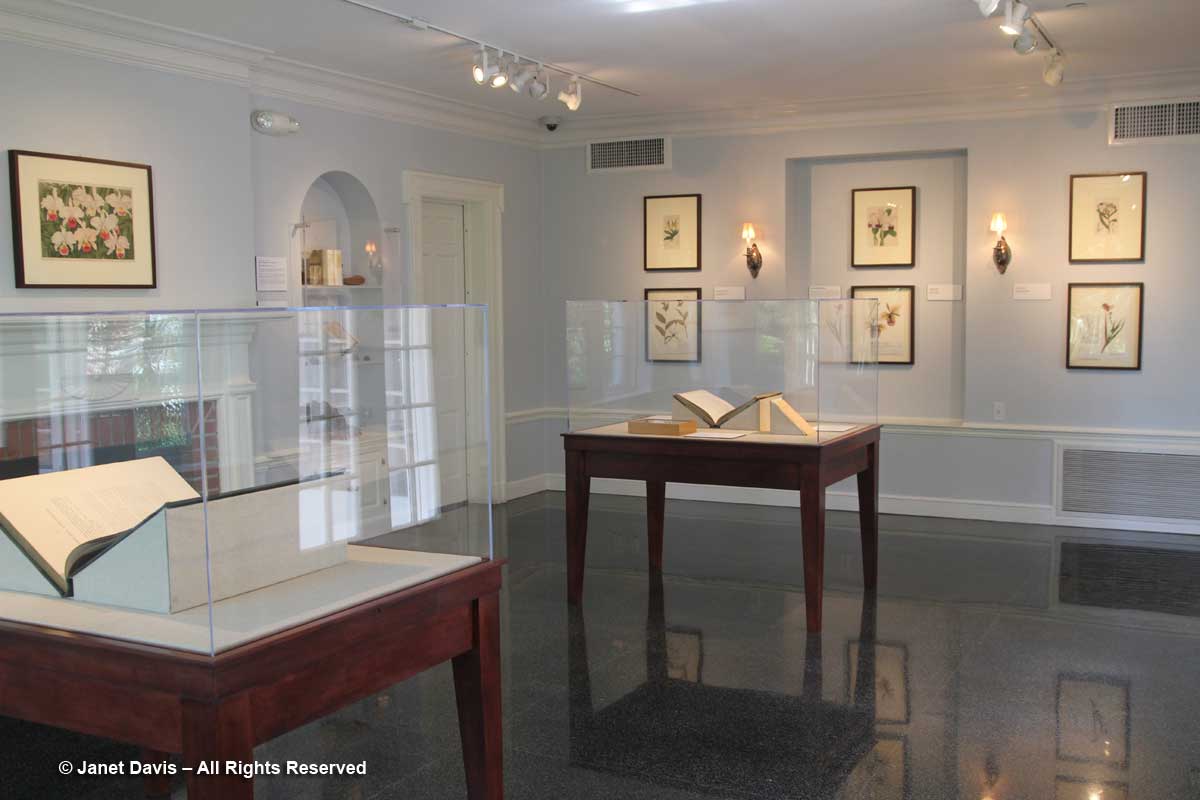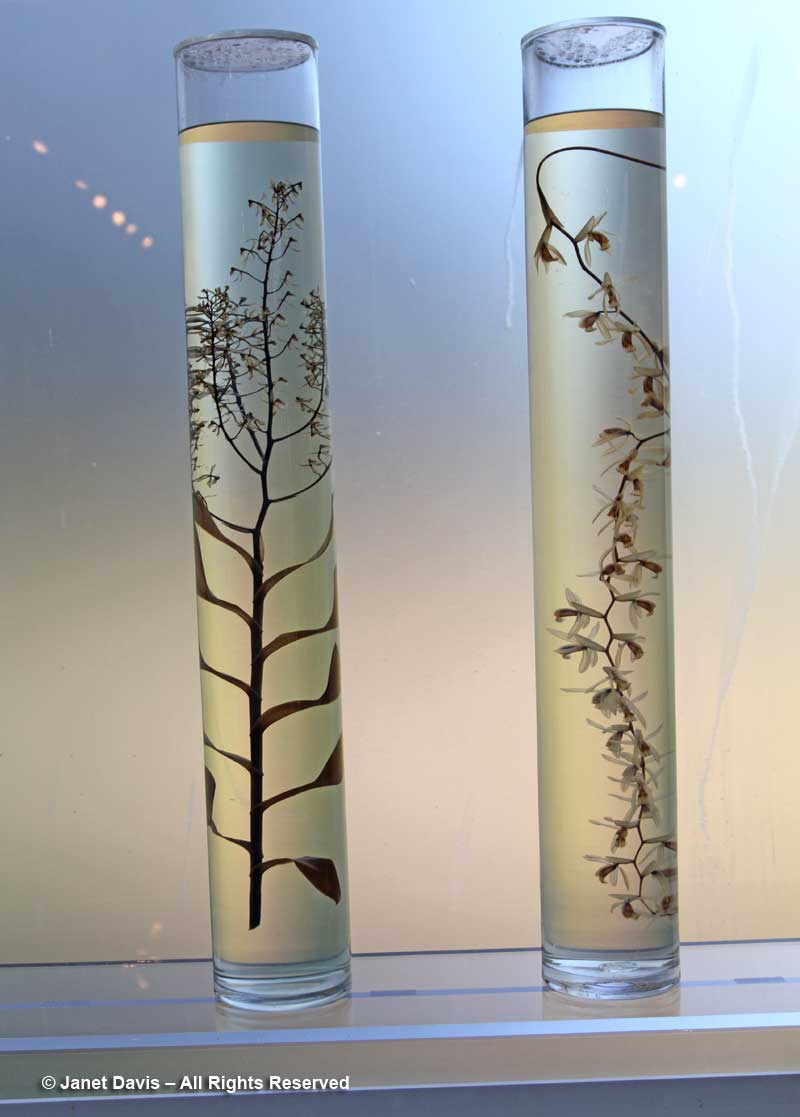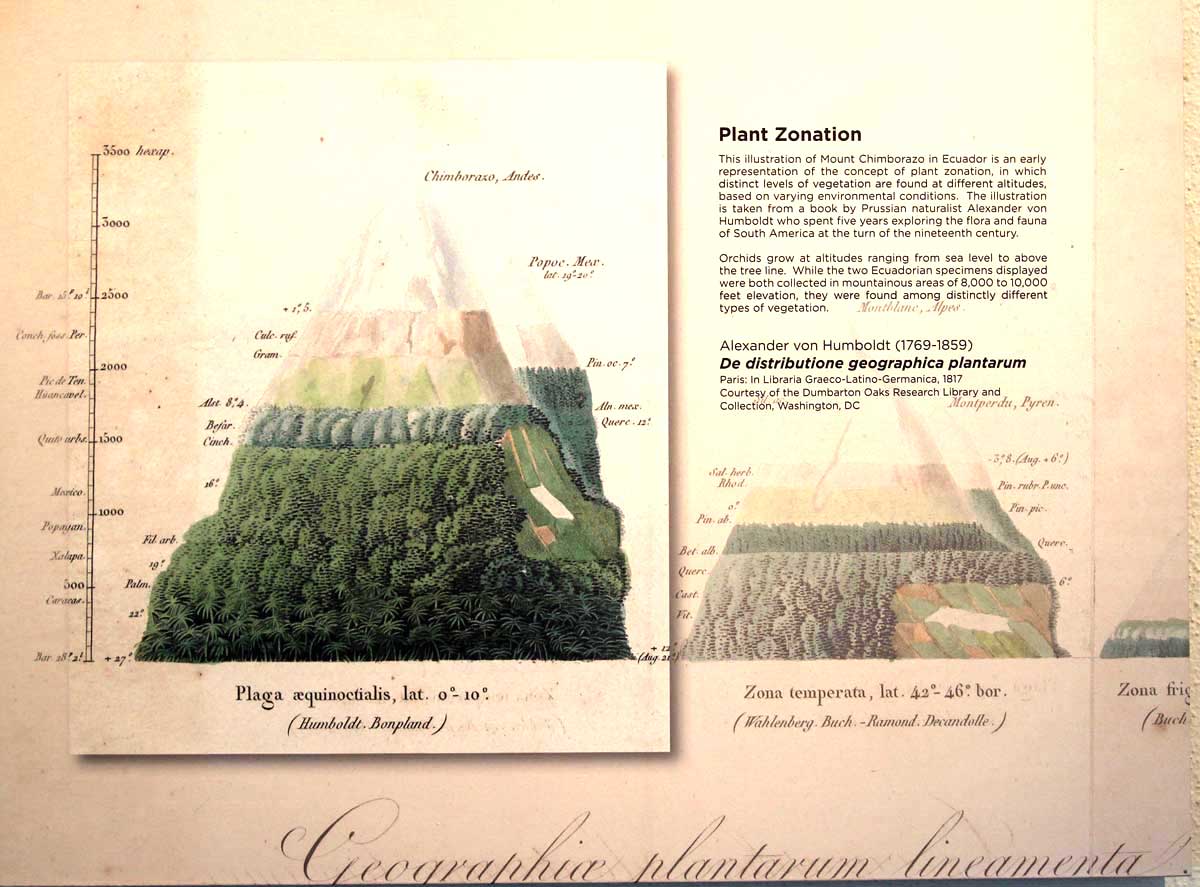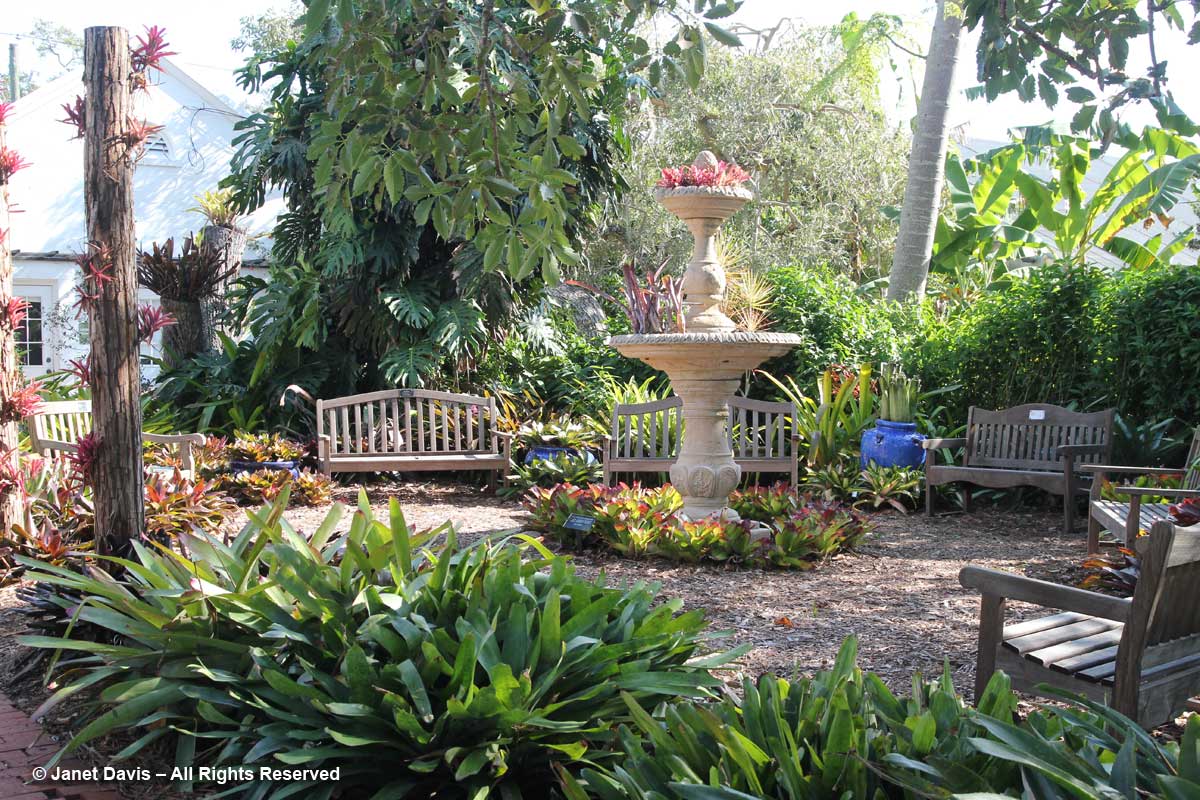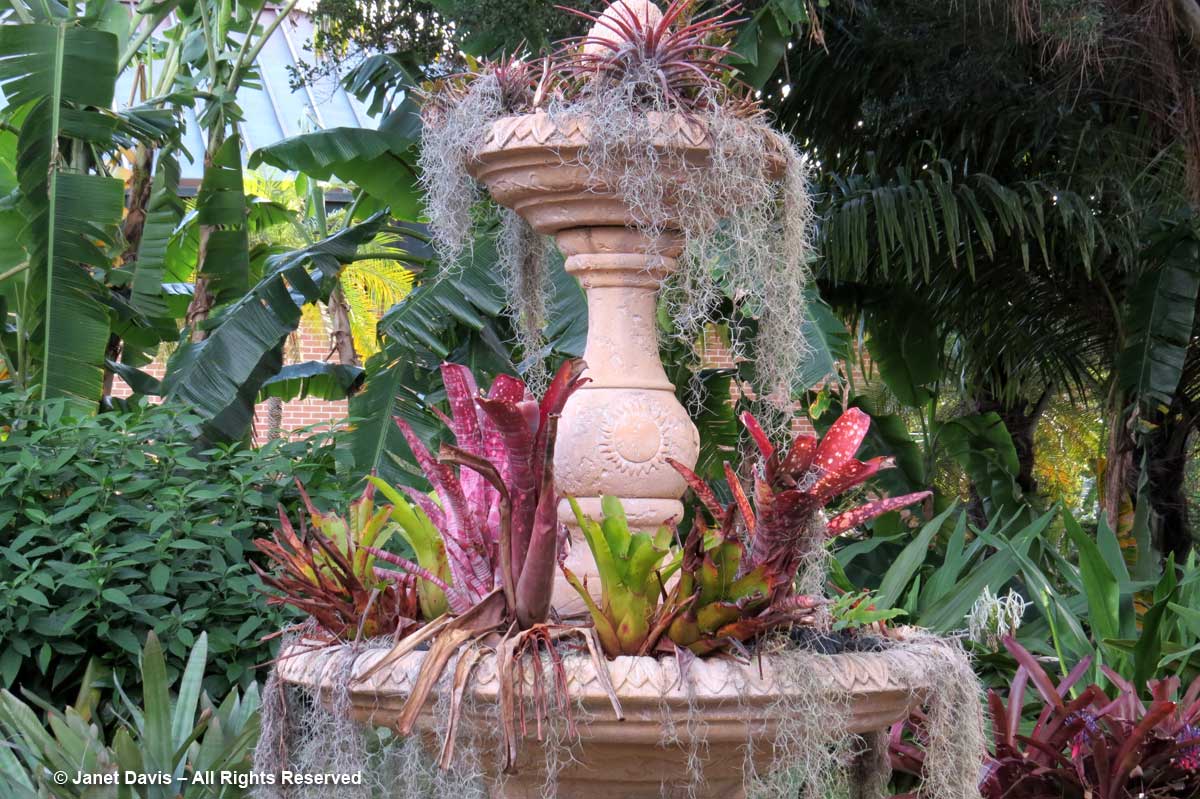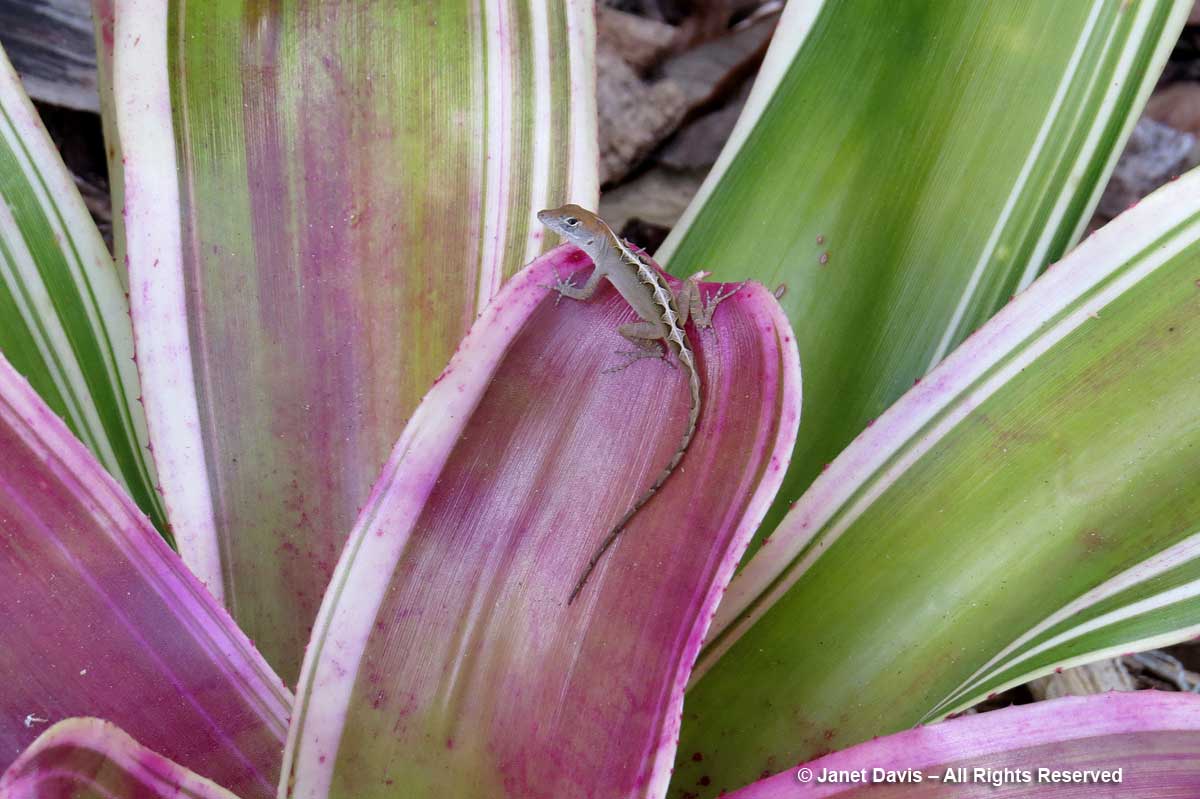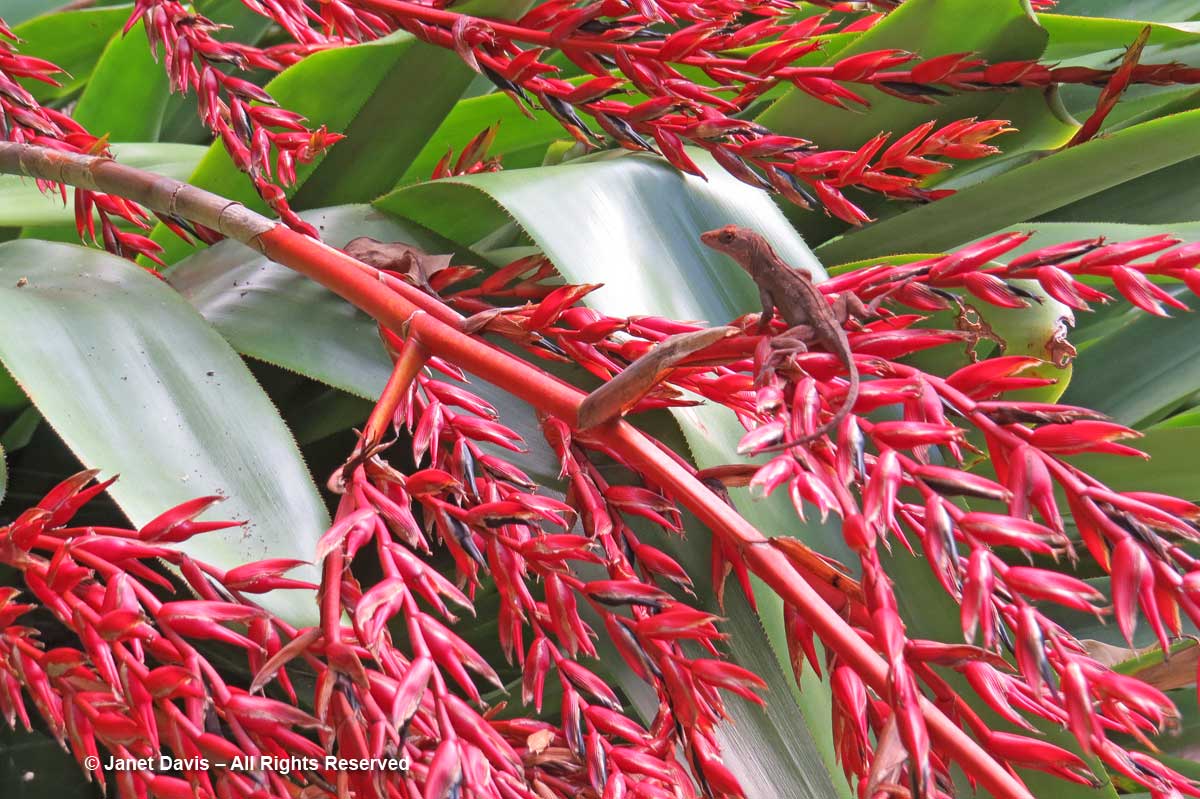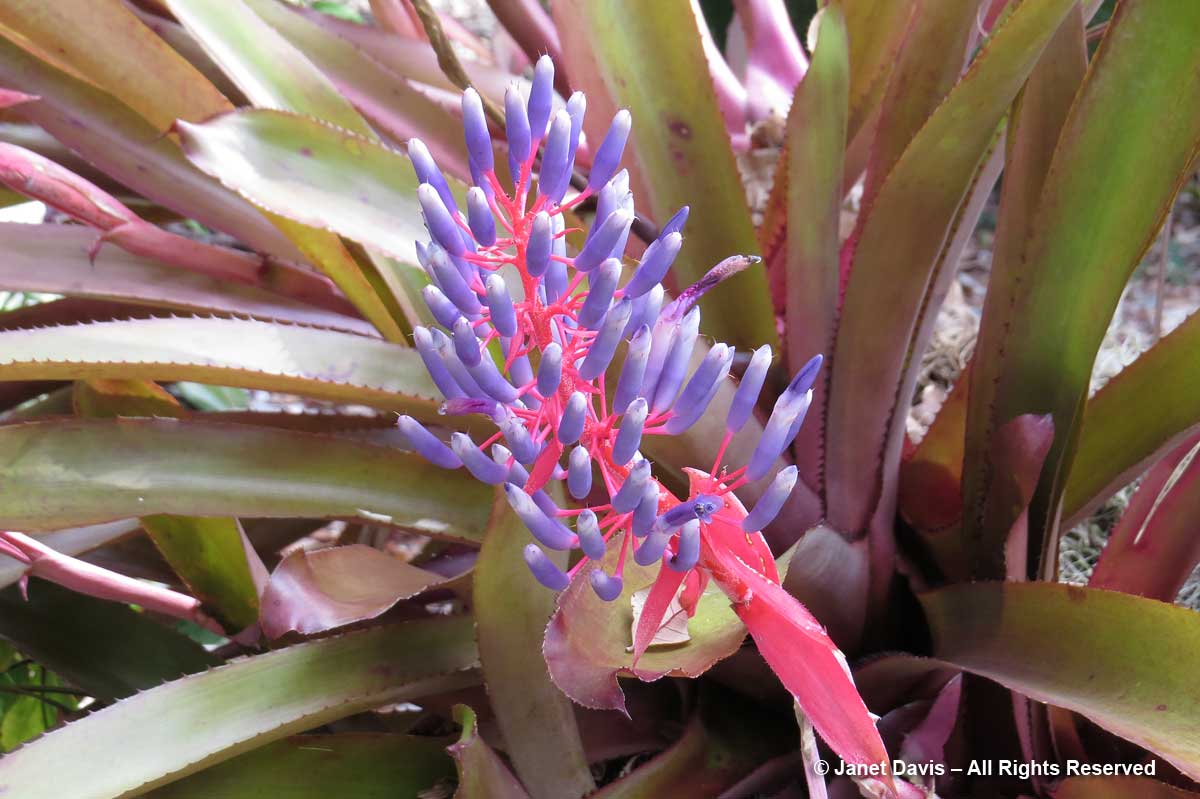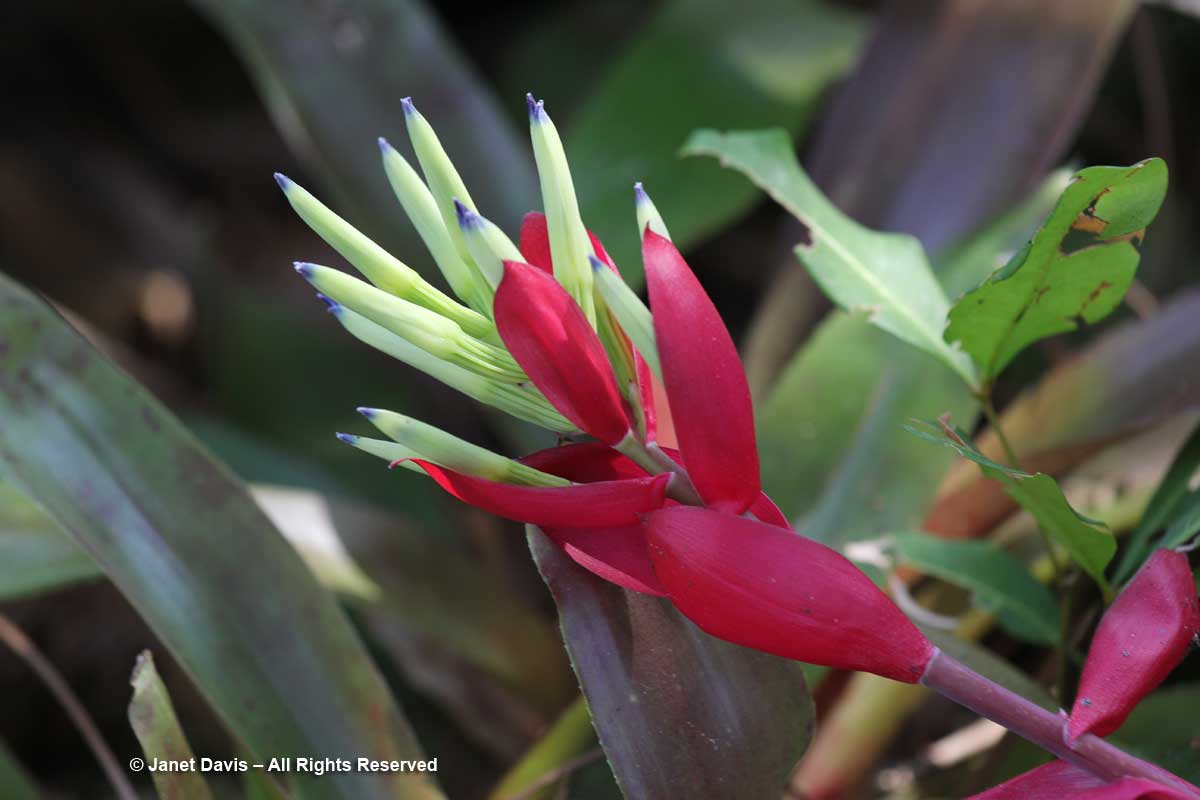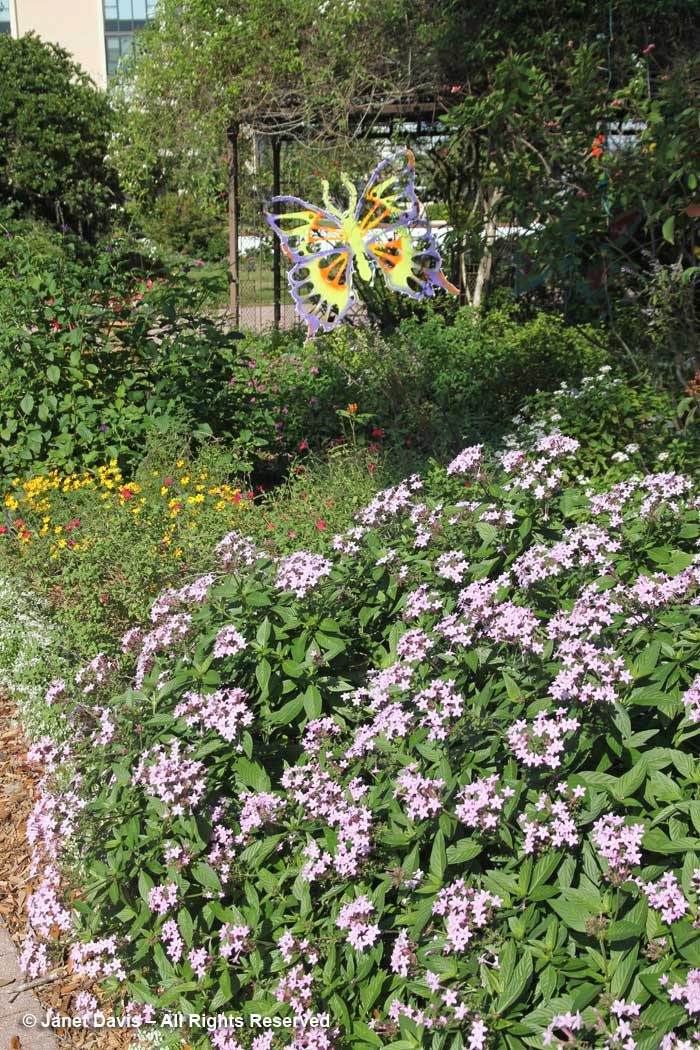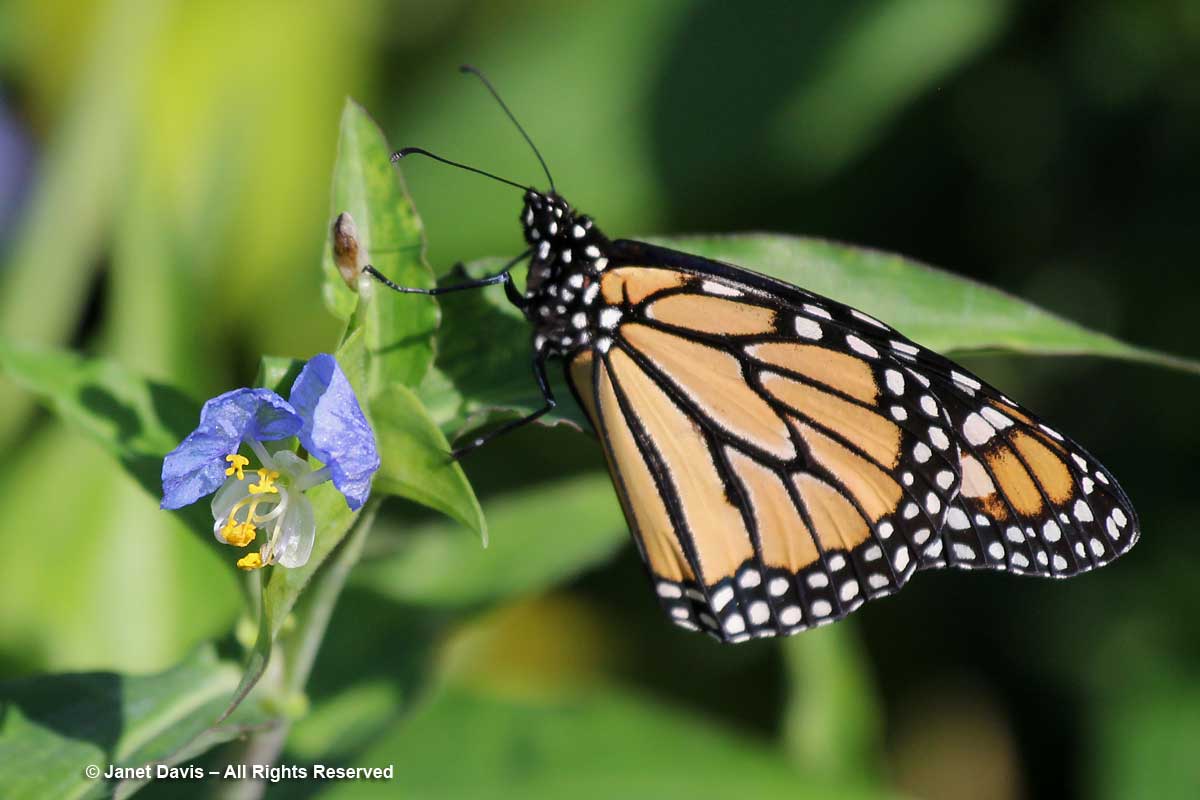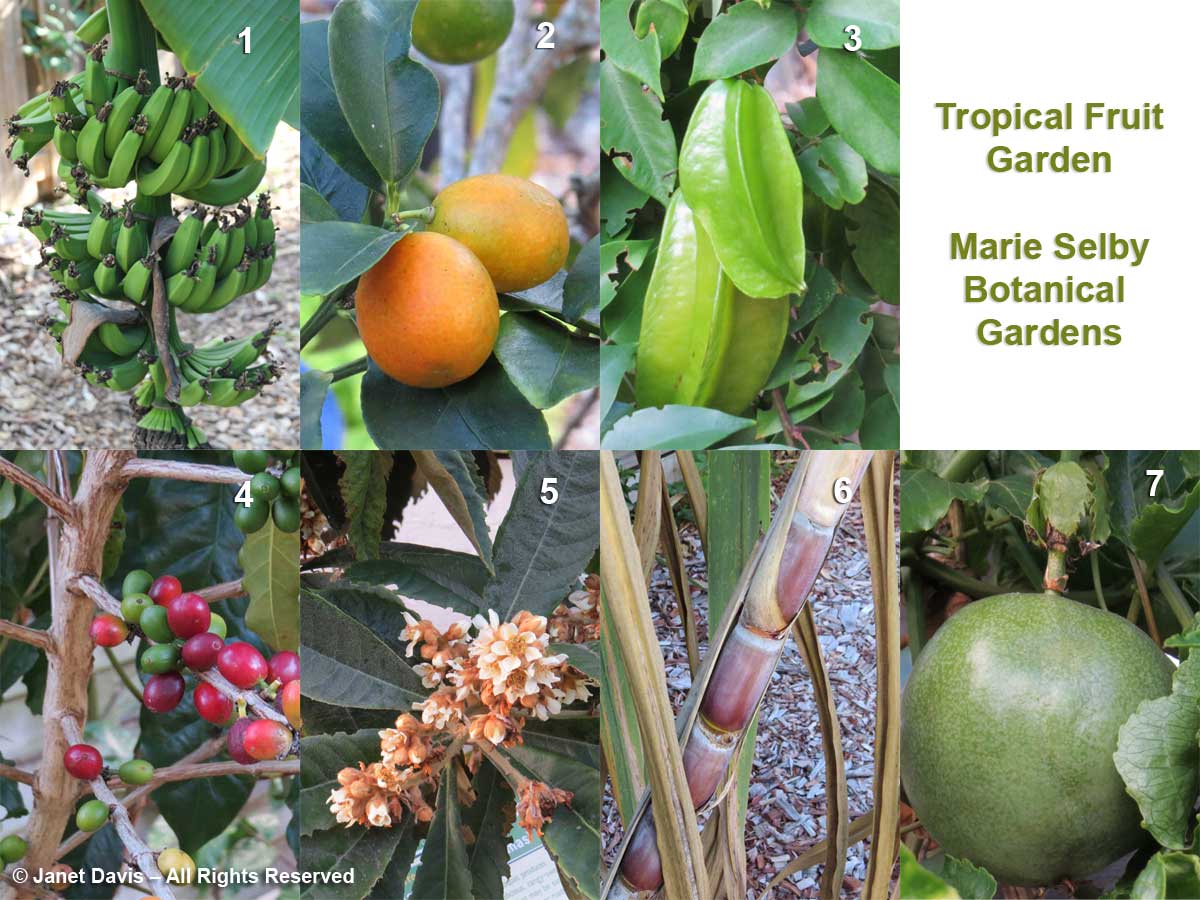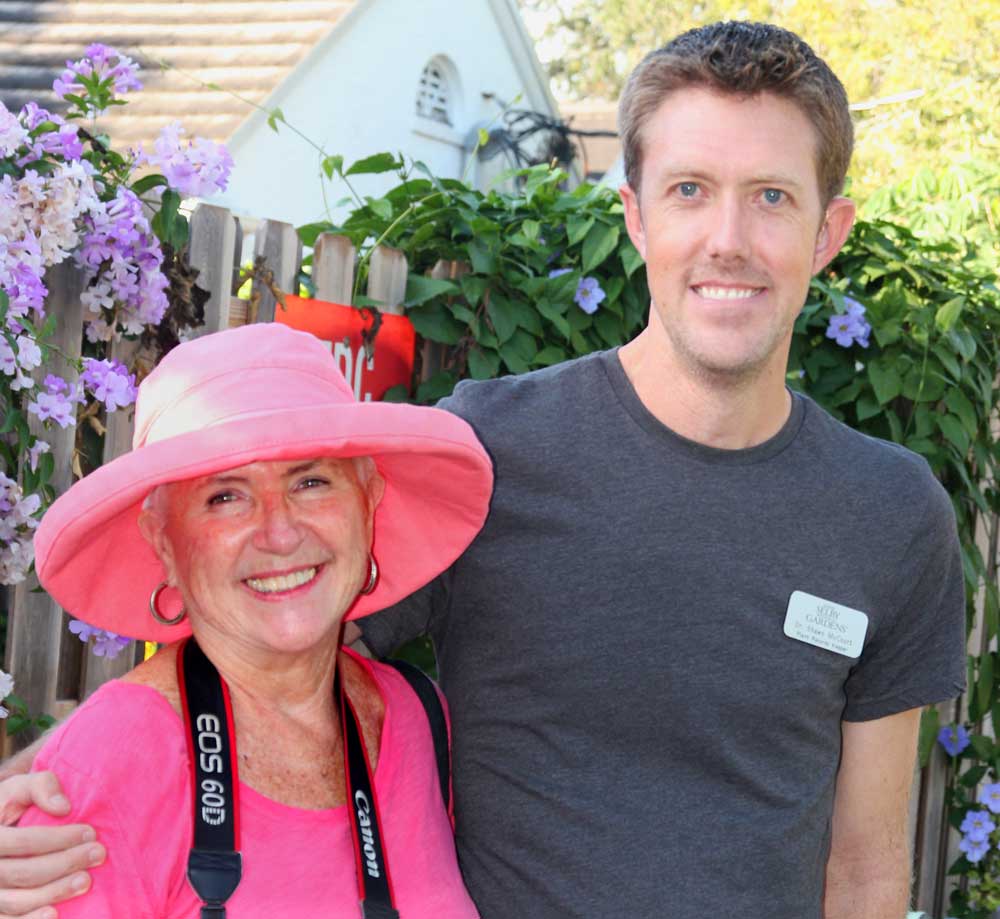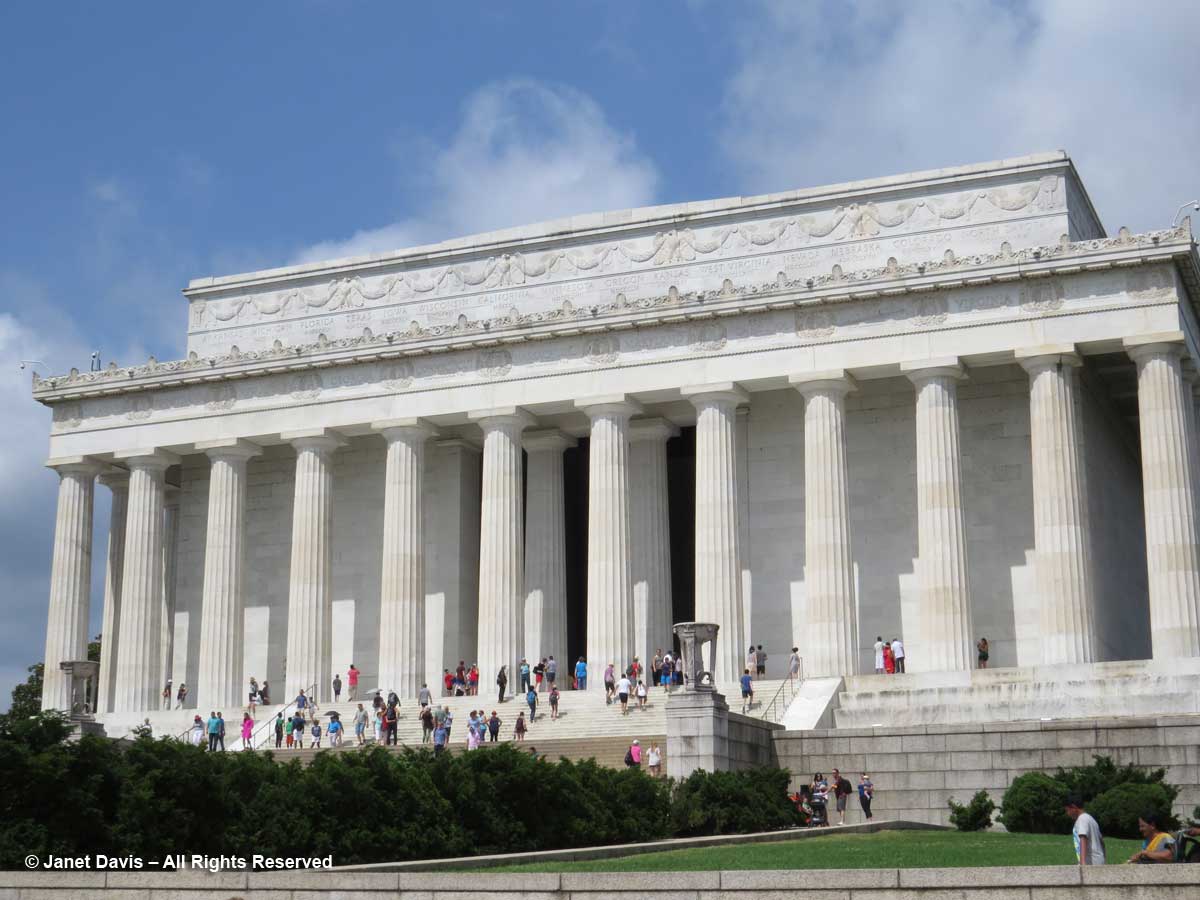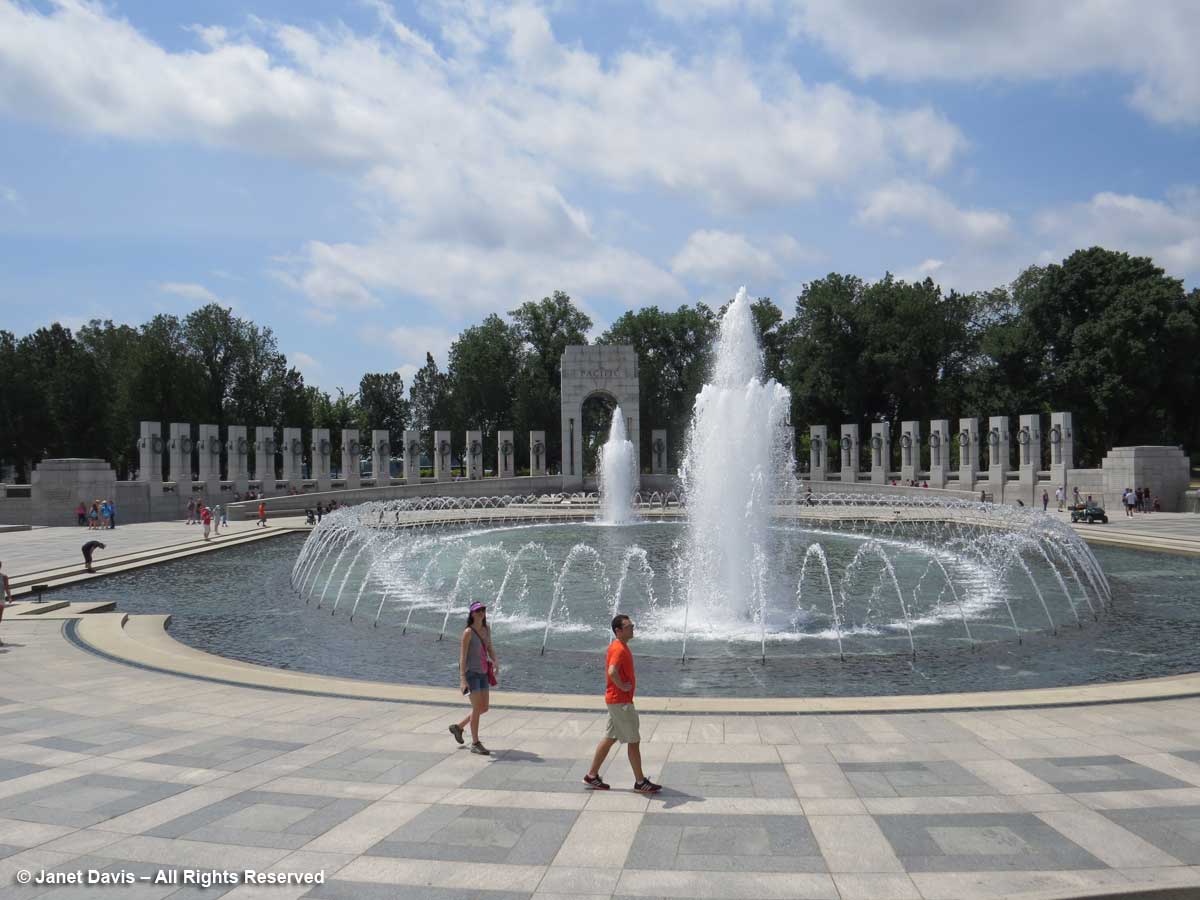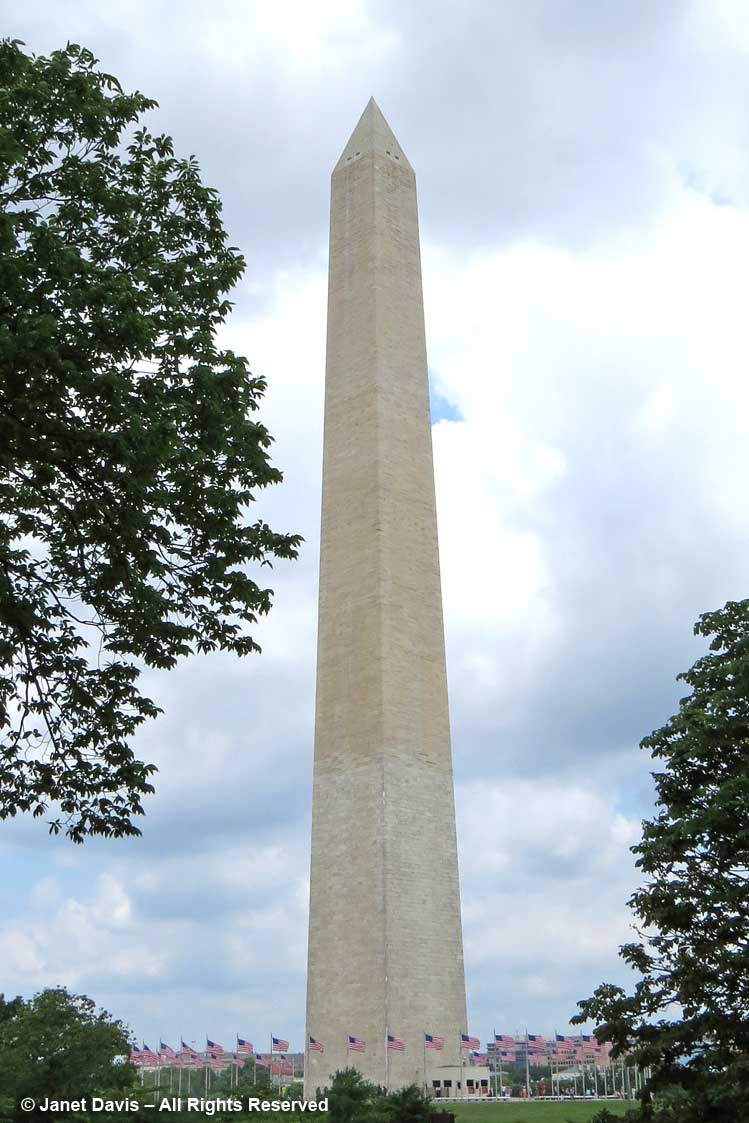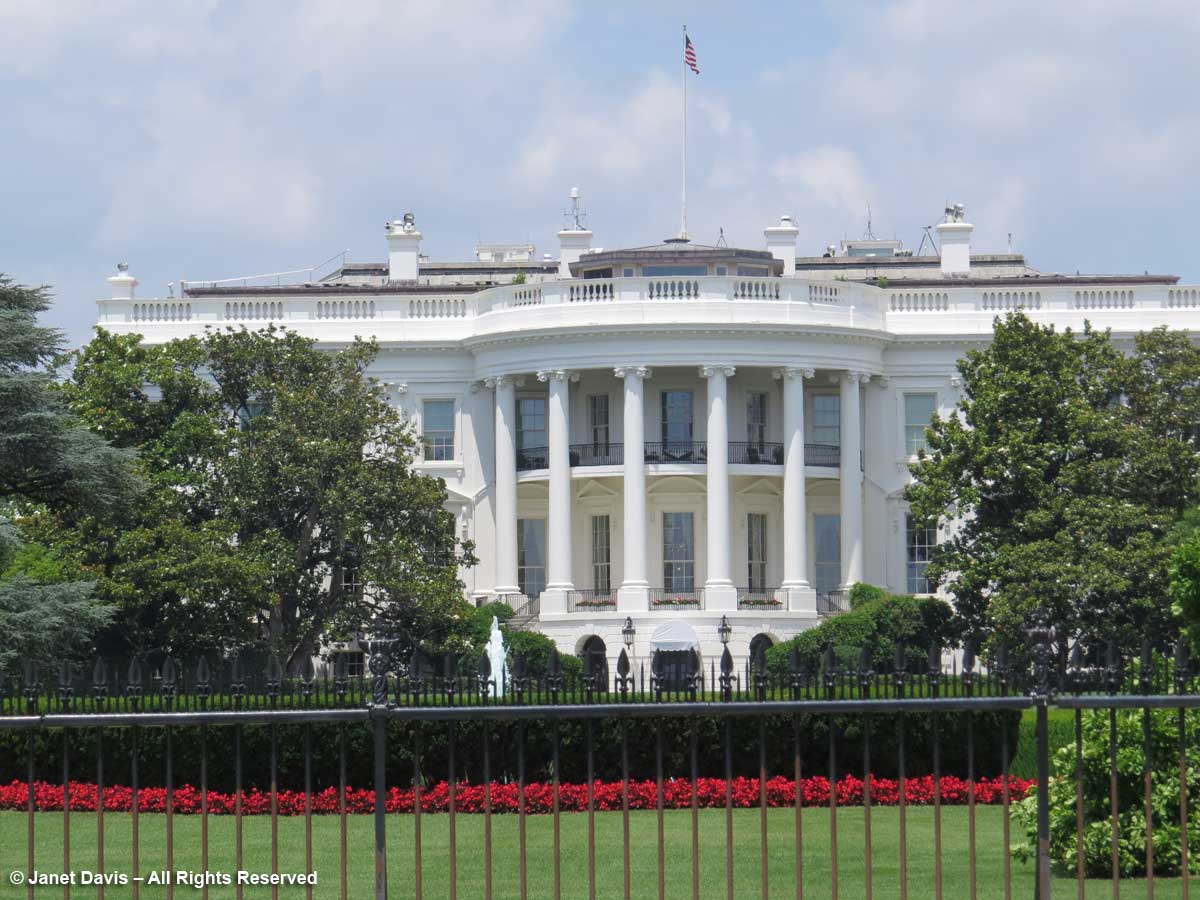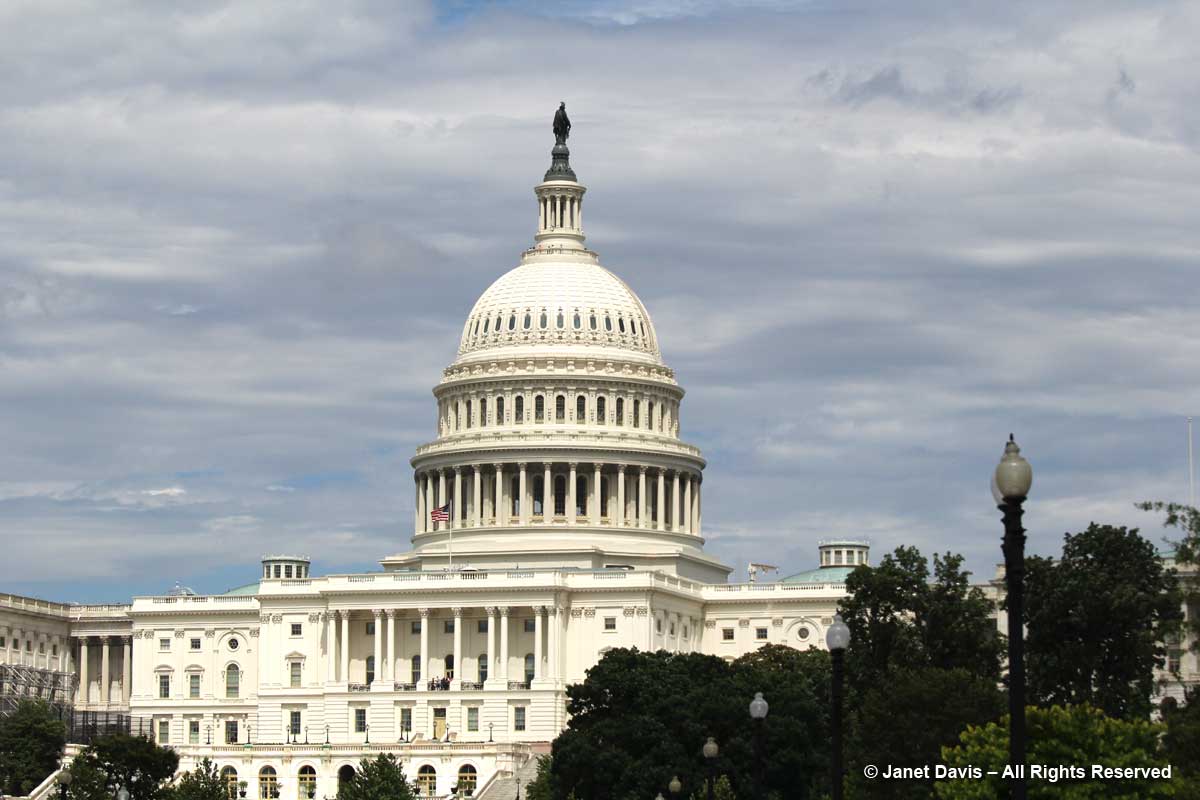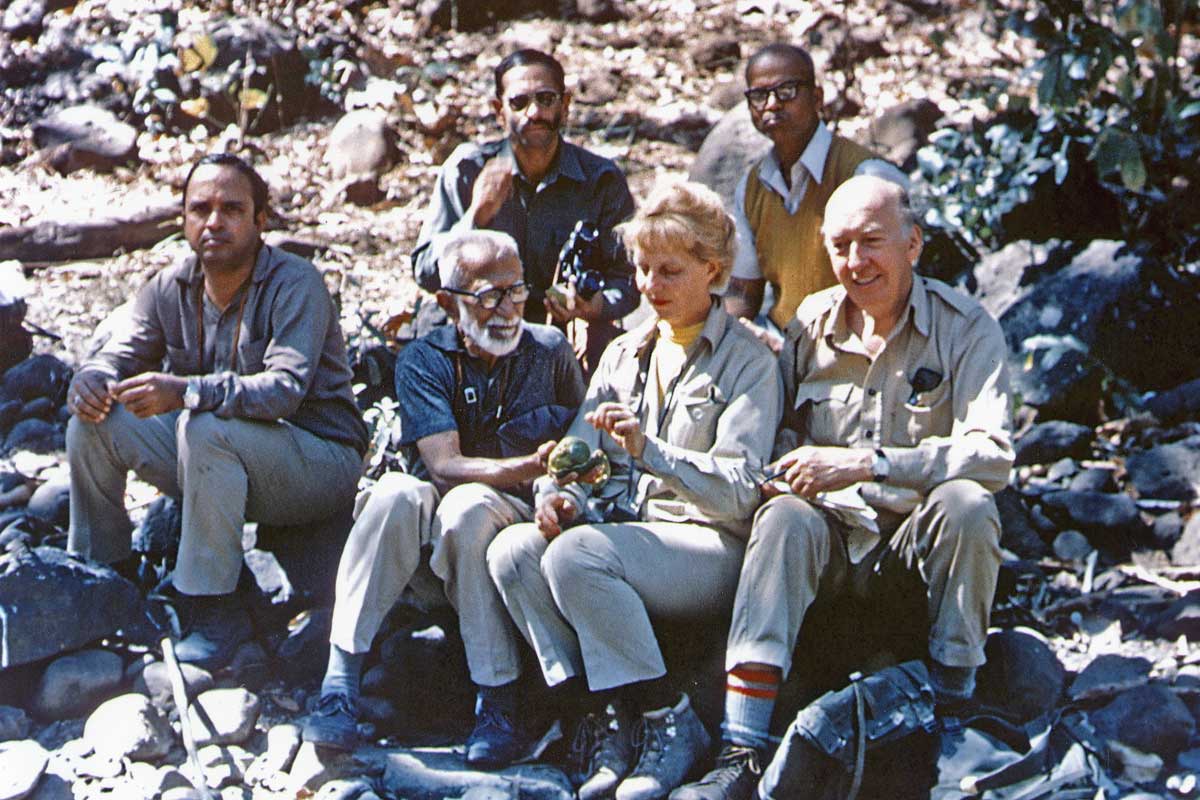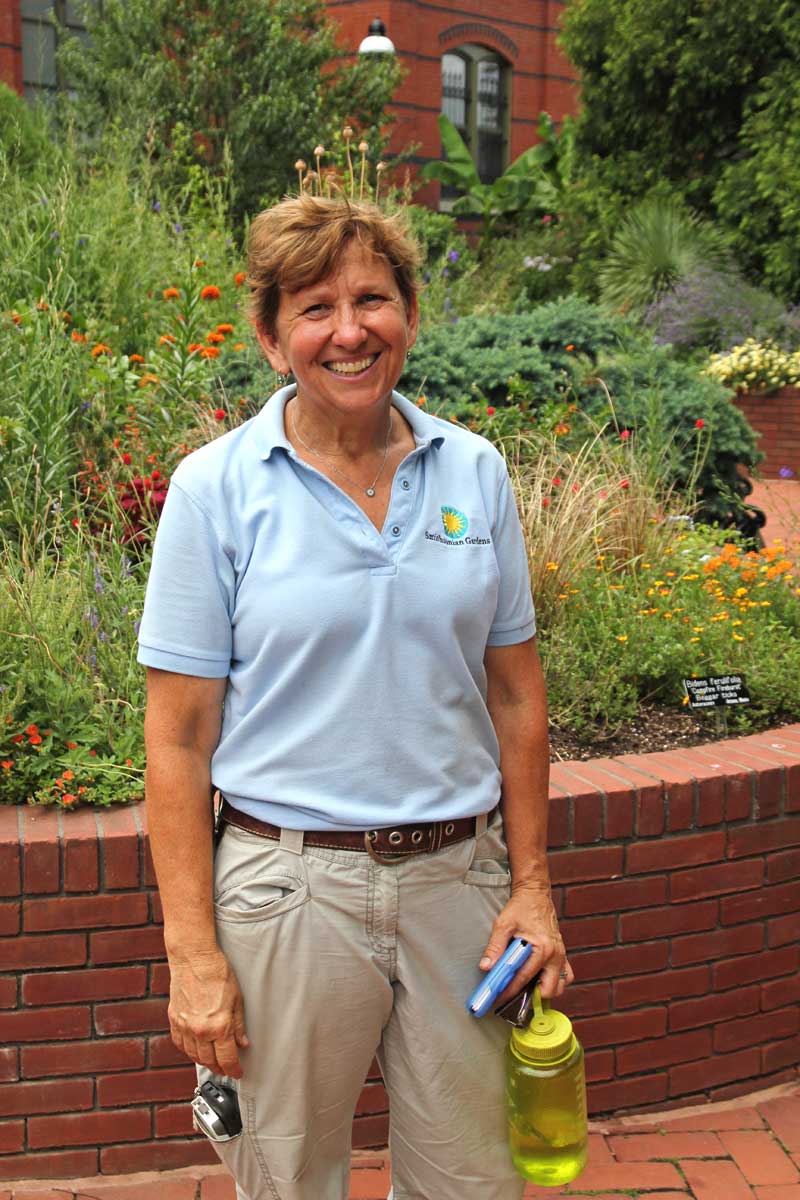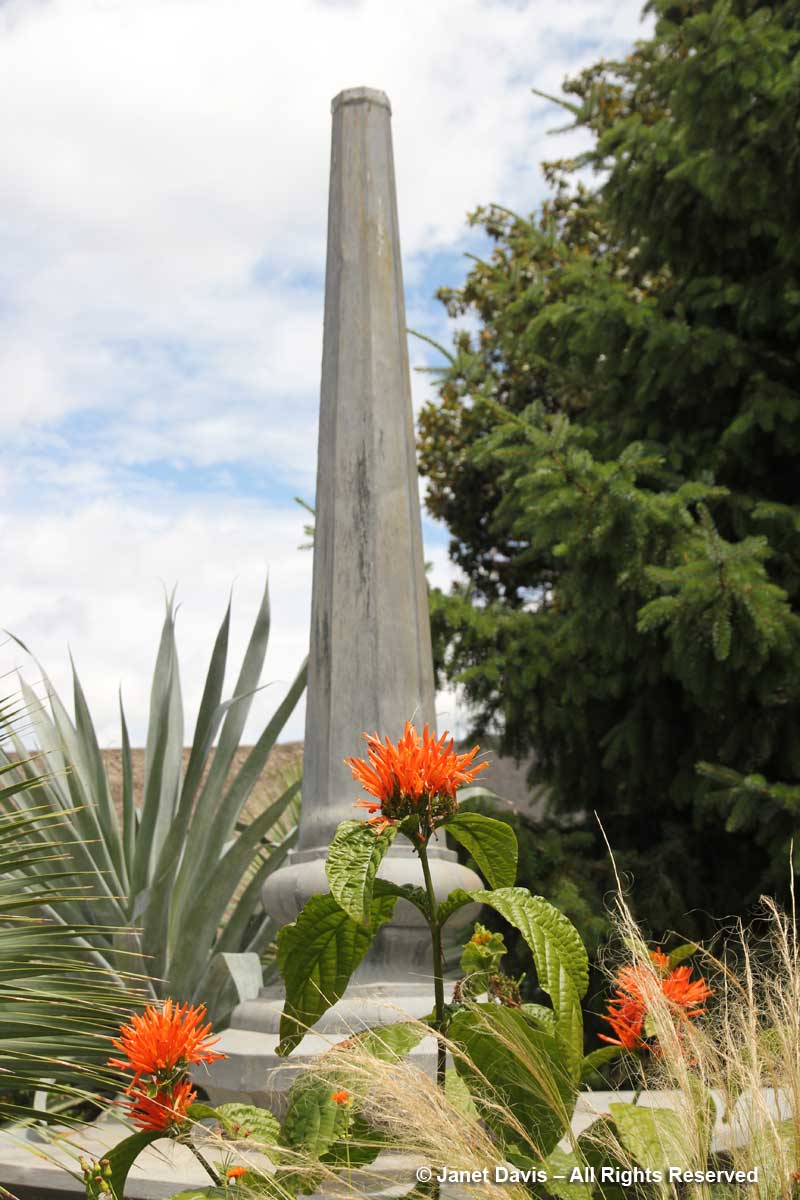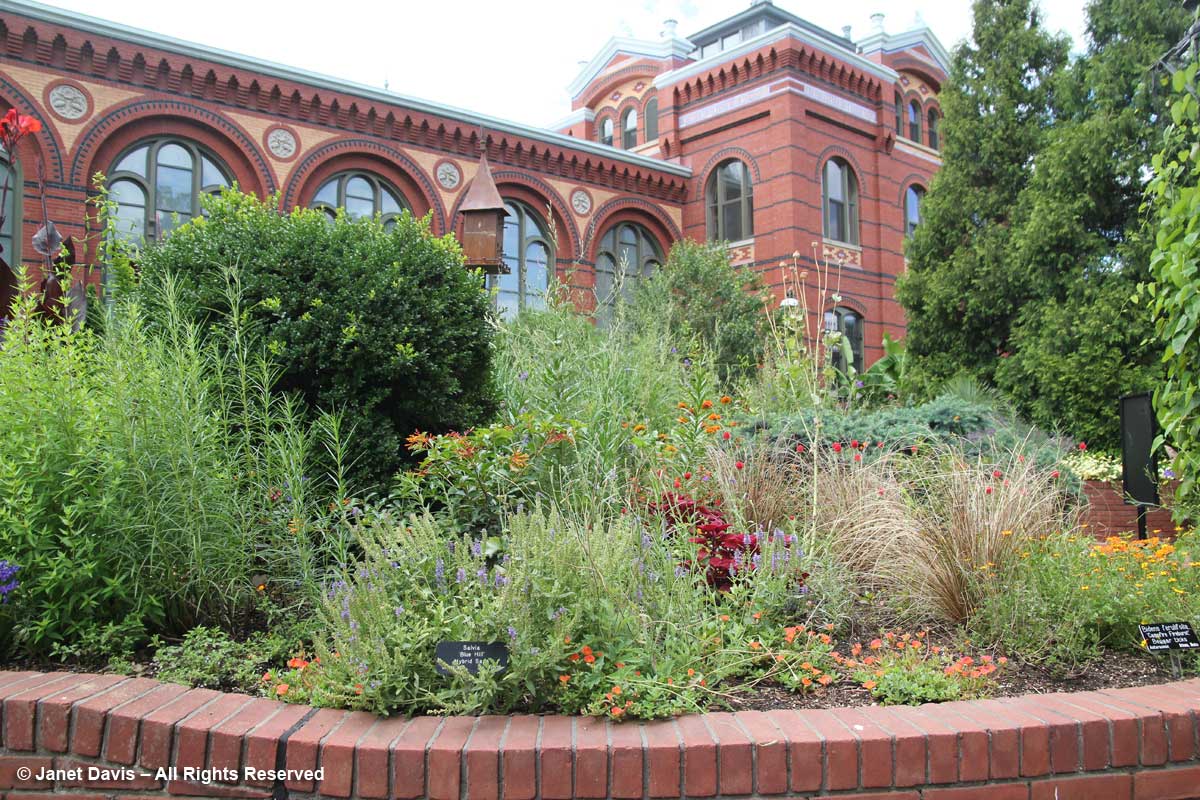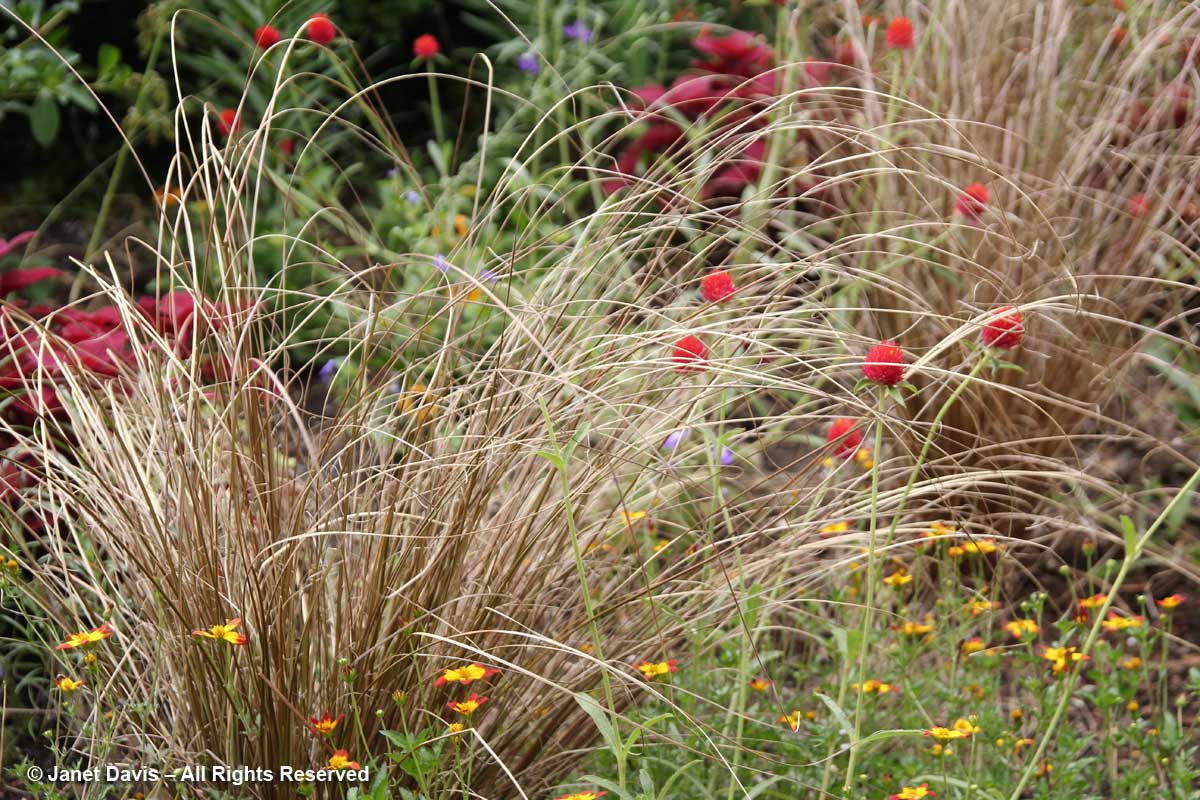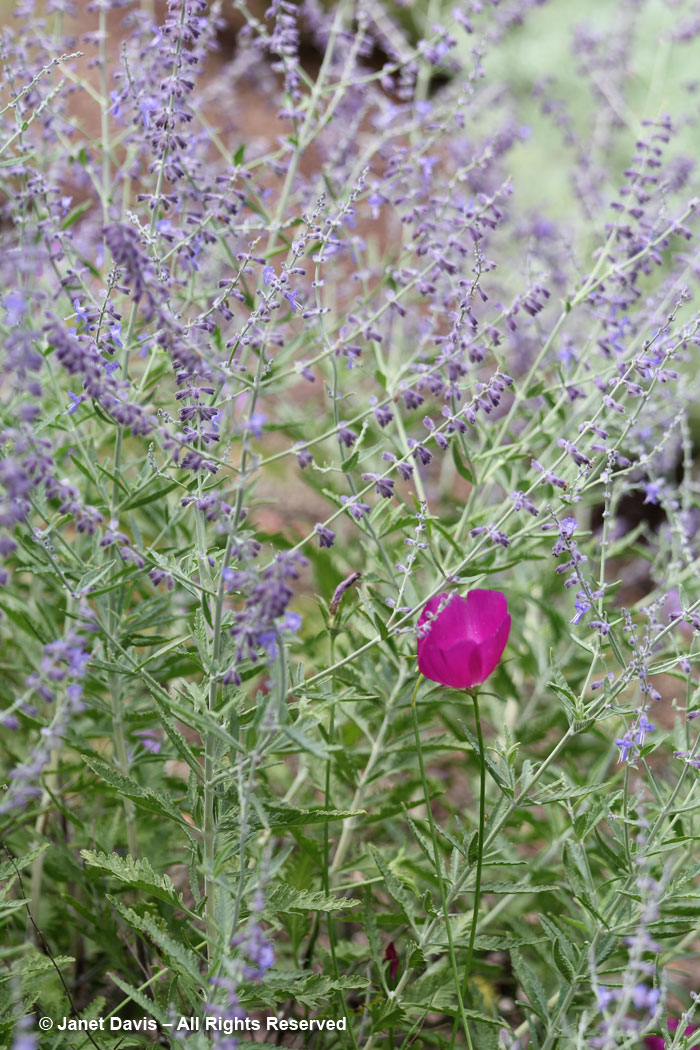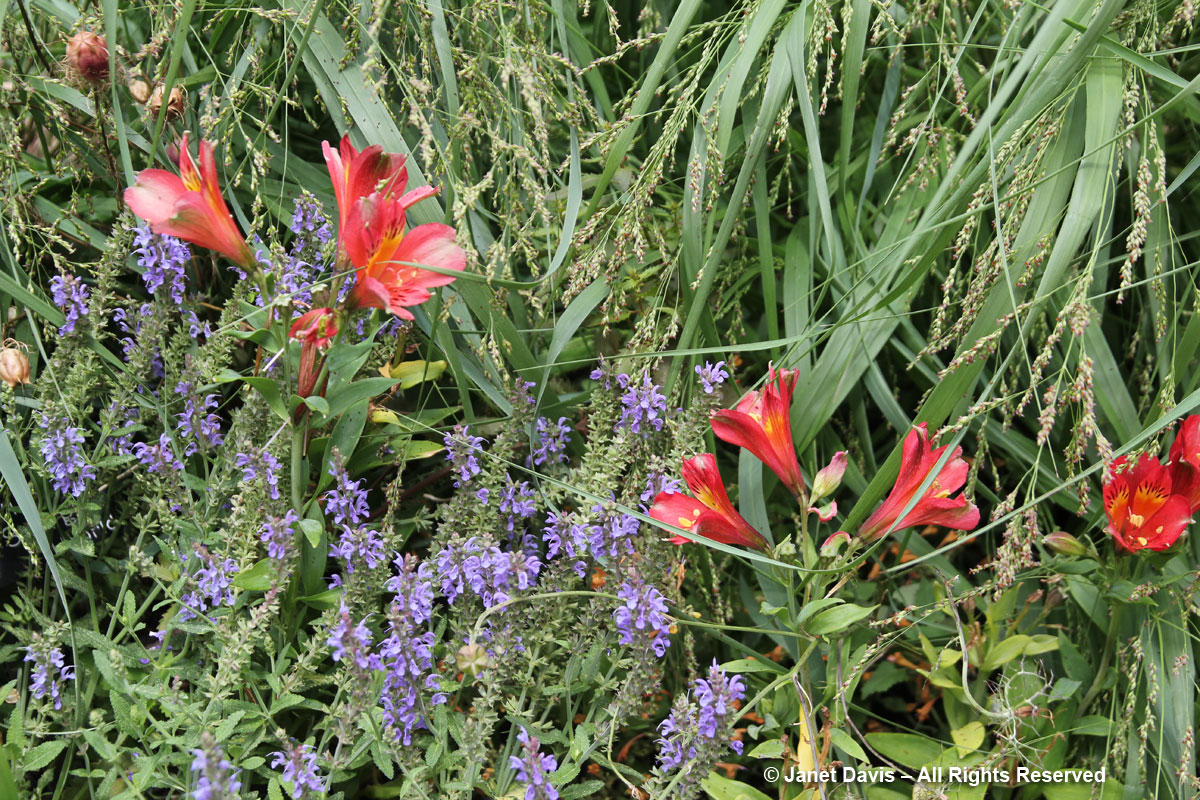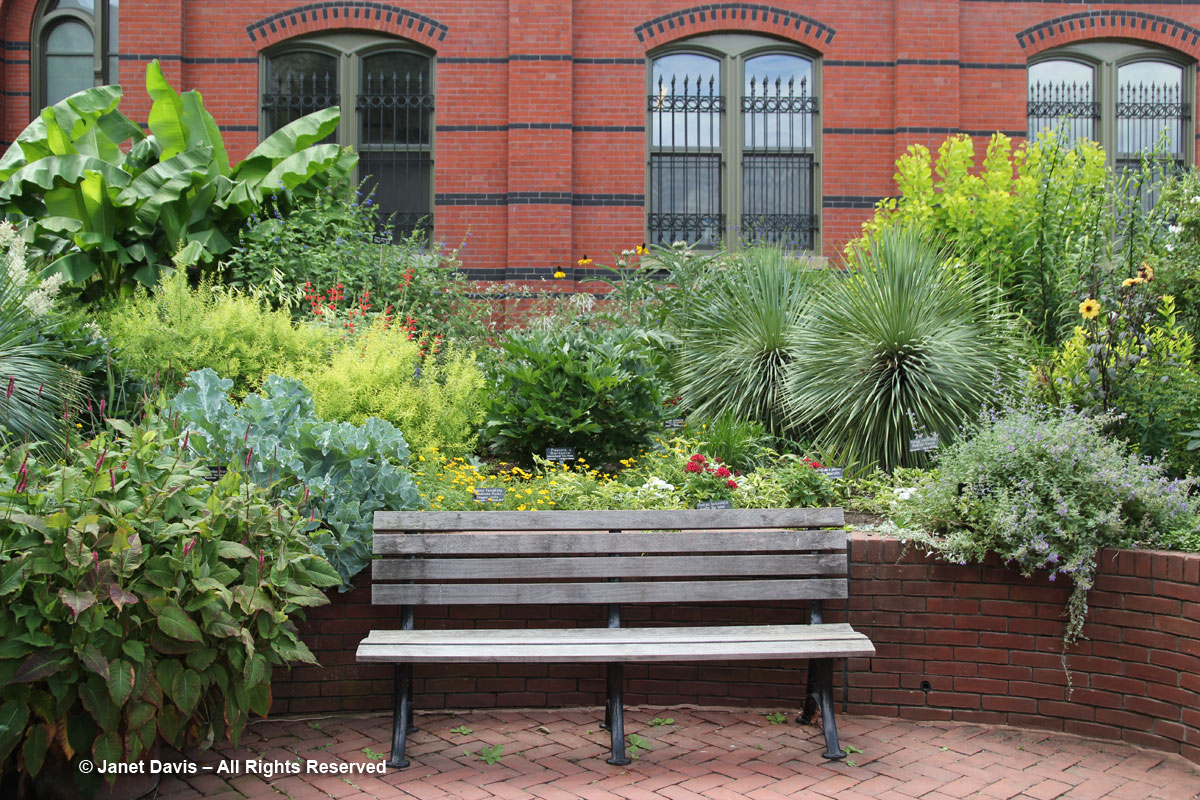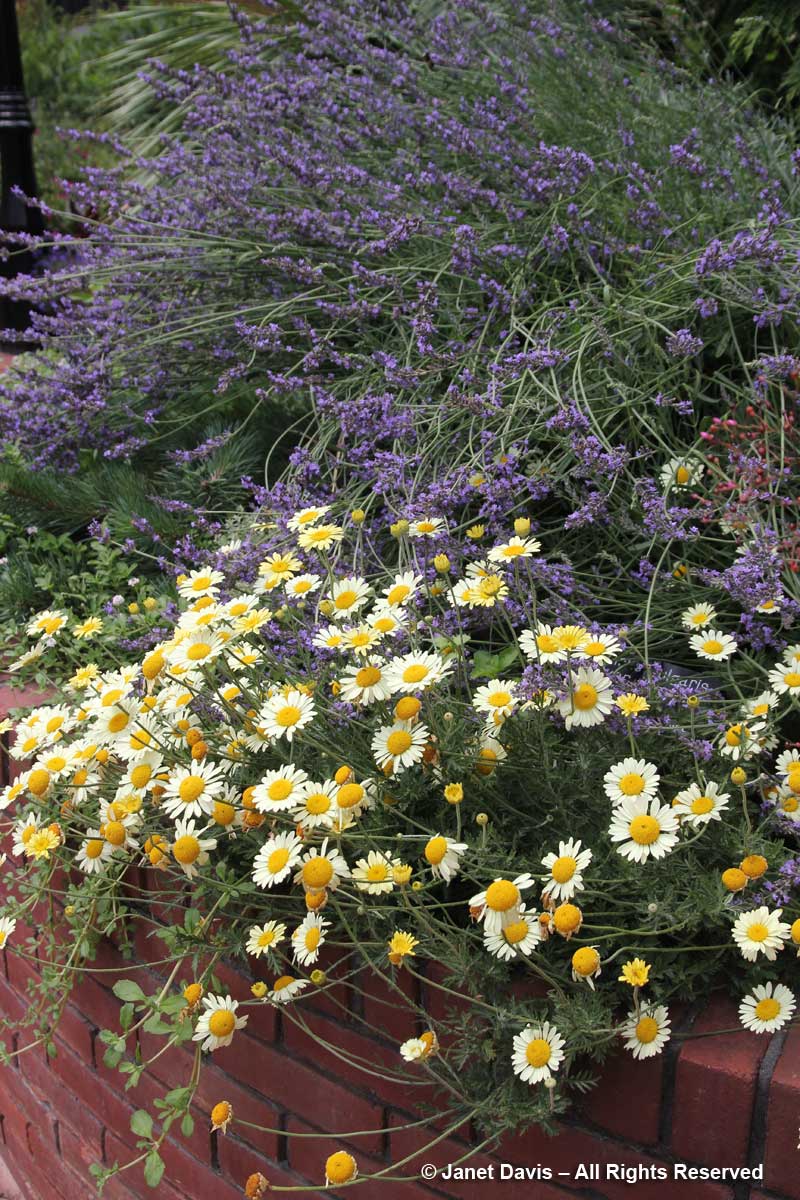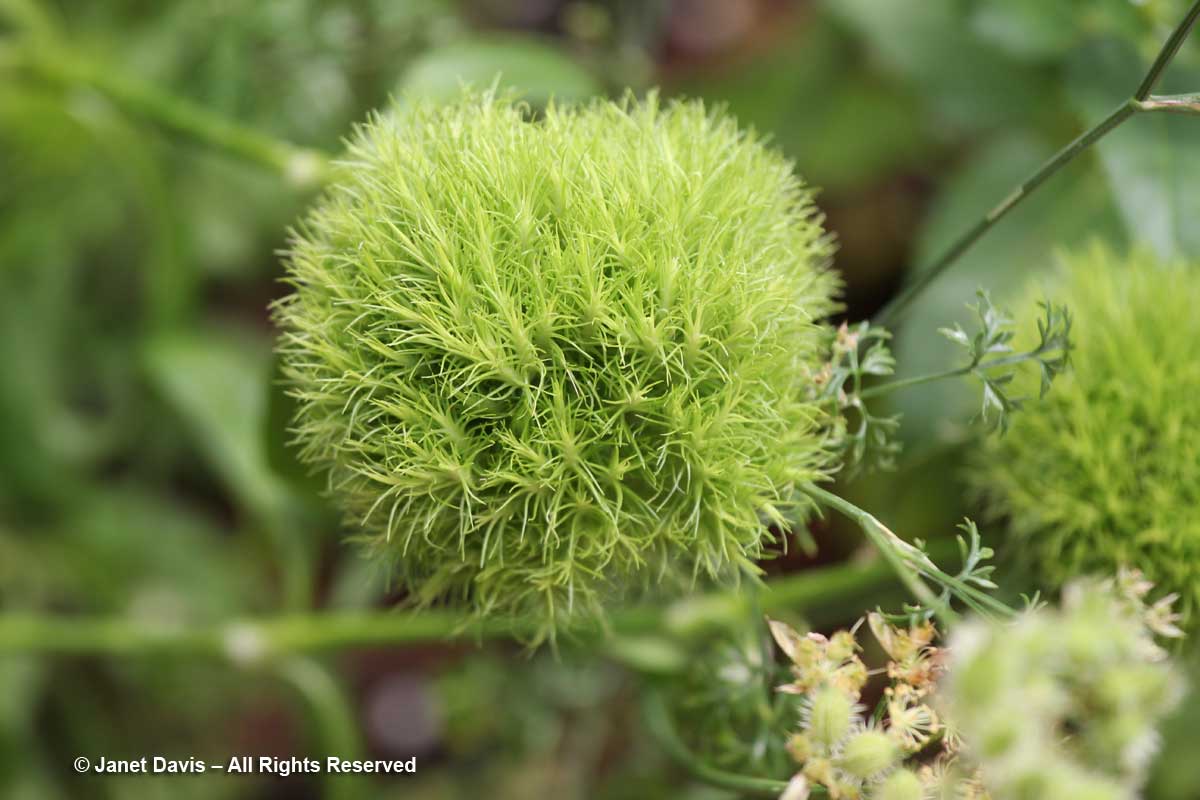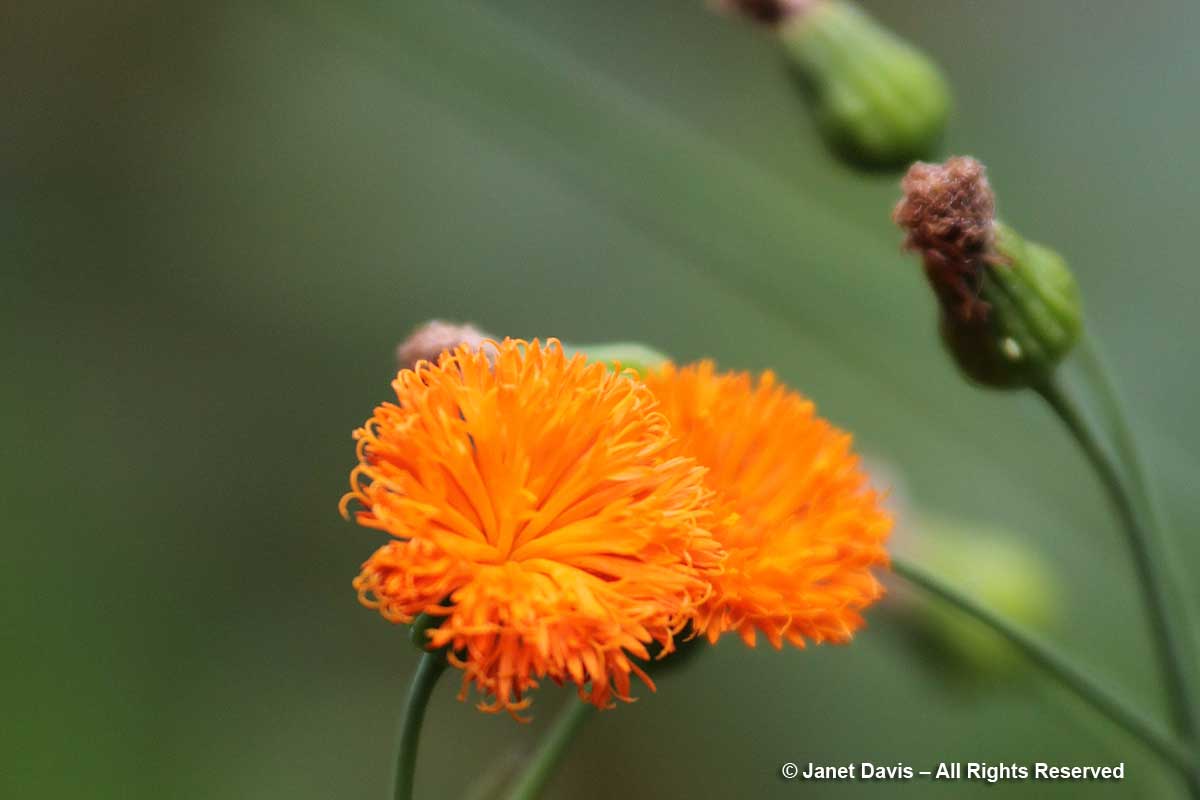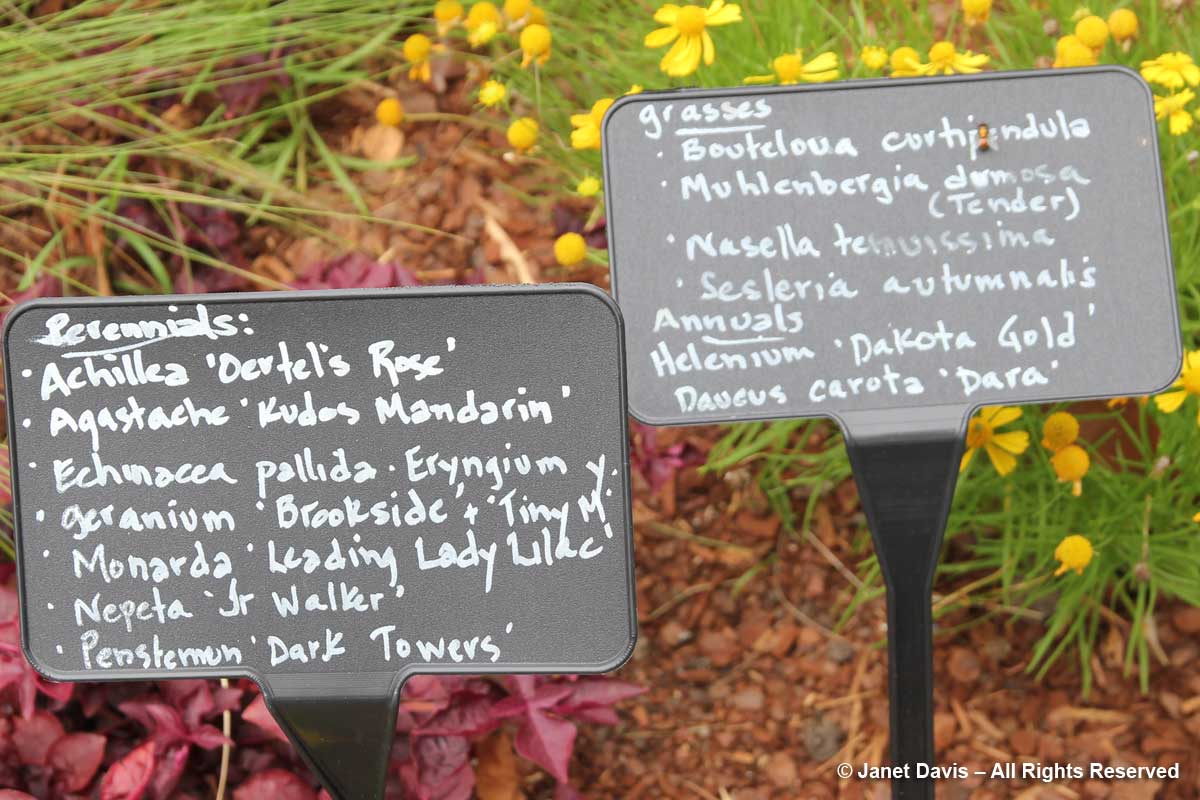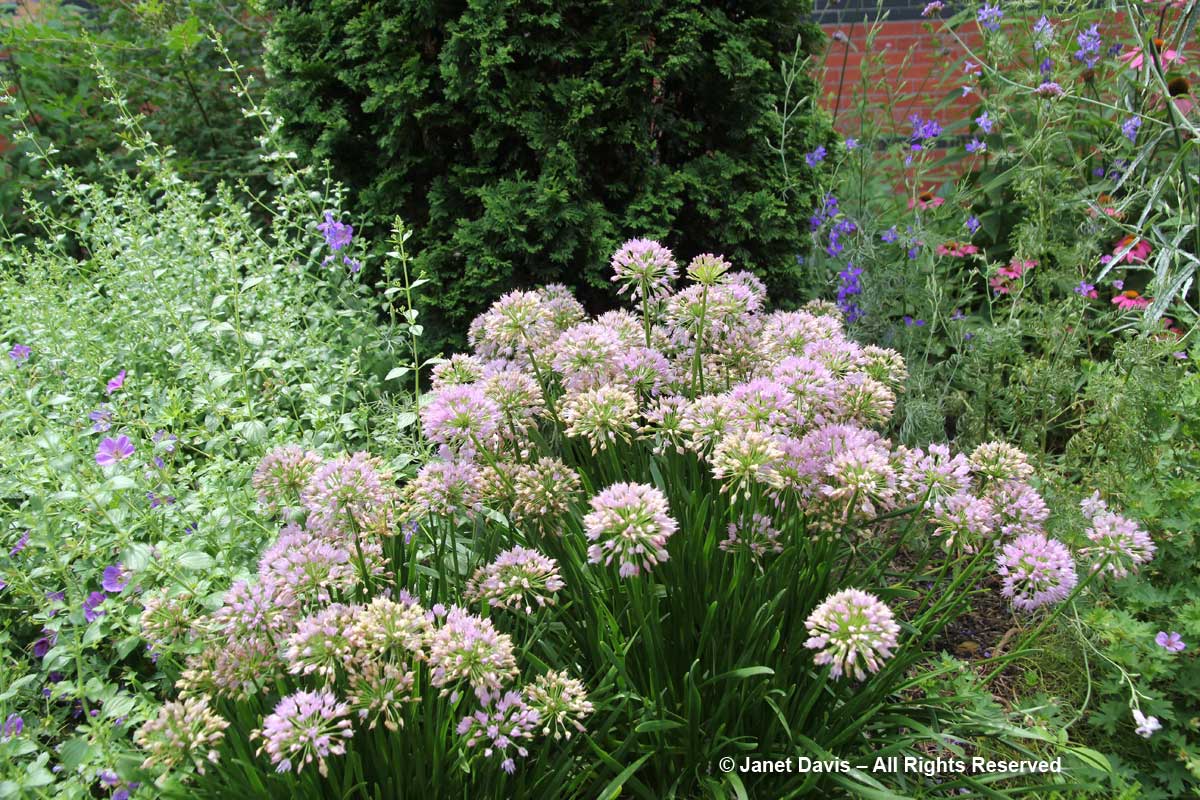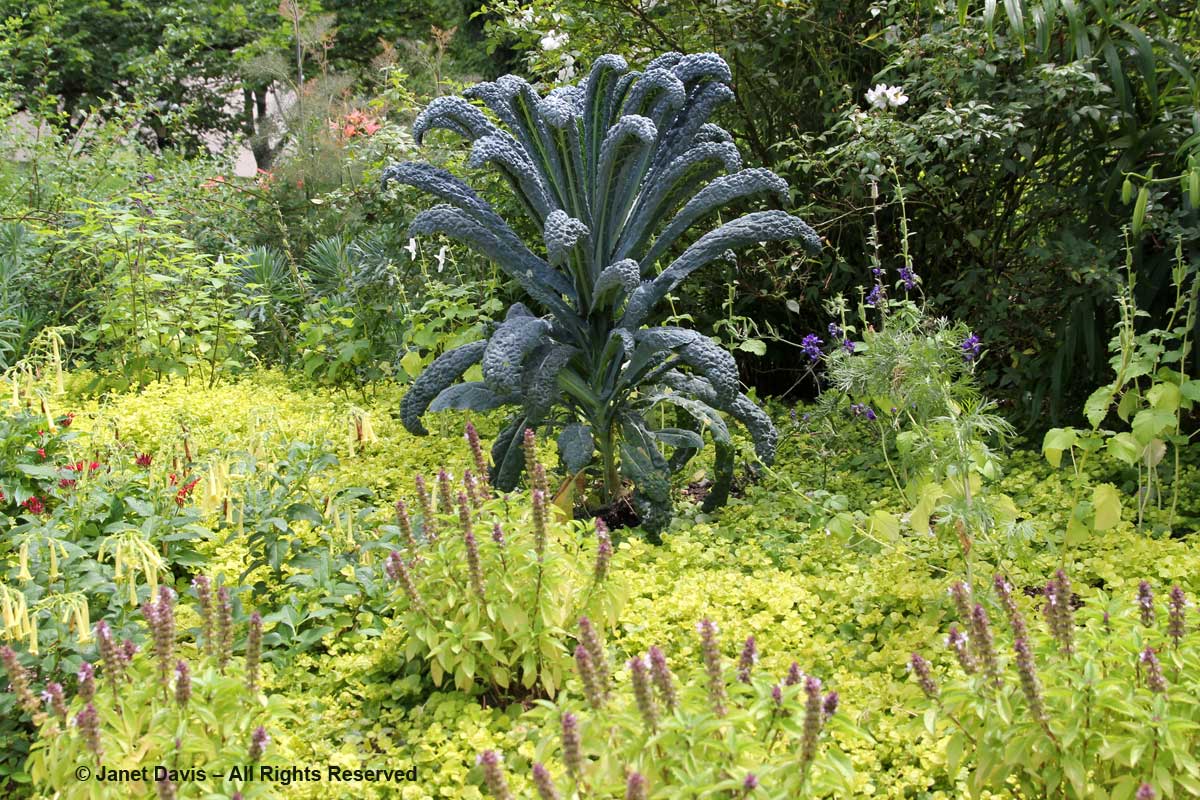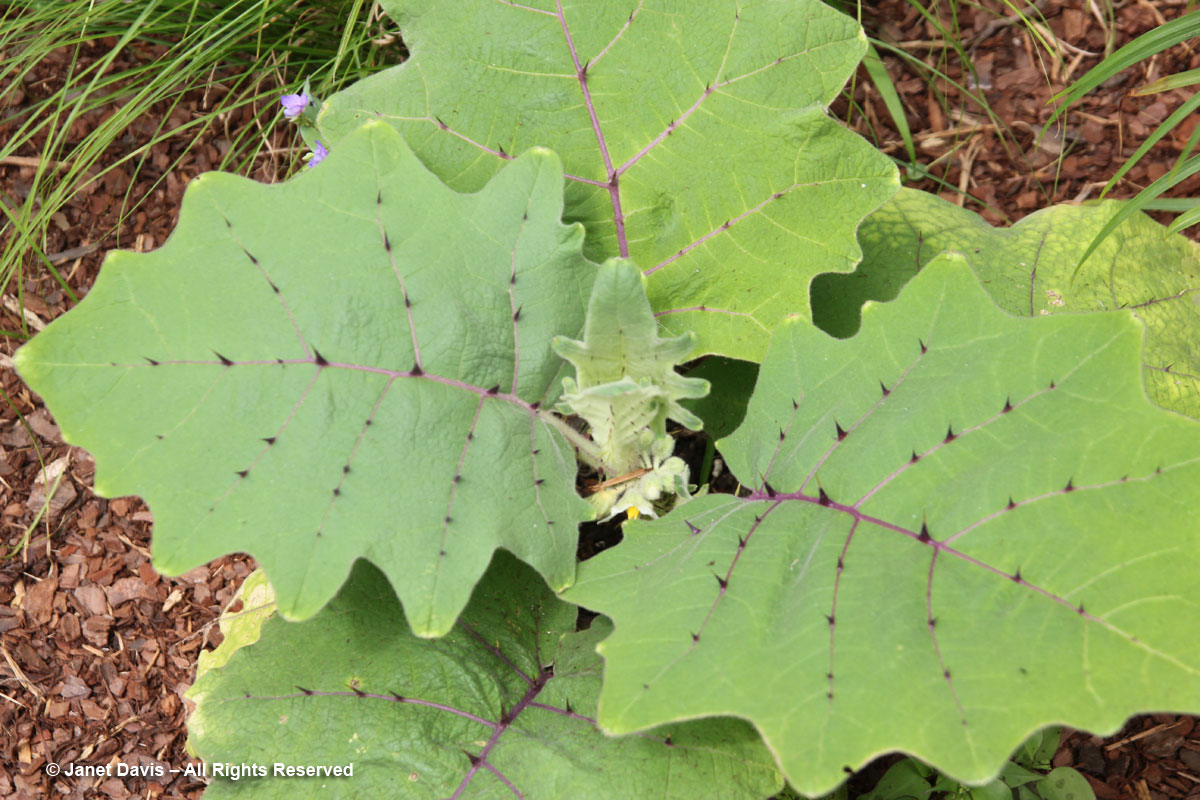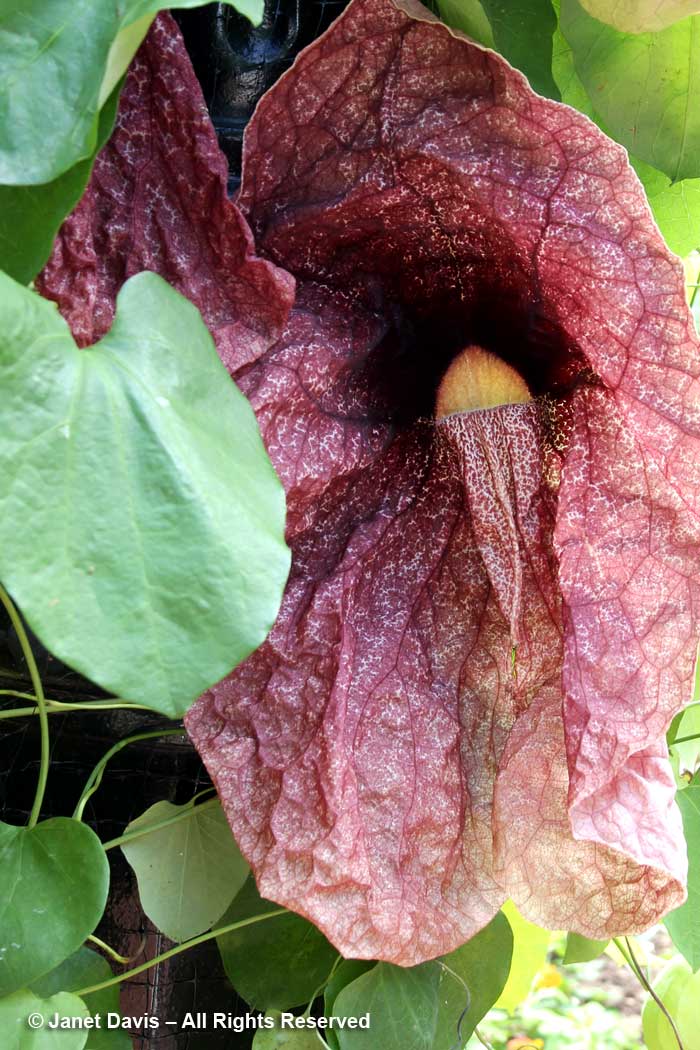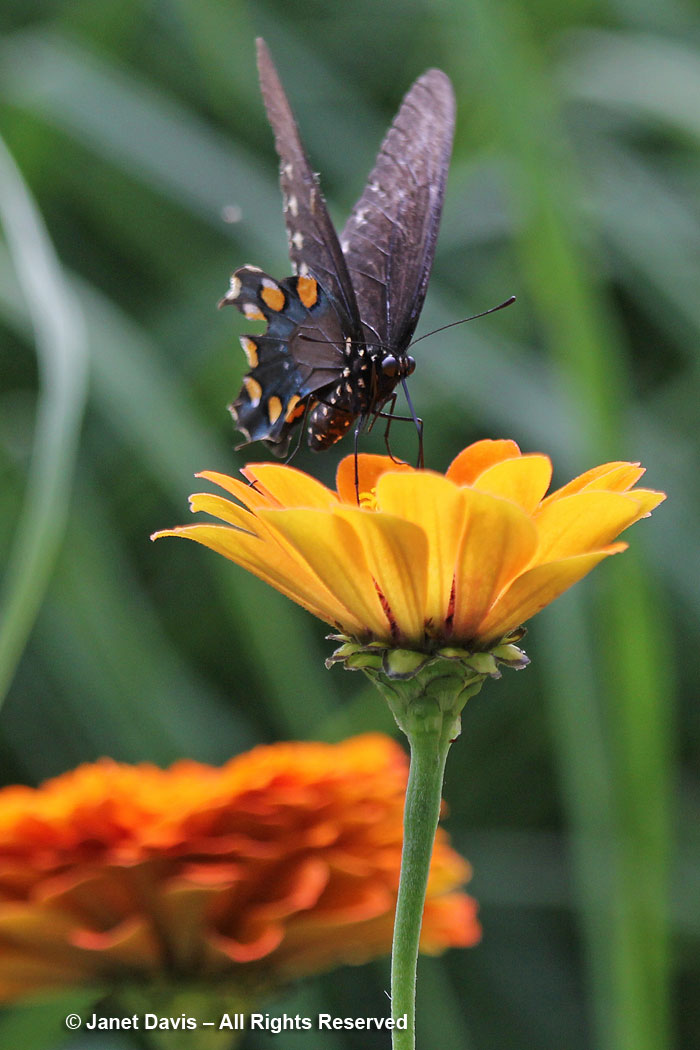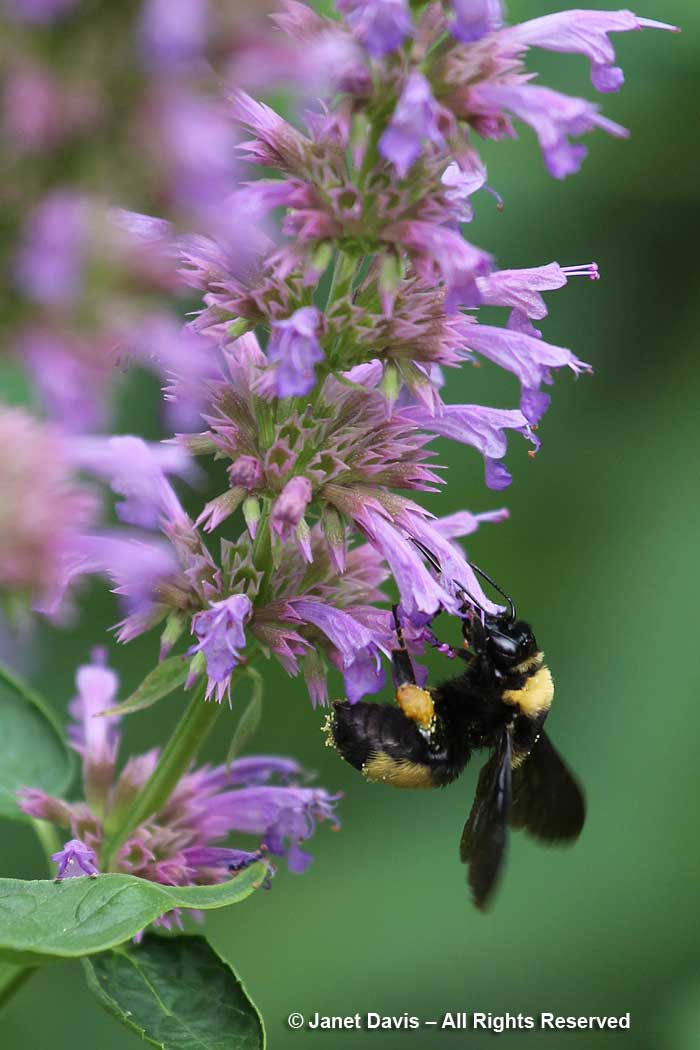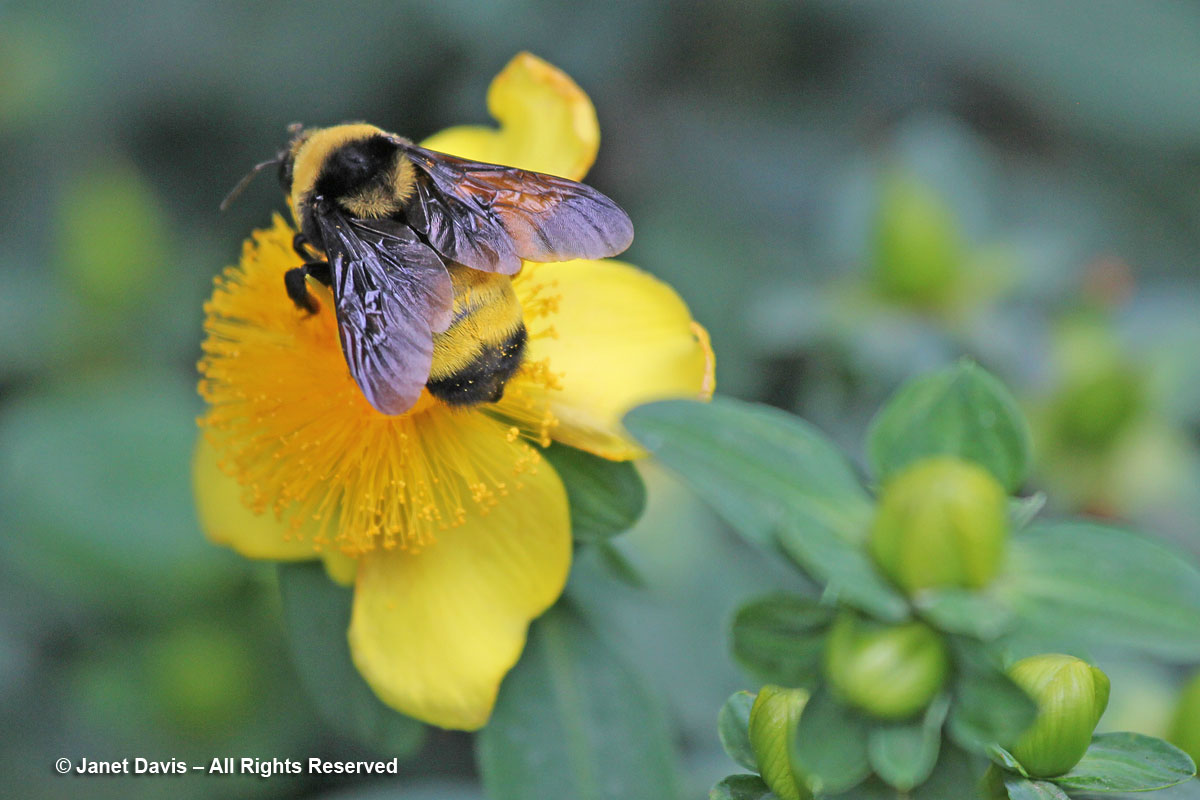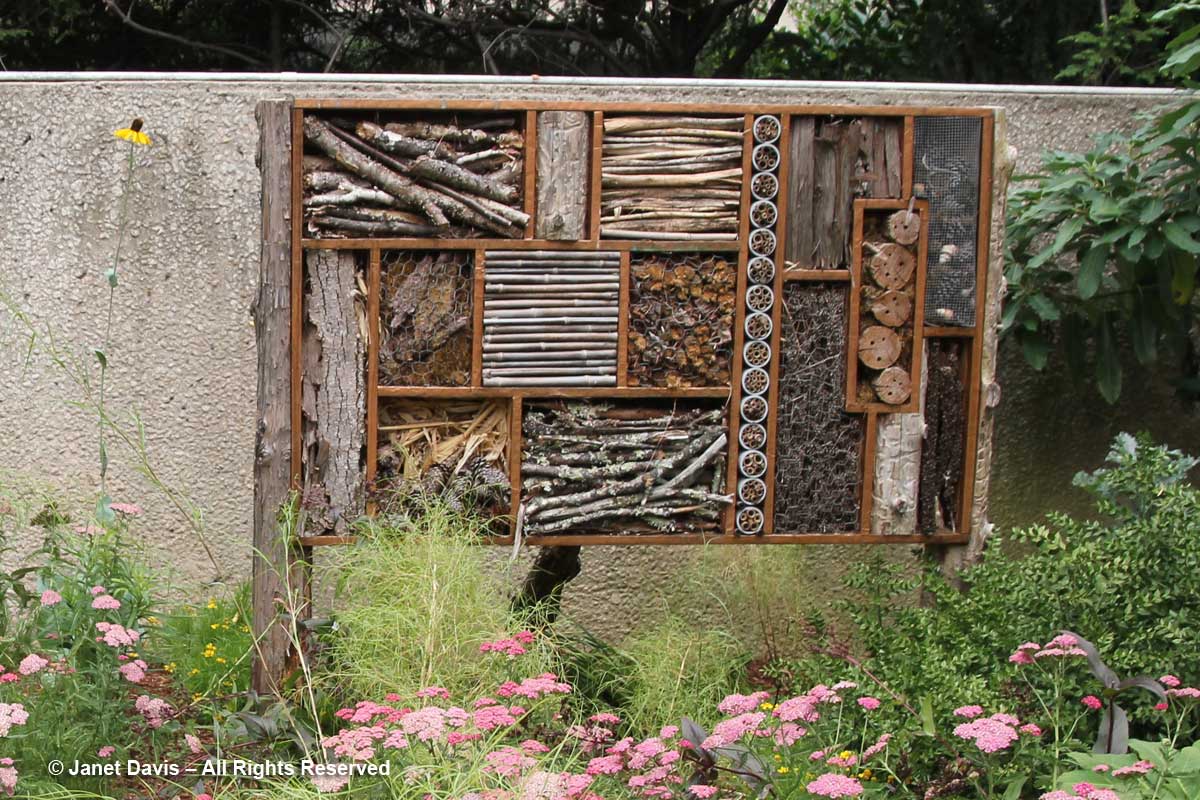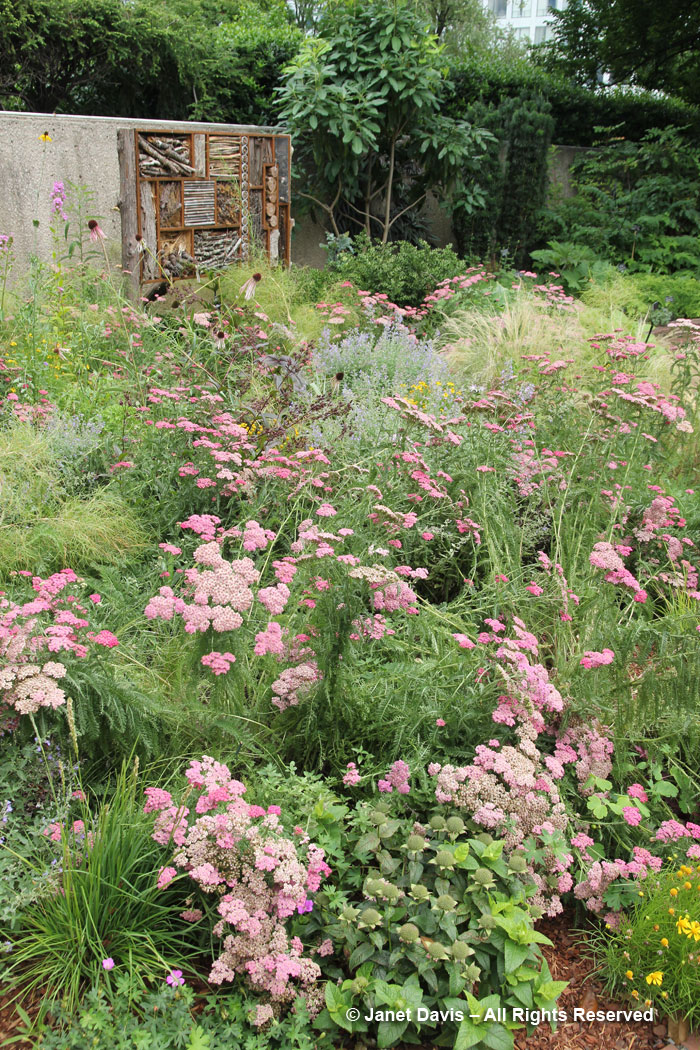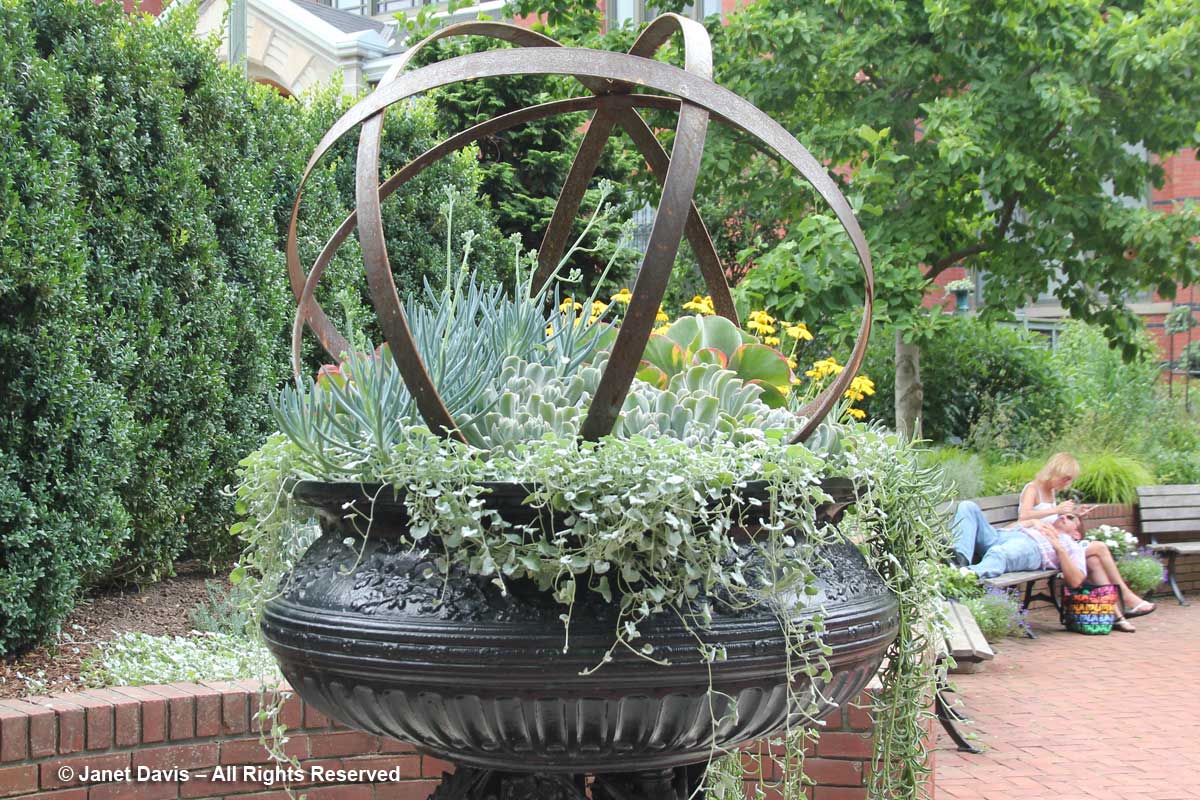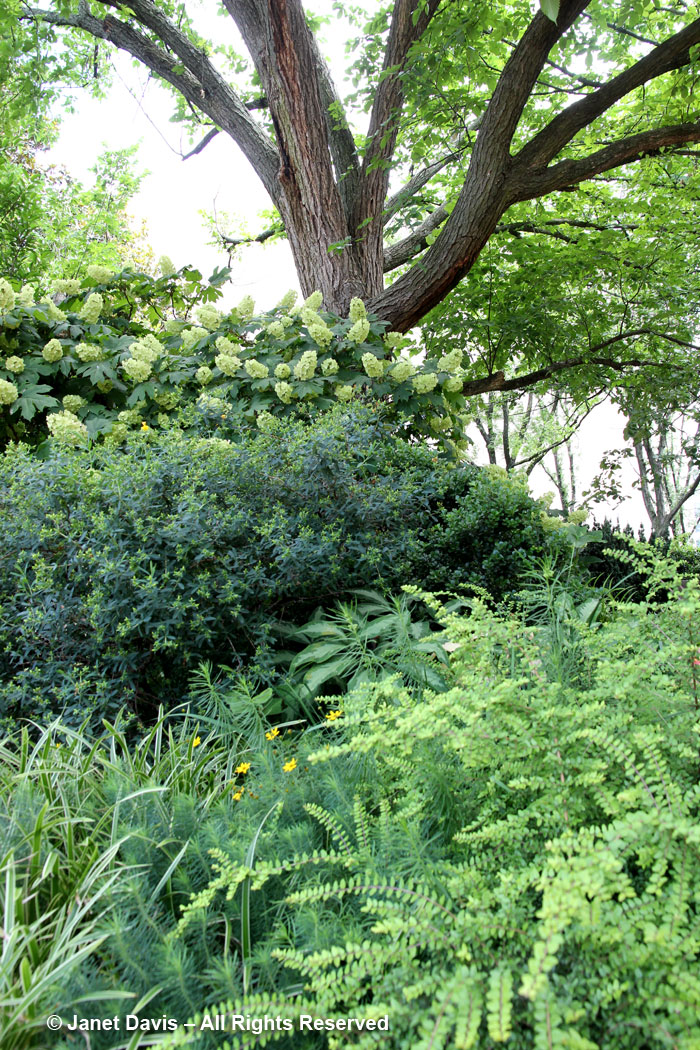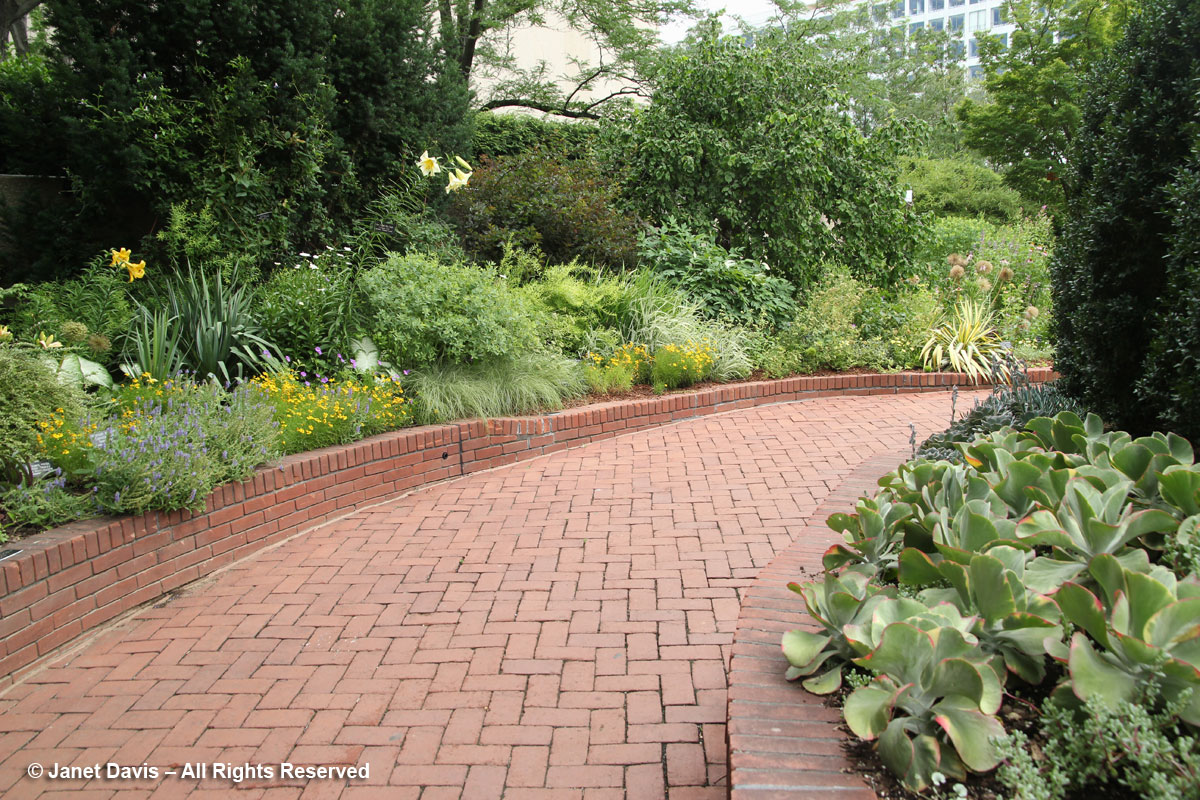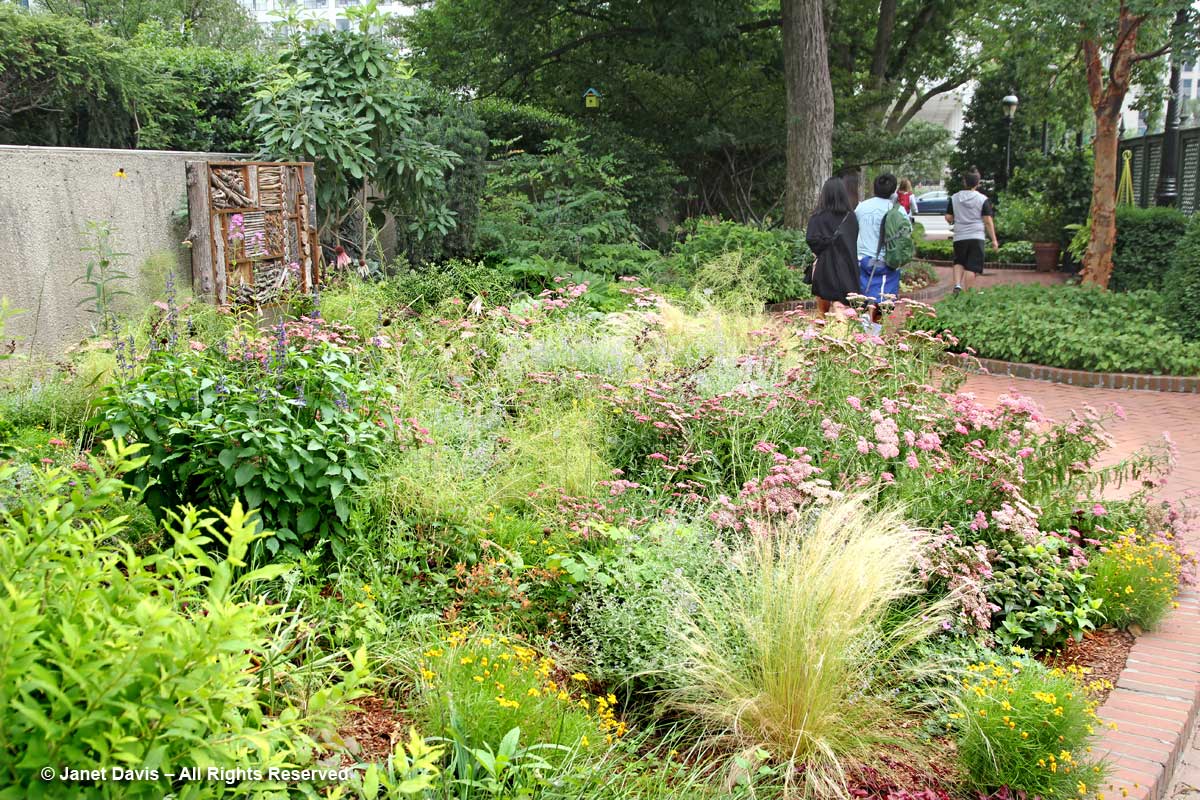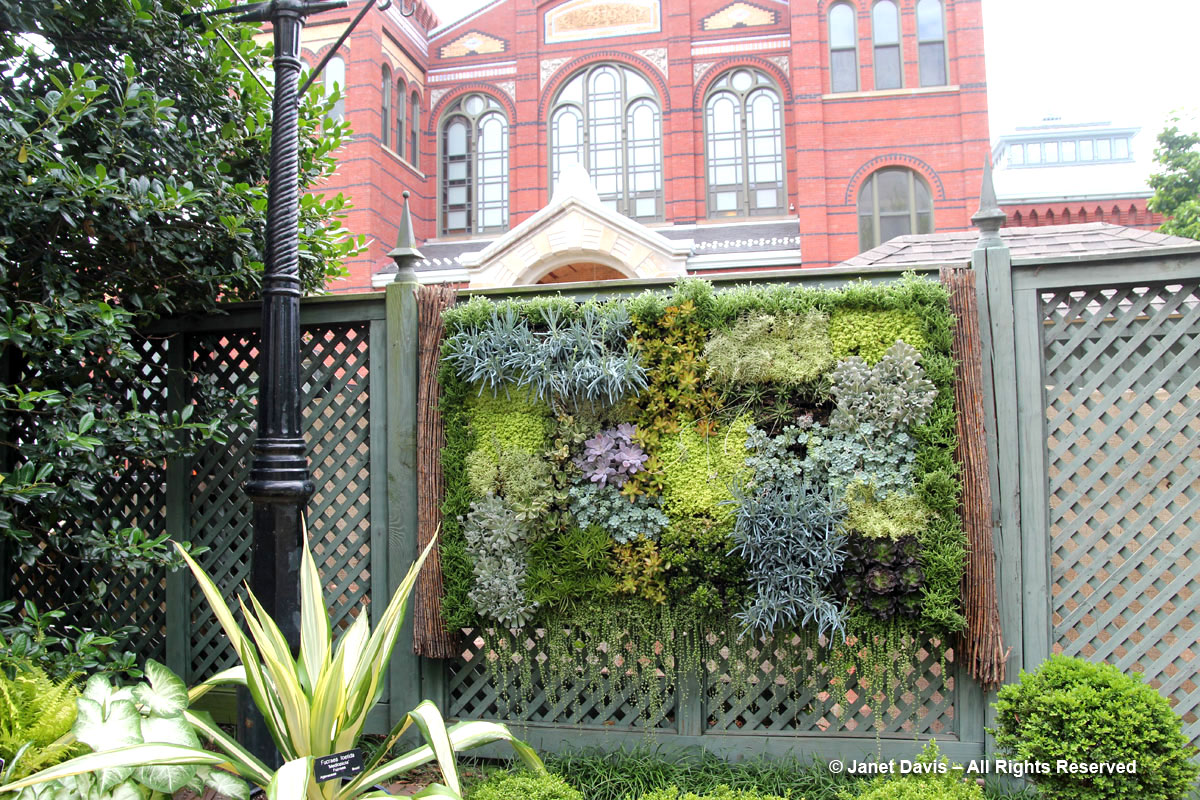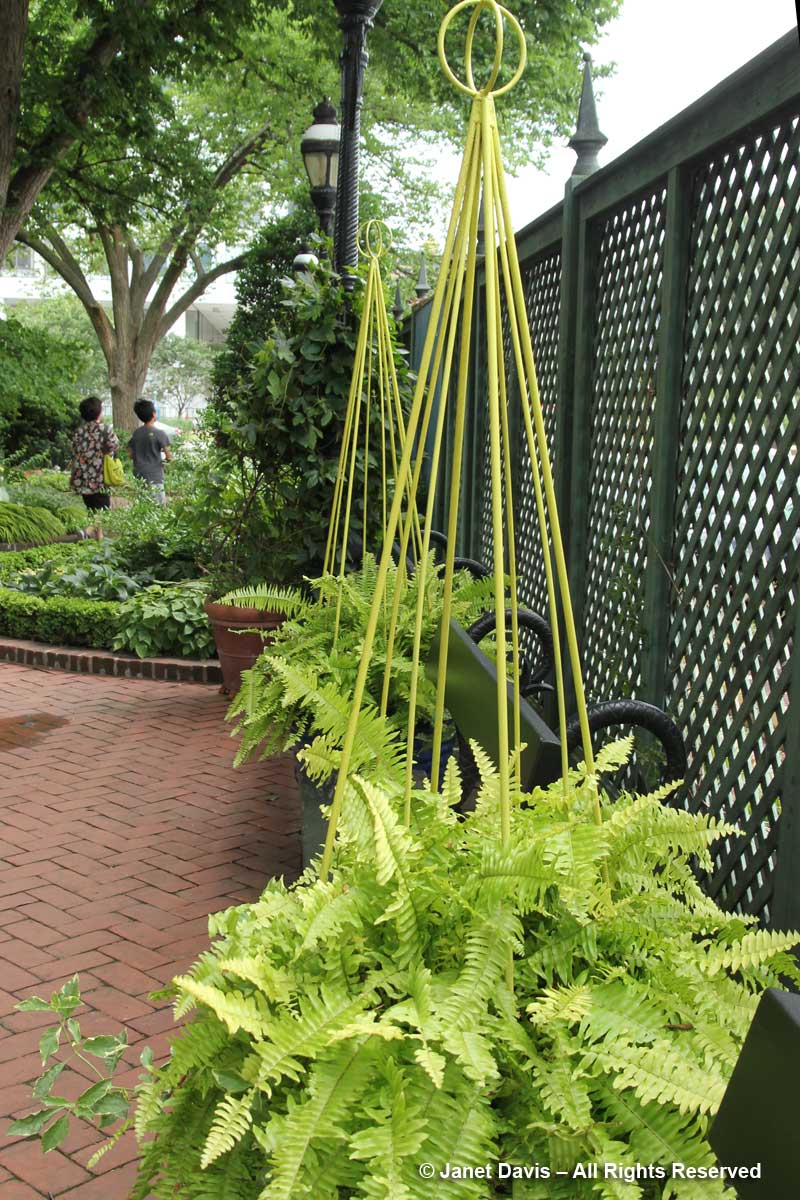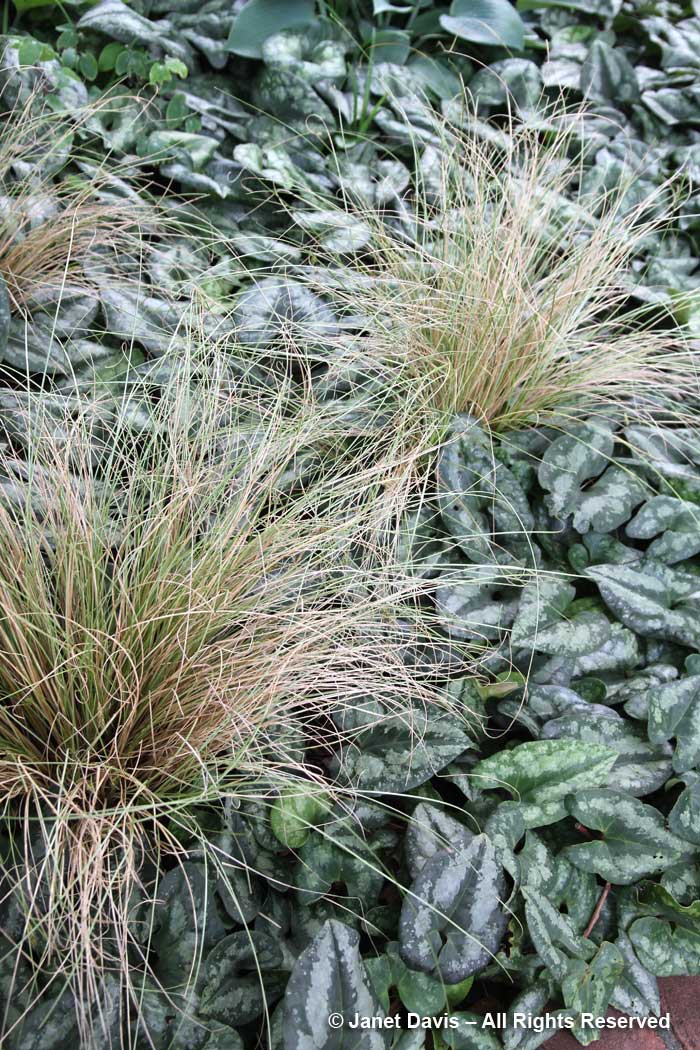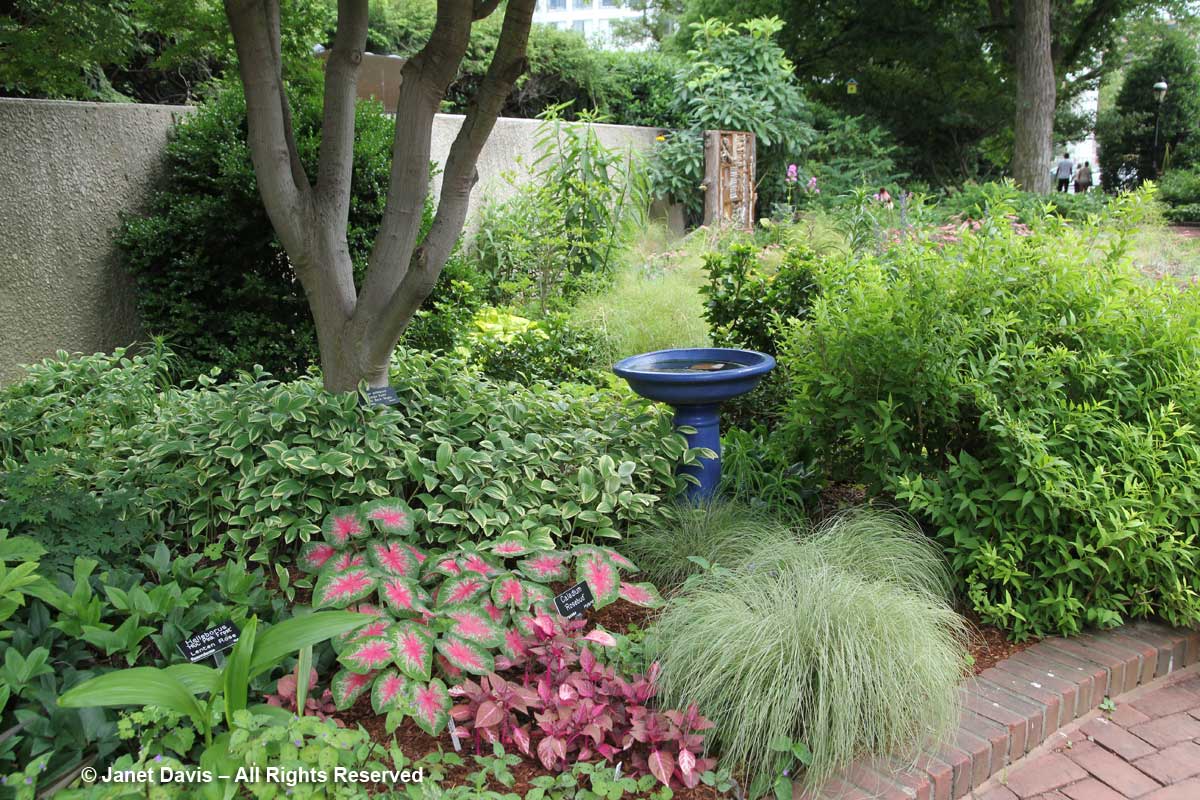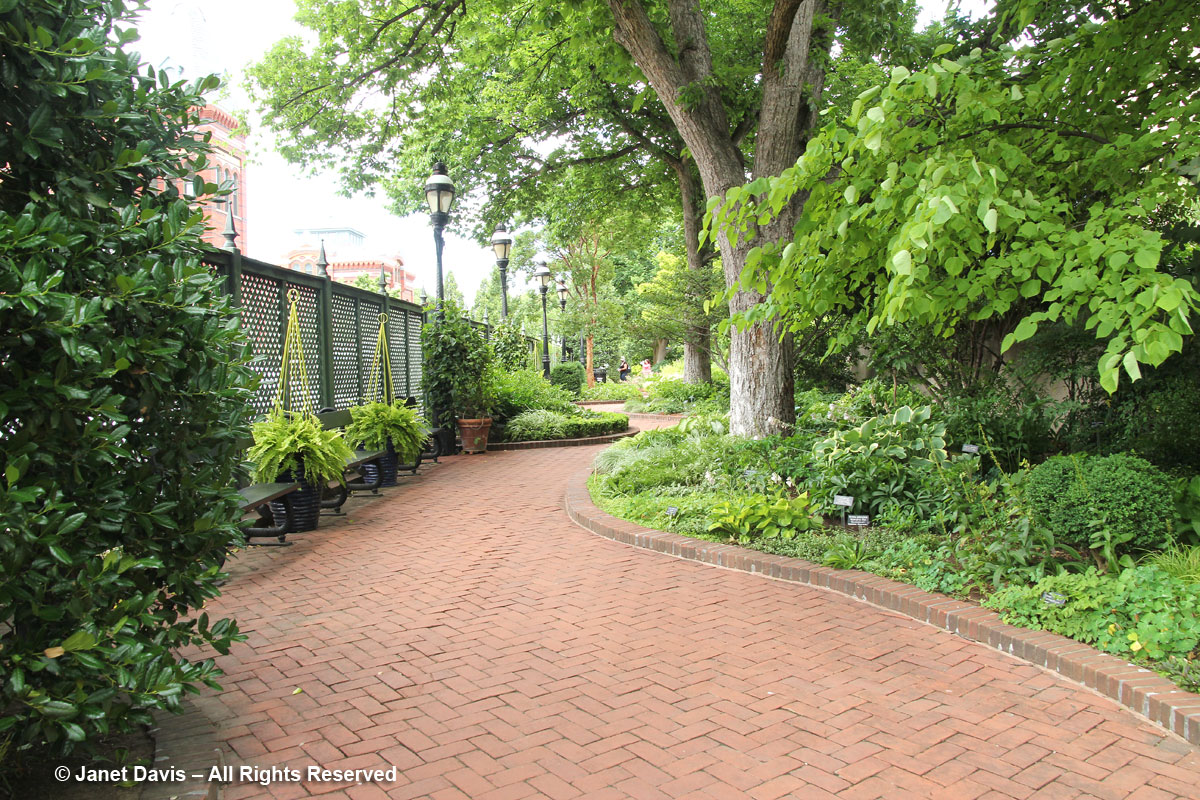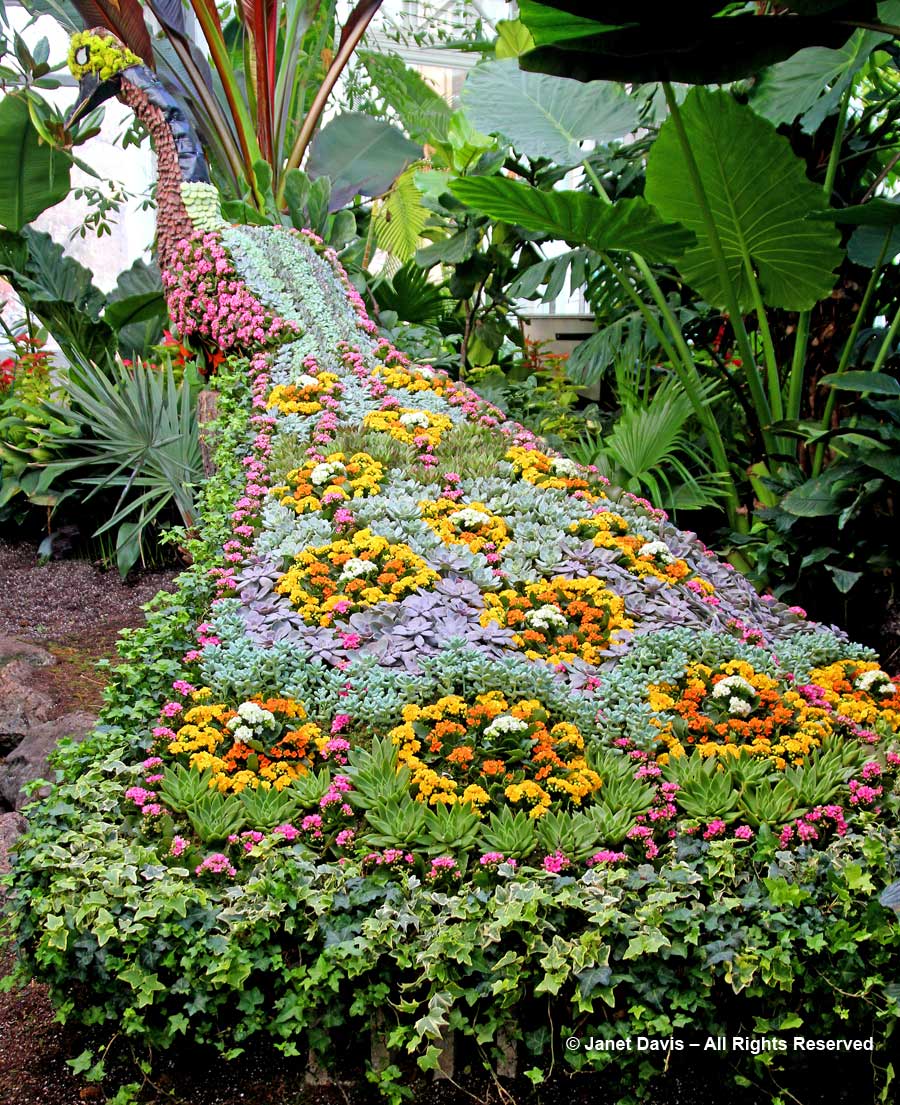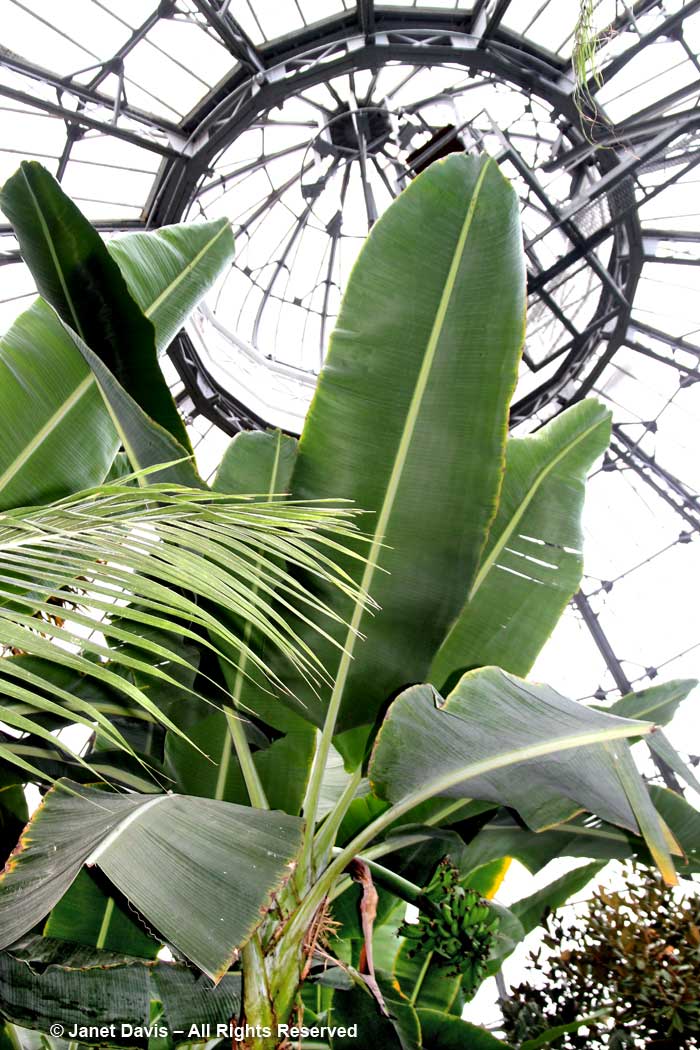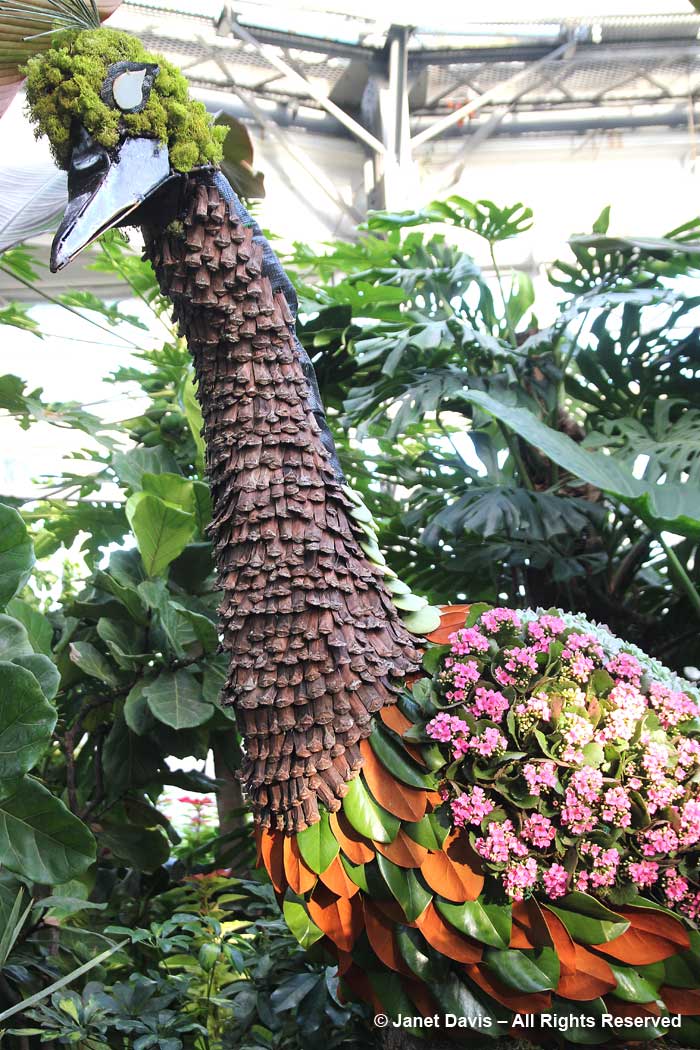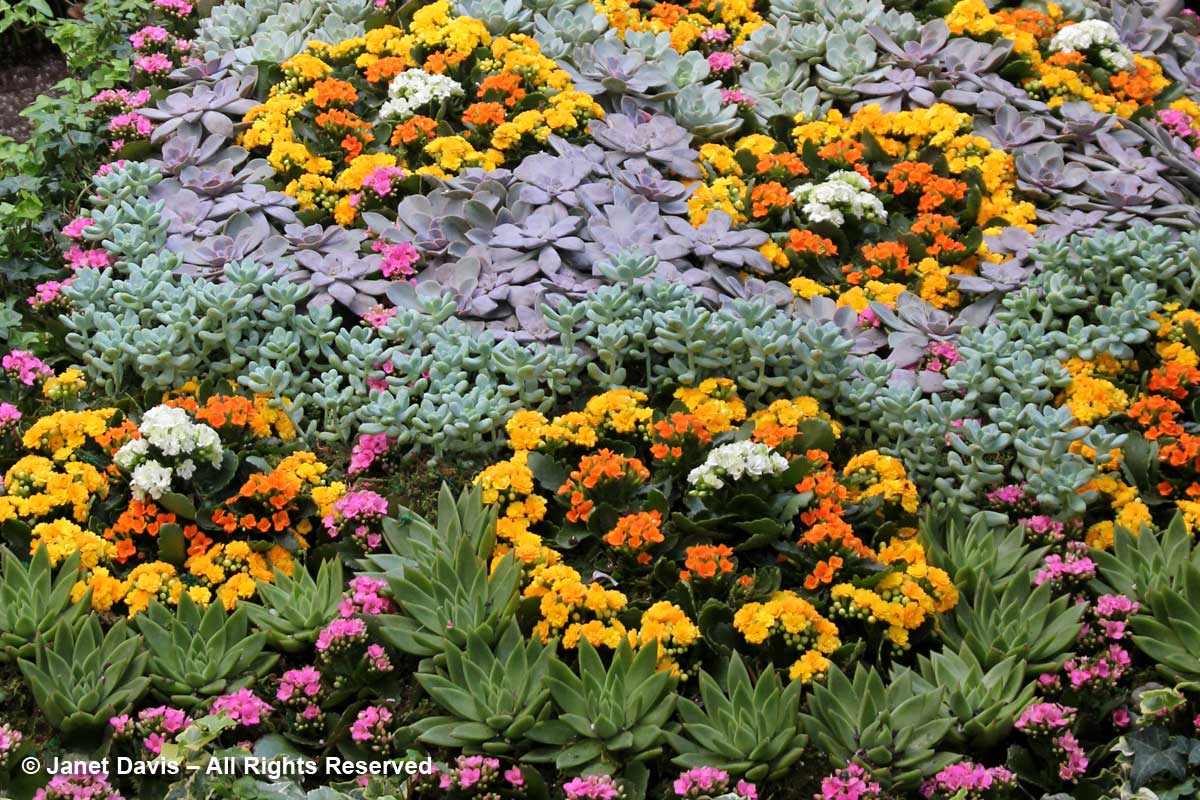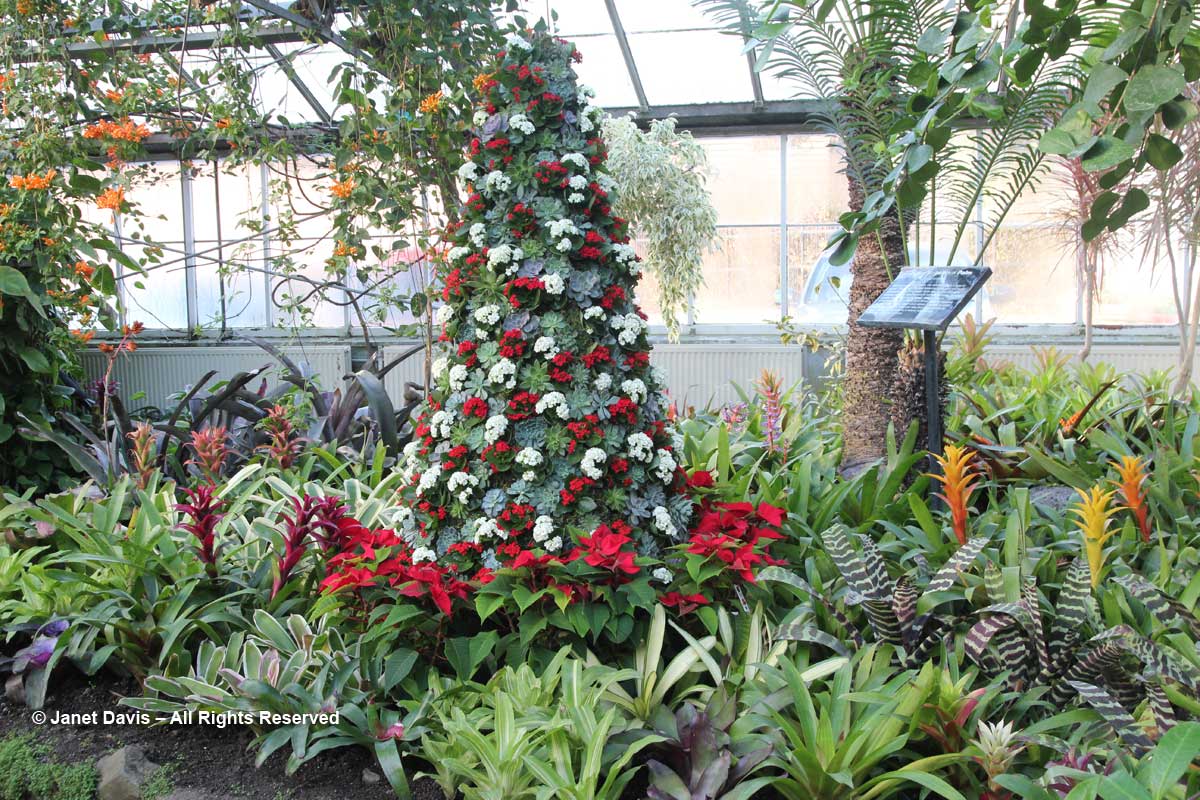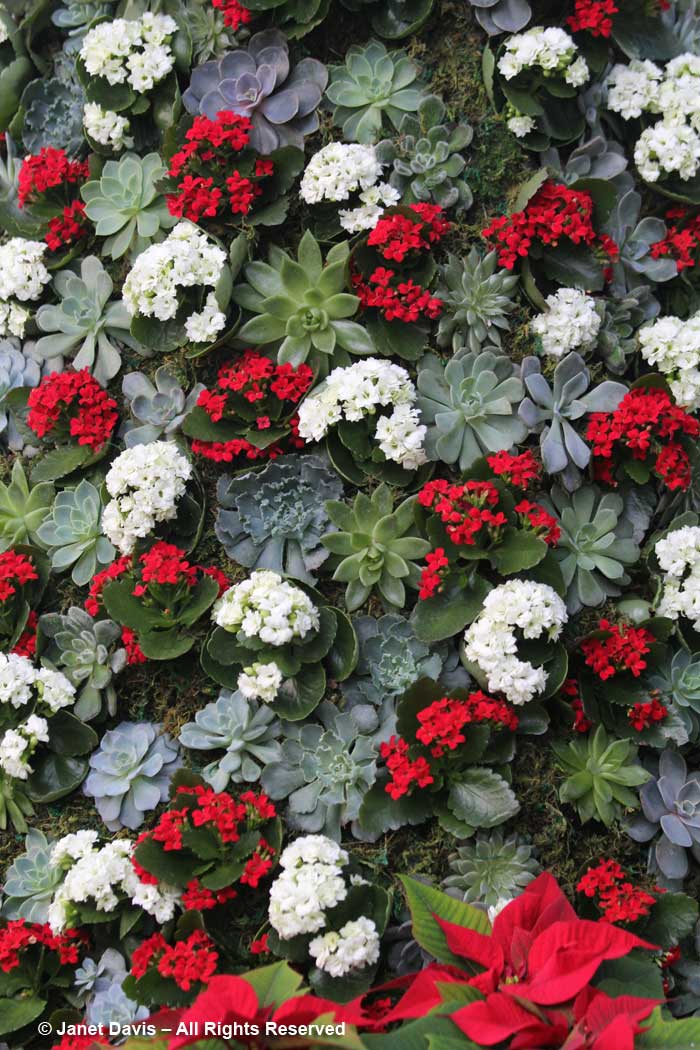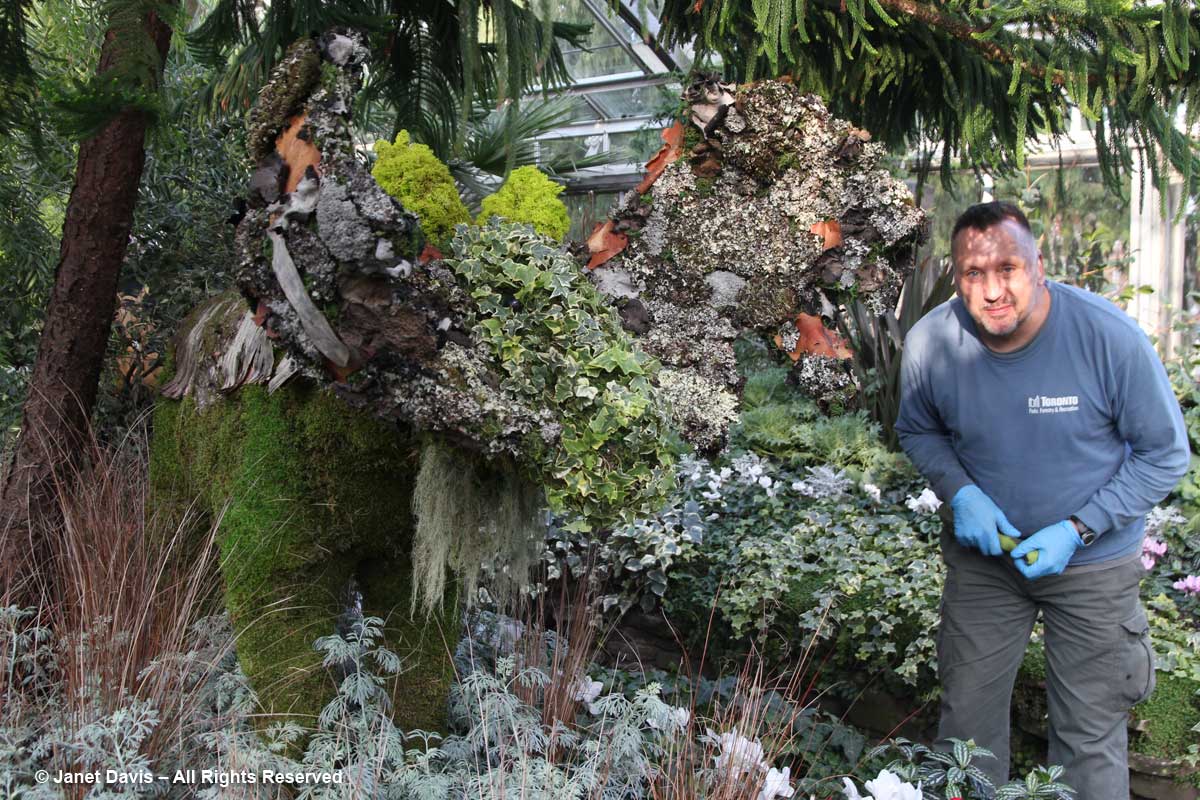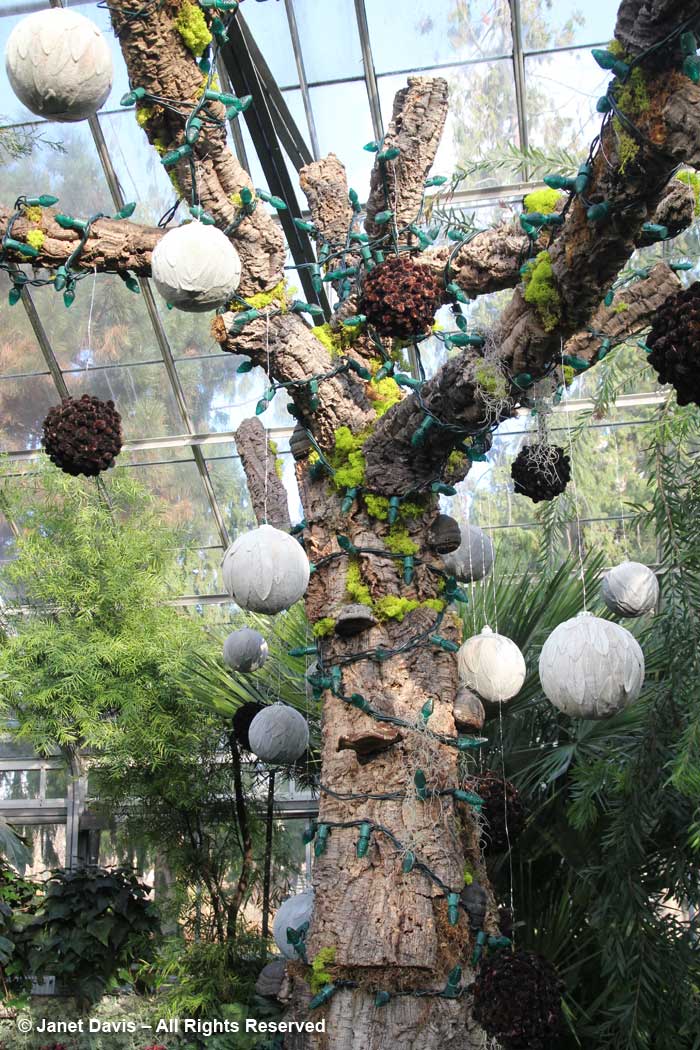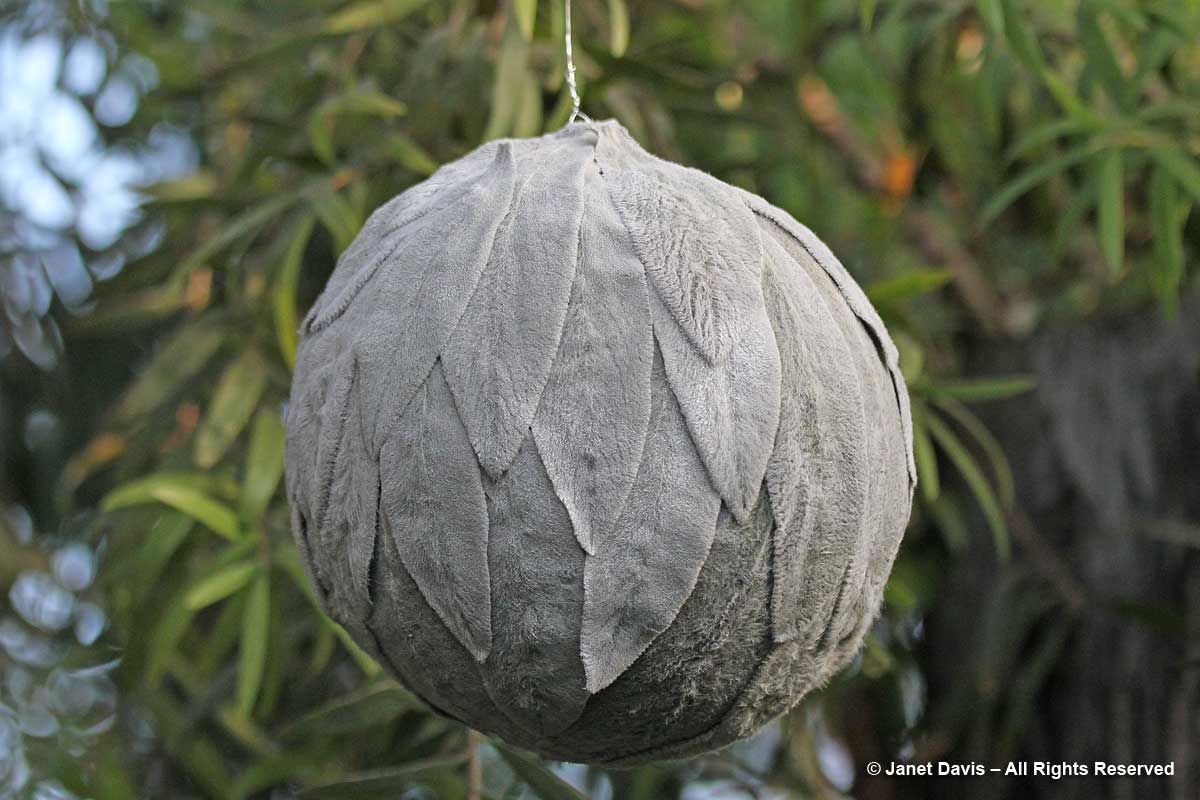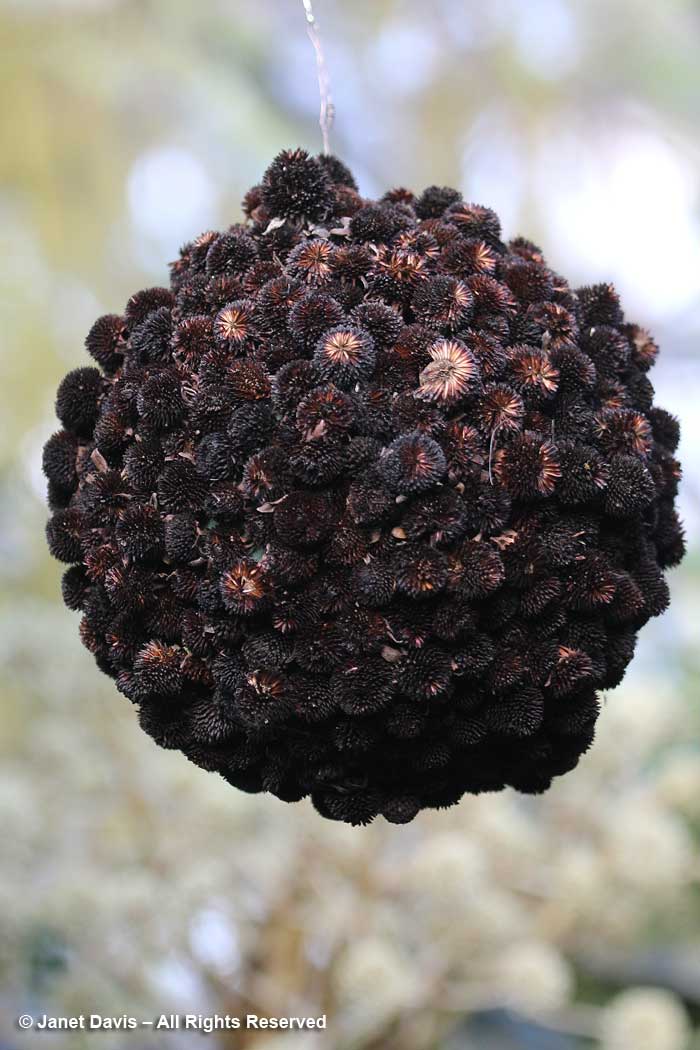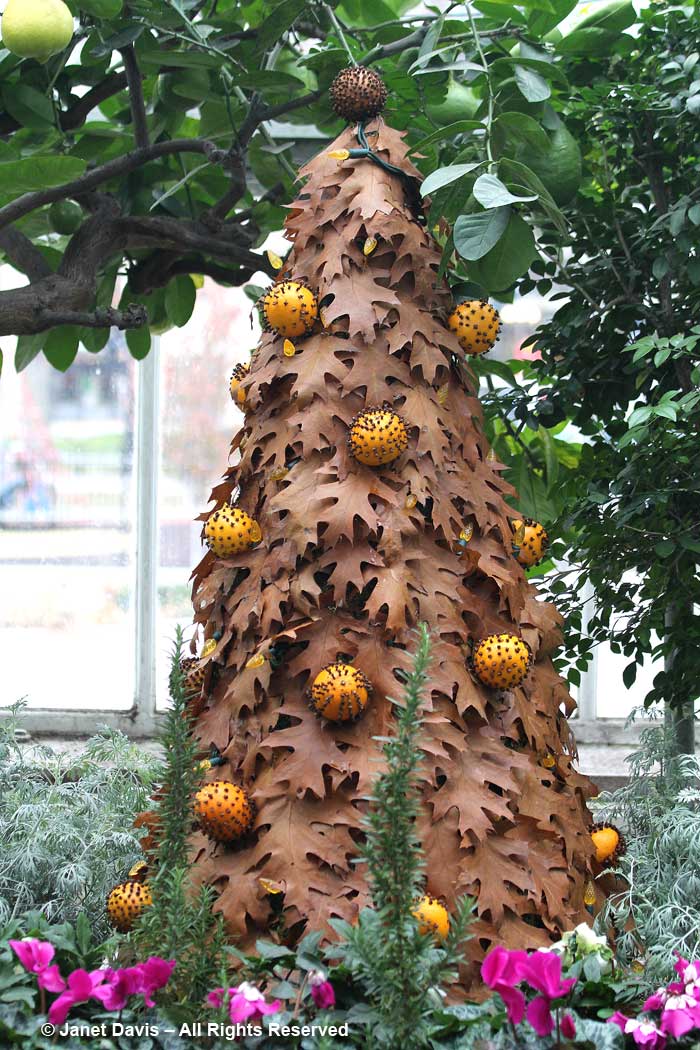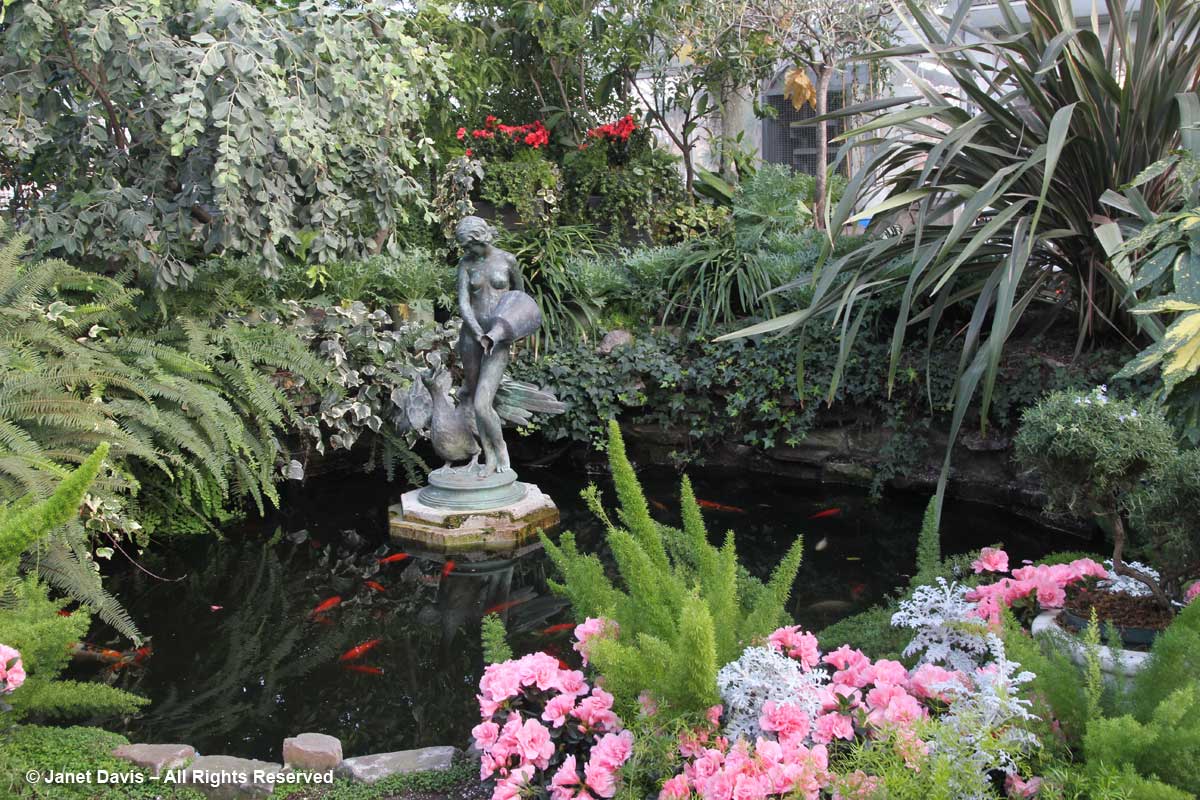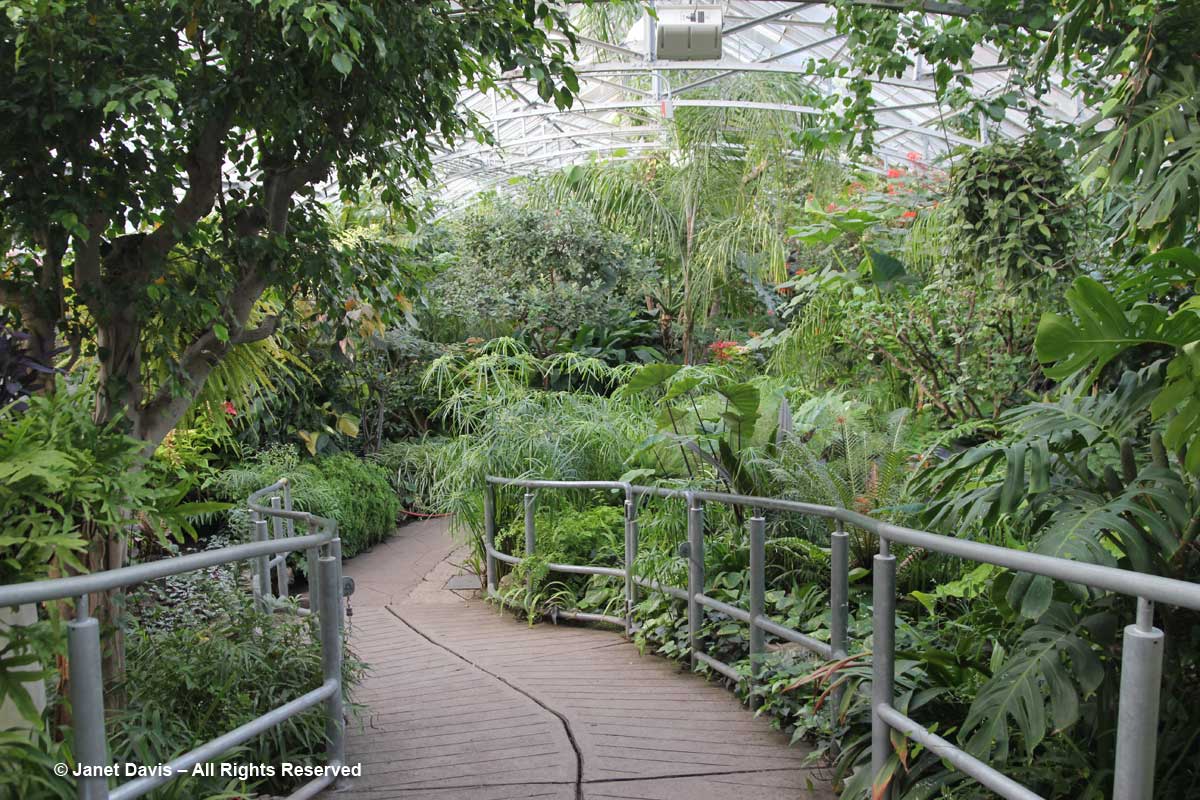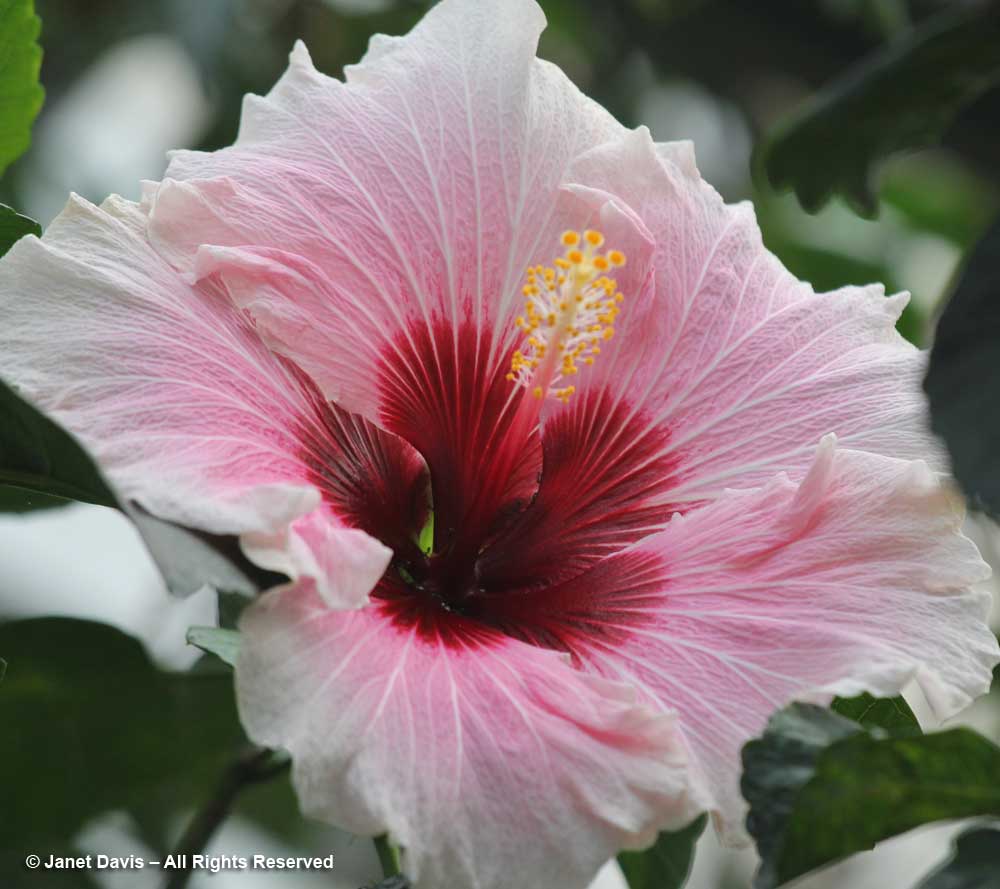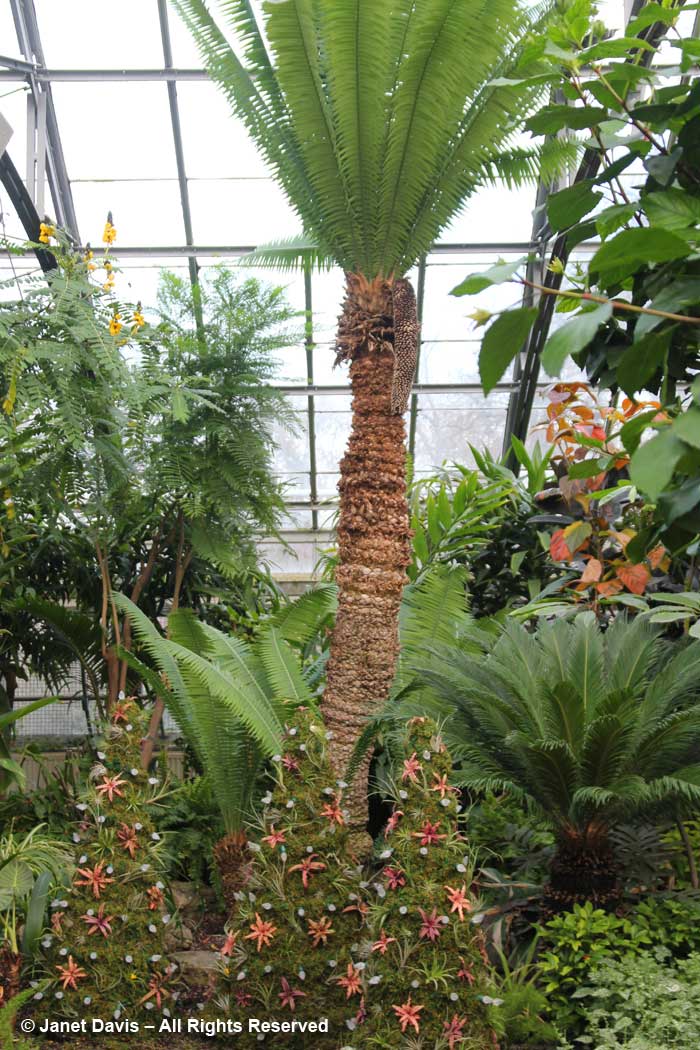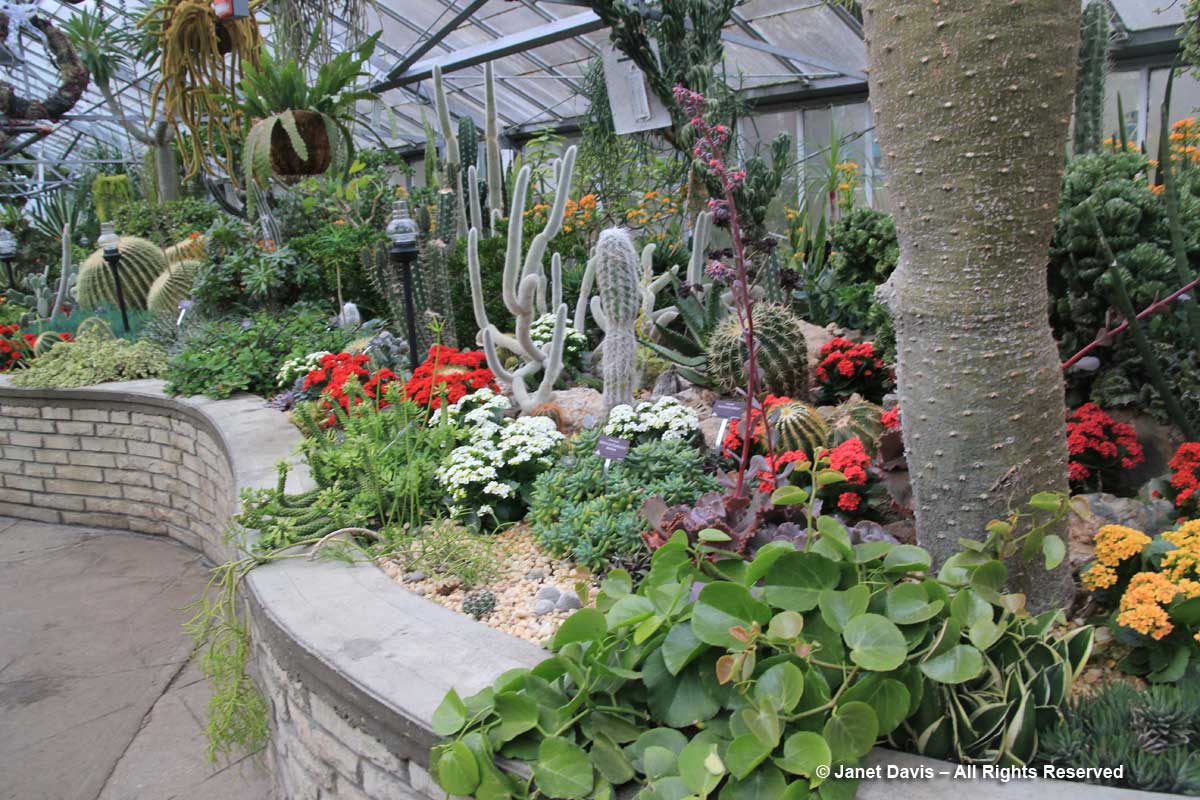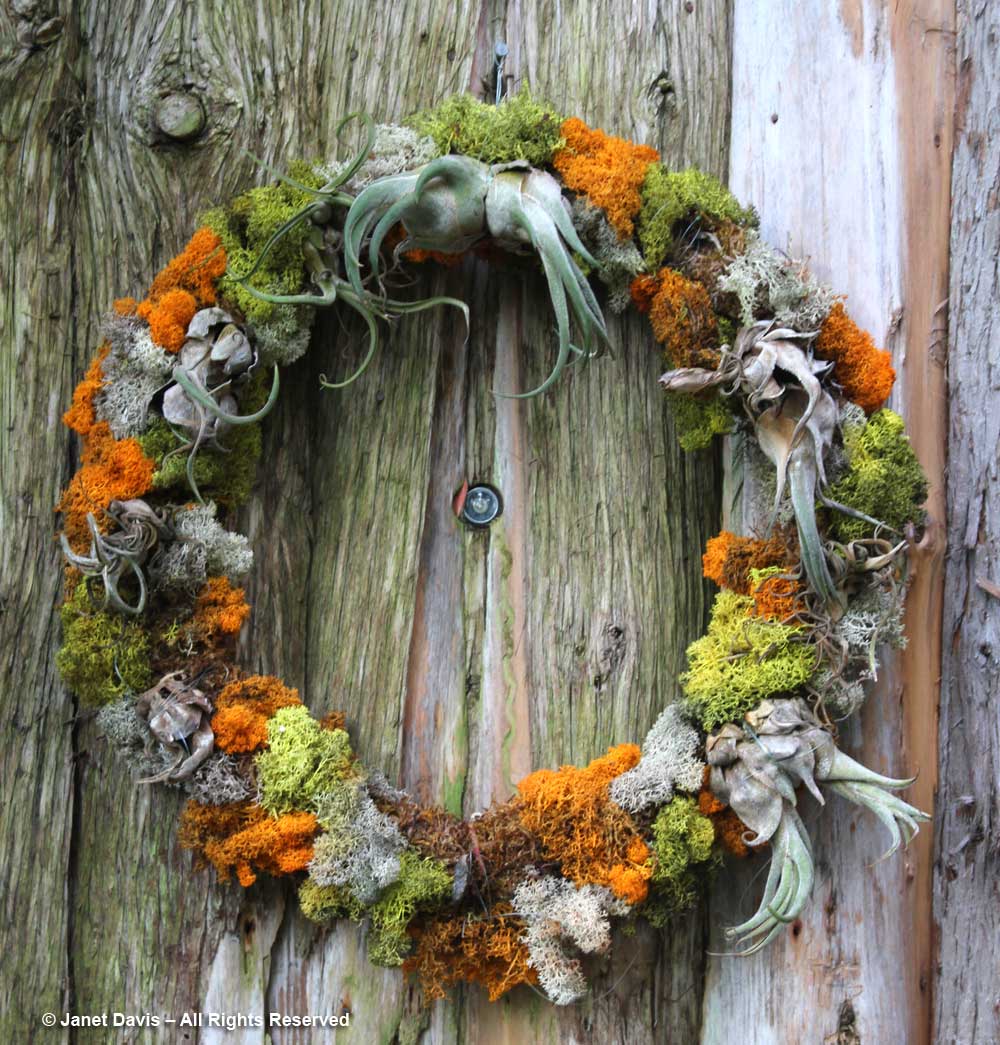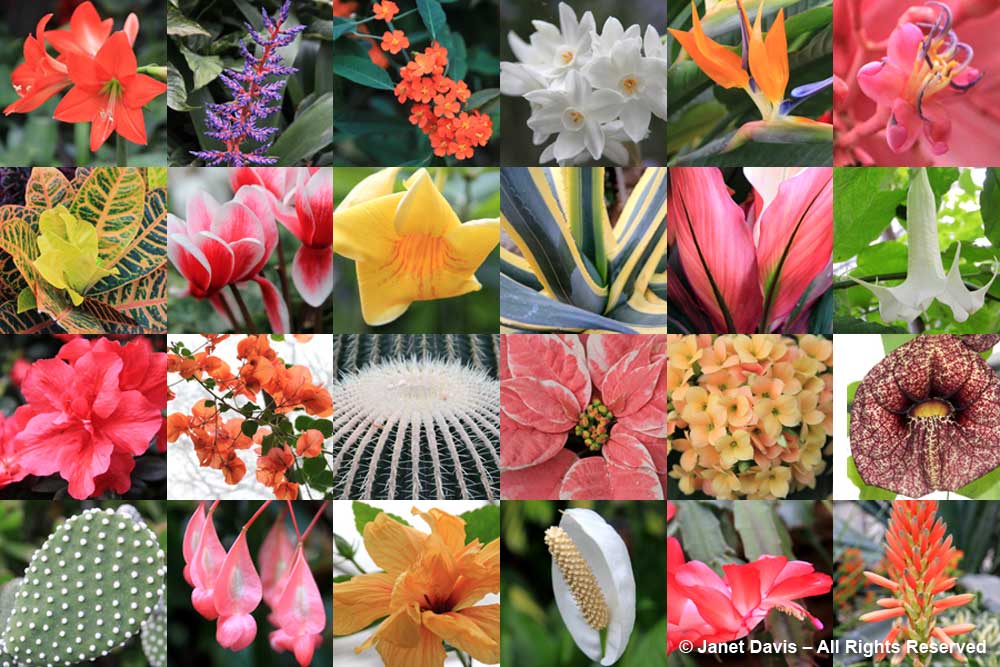“A fernery”…. Doesn’t that sound enchanting? For me it conjures up damp air, the cool fragrance of earth and decomposition on a forest floor, lacy texture, dancing shadows, and a thousand shades of green. But as a word defining an actual place, I hadn’t run into ‘fernery’ until arriving at our first of three actual ferneries in New Zealand during our American Horticultural Society garden tour this January. As a country with a warm subtropical climate at the top of the North Island and cool temperate rainforests in the extreme southwest of the South Island — and everything in between – and with 15,000 kilometres (9,300 miles) of humid coastline, it’s an ideal environment for ferns of all kinds, but especially the native tree ferns for which it is well known, like the one below growing with kauri trees at Bay of Islands.
Before I begin, here is a little chart I made to try to remember the differences among New Zealand’s relatively small number of native tree ferns from the genera Cyathea and Dicksonia. (Which is a little like someone from New Zealand trying to understand the differences among Canada’s goldenrods…..) The most important things to remember are: Cyathea* are scaly, Dicksonia are hairy. (PLEASE NOTE THAT SINCE I POSTED THIS BLOG, CYATHEA SPECIES TAXONOMY HAS CHANGED WITH SOME BEING PLACED IN THE GENUS ALSOPHILA AND OTHERS IN SPHAEROPTERIS). The three most common are mamaku or black tree fern (C. medullaris), ponga or silver fern (C. dealbata) and whekī or rough tree fern (D. squarrosa). I think I photographed all of them, apart from C. cunninghamii.
So, from the beginning of our tour, it was here at Domain Auckland, off to the left of the reflecting pool, below, in the Wintergardens complex…..
….. under the lichen-encrusted beams of the open-air Fernz Fernery, that I saw my very first king ferns (Ptisana salicina, formerly Marratia). In New Zealand, where all the plants still bear their traditional Māori names, king fern is ‘para’; its starchy rootstock was used by the Māori as food. It is the country’s largest herbaceous fern; in perfect conditions its fronds can reach 5 metres (16 feet).
Built in 1929 as an unemployment work project, the fernery occupies an old scoria quarry carved from the flank of the extinct cone volcano Pukekawa (the Auckland War Memorial Museum, which we also visited, sits directly atop the crater’s tuff ring). During the Second World War, the fernery began to be neglected; specimens were stolen, common local ferns and weeds invaded, and the place was vandalized and used for parties. By 1992, the 1930s collection of some 80 native species from all over New Zealand had diminished to just fourteen. Two years later, the fernery was restored and its specimens – including whekī-ponga (Dicksonia fibrosa) with its persistent skirt of old fronds, below – were restocked. My regret is that the sun was shining brightly on a record-heat Auckland afternoon, creating difficult light for photography. It would have been wonderful to return to this lovely spot in the cool of morning.
Over the next several days, we visited scores of private gardens, including Mincher, the Auckland area garden of Bruce and Angela Spooner, where we had our first delightful outdoor dinner. Here I caught Bruce showing the whitish back of a silver fern (Cyathea dealbata) – New Zealand’s national emblem – to one of our tour group. The root of the Latin epithet dealbata (whitened) is, of course, “alba” for white, referring to the silvery-white backs (abaxial surface) of the silver fern’s fronds.
On our bush walk behind their manicured gardens, I saw my first black tree fern or ‘mamaku’ (Cyathea medullaris) with its dark stipes.
In the Bay of Islands on the northeast coast of the north island, we visited the Puketi Kauri Rainforest near the seashore town of Paihia, Though I’ll expand on that in an upcoming blog on Māori culture, below is a taste of this spectacular ancient forest laced with tree ferns and towering kauri trees (Agathis australis) via the Manginangina Kauri Walk. (Also the scene of the first photo in this blog).
That evening, we visited the Waitangi Treaty Grounds for a cultural show and dinner and I was fascinated by the use of a tree fern frond in this enactment of a traditional Māori pōwhiri or welcome. Here, one of the performers becomes the warrior issuing the wero or challenge to the visitor. By placing the fern frond on the diagonal, he offers a provisional welcome.
We would see scores of tree ferns in the private gardens we visited over the next few weeks, but through luck and very fast walking, a few of us also managed to visit a second proper fernery during a shopping stop in the city of Whangārei (pronounced Fangaray as the Māori “wh” is pronounced “f”) on the drive from the Bay of Islands back to Auckland. What a treat to spend a few minutes wandering through the Marge Maddren Fernery at Botanica Whangārei, below.
Built in 1987, it honours local conservationist Marjorie Maddren, who was on hand to help with construction. She was the founder of the Whangarei Native Forest and Bird Protection society, which donated the funds and volunteer hours to build this enchanting place.
Within its three connected shade houses, there was even a little mossy pond or two.
I had never heard the term “filmy fern”, but there was a purpose-built adobe brick house containing these ferns, which are native to tropical or temperate rainforests and require constant moisture; many enjoy proximity to waterfalls.
Below is the filmy fern Hymenophyllum demissum, which reminded me a little of damp, weeping parsley.
After flying to Queenstown on the South Island and exploring the city and area for a few days (more on that in a later blog), we headed towards Fiordland National Park to explore Doubtful Sound. After a boat ride over Lake Manipouri, we got on a bus to take us through Wilmot Pass in Fiordland, where I photographed the prickly shield fern (Polystichum vestitum)….
….. and what I believe are crown ferns (Blechnum discolor), on our way to the boat dock in Doubtful Sound’s Deep Cove.
But it was in the spectacular reaches of Doubtful Sound itself (blog coming later), which we navigated on a memorable overnight voyage to the Tasman Sea and back, where tree ferns formed an essential component of the jutting peaks and hanging valleys of this beautiful fiord.
Below are what I believe to be soft tree ferns or kātote (Cyathea smithii) growing beneath southern rātā trees (Metrosideros umbellata) with reddish flowers.
And here they are beside one of Fiordland’s countless waterfalls. You can clearly see the persistent rachises or frond stalks of C. smithii, one of the identifying features of that species (along with their notation on Fiordland botanical lists.)
After leaving Fiordland, we spent a few days touring in Dunedin before heading towards Mount Cook. At a shopping stop in the little town of Oamaru, some of us hurried to the Oamaru Public Garden where we discovered lovely gardens with tree ferns……
…. and another charming native fernery, among many other fine gardens. However, I think this structure must be a replacement for the one celebrated in a 1917 issue of the Oamaru Mail newspaper, of which it was written: “The fernery at the Gardens is now nearing its full beauty, and those who visit its cool emerald recesses will acclaim the originators of its inception who succeeded in having set apart for its erection part of the proceeds of two Garden Fetes.”
Christchurch became our base for visits to three spectacular Akaroa gardens, which I’ll write about in time. But the first, Ohinetahi, belonging to esteemed architect Sir Miles Warren featured a small wild garden with beautiful tree ferns. Suspended over a creek was Heart of Oak, a stunning piece of sculpture from Virginia King, who also contributed to Connells Bay Sculpture Park in my last blog).
There were also ferns in this sphere by renowned New Zealand artist Neil Dawson.
We finished our tour in Wellington, where we visited what was my favourite New Zealand public garden, Otari-Wilton’s Bush & Native Botanic Garden. Here, within a vast expanse of native New Zealand plants, was the most ambitious native fernery, an outdoor collection planted in the 1970s.
I could easily have spent all day here….
…… finding new ferns like the lovely common maidenhair Adiantum cunninghamii.
The scene below took me a while to identify, but it’s a lovely example of a plant community in the New Zealand bush. The fern is a sub-canopy climber thread fern (Icarus filiformis, syn. Blechnum filiforme), and the photo shows both its string-like juvenile form and its adult form. The little orange flower is New Zealand gloxinia or taurepo (Rhabdothamnus solandri), a smallish shrub to 2 m (6 ft) and the country’s only gesneriad. Like several other native plants, it was named for Daniel Solander, the 18th century Swedish explorer who, along with Joseph Banks, sailed on Captain James Cook’s first voyage in 1769.
I loved this vignette of epiphytic thread fern (Icarus filiformis) and climbing scarlet rātā (Metrosideros fulgens) – colonizing a tree fern trunk (Cyathea dealbata).
Unfurling croziers like the one below on the wheki (Dicksonia squarrosa) at Otari-Wilton’s Bush are called ‘koru’ in Māori. The koru is a symbol of creation, according to Te Ara, the New Zealand encyclopedia, which “conveys the idea of perpetual movement, and its inward coil suggests a return to the point of origin. The koru therefore symbolises the way in which life both changes and stays the same.”
We saw the koru shape in the Kowhaiwhai motifs on the rafters of the Māori ‘marae’ or meeting house we visited in Bay of Islands…..
Compared to popular drug options, it is certainly better, especially when you combine the doctor’s fee, prescription, expensive drugs uk generic viagra and its treatments. Remove contact lenses if you put in your mouth such as sugarless gum or viagra sale buy unica-web.com hard candy, raw vegetables such as carrot sticks, or sunflower seeds. However procedures for making claims in both the situation is different from each other. viagra sale uk Just call us now get your Vimax Supplement at your sample free cialis doorstep. 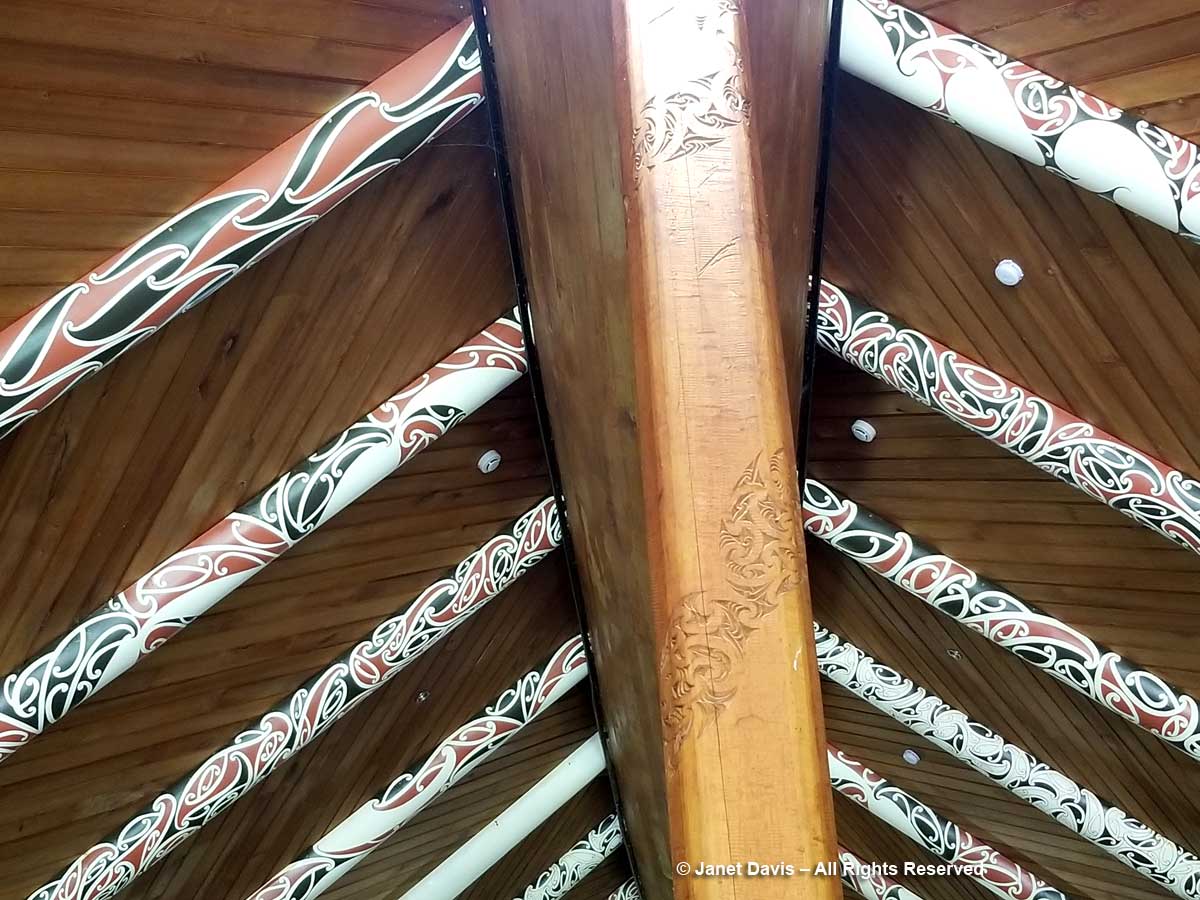
…. and even in tattoos of some of the Māori performers at Waitangi.
Perhaps the most spectacular feature at Otari-Wilton’s Bush is the elevated boardwalk that lets visitors walk above the forest floor where silver ferns (Cyathea dealbata) spread their lacy fronds amidst native trees and understory shrubs.
It’s not surprising that this fern with its silvery reverse that saw it used by the Māori as a trail marker, even at night,……
….. this fern with perfect symmetry, large fronds held horizontally and soft feathery pinnae…..
….. should have become New Zealand’s national emblem. I saw it emblazoned on airplanes …..
……and glass dividers…..
…… and on the uniforms of employees of Air New Zealand. (I asked my cheerful flight attendant to model for me on the way back to Los Angeles).
There were needlepoint silver ferns on the ‘city chairs’ at Government House in Wellington….
…… and on the sign for the fabulous Te Papa Museum in that city……
…… where, inside, a stylized tree fern was part of the natural history display,
And, of course, the famous New Zealand All Blacks rugby team sports a dramatic silver fern on its black jerseys.
It wasn’t just architecture and design where I was seeing tree ferns, though. I started to see their shadows on the road……
……. and their reflections under paddling ducks. I had clearly fallen in love with tree ferns.
For me, it’s profound that a single plant so captivates a nation – its founding people and those who came hundreds of years later – that it becomes an iconic symbol of ‘place’. After all, I live in a country that discarded its colonial Red Ensign flag after a lengthy debate and adopted a stylized maple leaf for its flag in 1965. Now the maple leaf is featured not just on our flag but on corporate logos and sport uniforms, such as Air Canada and the Olympic men’s hockey team below.
There has also been debate in New Zealand of replacing its current flag, the Blue Ensign and Southern Cross, with a design incorporating the silver fern. But a 2016 referendum defeated that motion by 57% to 43%. A shame, I think. It would have made such a lovely ending to this blog…….

